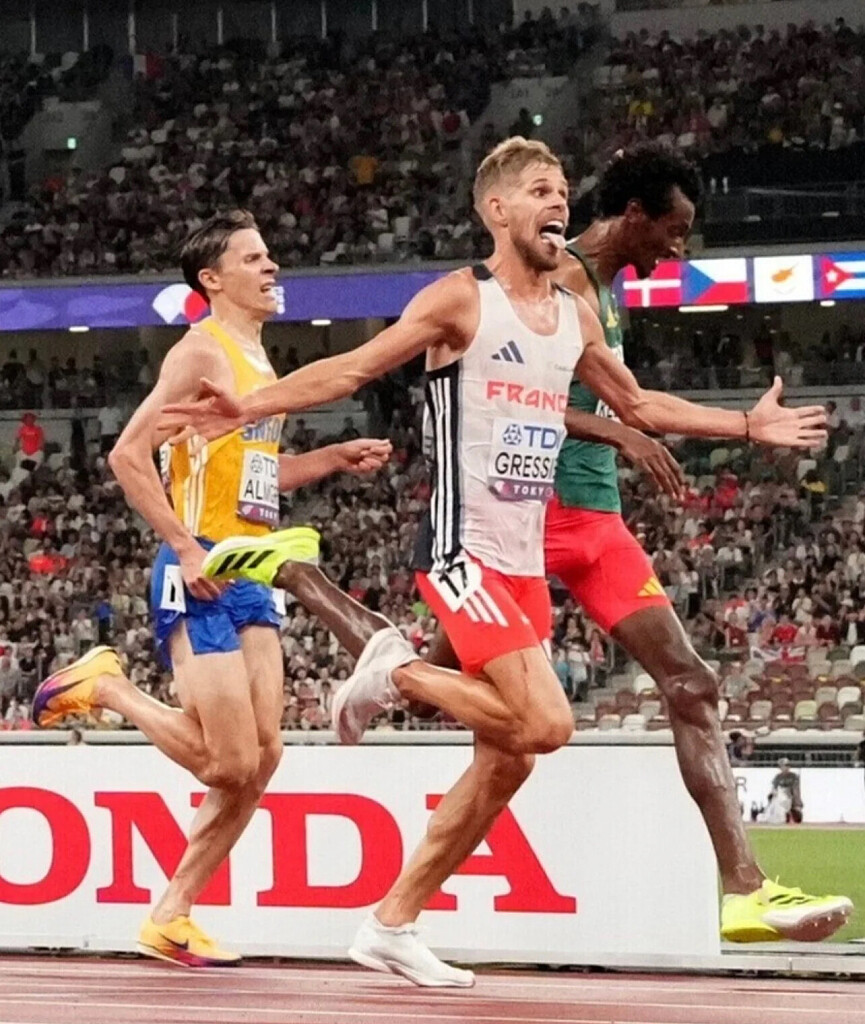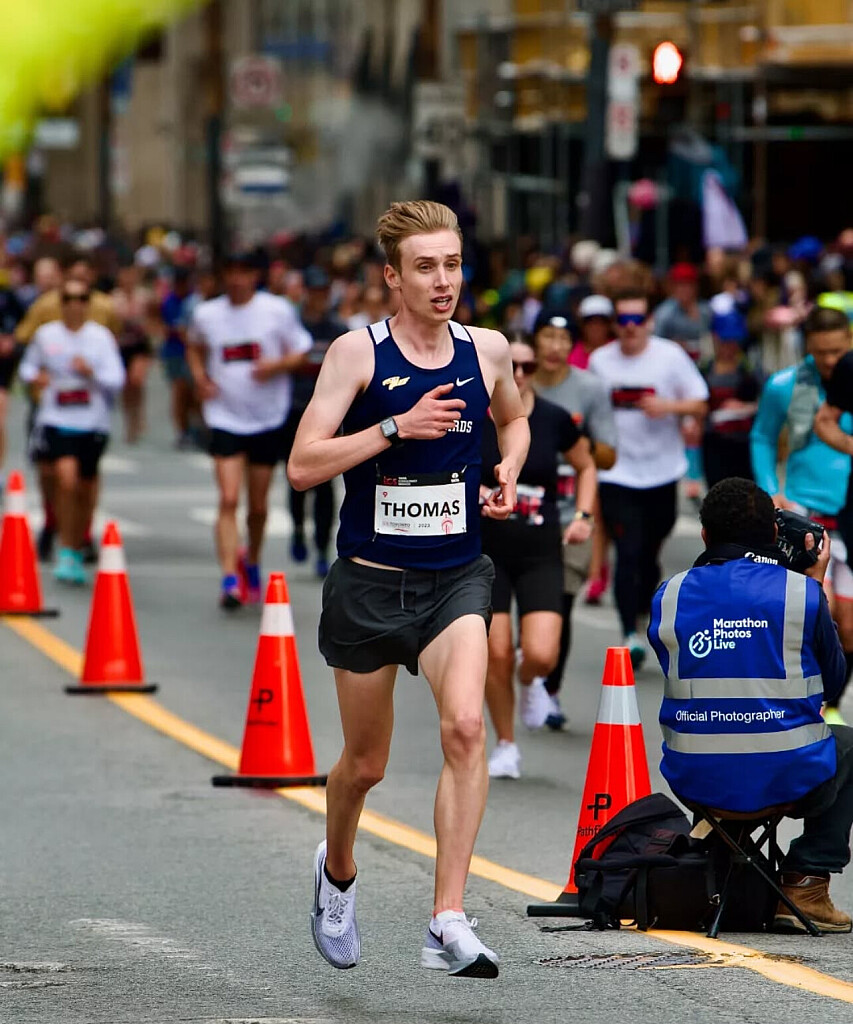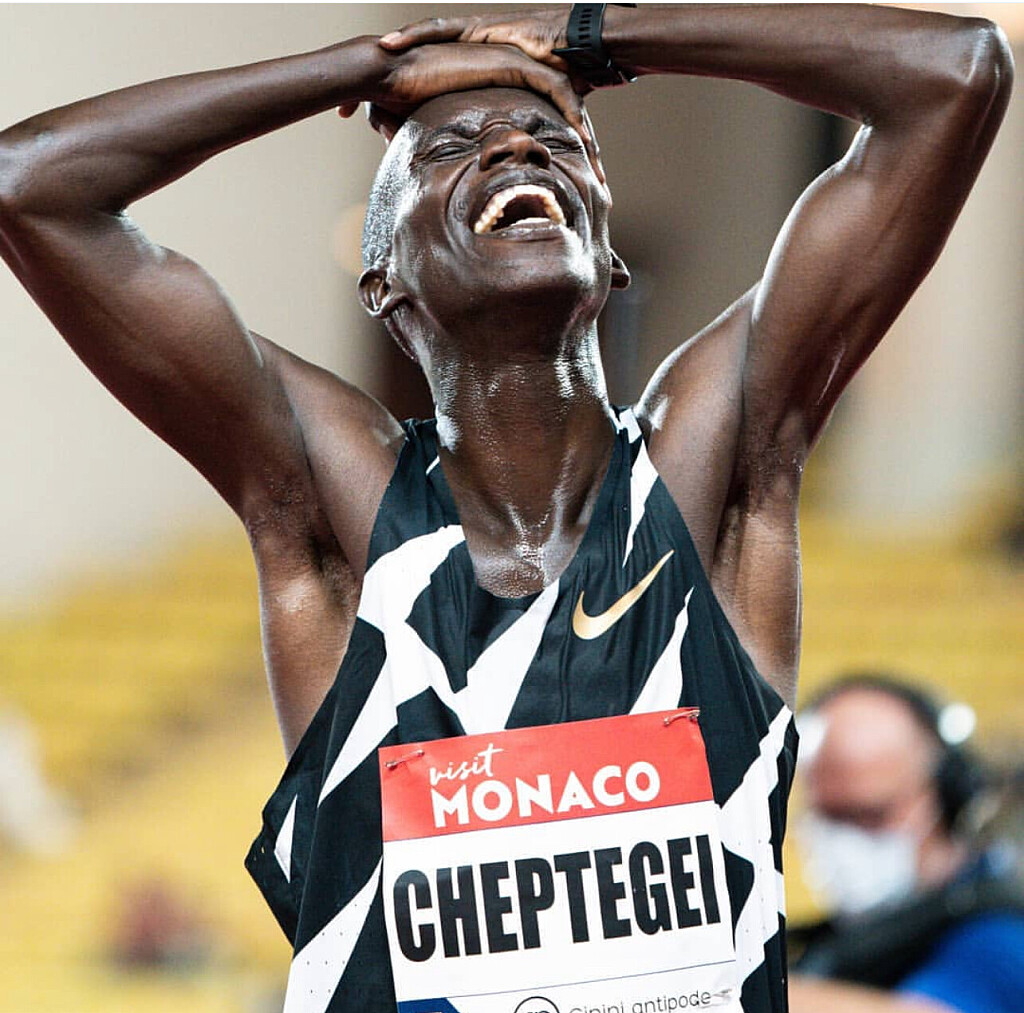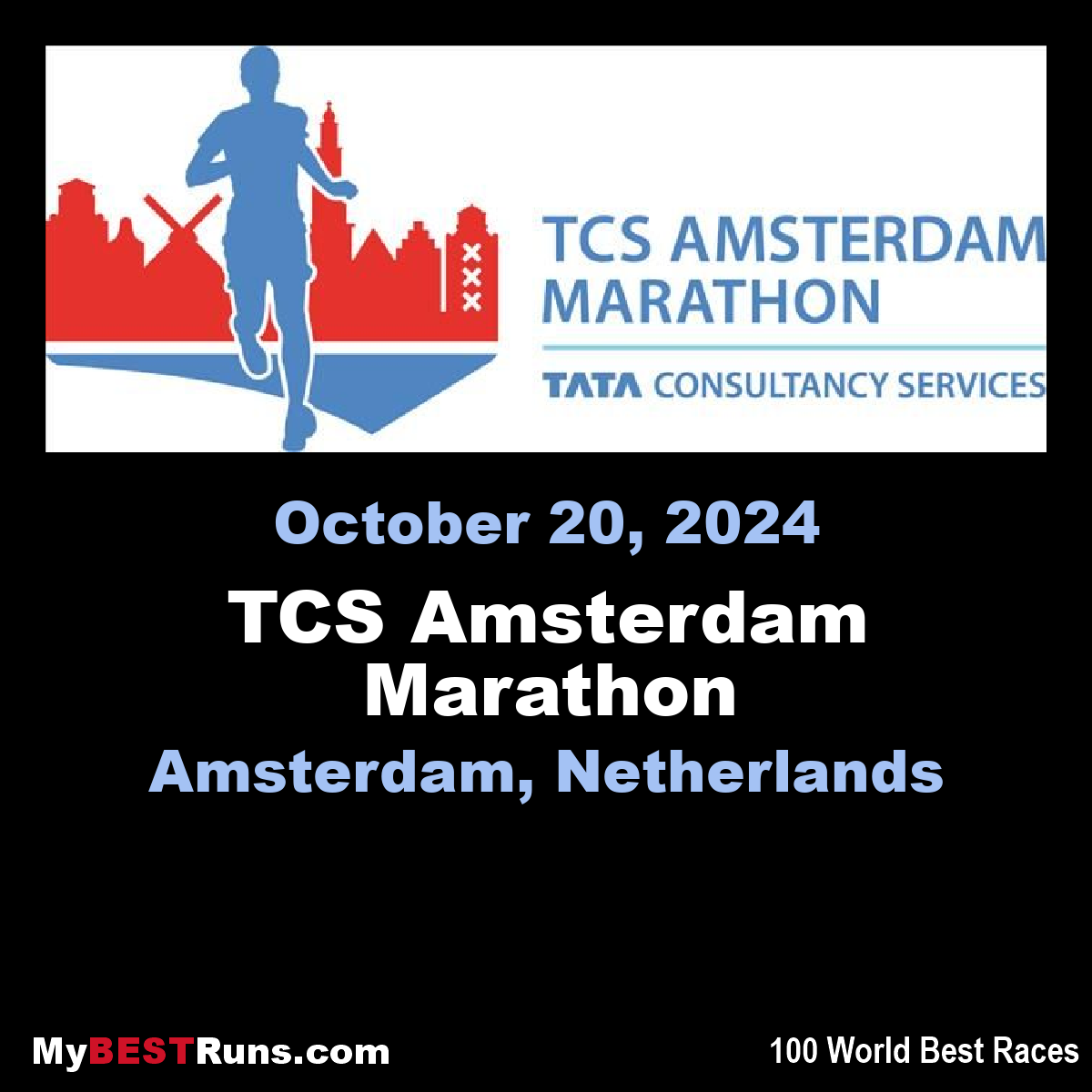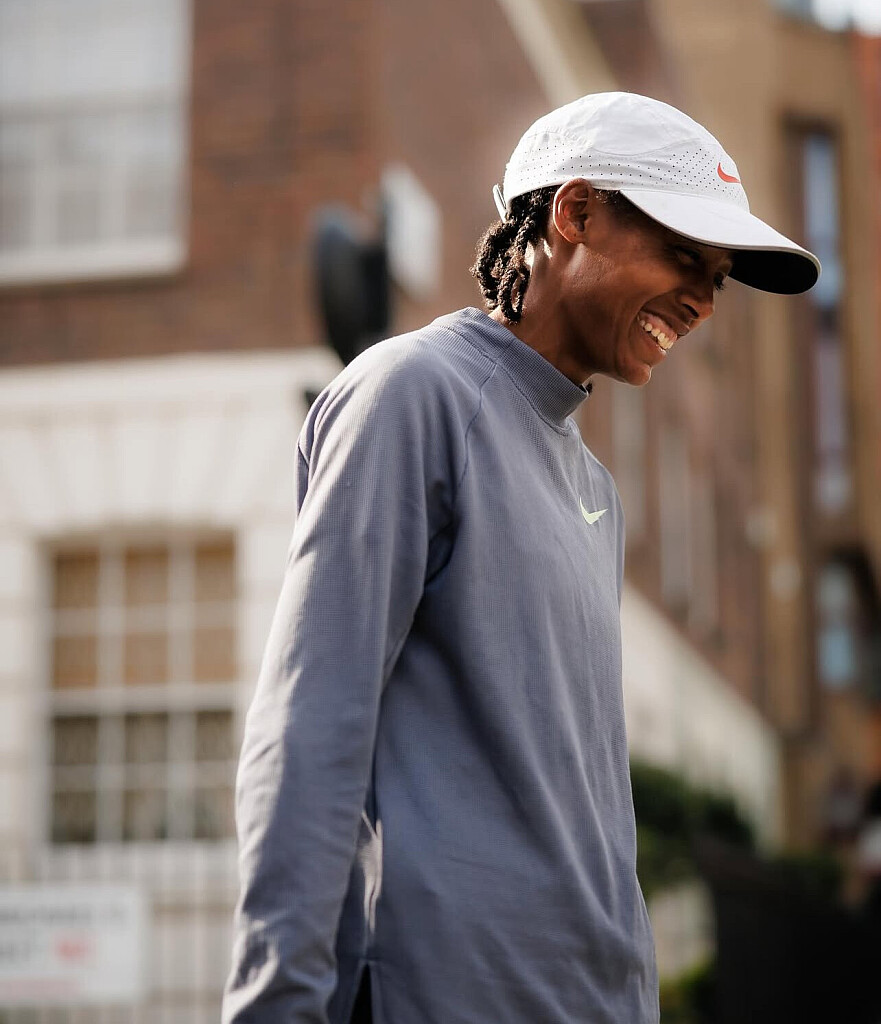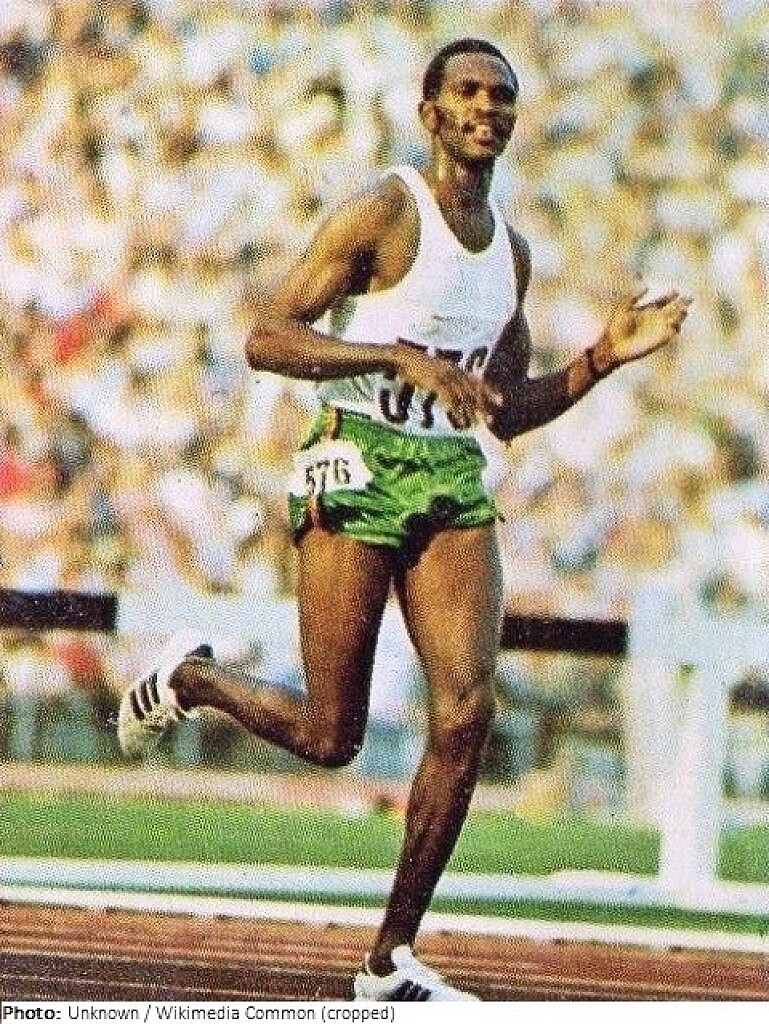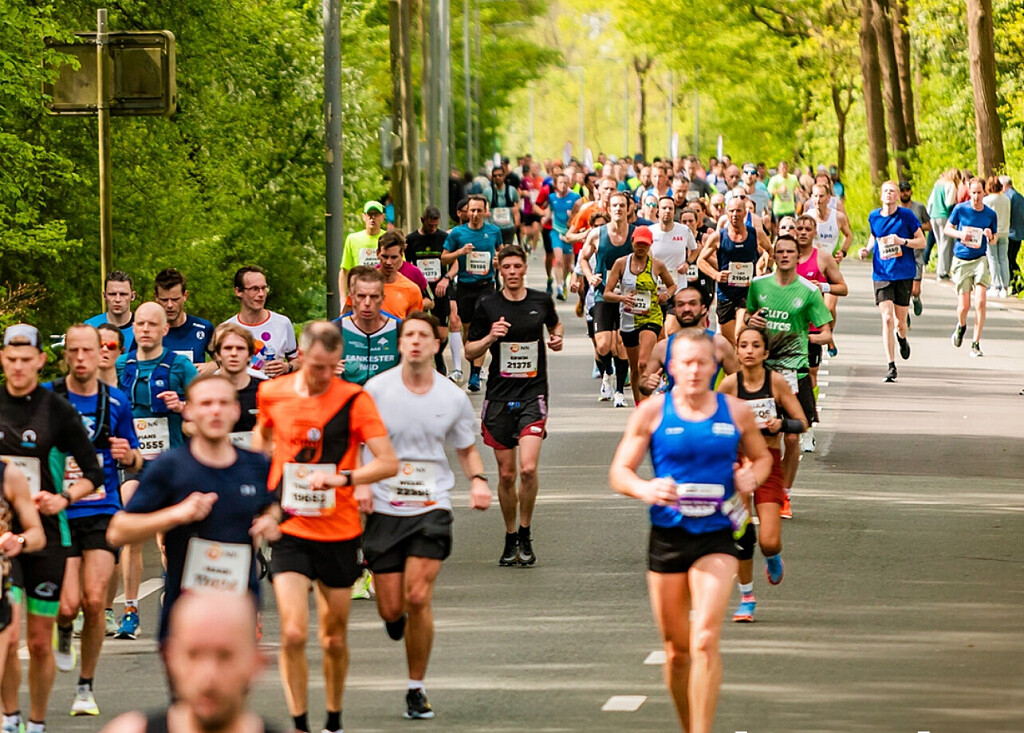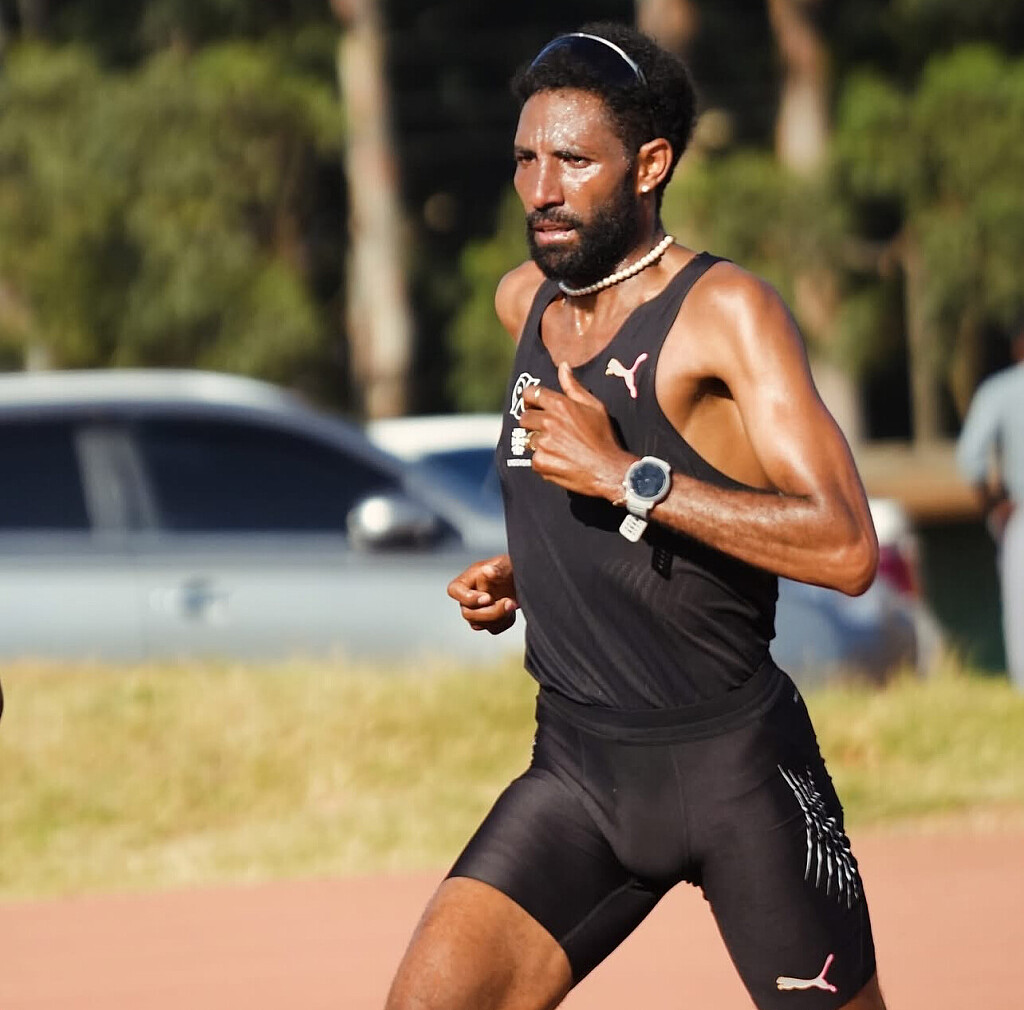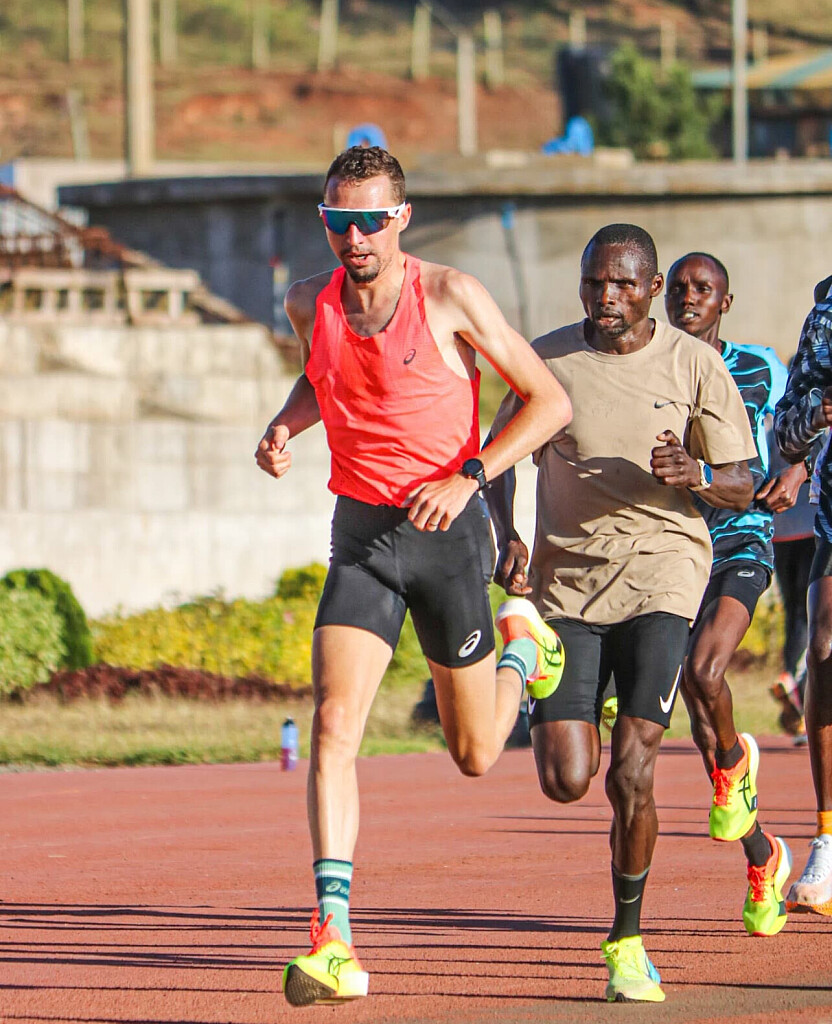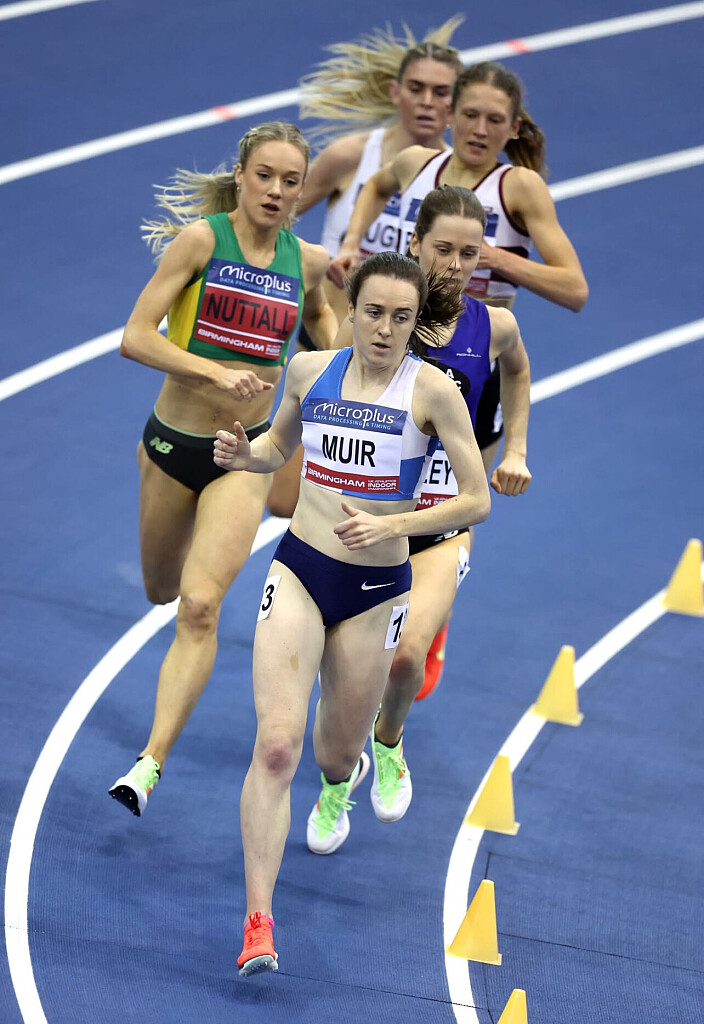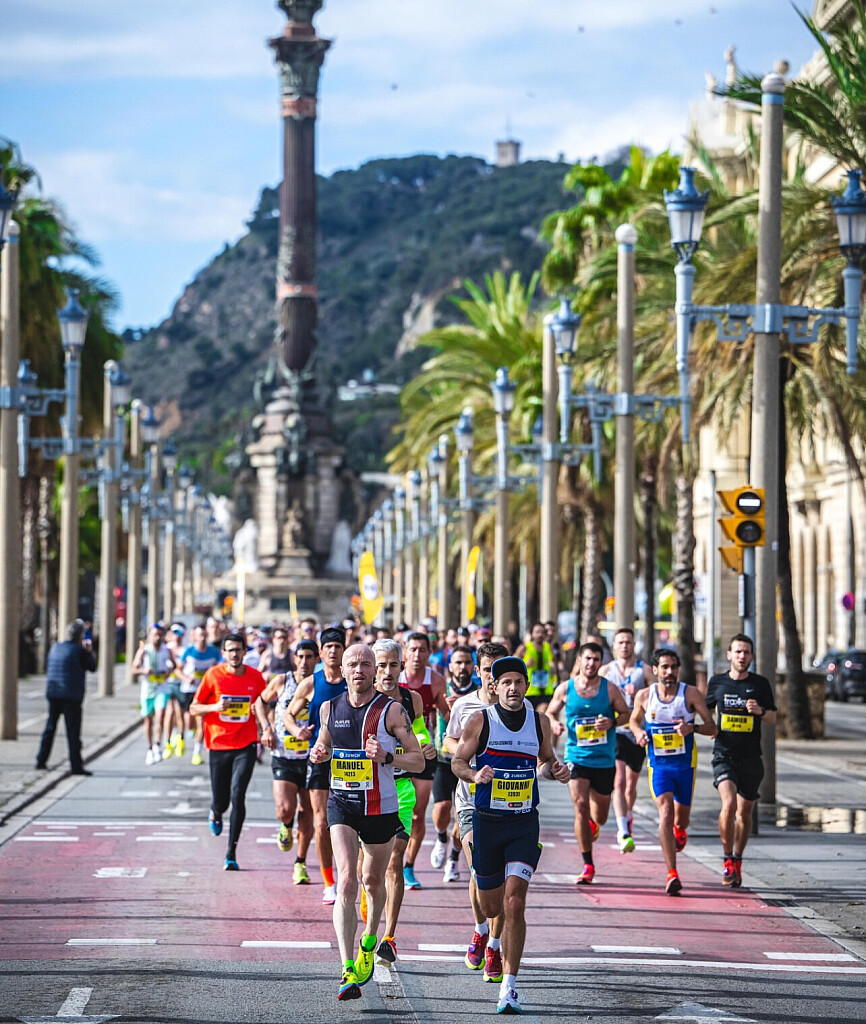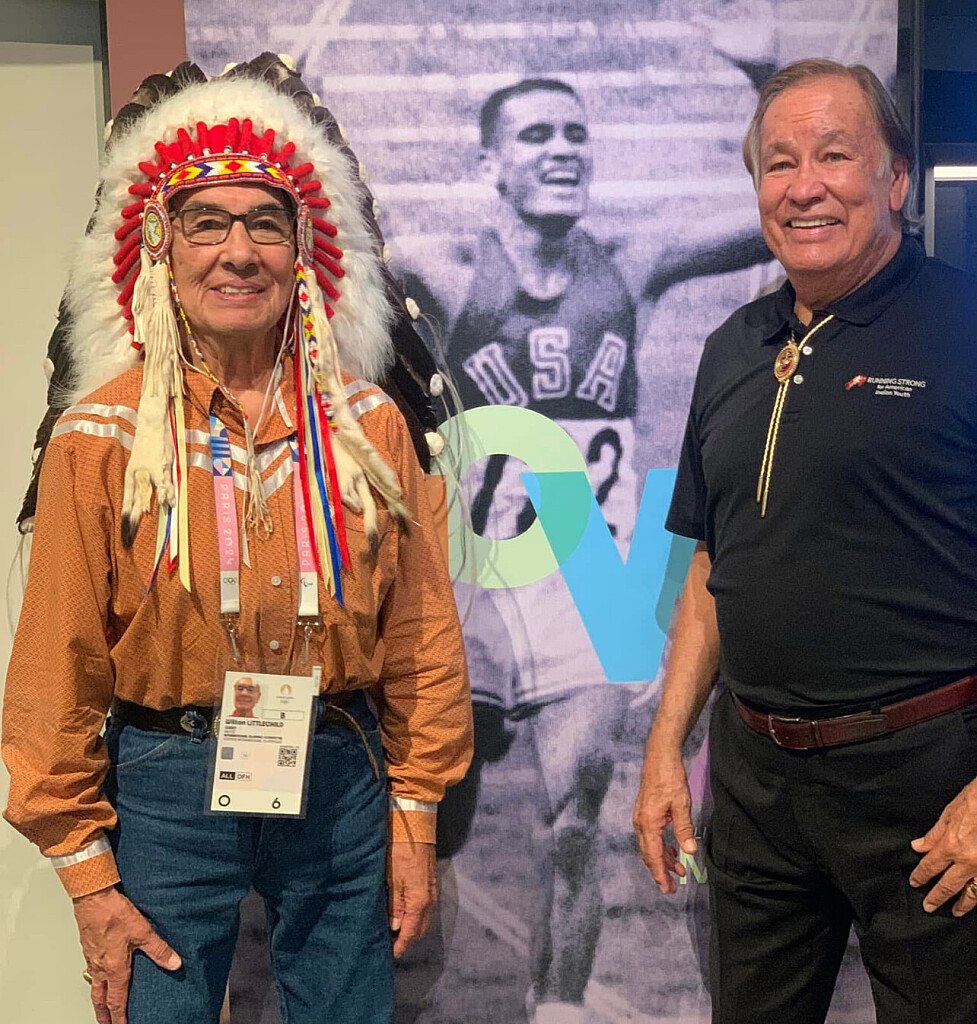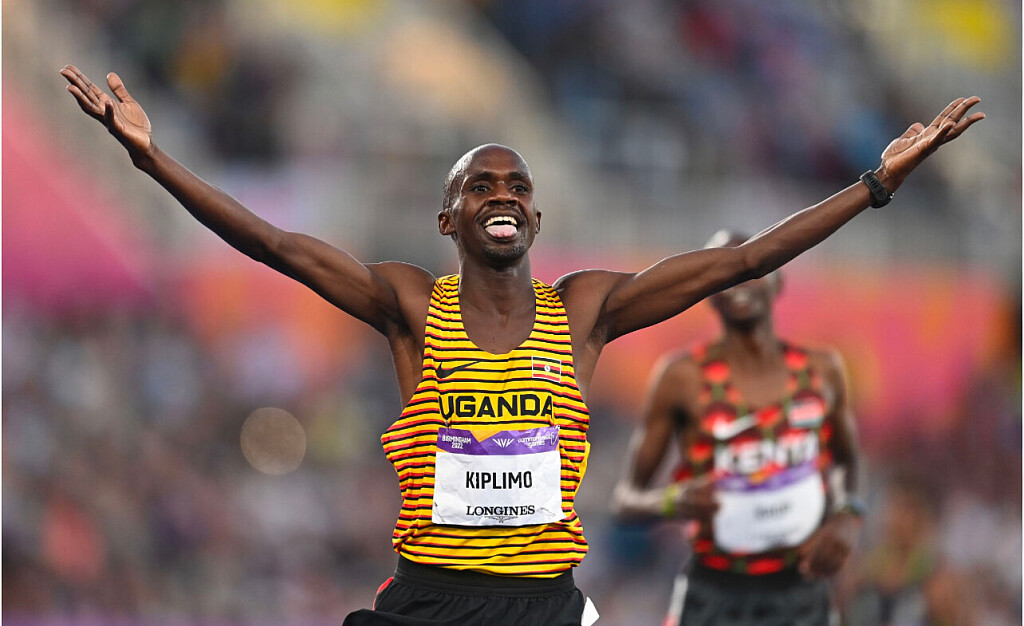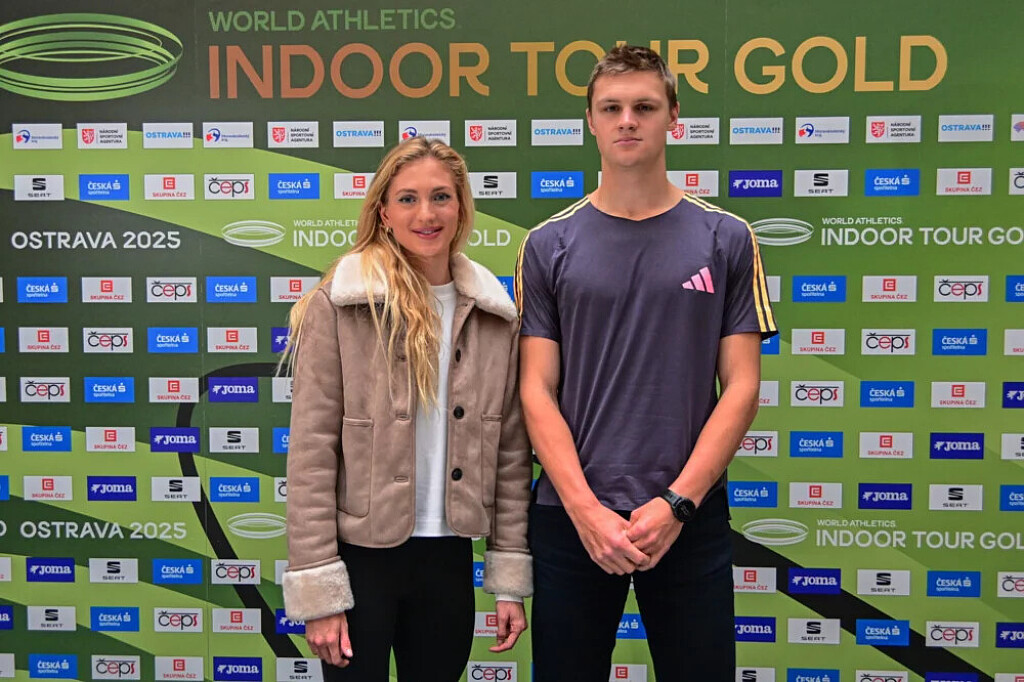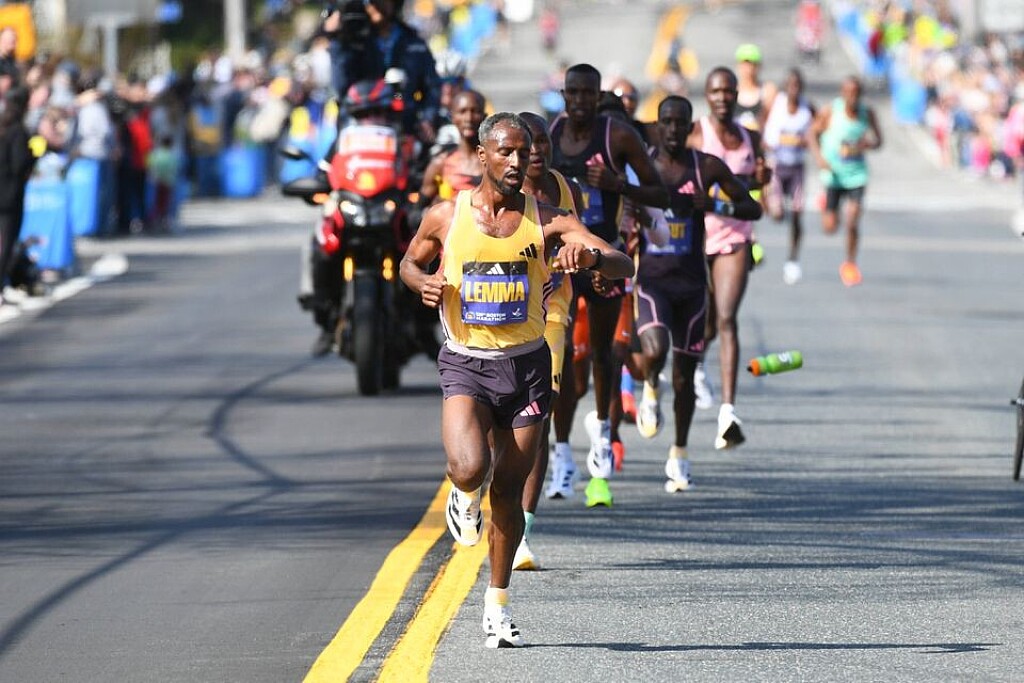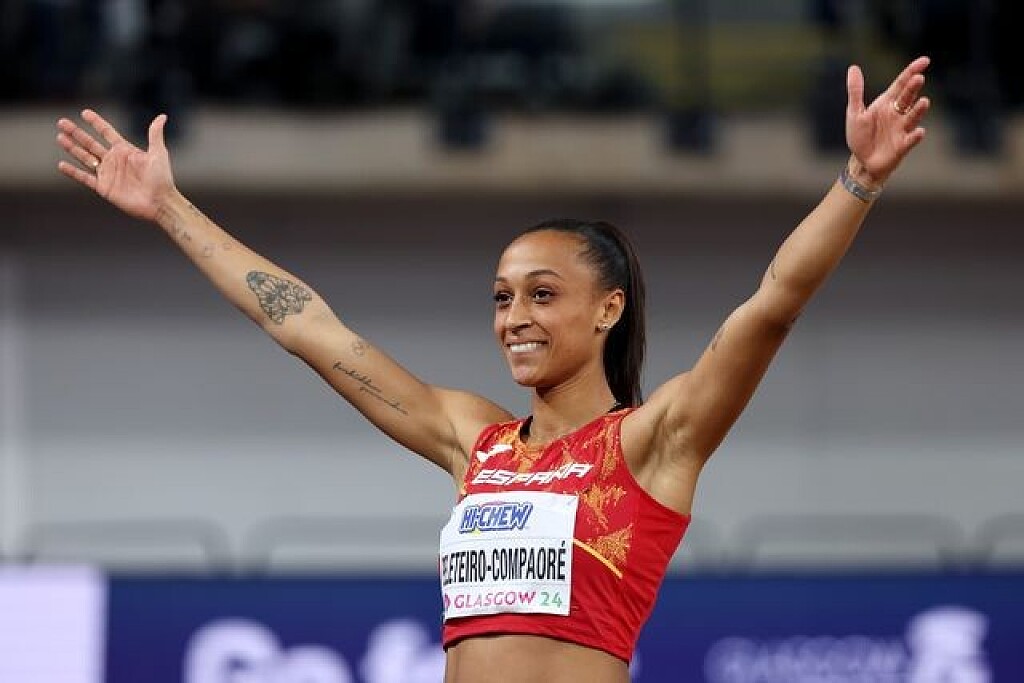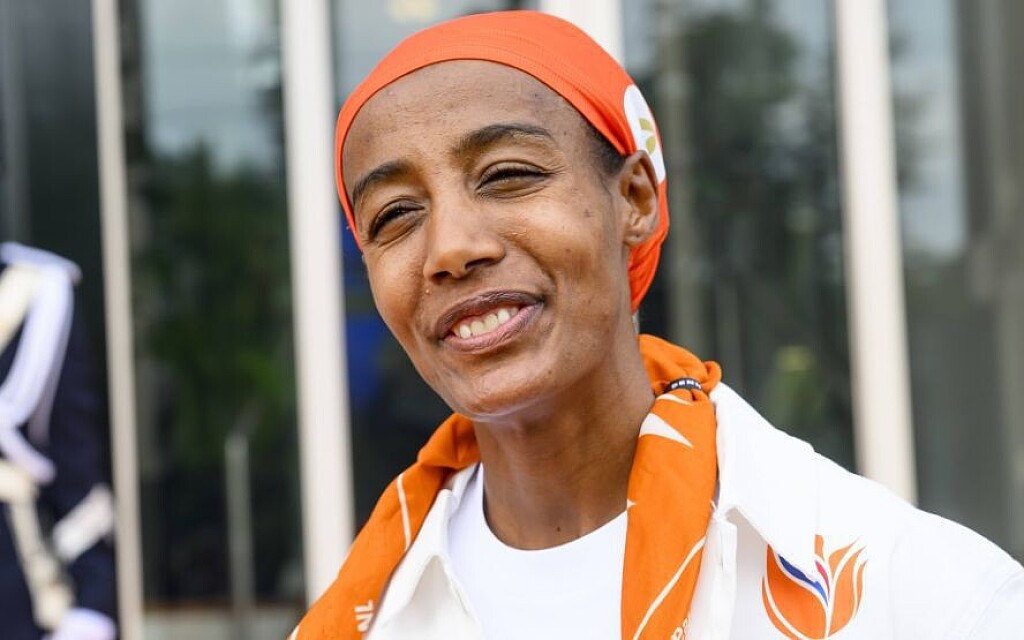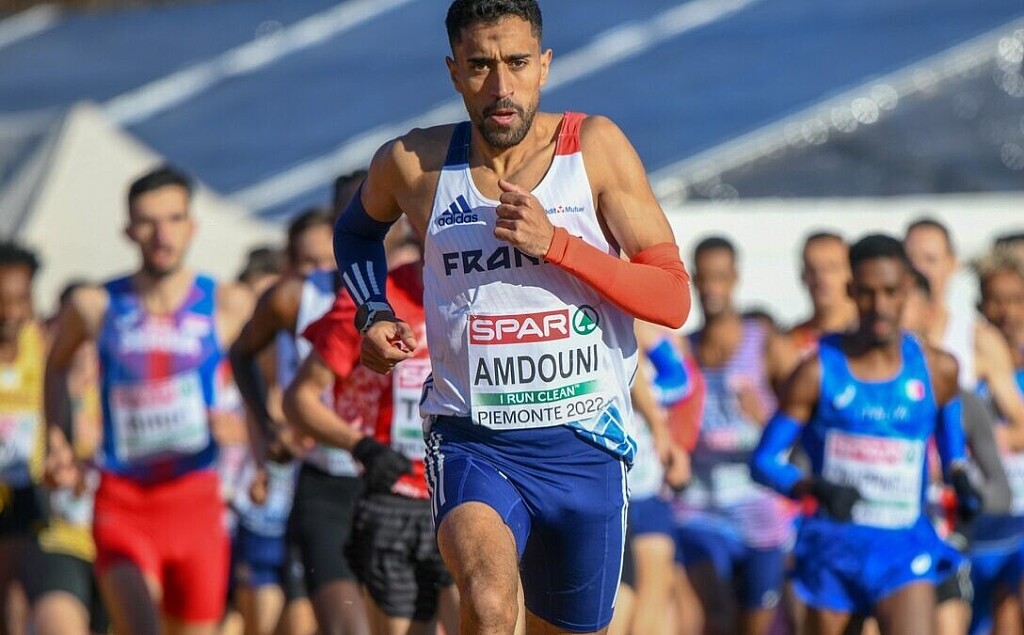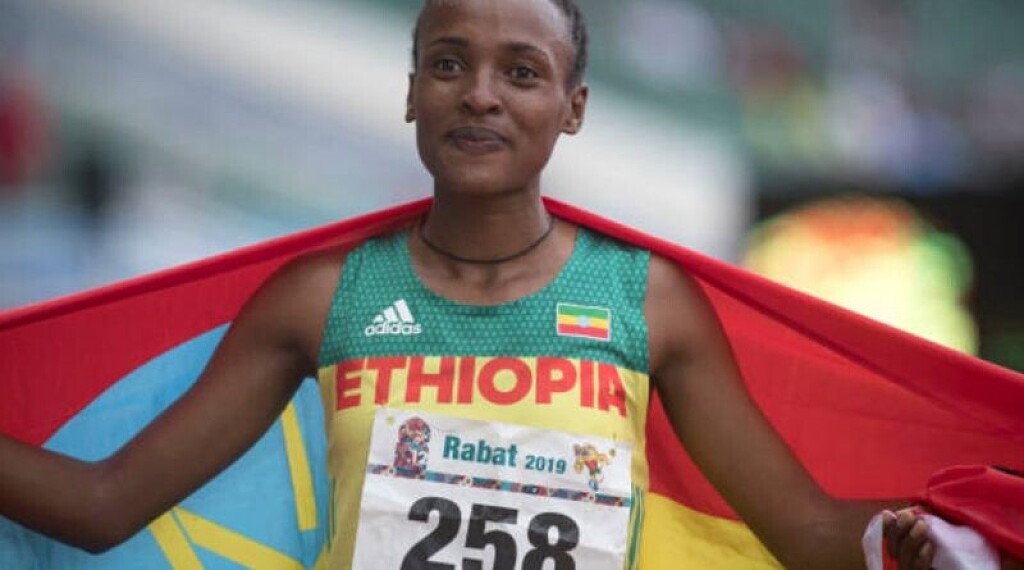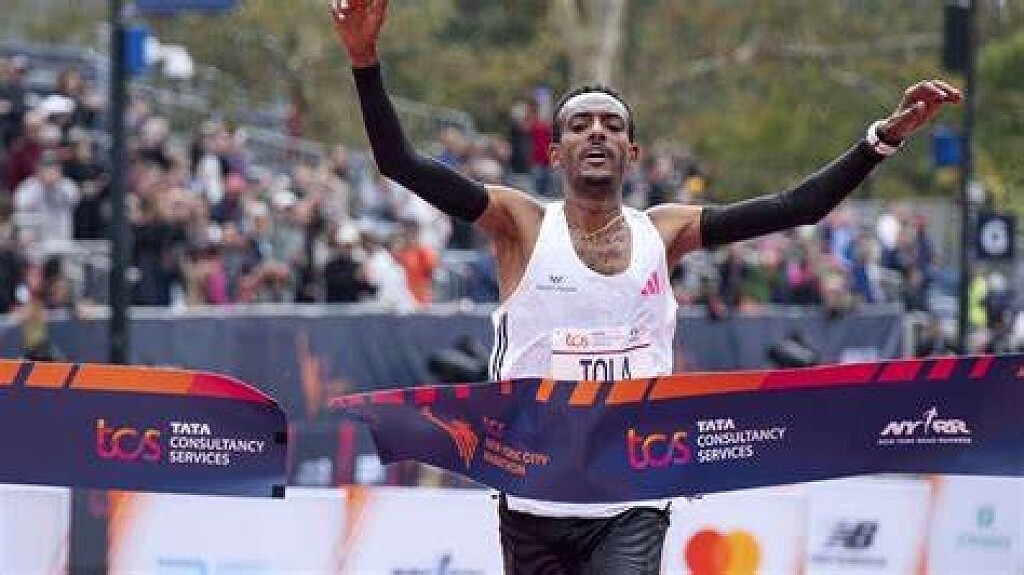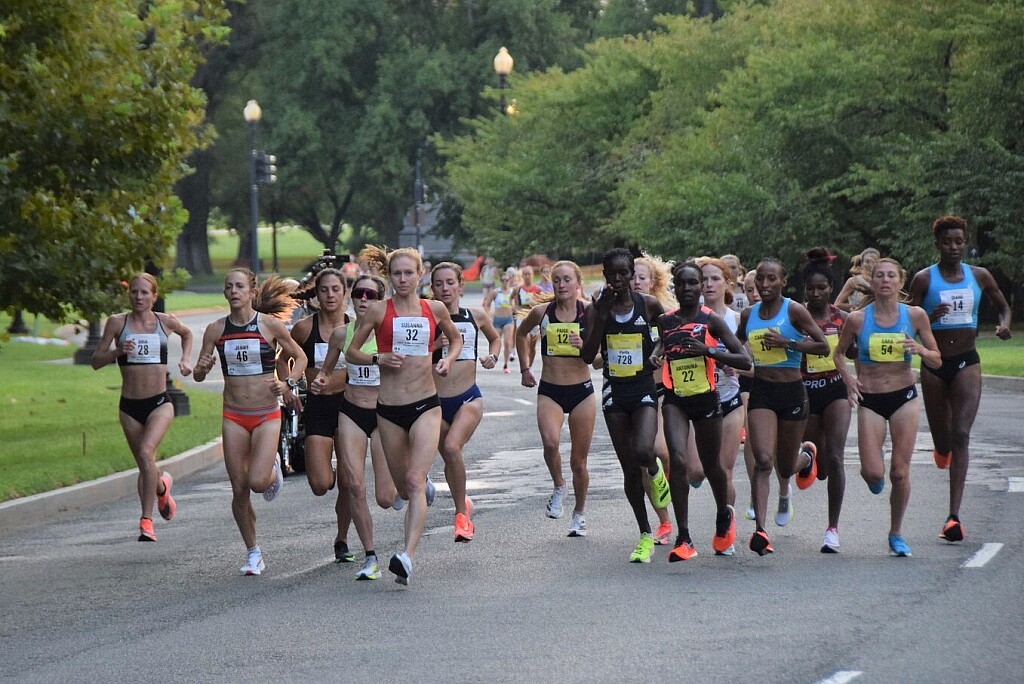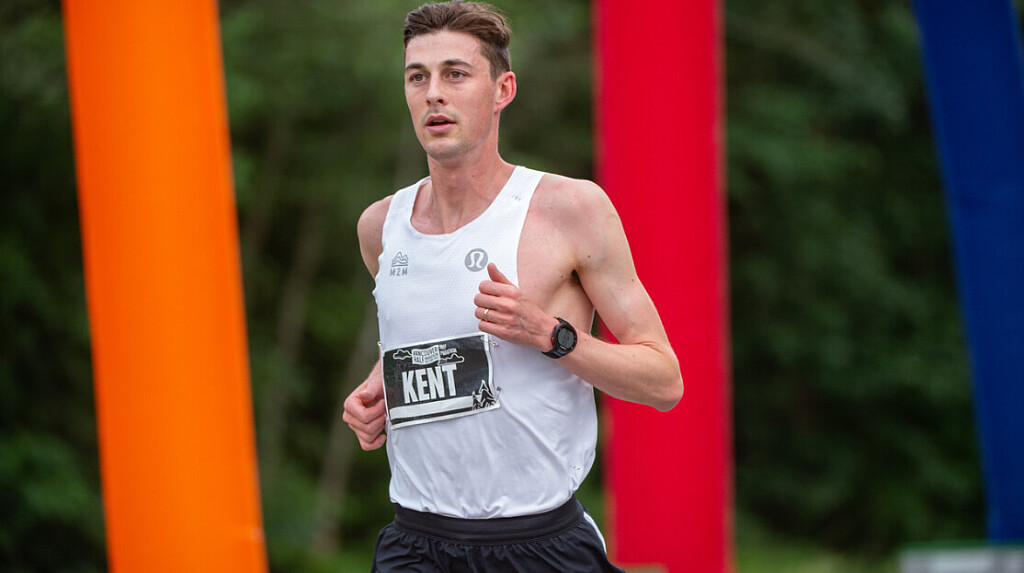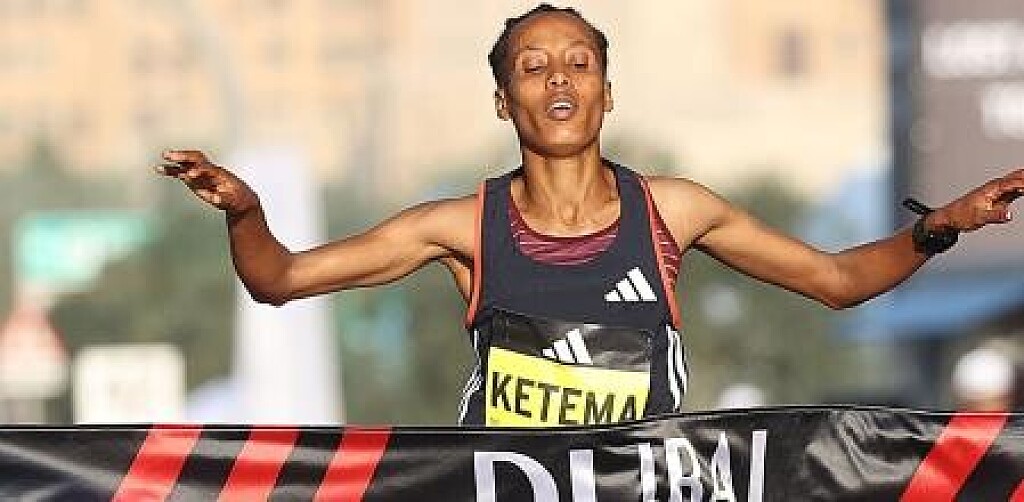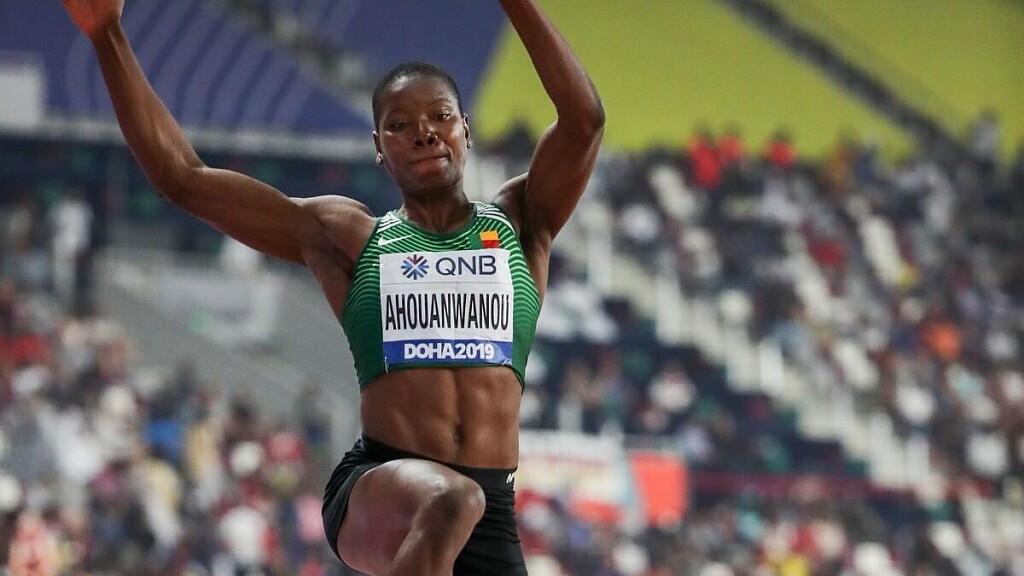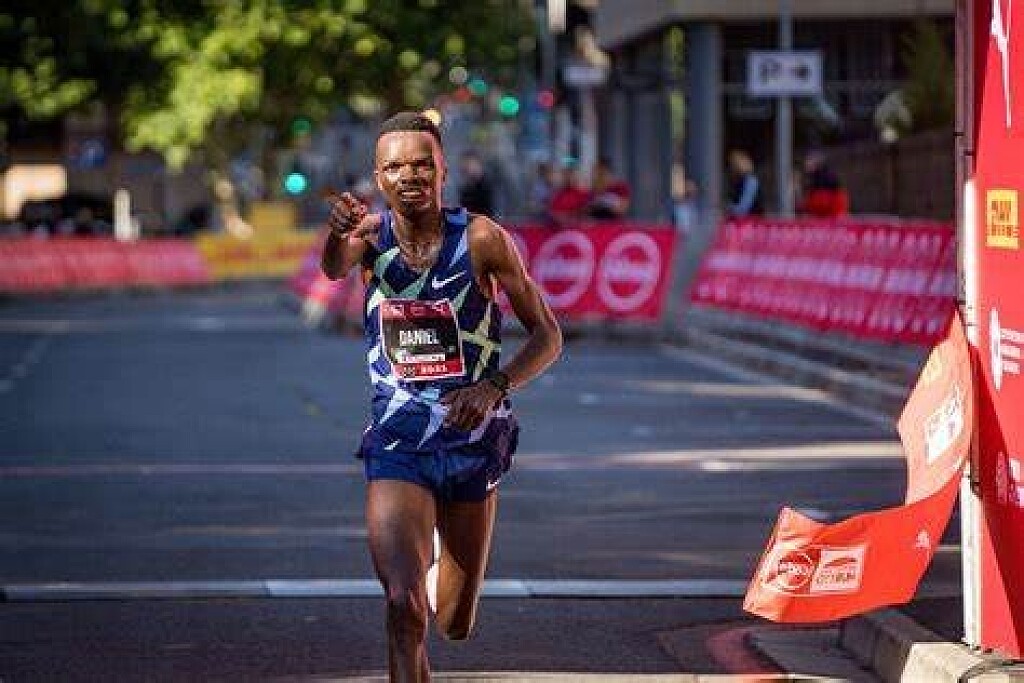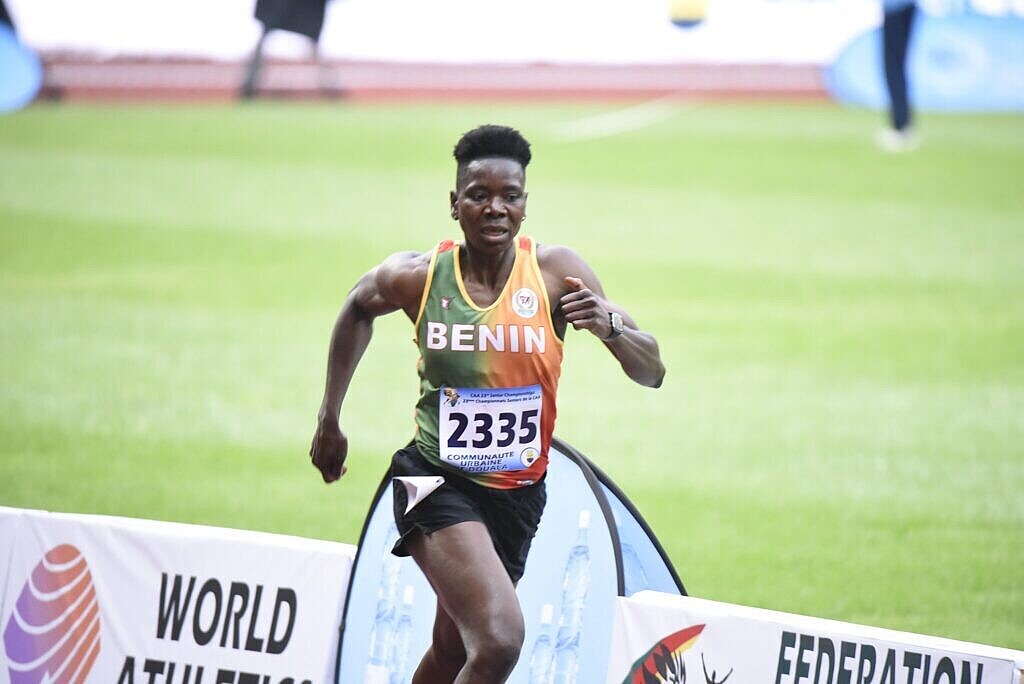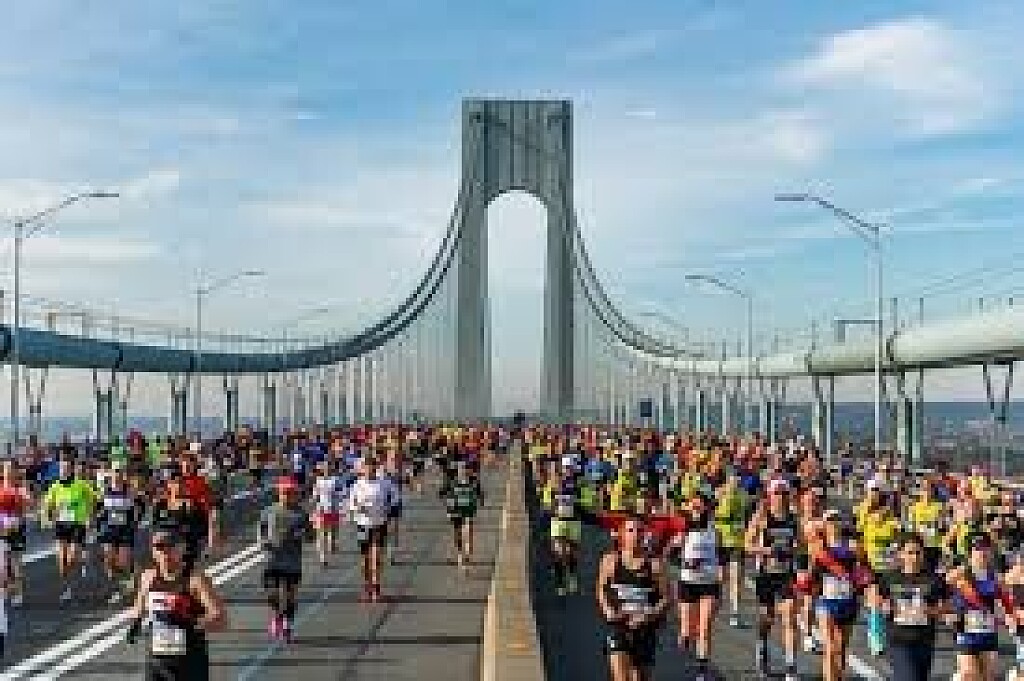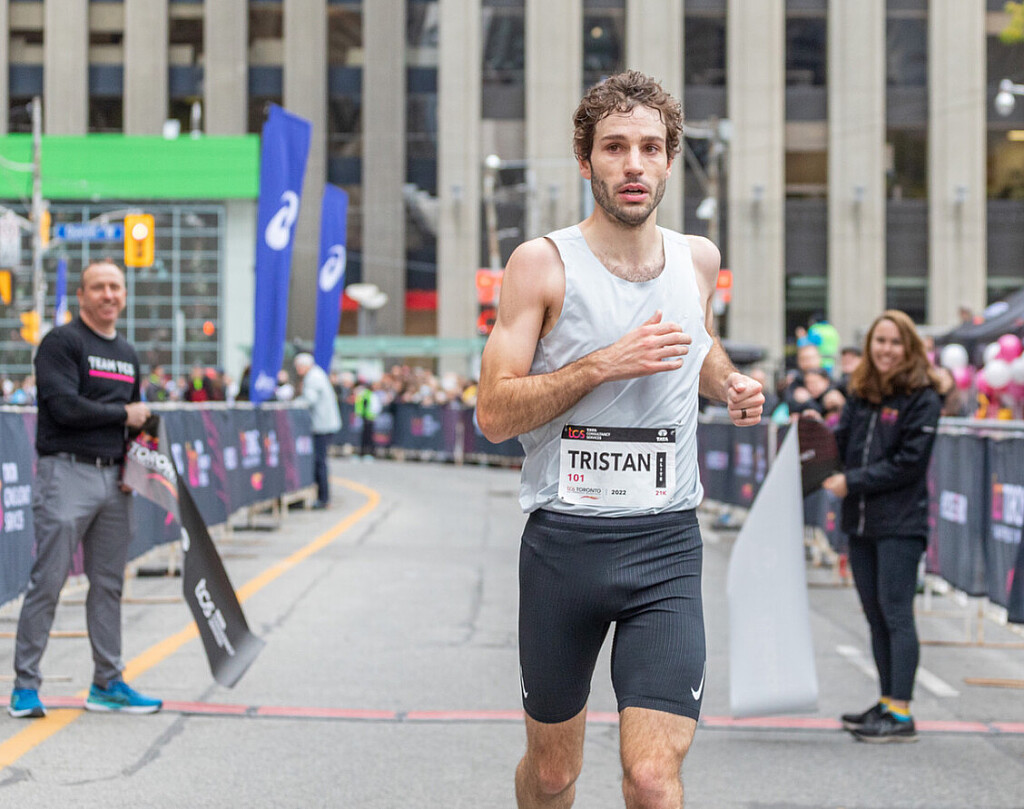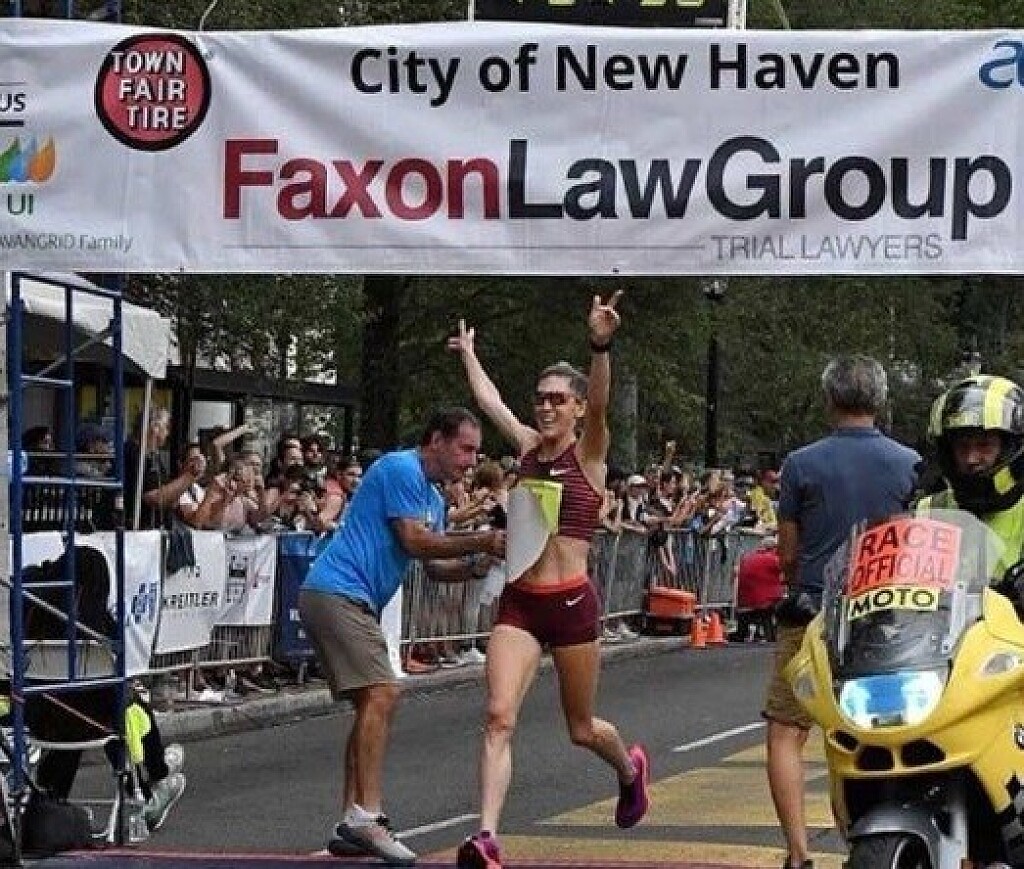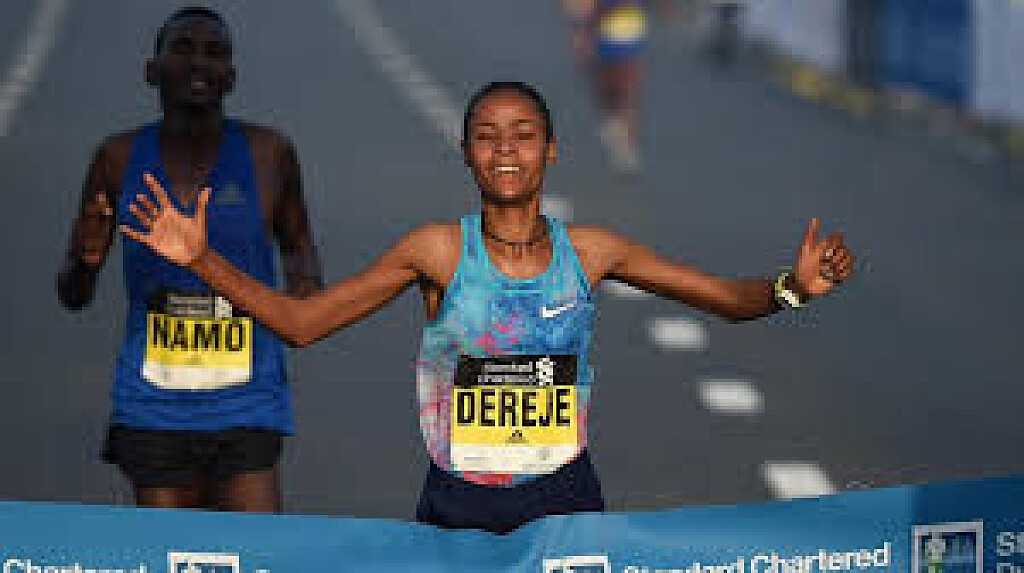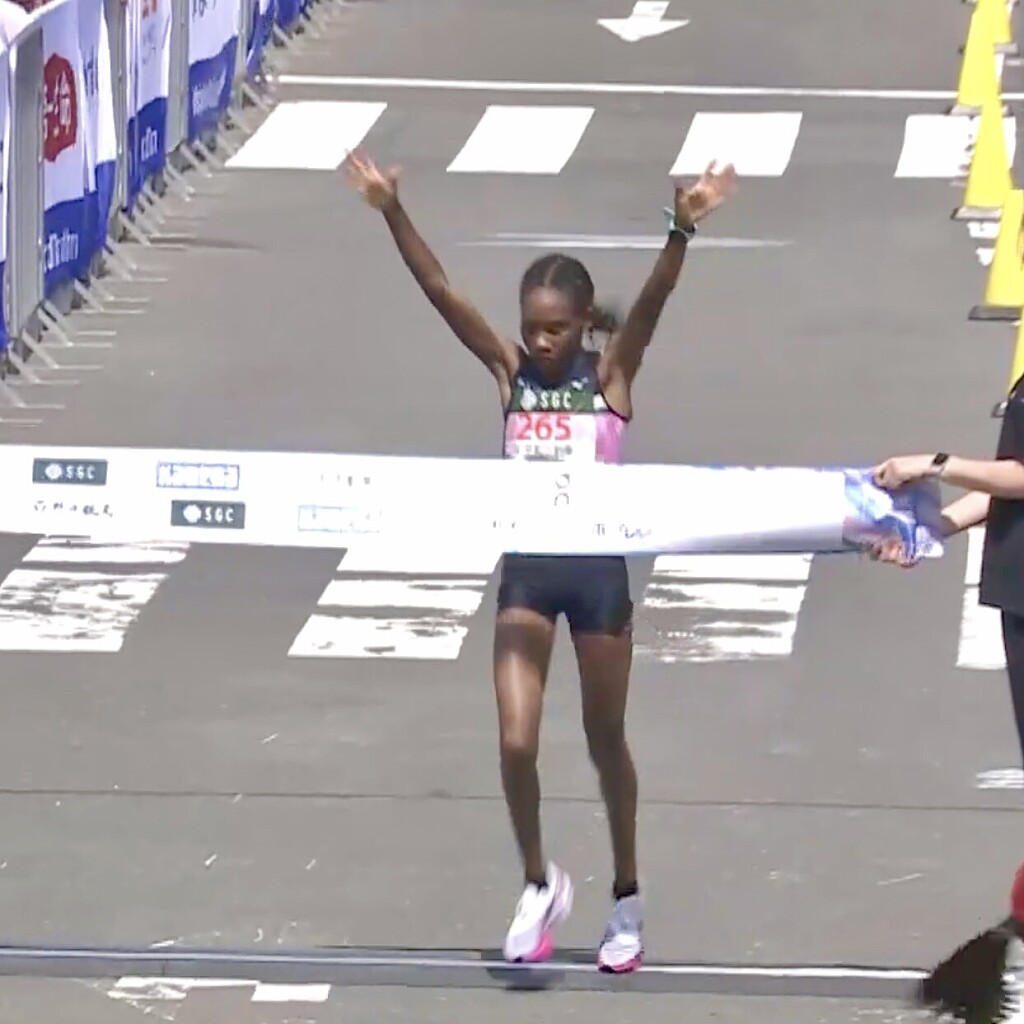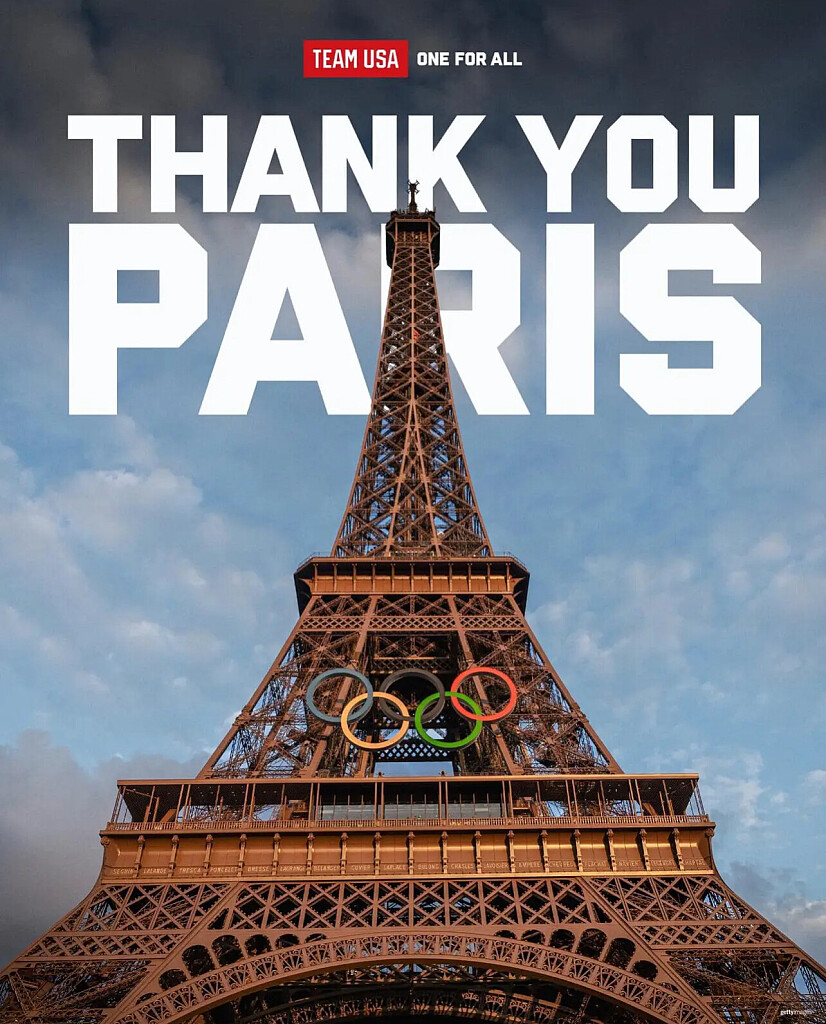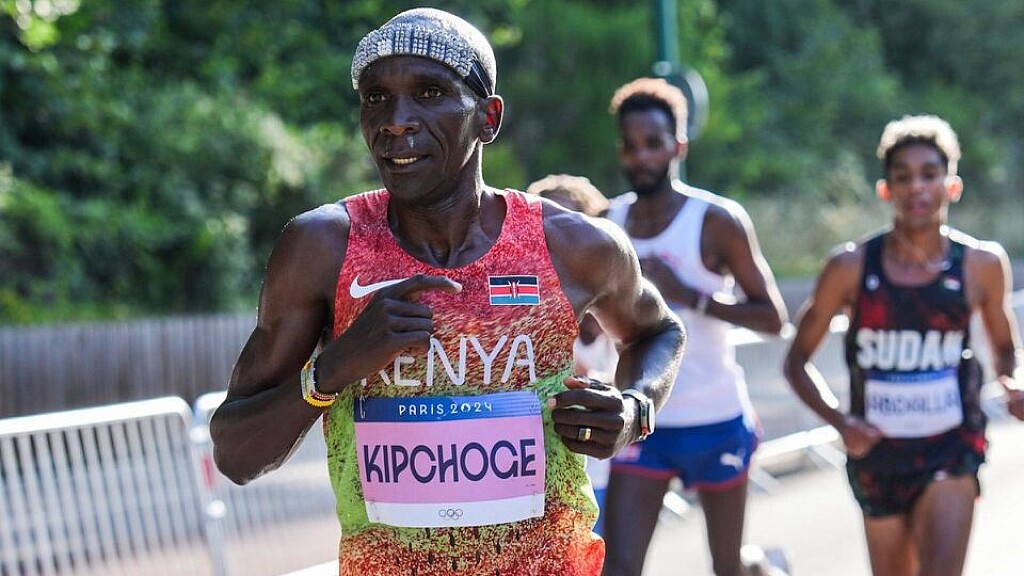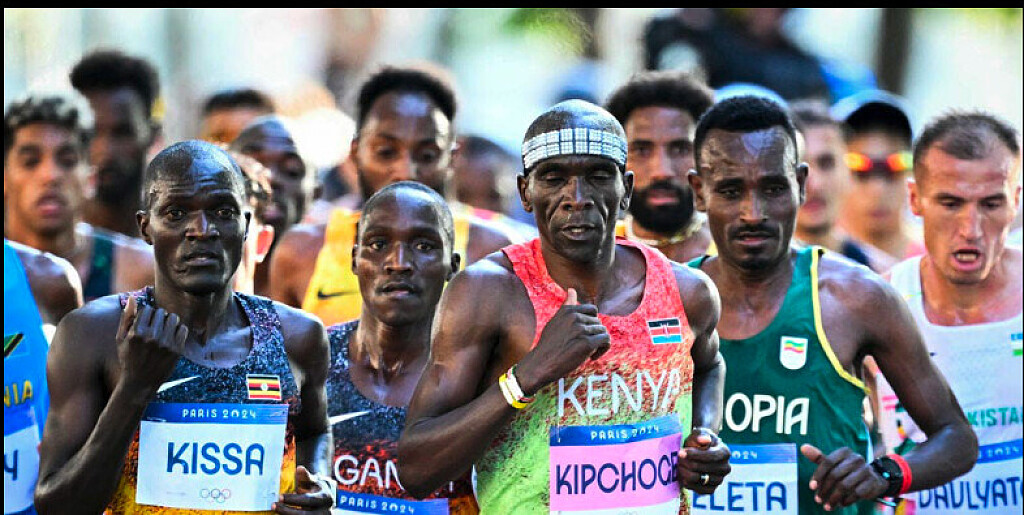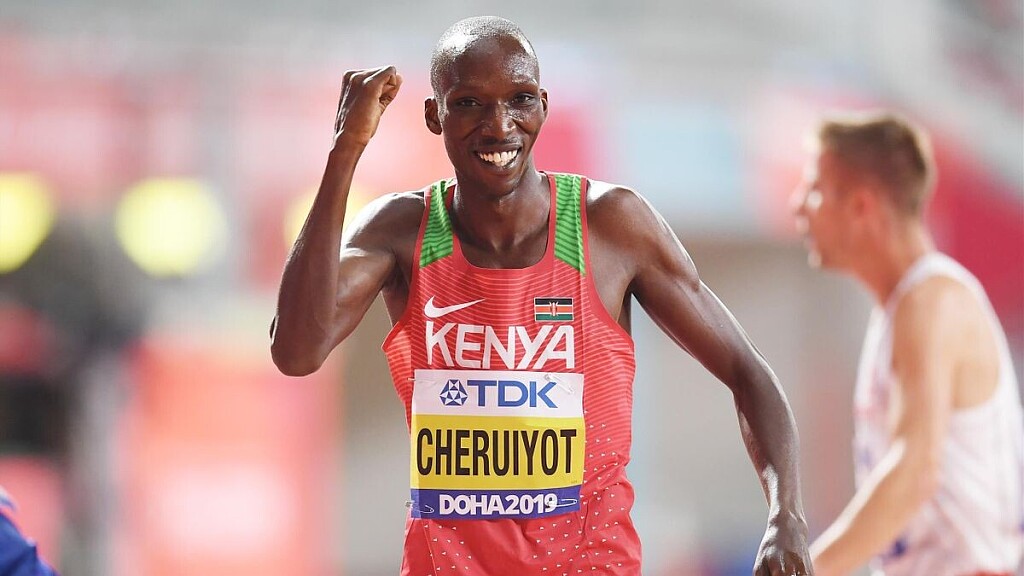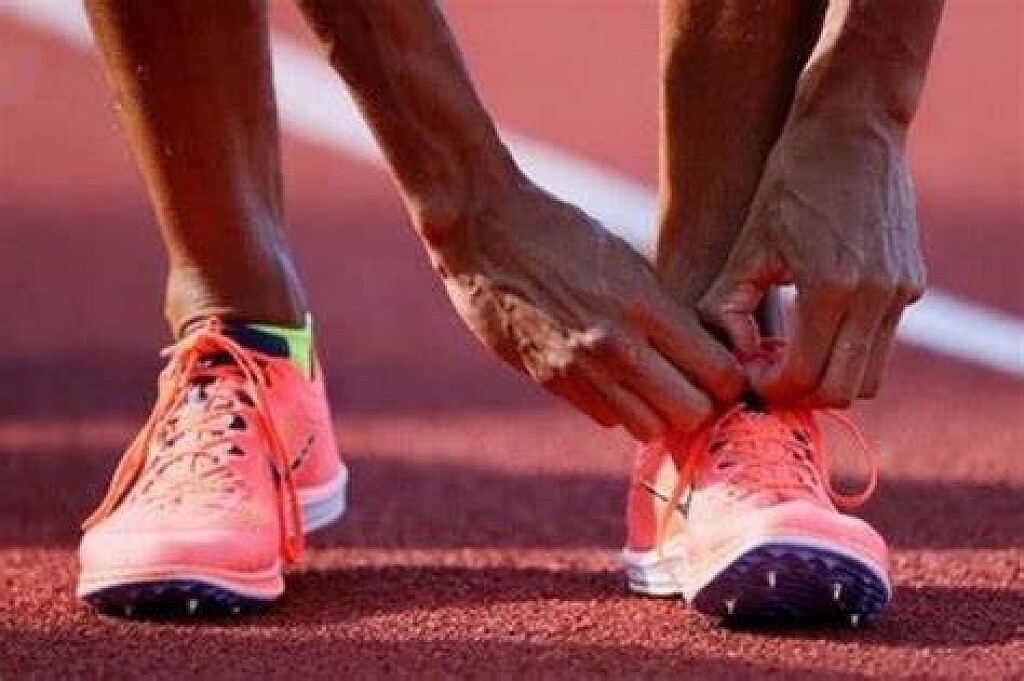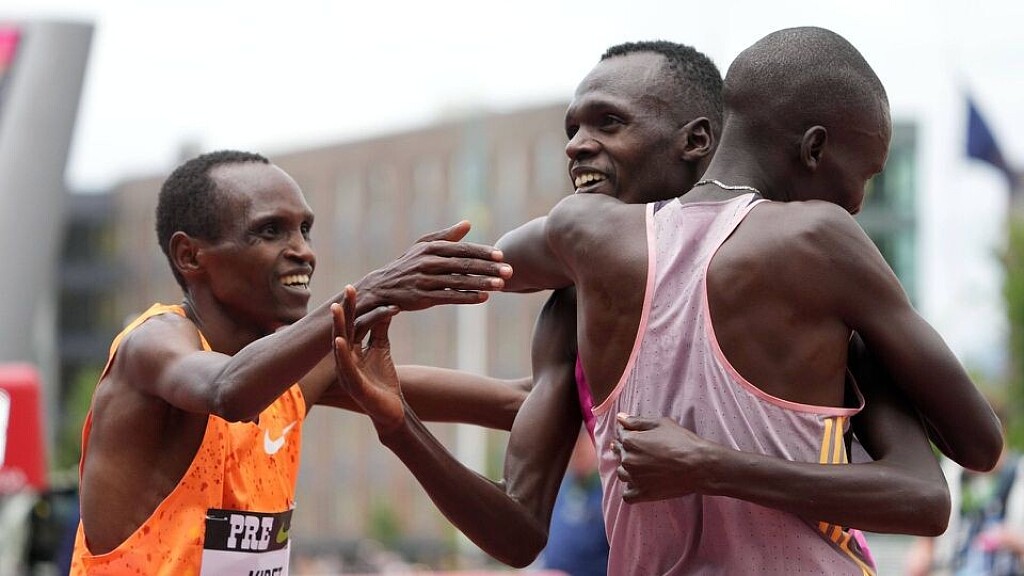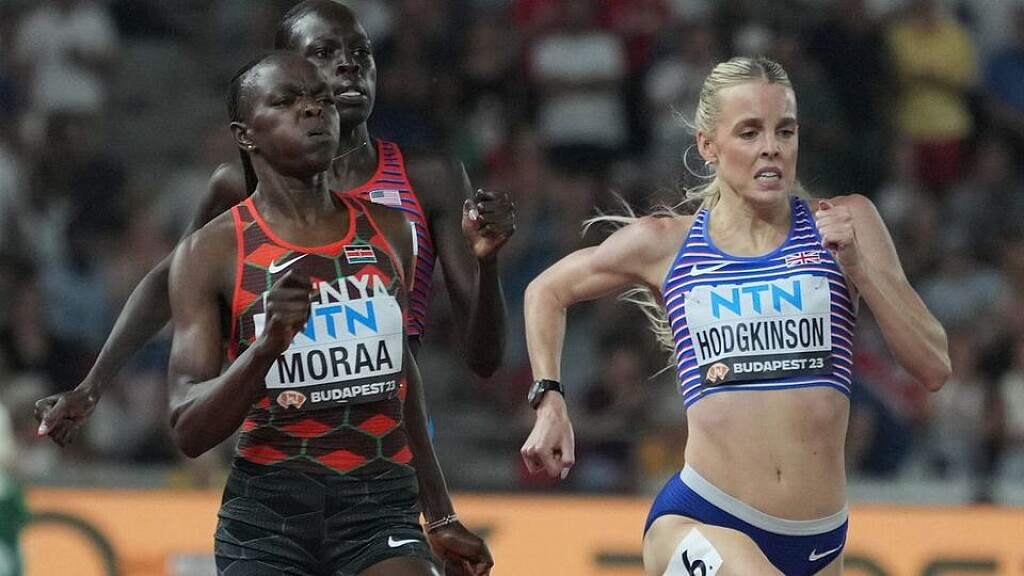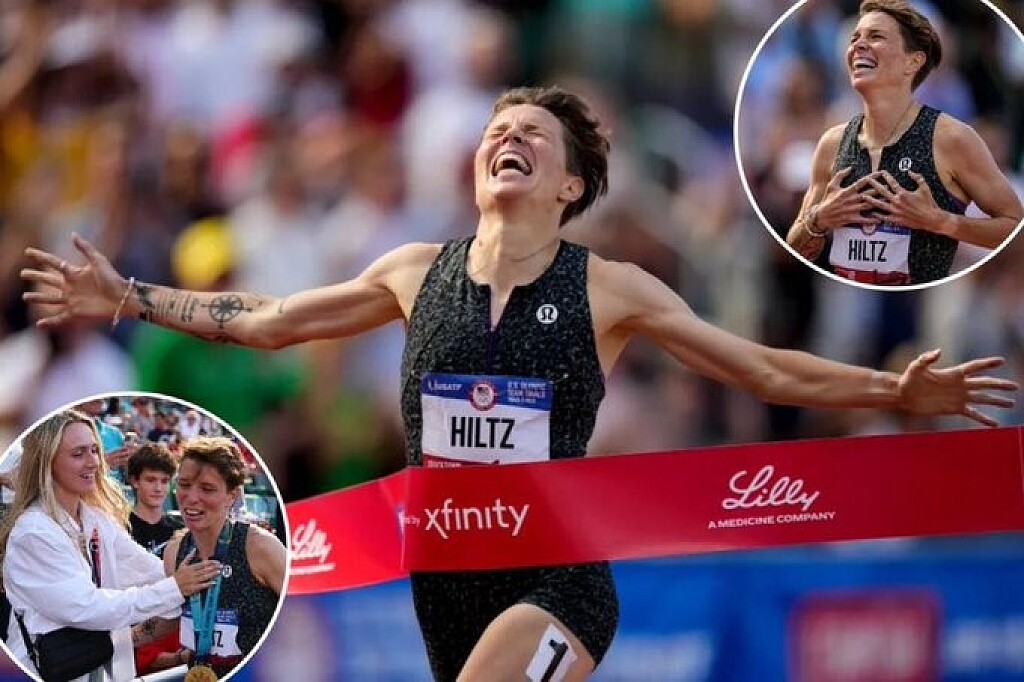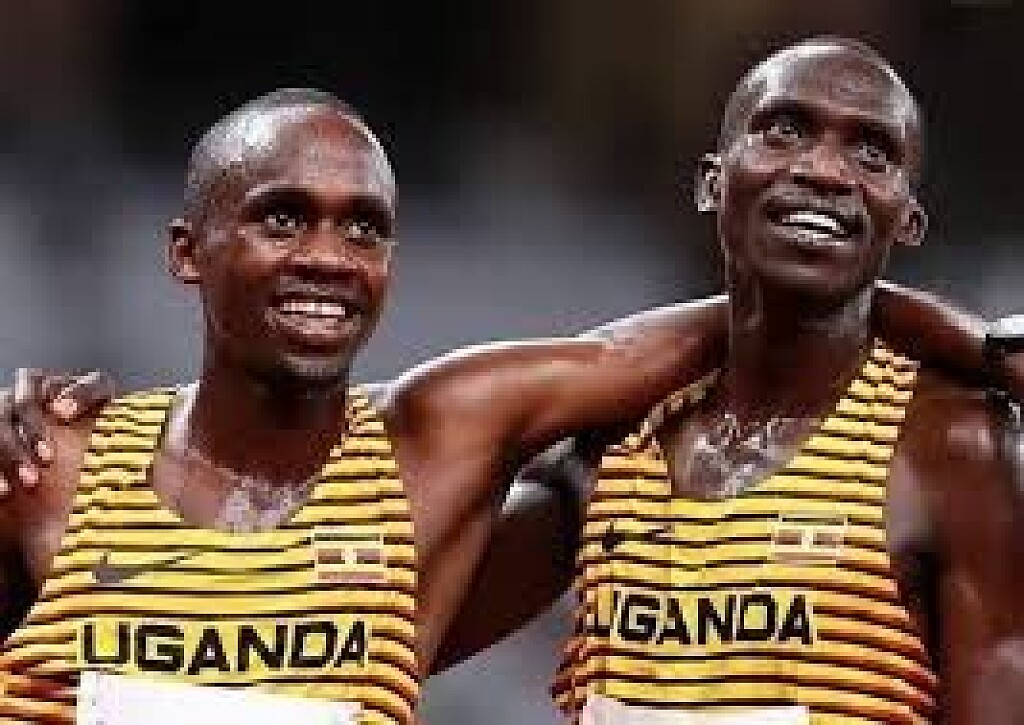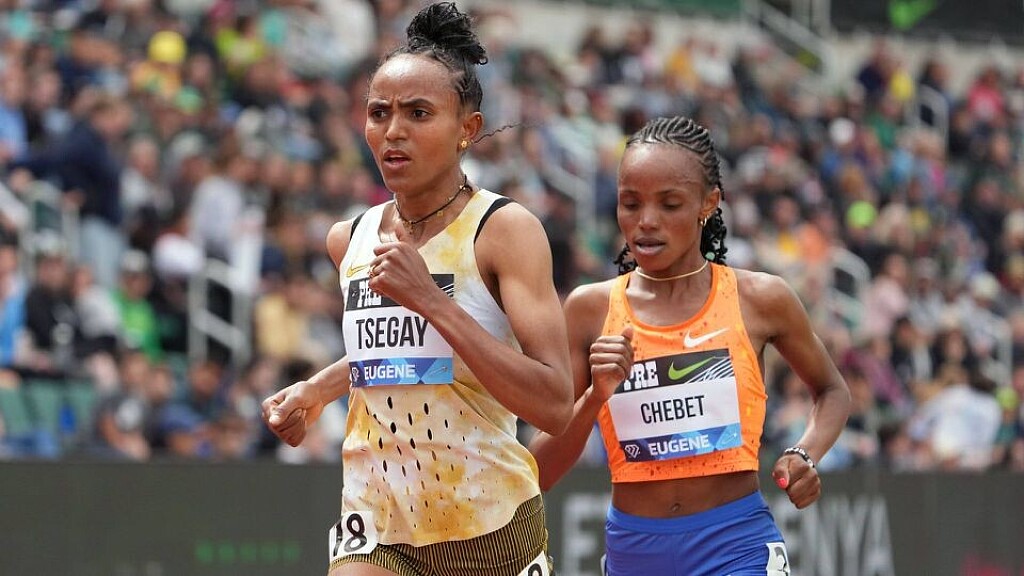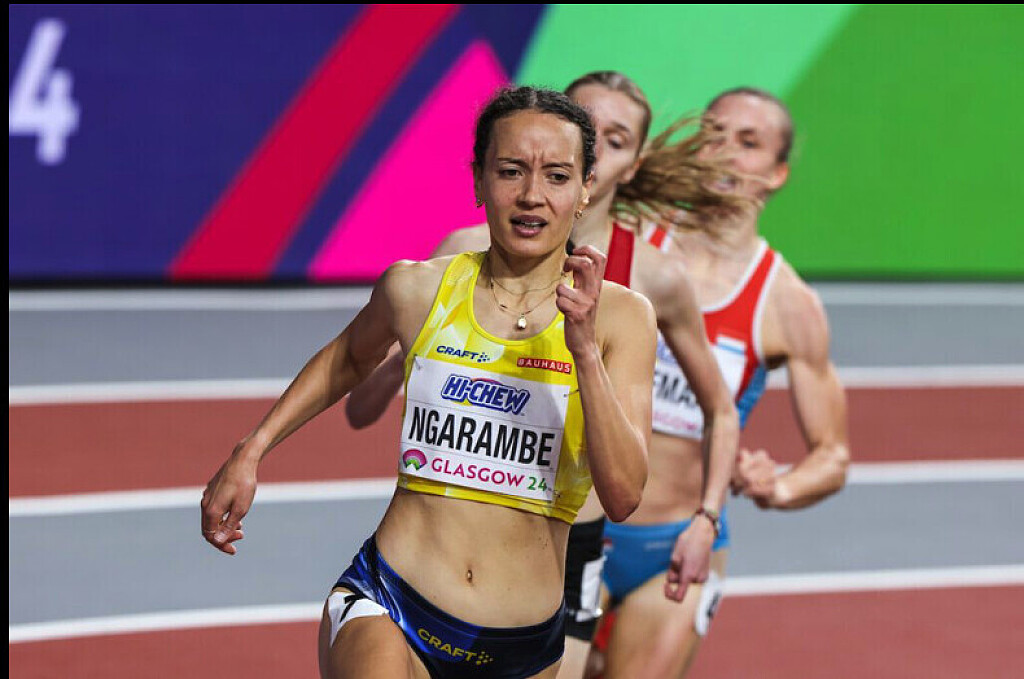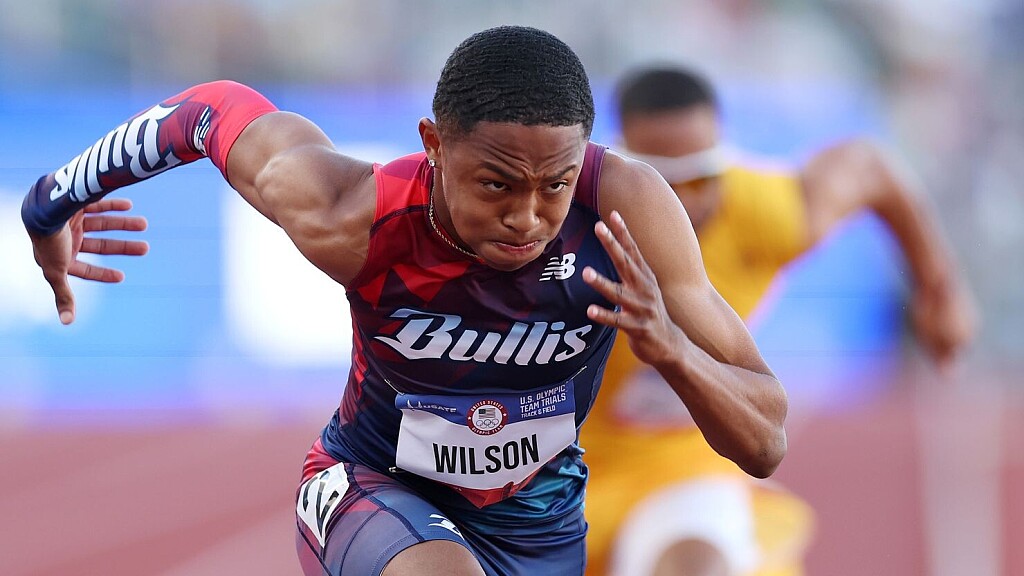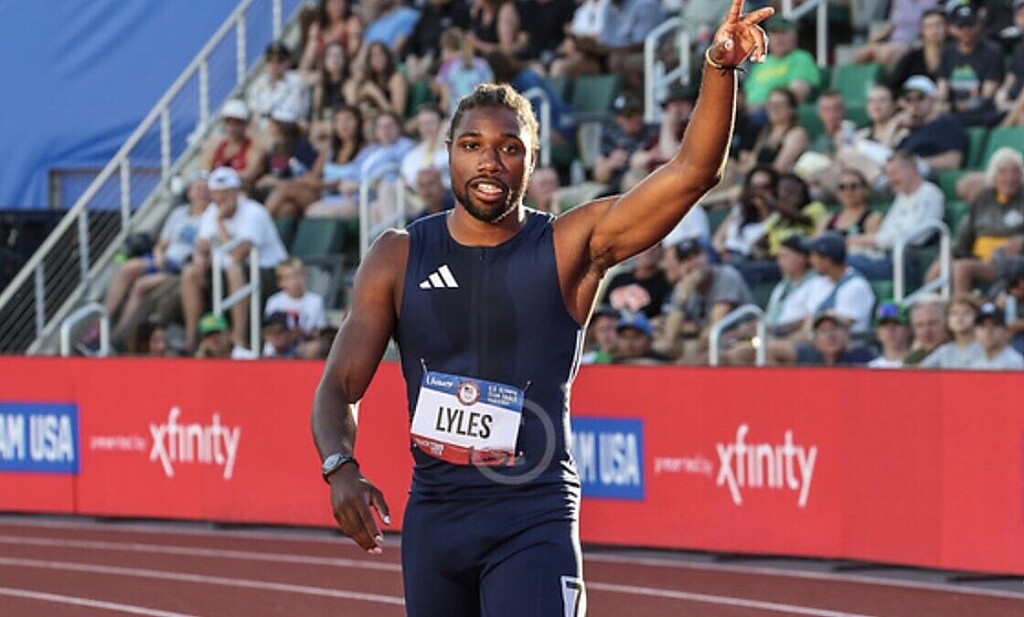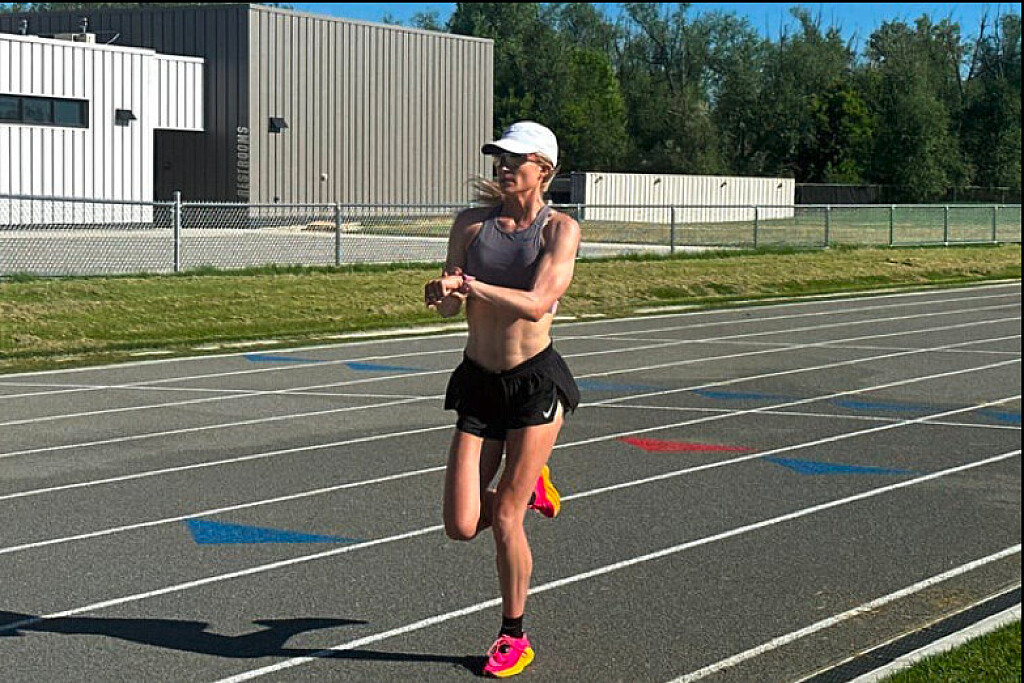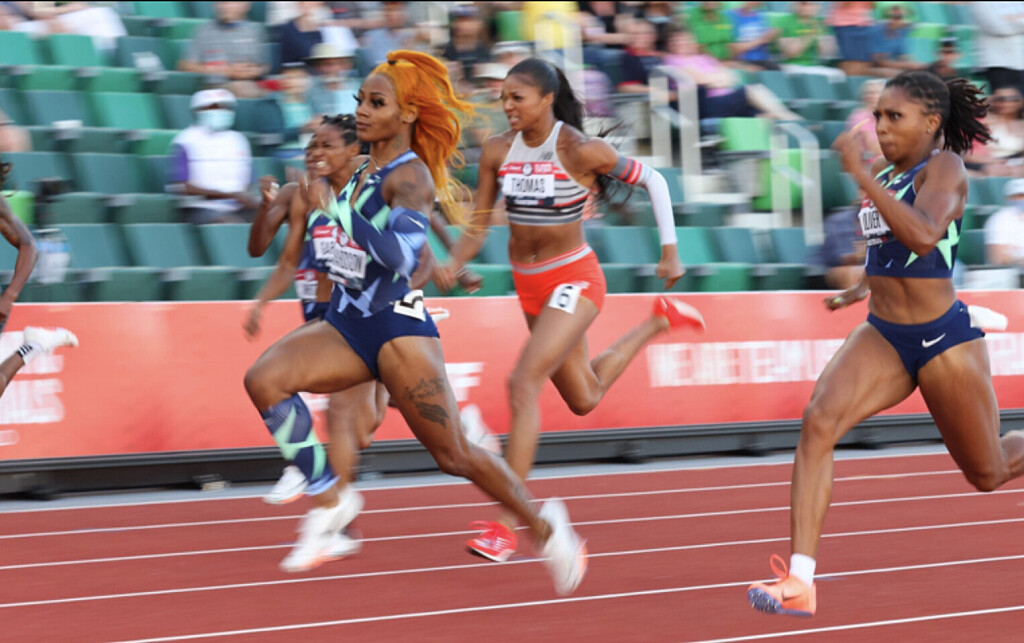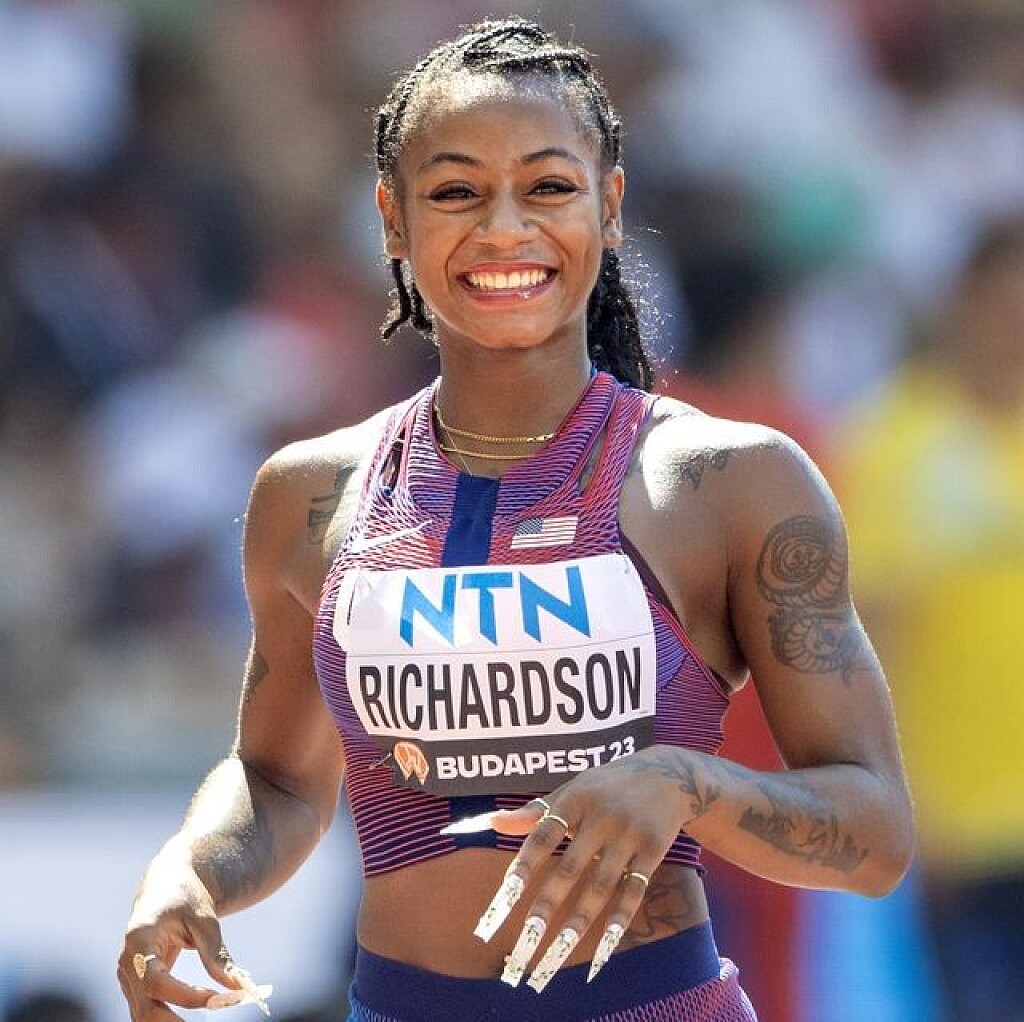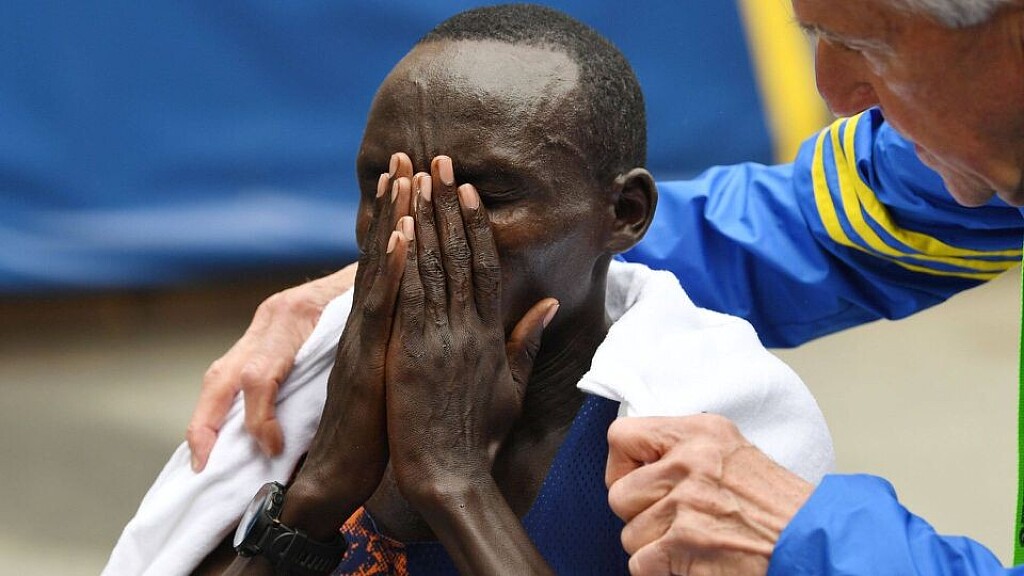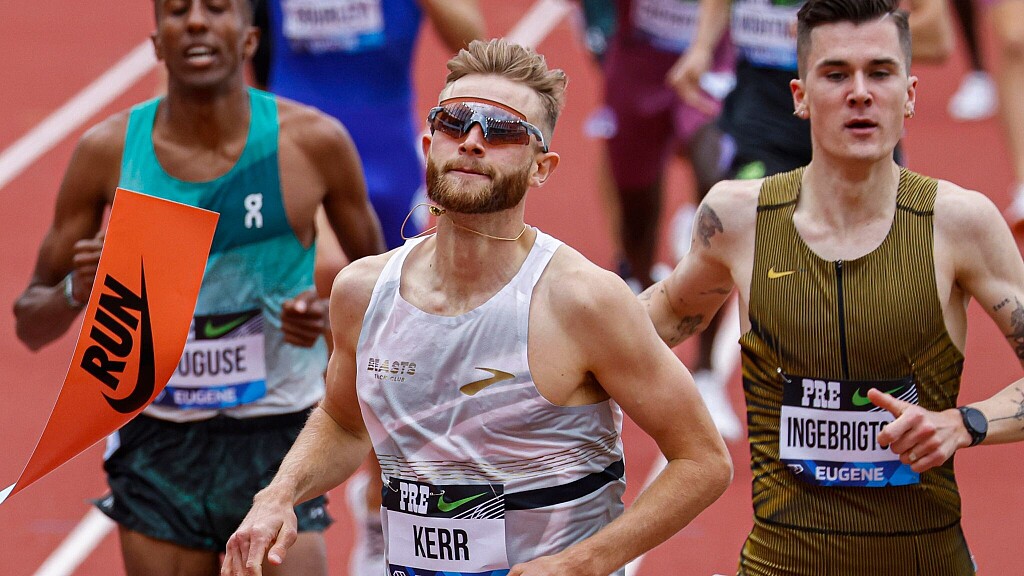Running News Daily
Running News Daily is edited by Bob Anderson. Send your news items to bob@mybestruns.com Advertising opportunities available. Train the Kenyan Way at KATA Kenya and Portugal owned and operated by Bob Anderson. Be sure to catch our movie A Long Run the movie KATA Running Camps and KATA Potato Farms - 31 now open in Kenya! https://kata.ke/
Index to Daily Posts · Sign Up For Updates · Run The World Feed
Articles tagged #Tokyo Olympics
Today's Running News
Jimmy Gressier shocks the world with stunning 10000m victory in Tokyo
France’s Jimmy Gressier stunned the athletics world in Tokyo Sept 14, sprinting past Ethiopia’s Yomif Kejelcha in the final strides to claim the men’s 10,000m world title. His winning time of 28:55.77wasn’t about records — it was about patience, tactics, and a devastating final kick. With that surge, Gressier became the first non–East African-born world champion in the event since 1983.
But for those who have followed his career, this moment wasn’t magic out of thin air. It was years in the making.
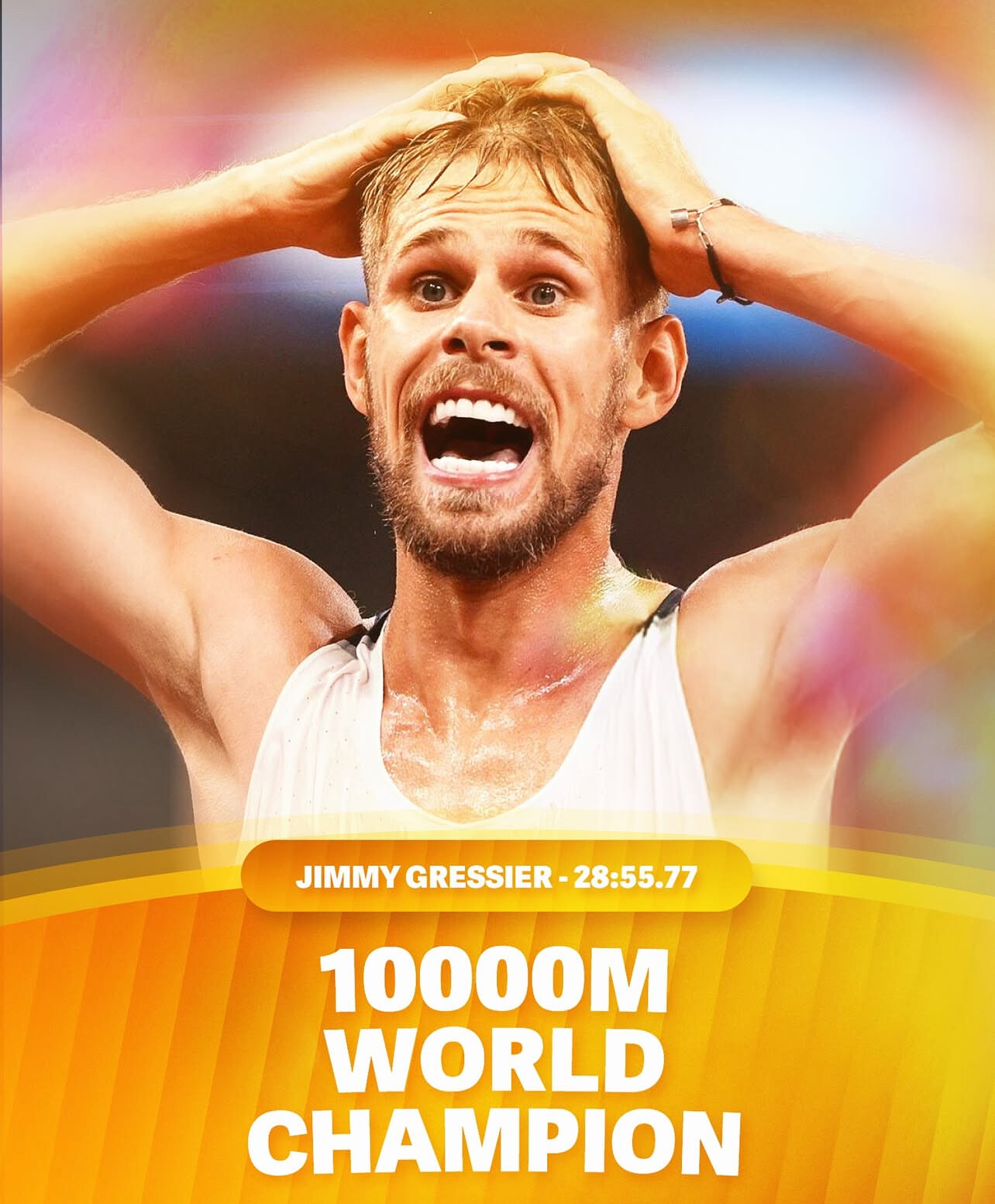
Building Blocks: Cross-Country and U23 Glory
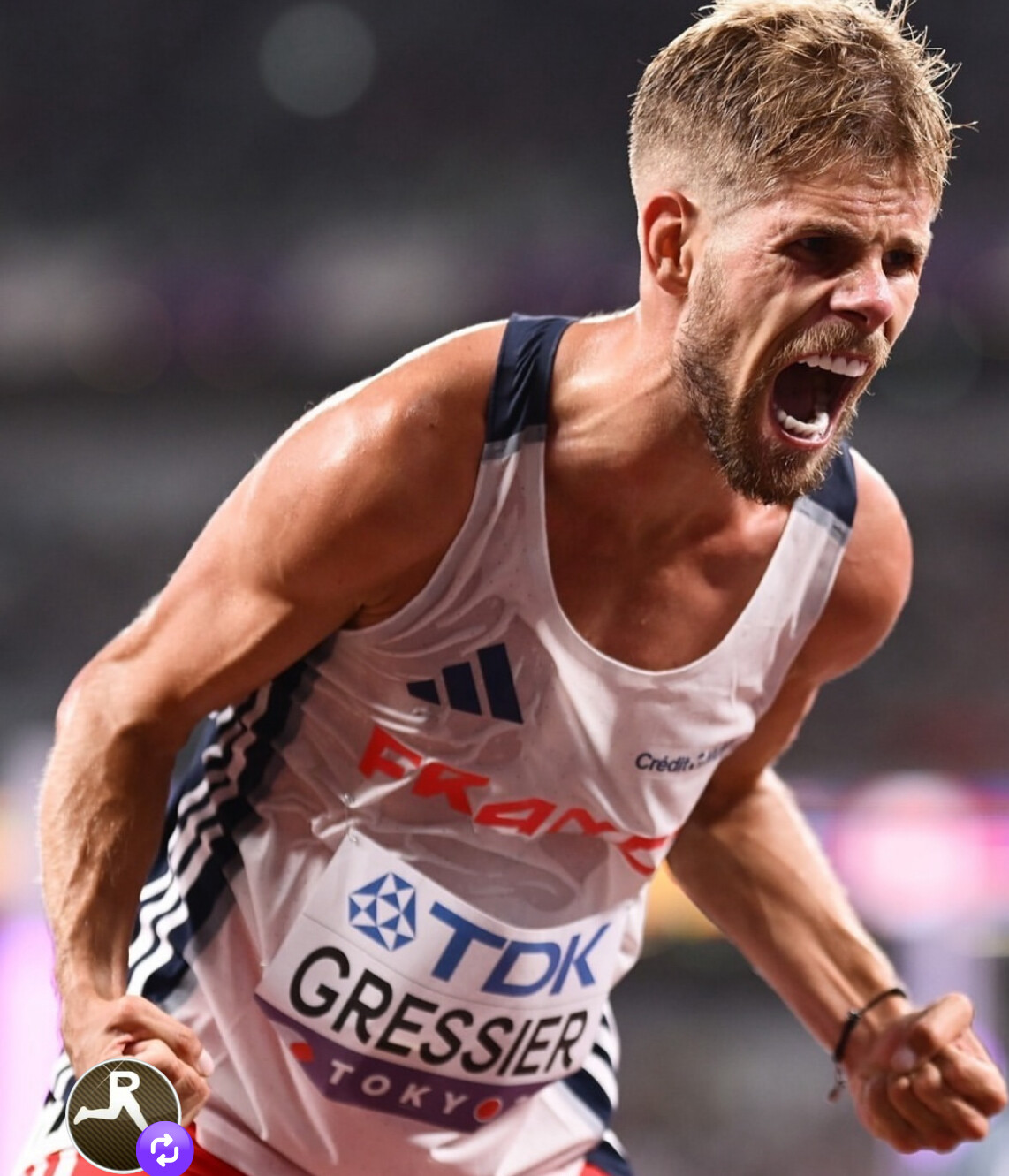
Born May 4, 1997, in Boulogne-sur-Mer, France, Gressier’s rise began on the fields of European cross-country. Between 2017 and 2019, he won three consecutive U23 European Cross-Country Championships, showcasing his toughness in cold, muddy races far from the track’s bright lights.
At the 2019 European U23 Championships, he doubled up to win gold in both the 5,000m and 10,000m, proving his versatility and hinting at bigger things to come.
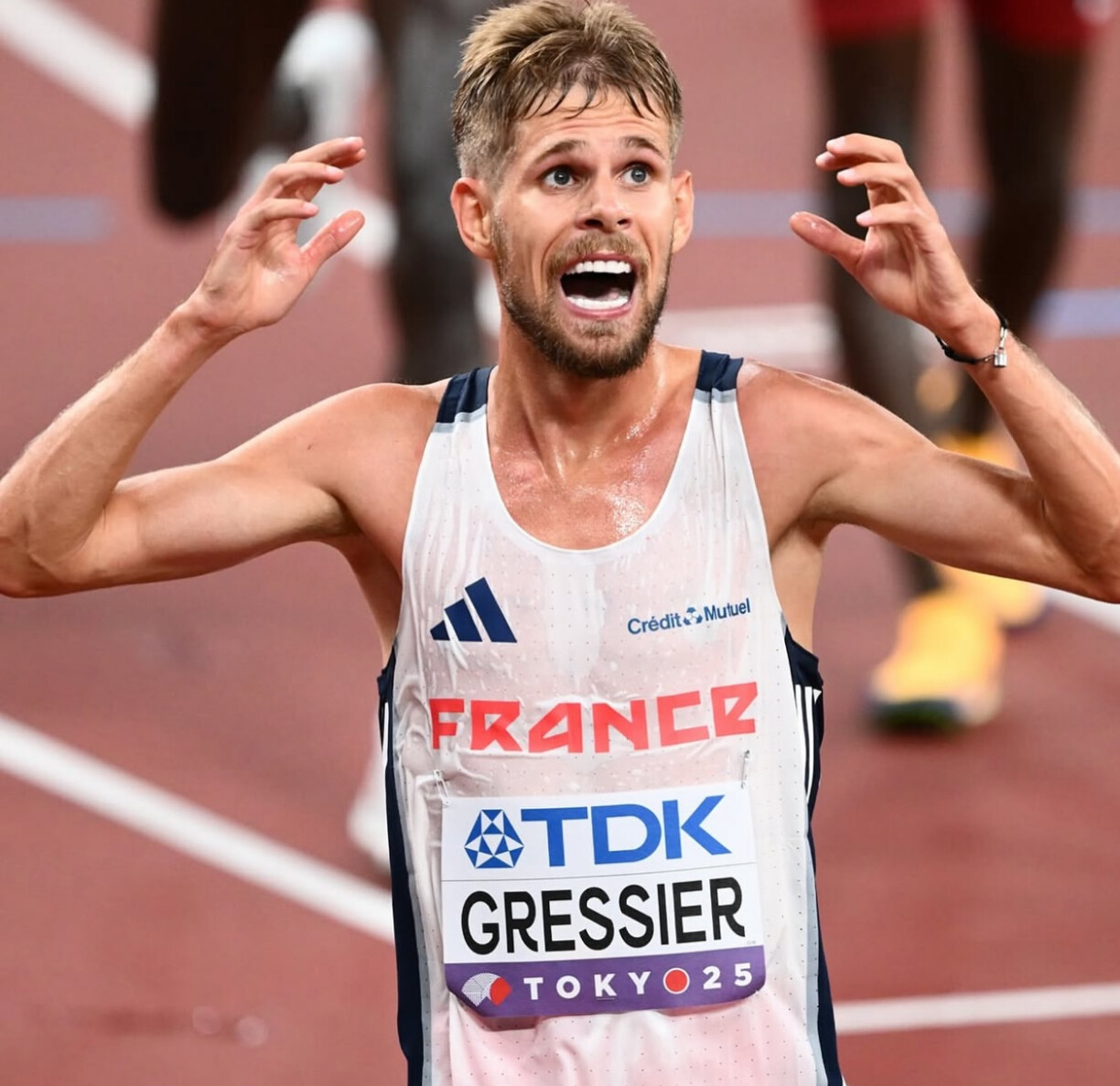
Records on Track and Road
Gressier has rewritten France’s distance running records, and in some cases Europe’s.
• European 5K road record: In 2025, he became the first European to break the 13-minute barrier on the roads, clocking 12:57.
• French national records: He has owned the national bests in both the 5,000m and 10,000m on the track.
• Range: From 3,000m indoors to road races, Gressier has consistently proven his speed and endurance.
These performances made him one of Europe’s most promising distance runners, but until Tokyo he hadn’t converted that talent into senior global hardware.
Close Calls and Lessons Learned
The near misses added to his hunger.
• At the 2021 Tokyo Olympics, he finished 13th in the 5,000m.
• At the 2022 World Championships in Eugene, he placed 11th in the 10,000m.
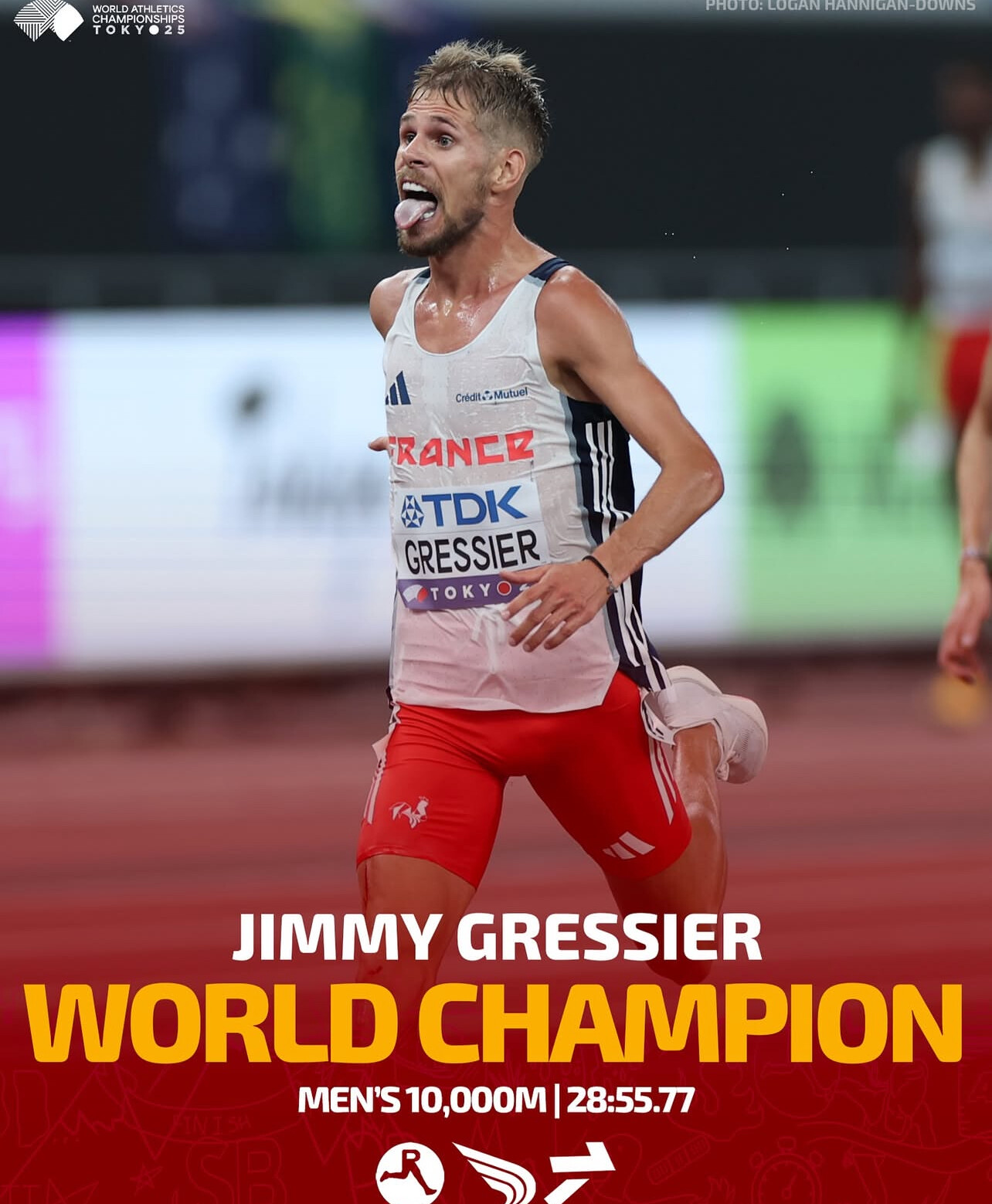
• At the 2022 European Championships in Munich, he narrowly missed the podium, finishing 4th in the 10,000m.
Each result showed progress, but also left him on the outside looking in when medals were awarded.
The Breakthrough in Tokyo
That changed on a humid night at the 2025 World Championships. The men’s 10,000m was run cautiously, the pack conserving energy for the inevitable burn-up over the final lap. When the bell rang, Gressier positioned himself perfectly. His closing burst in the home straight carried him past Kejelcha by just 0.06 seconds, with Sweden’s Andreas Almgren snatching bronze behind them.
It was a win not just for Gressier, but for European distance running — a reminder that the East African dominance of the 10,000m can be challenged.
Jimmy Gressier celebrates on the biggest stage
Until a few weeks ago, Jimmy Gressier was best known internationally for his celebrations, in particular at the European U23 cross country championshiops. Then he won the Diamond League final at 3000m with a big kick over Grant Fisher. Now he is world champion at 10,000m. He said, “It was a dream, and today I can say it: I am world champion.”
Gressier had shown flashes internationally (5th at the World Road Running Champs in the half marathon), but nothing on the track. He was 13th at last year’s Olympics (one spot behind Nico Young) and only 5th in a tactical European 10,000. He had never medalled at Europeans on the track and had a best finish of just ninth in four previous global finals across the 5,000 and 10,000. But he has run pbs this year in the 1500 (3:32), 3000 (7:30), and 5,000 (12:51), and after his big finish got him the Diamond League win, Gressier said he started to believe anything was possible at Worlds.
He explained: “I surprised myself in Zurich, but not today… I knew I could repeat the same plan, and that’s exactly what happened.” Gressier waited until the final 100m to attack and zig-zagged down the home straight to the title.
What Comes Next
At only 28, Gressier’s career is still entering its peak. With records behind him and now a world title to his name, the Frenchman has options: chasing more global medals on the track, doubling up in the 5,000m, or testing himself further on the roads.
For now, his Tokyo triumph stands as a moment of validation. Years of persistence, hard lessons, and belief came together in a single sprint — and Jimmy Gressier crossed into history.
by Boris Baron
Login to leave a comment
Thomas Broatch Chasing a Second Canadian Title at TCS Toronto Waterfront Marathon
Two years ago, Thomas Broatch captured the Canadian marathon title at the 2023 TCS Toronto Waterfront Marathon—a remarkable feat considering it was the Vancouver native’s debut at the distance.
Now, at 26, he returns to Toronto a more seasoned competitor with his sights set on joining an exclusive group of Canadian men who have broken the 2:10 barrier.
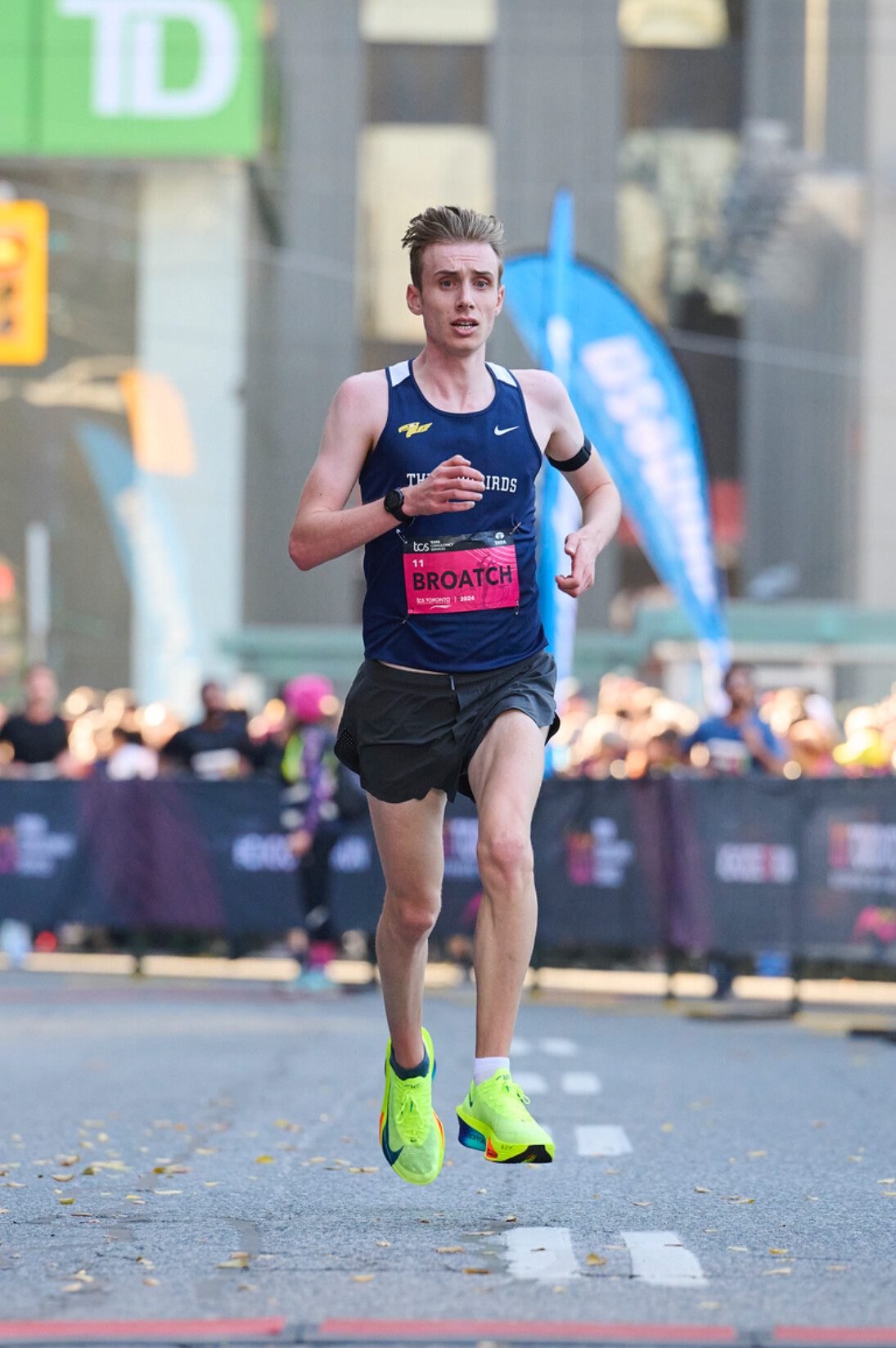
That goal looks within reach. Earlier this year, the University of British Columbia graduate ran a personal best of 2:10:35 at the Houston Marathon, nearly six minutes faster than his Toronto debut of 2:16:25.
“It is a pretty iconic barrier, and I definitely feel I am able to shave off a second per kilometre,” Broatch says with conviction. “It seems doable. I am planning to do a 10K one month out. If I run a time like what I ran in Ottawa, then it would give me a good indication I am ready to take a crack at sub-2:10.”
In May, he finished fifth at the Canadian 10K Championships in Ottawa, setting a new personal best of 28:56. His training has included shorter, 5K-pace intervals once a week, and despite his marathon buildup, he insists the heavy mileage hasn’t dulled his speed.
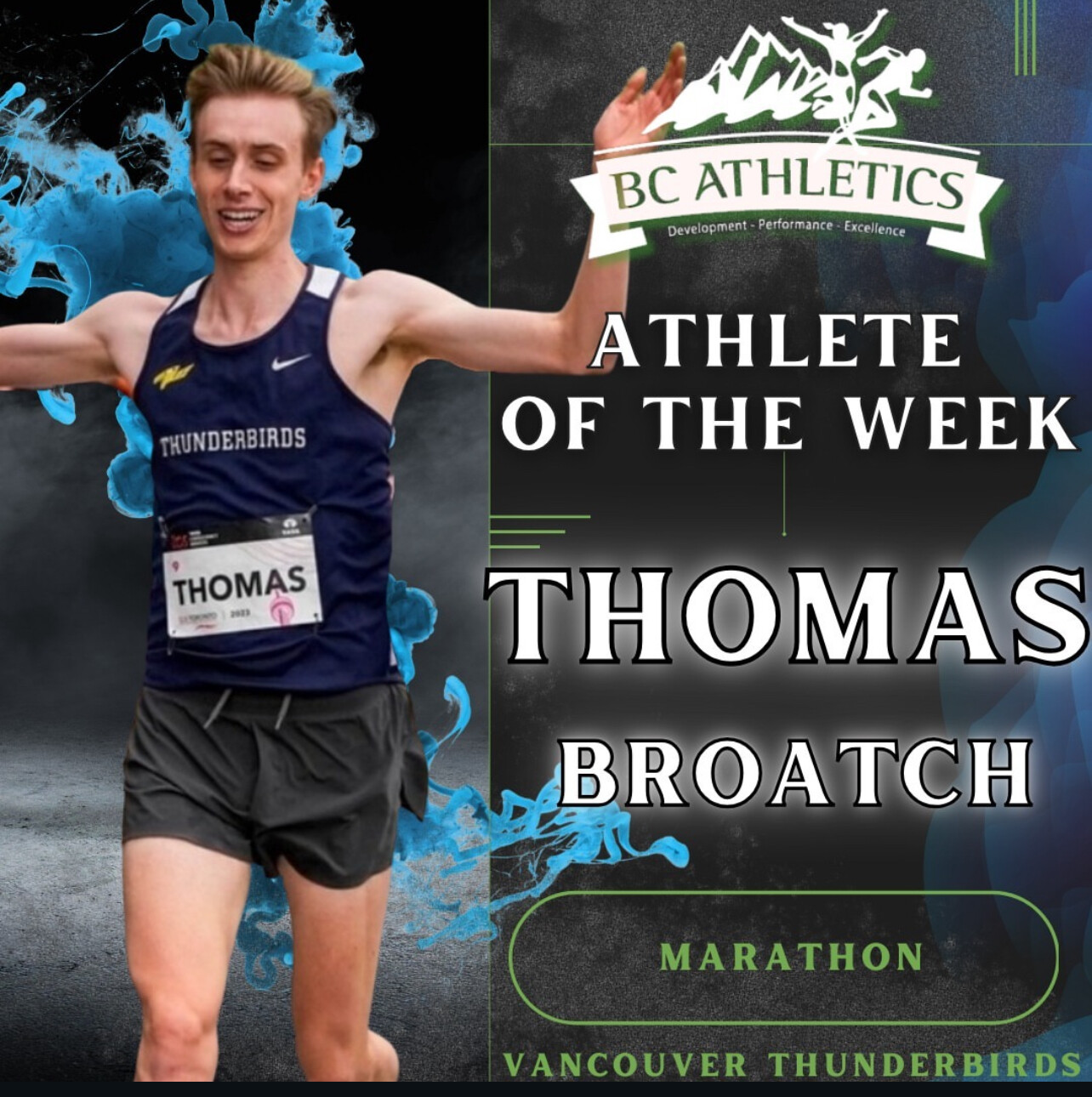
The lure of another Canadian championship medal also influenced his fall marathon choice. Once again, the TCS Toronto Waterfront Marathon serves as the official Canadian championships, in addition to being a World Athletics Elite Label race.
Broatch knows the domestic competition will be fierce. Two Canadian Olympians headline the field: Ben Flanagan, who recently ran 13:04.62 for 5,000m to qualify for Paris and owns a half marathon best of 61:00, and John Gay, a former UBC teammate who reached the 3,000m steeplechase final at the Tokyo Olympics.
“What they have done over the shorter distances is really impressive; much faster than I have run,” Broatch admits. “So, in some ways it’s a bit intimidating. But now that I’ve got a few marathons under my belt, I think it kind of balances out.”
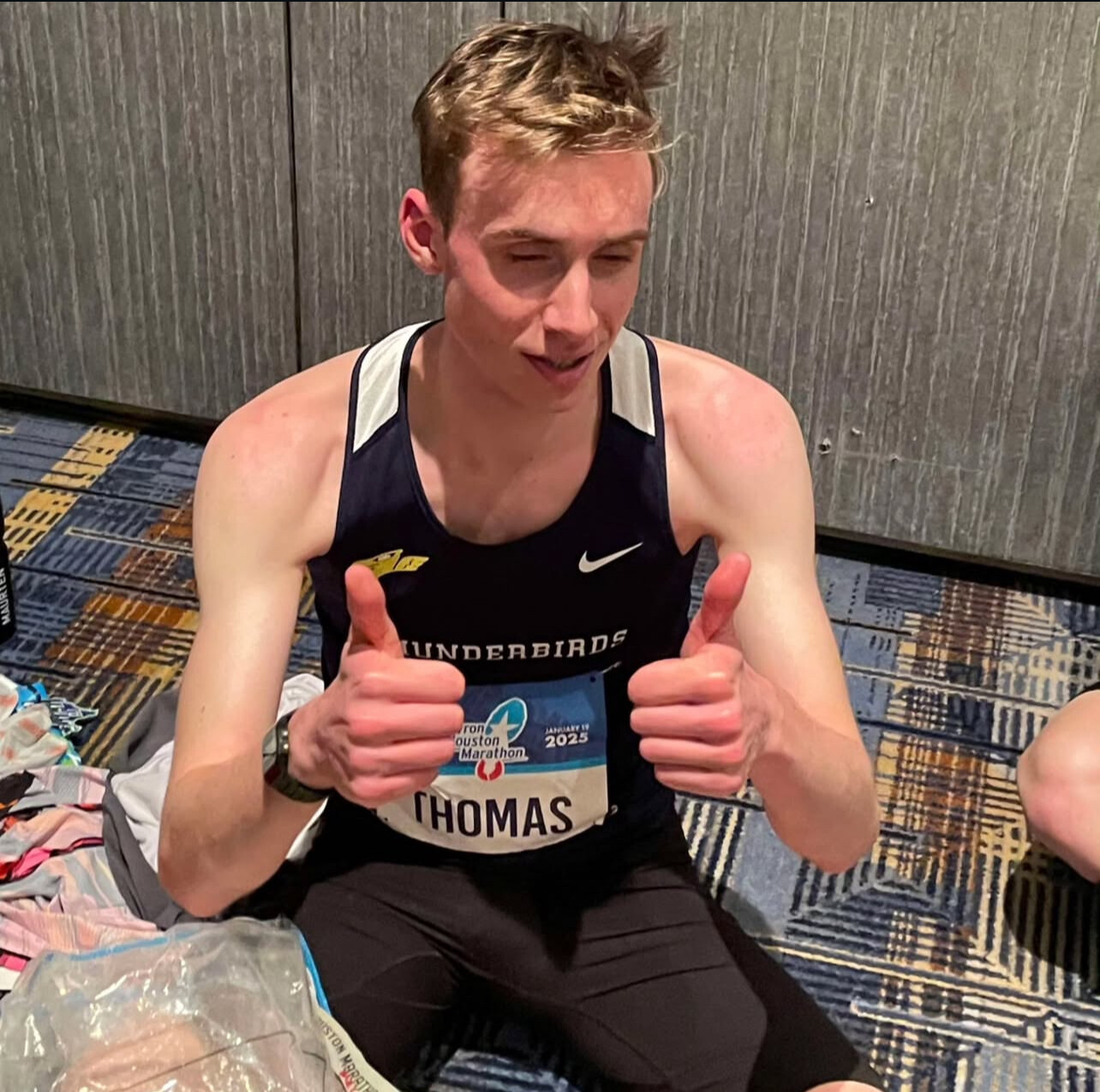
Balancing athletics with a professional career has also defined Broatch’s journey. He recently marked three years with Clir Renewables, a Vancouver-based renewable energy software company, where he works remotely. Despite racing athletes who focus exclusively on training, he remains unfazed.
“Not having the commute definitely helps,” he says. “I almost never run in the middle of the day—I always run before and after work. It’s a big commitment, but I think I have a pretty efficient schedule. I don’t do weights or anything else. I just run.”
His current training load has climbed to 200 kilometers per week. In July, he tested himself at the Gold Coast Marathon in Australia, running aggressively early before fading. The experience gave him valuable lessons as he recovered and built back toward Toronto.
Outside of running, Broatch enjoys reading—recently Liu Cixin’s The Wandering Earth—and visiting his local library for fresh issues of National Geographic. He also plays golf regularly, often with his coach Chris Johnson.
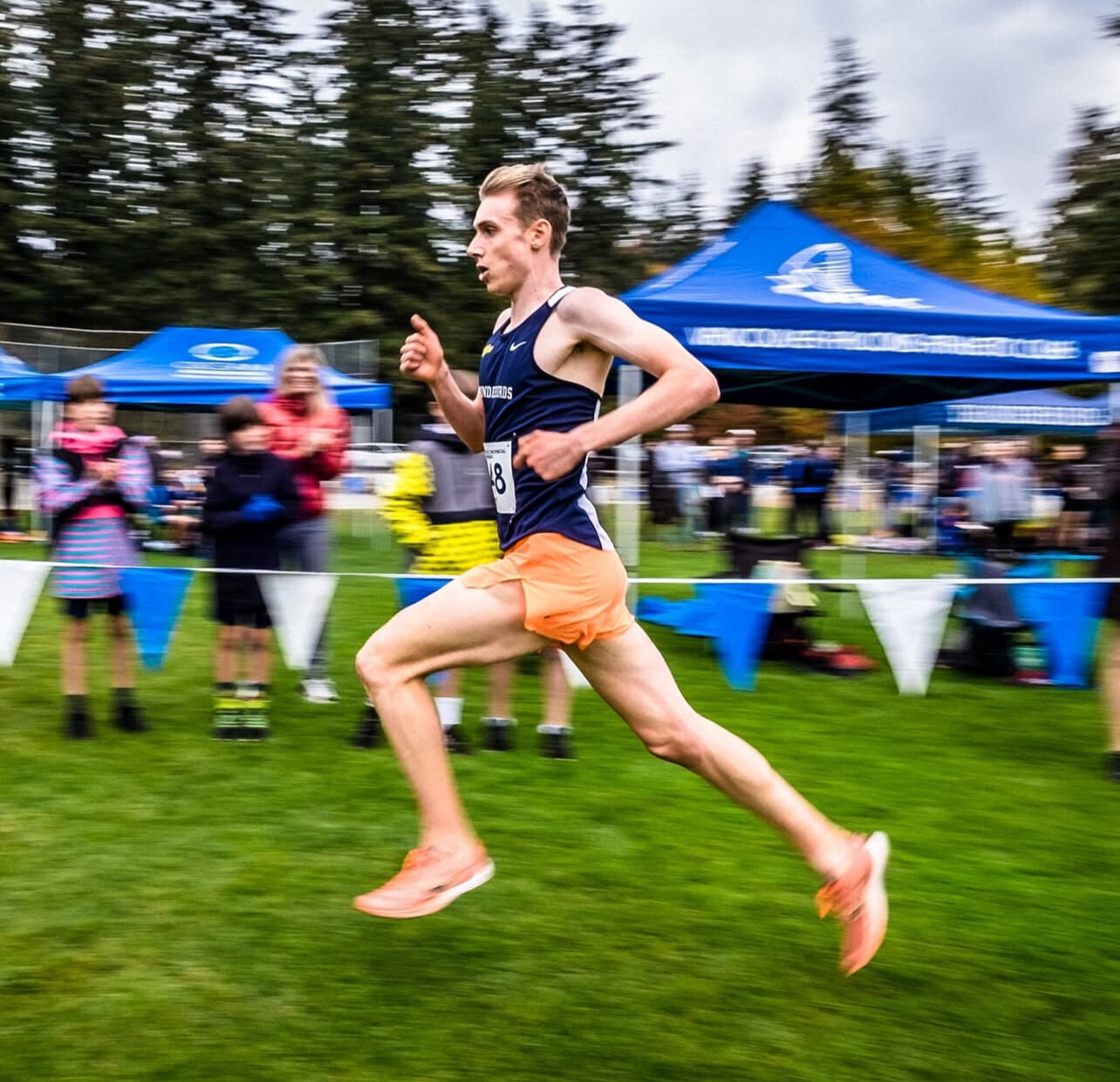
In a recent friendly match, he and a teammate lost to Johnson but still walked away feeling victorious. “We were considerable underdogs, but both of us had our best round ever,” he laughs. “It’s like running—you can lose but still come away with a good performance.”
With two clear objectives—another national championship podium and a sub-2:10 performance—Broatch is highly motivated. Against a strong domestic and international field, Toronto promises to be a pivotal race in his career.
by Paul Gains
Login to leave a comment
TCS Toronto Waterfront Marathon
The Scotiabank Toronto Waterfront Marathon, Half-Marathon & 5k Run / Walk is organized by Canada Running Series Inc., organizers of the Canada Running Series, "A selection of Canada's best runs!" Canada Running Series annually organizes eight events in Montreal, Toronto and Vancouver that vary in distance from the 5k to the marathon. The Scotiabank Toronto Waterfront Marathon and Half-Marathon are...
more...Joshua Cheptegei to Skip World Championships, All-In on Amsterdam Marathon
Joshua Cheptegei, one of the greatest distance runners of his generation, has officially confirmed he will not compete at the 2025 World Athletics Championships in Tokyo. Instead, the Ugandan superstar will focus exclusively on preparing for the 50th TCS Amsterdam Marathon, set for October 19, 2025.
This marks the first time since 2015 that Cheptegei will miss a World Championships—a clear signal that his transition from track to road is now complete.
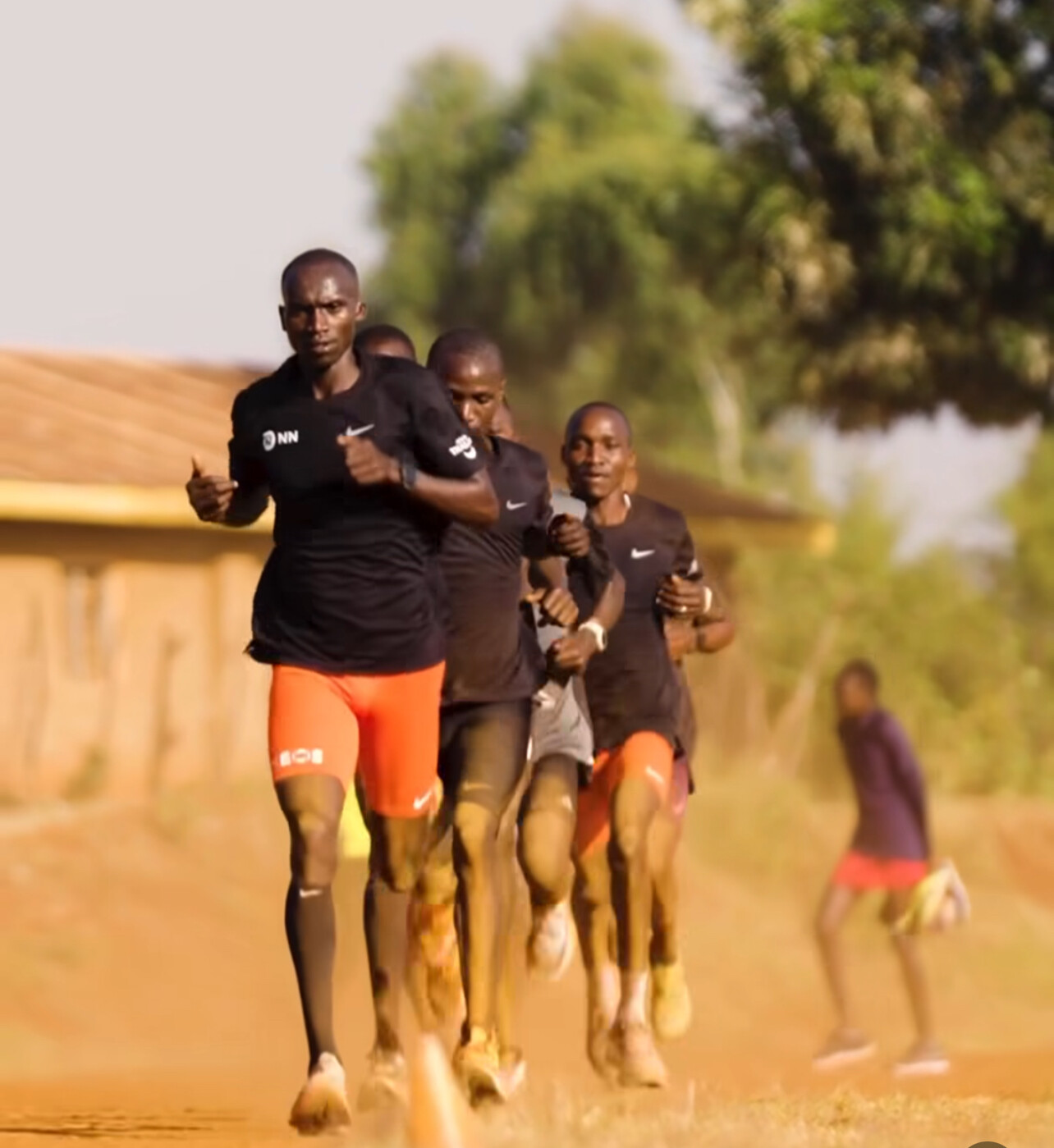
A Strategic Shift to the Marathon
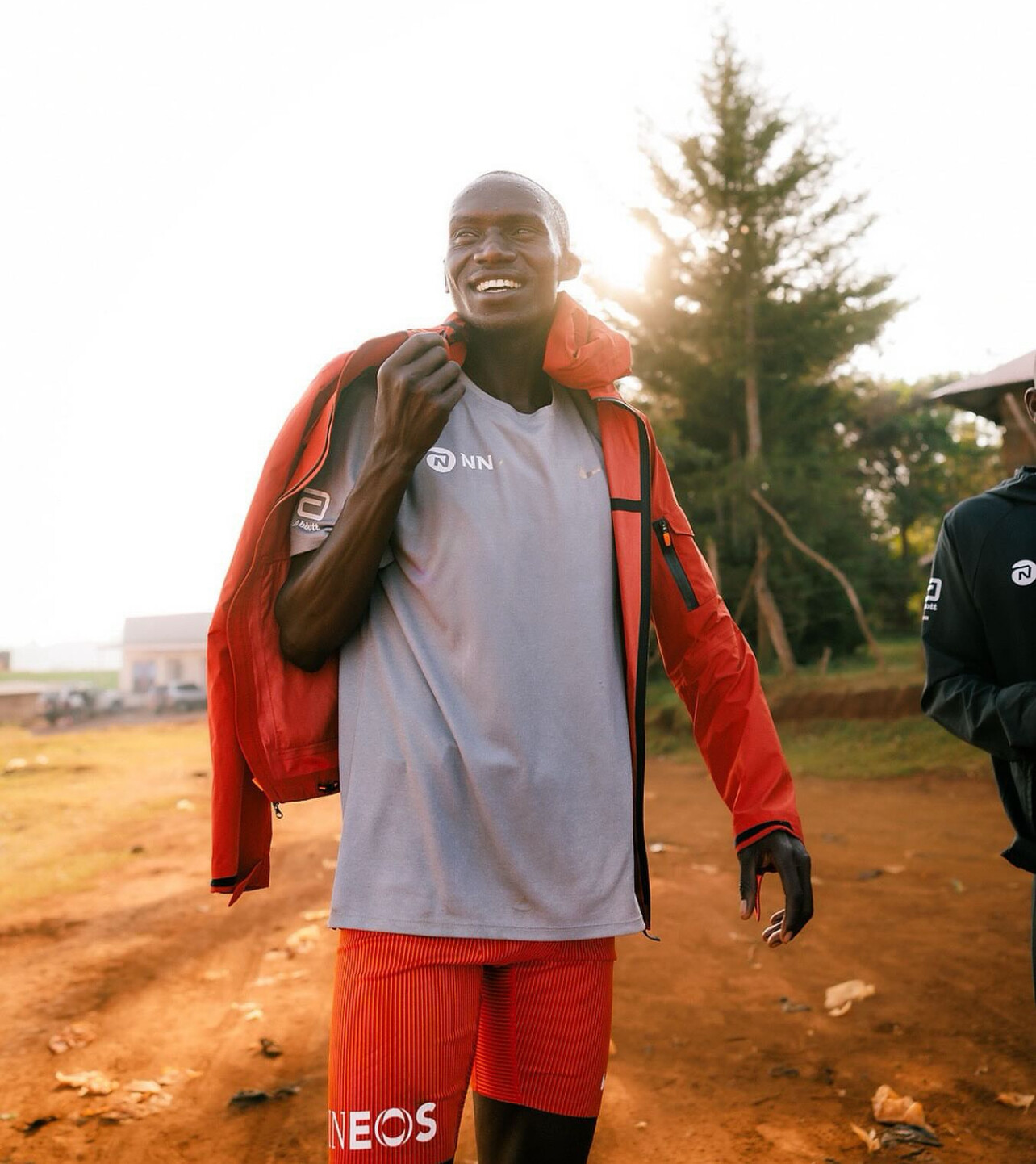
After winning gold in the 10,000m at the Tokyo Olympics and setting world records in both the 5,000m and 10,000m, Cheptegei is now dedicating himself to mastering the marathon distance.
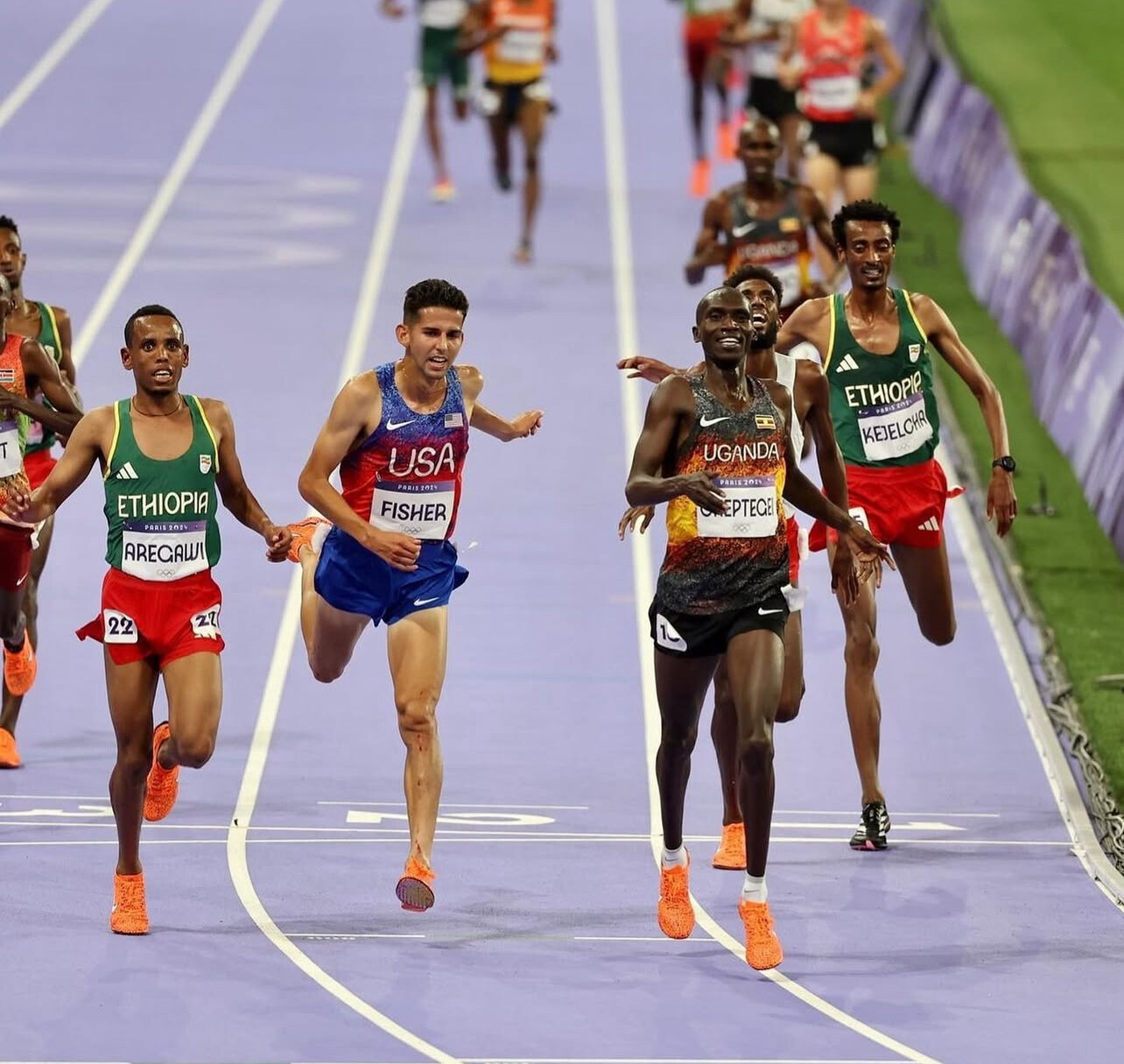
He made his marathon debut in Valencia (2023) with a 2:08:59, then followed up with an impressive 2:05:59 in Tokyo earlier this year. Those performances gave him the confidence to commit fully to the roads.
“I’m excited for this next chapter in my career,” Cheptegei told Ugandan media. “My full focus is now on the marathon. Amsterdam is the perfect opportunity to show what I’m capable of.”
Why He’s Skipping Worlds
The decision to sit out the 2025 World Championships, which will be held in Tokyo this September, comes down to two key factors:
1. Marathon Focus
Cheptegei has officially stepped away from the track to dedicate his training and energy toward long-term marathon success. The Amsterdam Marathon is his main priority this fall, and all preparations are centered around peaking on race day.
2. Tight Schedule & Recovery Demands
As part of his buildup, Cheptegei is scheduled to race the Antrim Coast Half Marathon on August 24, just three weeks before the World Championships. Running both would compromise his recovery and risk injury.
“We had to make a decision, and the priority is a strong marathon in Amsterdam,” said his coaching team.
Legacy on the Line
With the track chapter closed, Cheptegei is looking to solidify his status as a distance running legend on the roads. A strong performance in Amsterdam—especially against top names like Tamirat Tola—could place him firmly in the conversation among the world’s best marathoners.
His move is reminiscent of past greats like Kenenisa Bekele and Mo Farah, who also shifted focus to the marathon after dominating the track.
Amsterdam 50th Annual Marathon
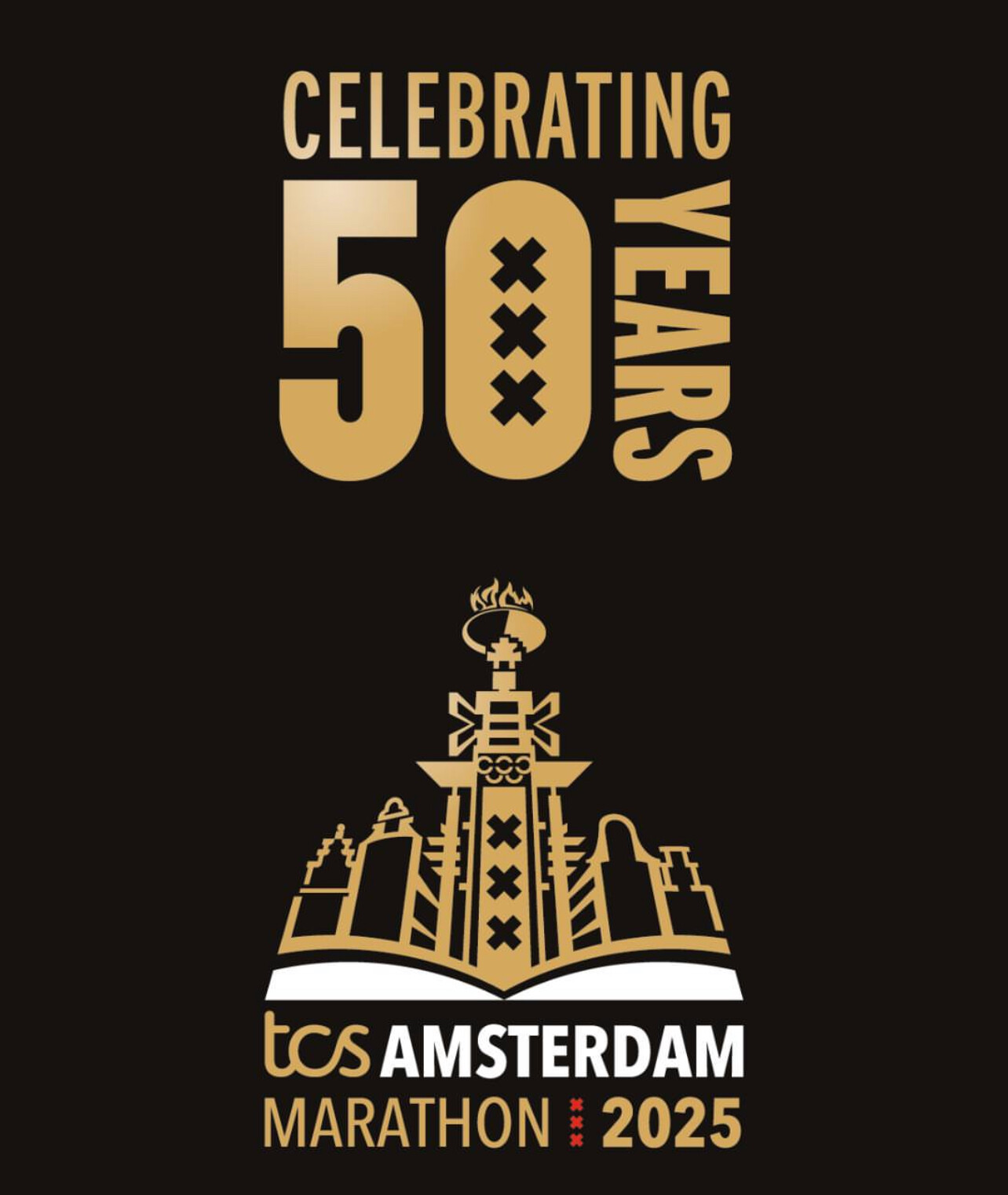
The 2025 edition of the Amsterdam Marathon marks the race’s 50th anniversary, making it one of the most anticipated events on the global road racing calendar. Known for its flat, fast course and scenic route through the historic streets and canals of Amsterdam, the race has become a favorite for elite athletes chasing personal bests and record times.
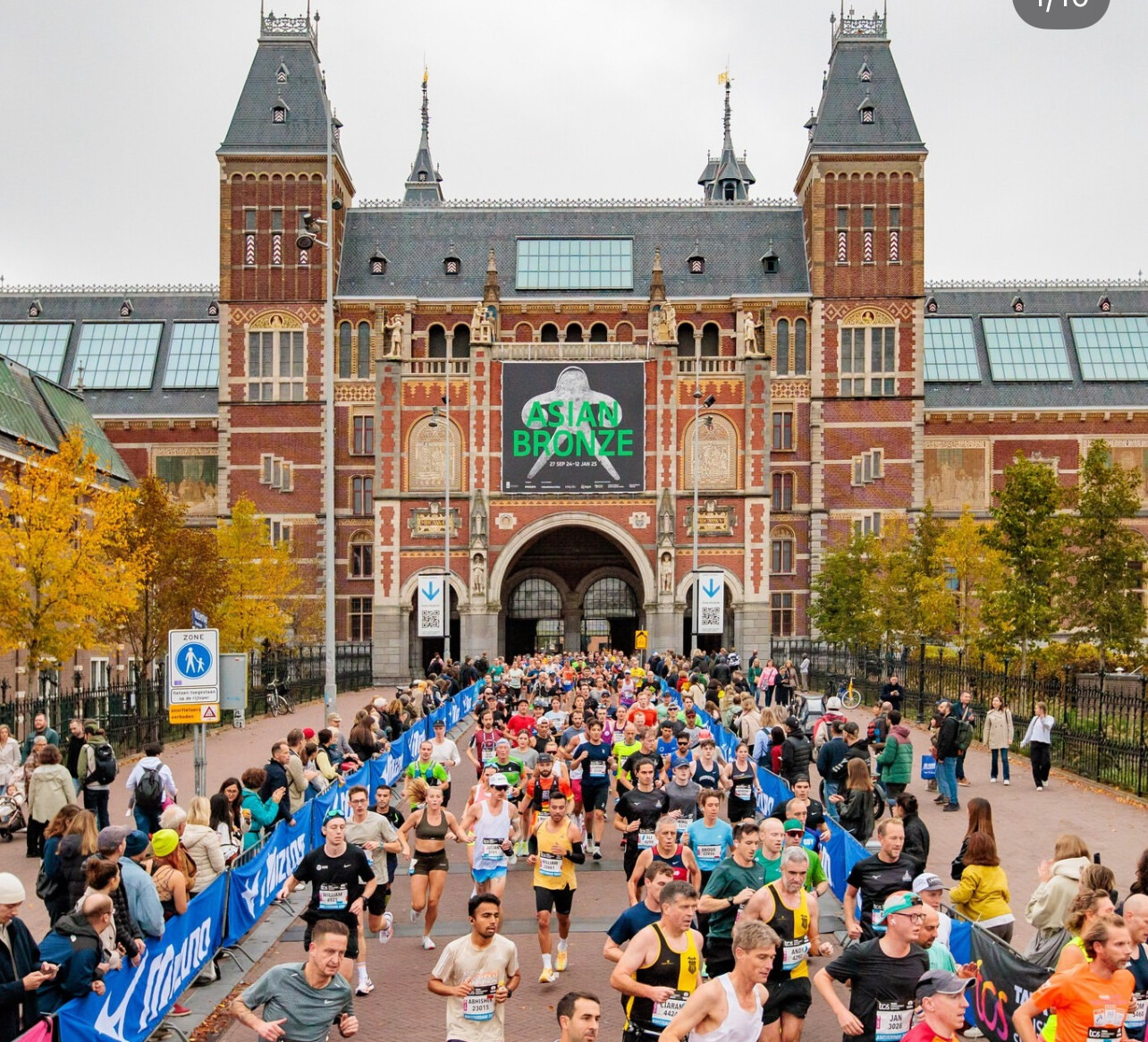
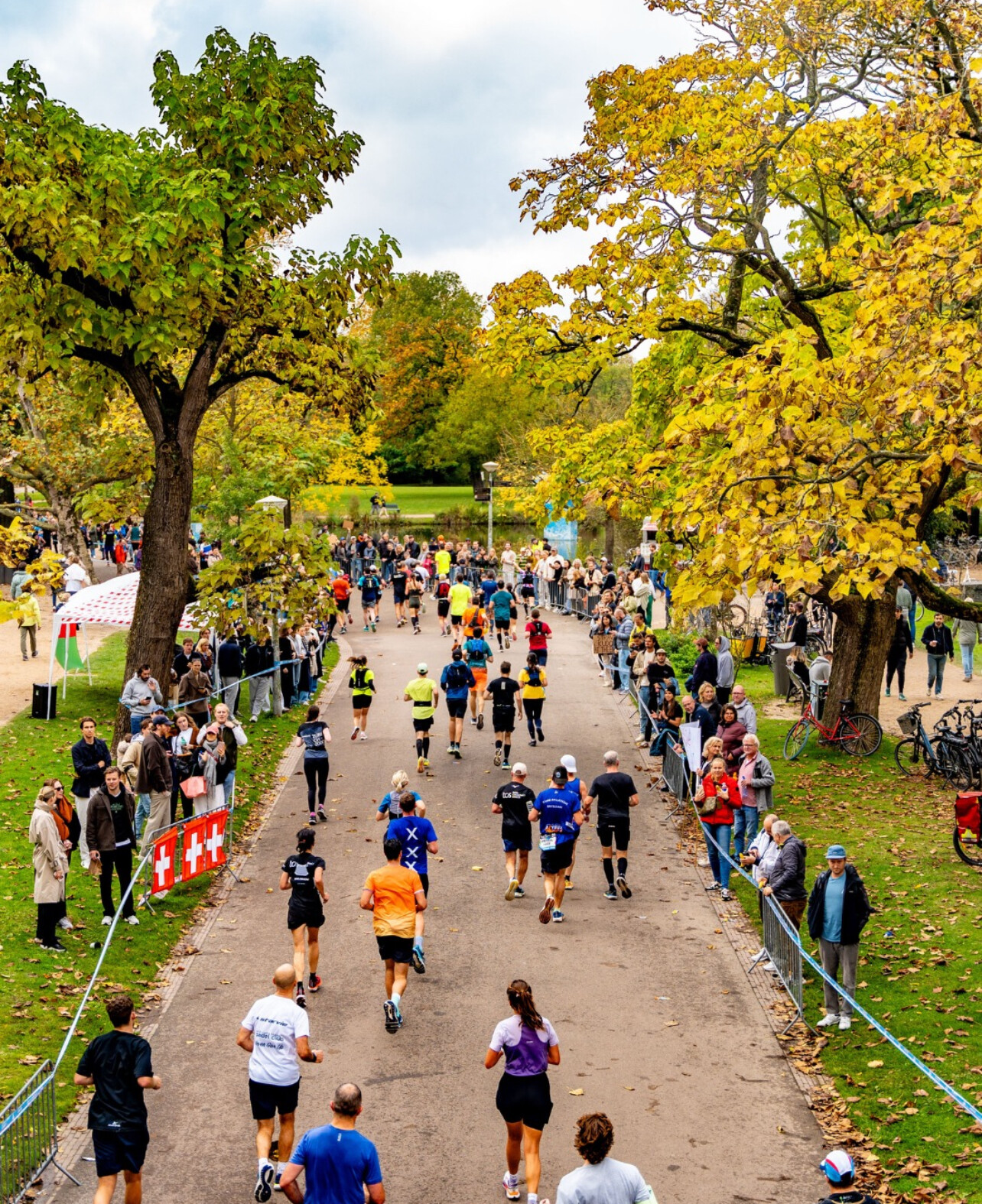
This year’s milestone edition is expected to draw a deep international field and heightened media attention, especially with stars like Joshua Cheptegei and Tamirat Tola headlining the men’s race. Organizers are planning special celebrations and tributes to the event’s rich history, ensuring the 2025 race is both competitive and commemorative.
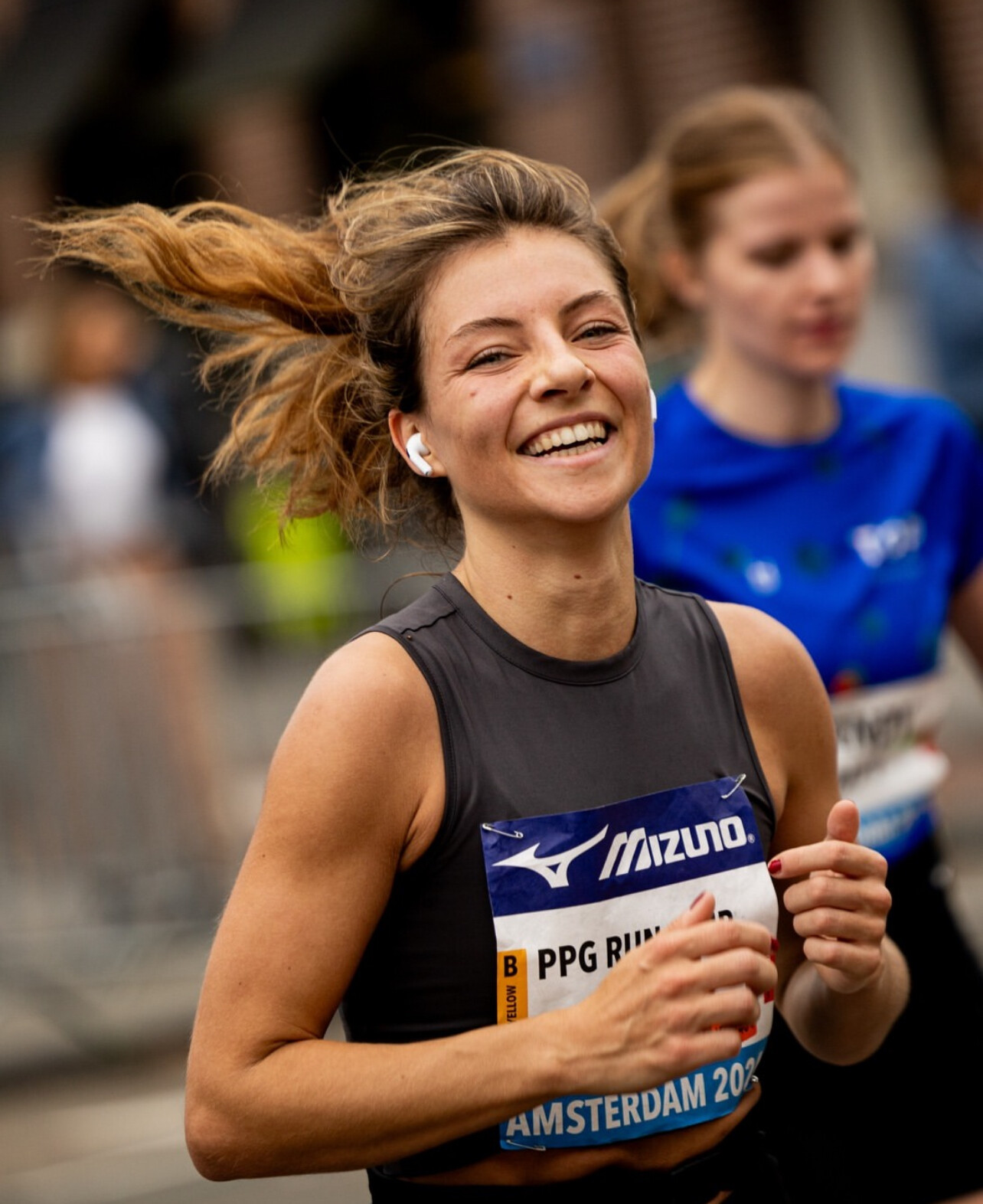
by Boris Baron
Login to leave a comment
TCS Amsterdam Marathon
Do you want to enjoy Amsterdam in October and all that the city has to offer you? Want to feel a real athlete and start and finish in the historic Olympic stadium? Or run across the widely discussed passage under the beautiful National Museum? Then come to Amsterdam for the annual TCS Amsterdam Marathon in October! The TCS Amsterdam Marathon...
more...Sifan Hassan Withdraws from London Diamond League 2025, Leaving a Void in the Distance Lineup
Alright, track and field fans—buckle up, because the London Diamond League 2025 is nearly here, and while anticipation is high, one major name has just dropped out, shaking up the event’s buzz.
The eleventh stop on this year’s Diamond League circuit, London has long been a fan-favorite meet. With global sprint star Noah Lyles set to light up the straightaway, Femke Bol ready to command the hurdles, and a stacked roster of middle-distance talent, expectations were sky-high. But one race—the women’s mile—was drawing extra attention for a reason: it was supposed to feature Sifan Hassan, one of the sport’s most versatile and dominant athletes.
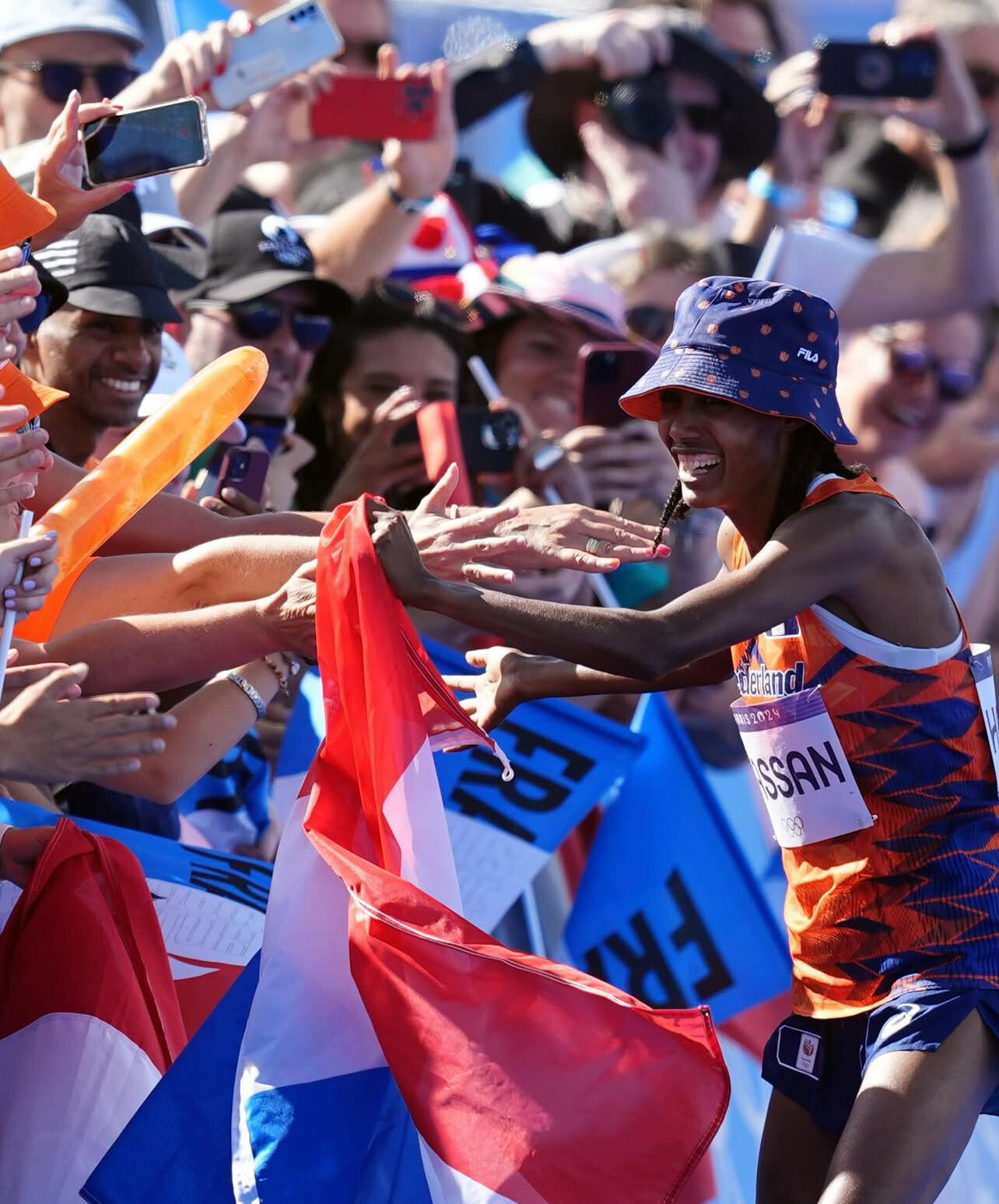
A Stunning Turn of Events
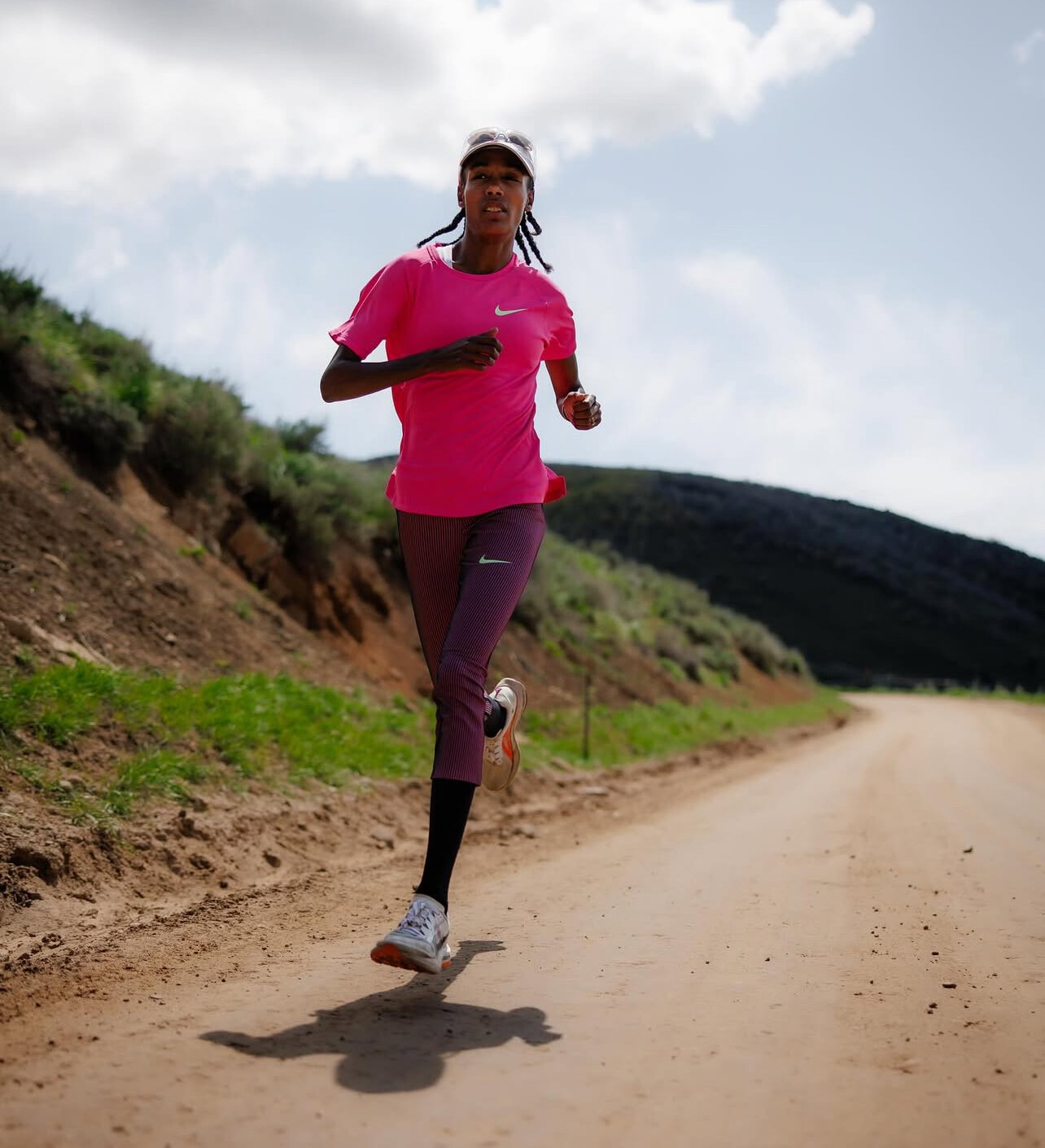
In a surprise Instagram post that landed just days before the event, the Olympic marathon championannounced her withdrawal. “I was really looking forward to racing at the @londonathleticsmeet,” Hassan wrote, “but I haven’t been feeling my best last week with my body not responding as well as I wanted. I love this meet and I feel really bad towards the organisers and my fans. But after talking with my team, we decided it’s smarter to skip it, stay focused and keep preparing for what’s next this season!”
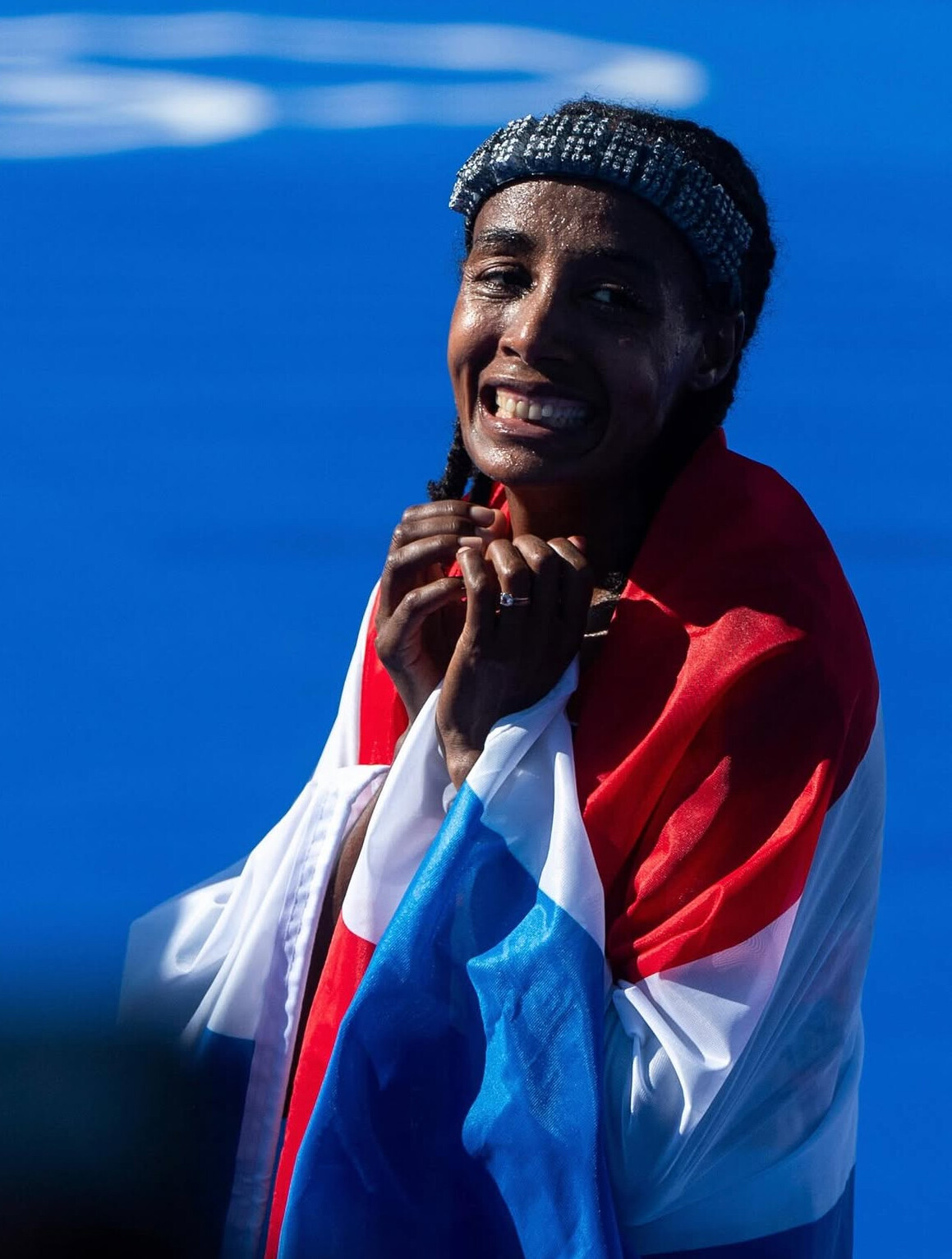
The words hit hard. Hassan’s disappointment was palpable—and shared by fans worldwide.
A Legend in Her Prime
Hassan is no ordinary athlete. The Dutch superstar is known for doing the impossible—winning gold in the 5,000m and 10,000m and bronze in the 1,500m at the 2020 Tokyo Olympics, and later making headlines with her 2:13:44 marathon win in Chicago in 2023. She returned to the London Marathon earlier this year, building momentum that had fans itching to see her take to the track again.
Her absence from London robs the meet of a major draw, especially in the women’s mile, which was set to be one of the headline events of the weekend.
What Happens Now?
With Hassan out, the field remains strong—but no doubt the spotlight dims just a bit. The question becomes: Who will rise in her absence? Can the other middle-distance stars deliver a race worthy of her legacy? Will new names break through and capitalize on the opportunity?
The London Diamond League still promises firepower across multiple events, with top-tier battles lined up in the sprints, hurdles, and field events. But there’s no denying that the loss of one of track’s most beloved icons changes the emotional tone of the weekend.
Still, Hassan’s decision serves as a reminder: even the best need to listen to their bodies. And with her eyes still firmly set on the remainder of the season—and perhaps another Olympic run—fans will be watching and waiting for her next move.
Stay with My Best Runs for complete coverage of the London Diamond League and all the latest from the global distance running scene.
by Boris Baron
Login to leave a comment
Billy Mills Turns 87 — A Running Legend Reflects on a Life of Purpose and Legacy
With wife Patricia by his side, the Olympic icon continues to inspire generations
On June 30, 2025, the legendary Billy Mills celebrated his 87th birthday, marking another chapter in a life defined by resilience, achievement, and unwavering purpose. His wife Patricia Mills, who has been his rock and closest partner for decades, shared a heartfelt message on social media:
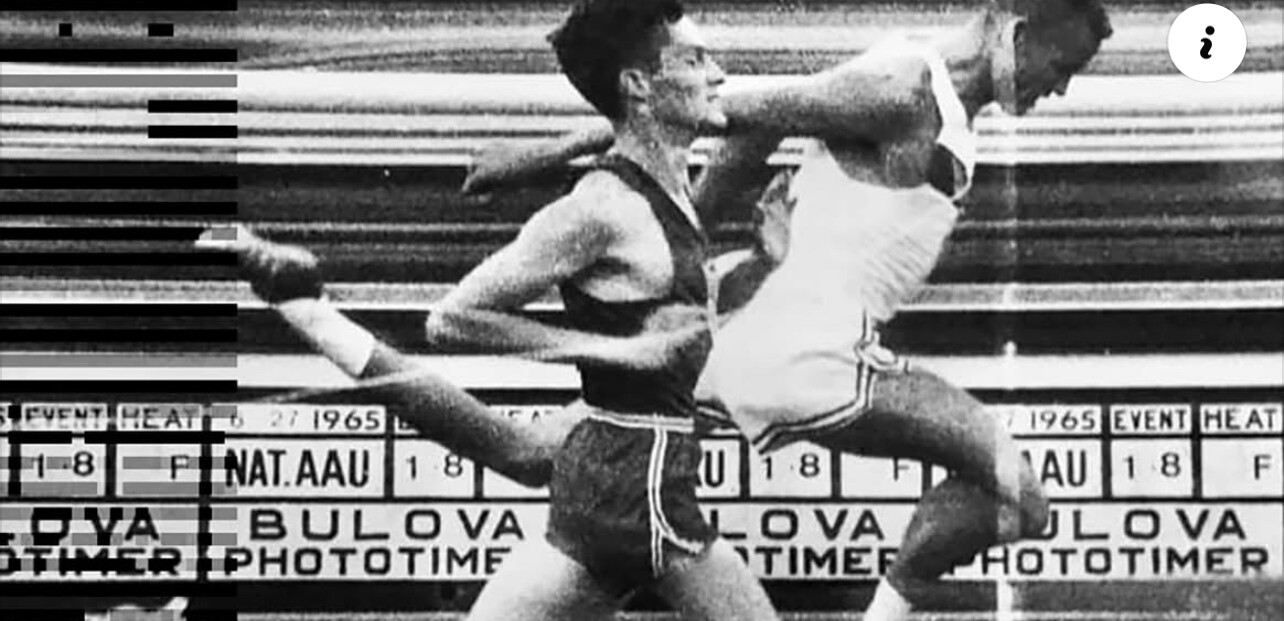
“Happy Birthday to Billy! What a journey he has had! 87 years! Thank you all for his birthday wishes.”
For the running world, Billy Mills remains one of the most powerful figures in the sport’s history. His astonishing gold medal victory in the 10,000 meters at the 1964 Tokyo Olympics is still considered one of the greatest upsets in Olympic track history. Mills, a member of the Oglala Lakota Nation, was a virtually unknown underdog when he surged past world record holders in the final stretch to win in 28:24.4—setting an Olympic record and becoming the only American man ever to win Olympic gold in the 10,000 meters.
But Mills’ legacy extends far beyond the track.
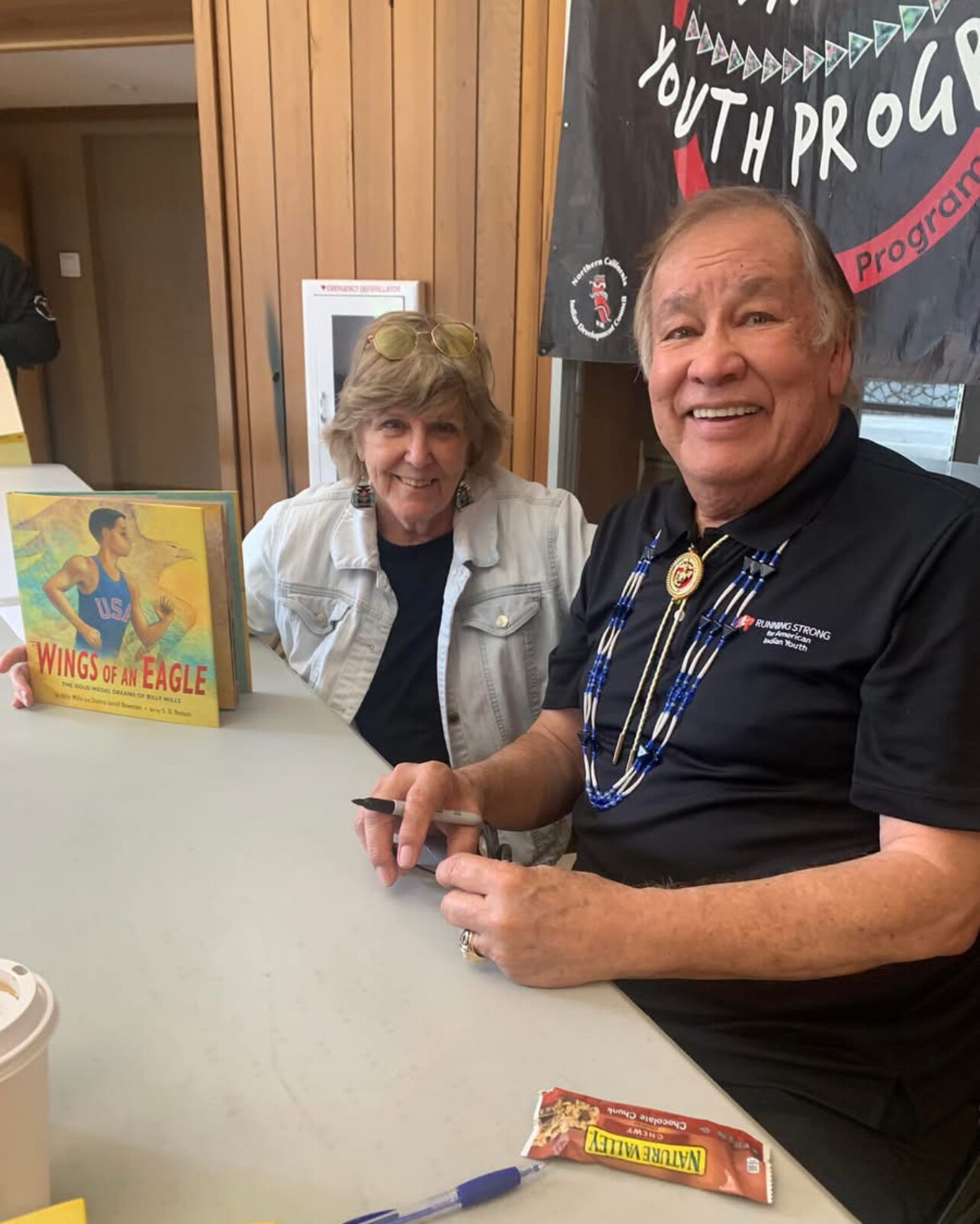
He has spent his post-competitive life as a motivational speaker, author, and advocate for Native American youth, co-founding Running Strong for American Indian Youth, an organization that supports wellness, education, and cultural preservation across the U.S.
Now at 87, Billy remains a symbol of what is possible when belief, determination, and heart align. His story has inspired generations of runners—elite and recreational alike—to push beyond what seems possible.
Still Leading in so many different ways
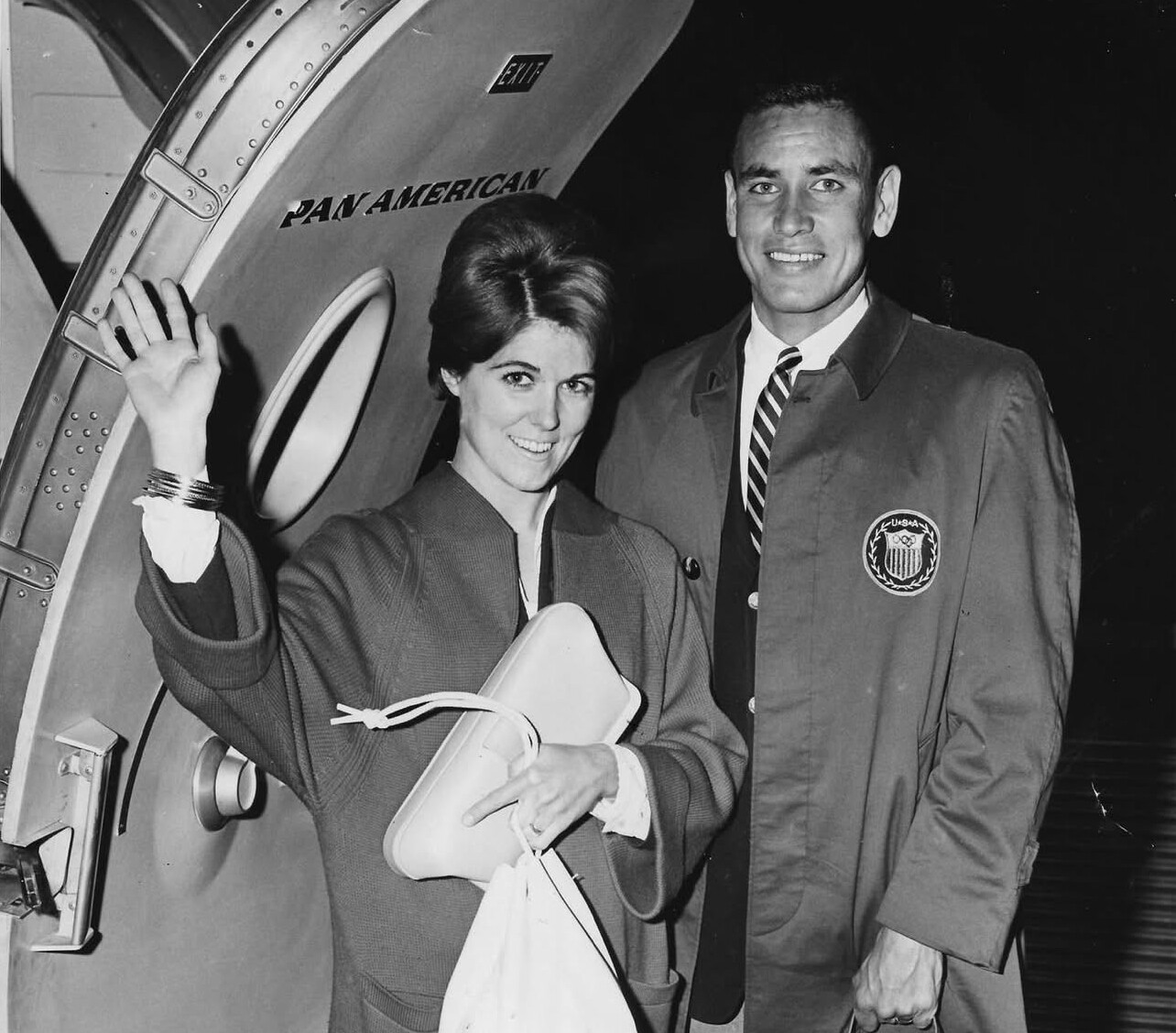
Whether through his speeches, interviews, or presence at events, Mills continues to uplift others. He and Patricia, married since 1962, have navigated decades of change together, and her love and support have always been central to Billy’s journey.
From the Olympic podium to today, Billy Mills exemplifies the spirit of the running community: perseverance, humility, and using one’s platform to make the world better.
Happy Birthday, Billy. Your stride still echoes.
by Boris Baron
Login to leave a comment
Kip Keino Sparked a Running Revolution in Kenya
When Kipchoge “Kip” Keino lined up for the 1500 meters at the 1968 Olympic Games in Mexico City, few could have predicted the historic ripple effect his victory would unleash. But when he crossed the line in 3:34.91—a new Olympic record—Keino did more than win gold. He ignited a revolution that would forever change the face of distance running.
Born on January 17, 1940, in Kipsamo, Kenya, Kip Keino didn’t grow up with elite training facilities or professional coaches. He ran barefoot to school, often covering several miles a day across the highlands of the Rift Valley. His athletic gifts and work ethic set him apart early, but it wasn’t until the mid-1960s that he began competing internationally.
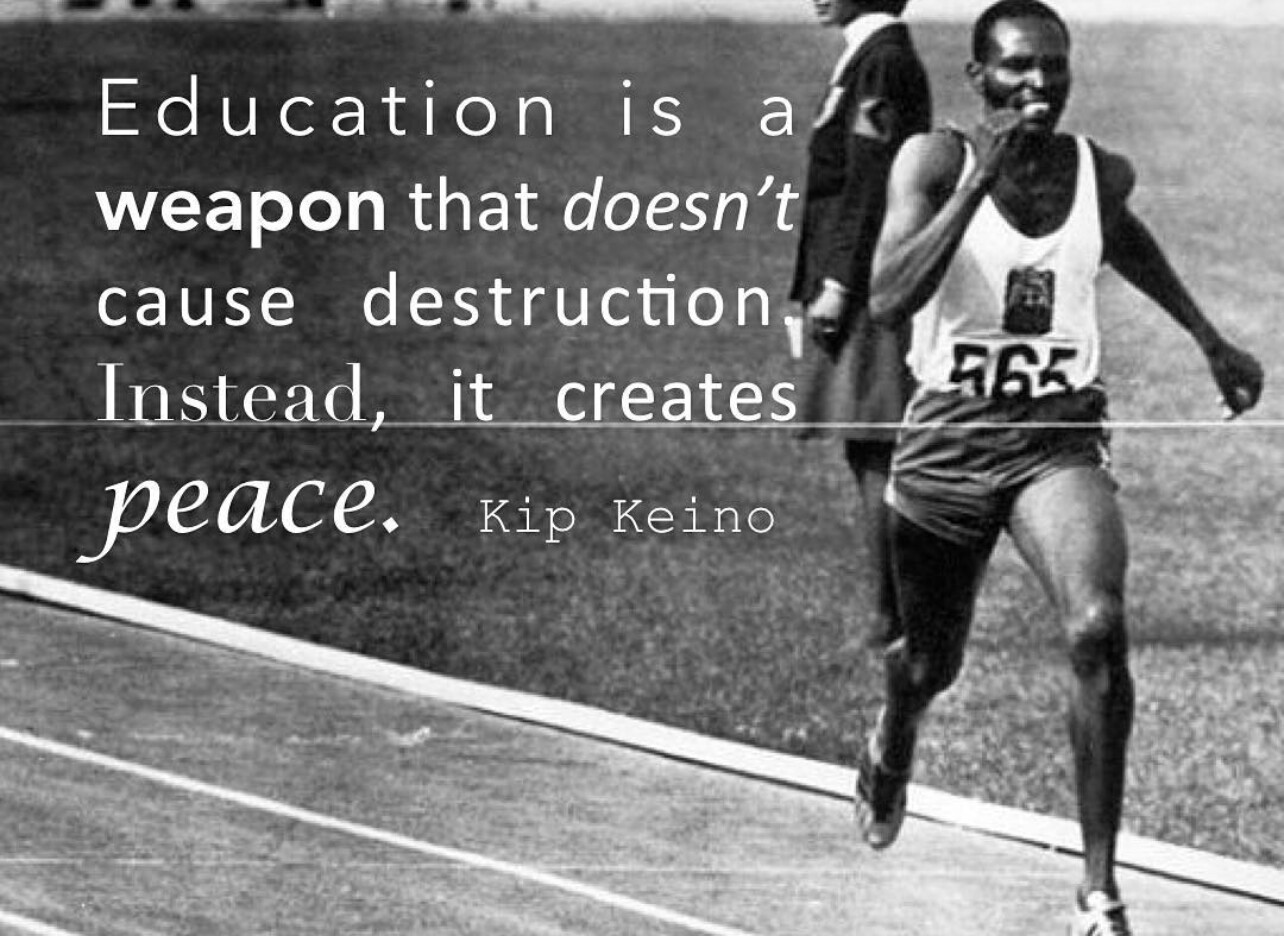
At the 1964 Tokyo Olympics, Keino finished a respectable fifth in the 5000m. But it was four years later in Mexico City—at altitude—that his legend was born. In one of the most iconic Olympic moments, he defied a painful gallbladder infection and a last-minute rush to the stadium to win gold in the 1500m and silver in the 5000m. His triumph was not just personal—it was symbolic. Kenya, and indeed all of Africa, had arrived on the global distance running stage.
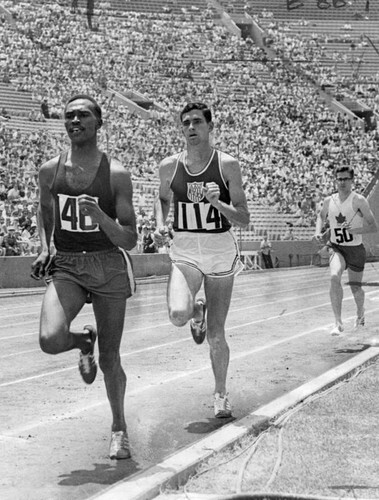
Kip Keino’s career personal bests include:
• 1500 meters: 3:34.91 (1968 Olympic gold medal)
• Mile: 3:54.2 (1965, a world record at the time)
• 5000 meters: 13:24.2
• 3000 meters steeplechase: 8:23.6
“Kip Keino showed the world that Kenyans could not only compete, but win—and do so with grace, humility, and heart,” says Bob Anderson, lifetime runner, founder of My Best Runs, and Director/Owner of the Kenyan Athletics Training Academy (KATA), which operates in both Thika, Kenya, and Monforte da Beira, Portugal. “He laid the foundation for what has become the most dominant force in distance running today. We train the Kenyan way at both of our locations, following in Kip Keino’s footsteps.”
Following his victories, Keino became a national hero. But instead of fading into the spotlight, he turned to mentorship, helping to guide the next generation of Kenyan athletes. He was instrumental in shaping the careers of countless stars, including Henry Rono, Paul Tergat, and Ezekiel Kemboi. He also founded schools, an orphanage, and the Kip Keino High Performance Training Centre in Eldoret, promoting education and sport side by side.
Now 85 years old, Kip Keino continues to be active in athletics and public service. A former chairman of Kenya’s Olympic Committee, he has remained a respected elder statesman of sport and a vocal advocate for youth empowerment through athletics. He resides on a farm in Eldoret, Kenya, where he oversees charitable organizations for orphans and continues to inspire the next generation of Kenyan runners—not just through words, but through action.
Today, when Kenya is mentioned in the same breath as elite distance running, it all traces back to Kip Keino. His influence is felt in every marathon start line, every training camp in the Rift Valley, and every young athlete who dares to dream of greatness.
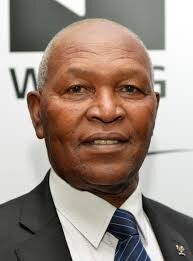
More than 50 years after that golden night in Mexico City, Keino’s legacy is alive and well—not just in the record books, but in the hearts of every Kenyan runner who followed in his footsteps.
by Boris Baron
Login to leave a comment
NN Marathon Rotterdam 2025: Elite Field, Course Details, and Event Highlights
The 44th edition of the NN Marathon Rotterdam is set for Sunday, April 13, 2025, in Rotterdam, Netherlands. Renowned for its flat and fast course, the event attracts elite runners and enthusiasts aiming for personal bests.
Elite Field
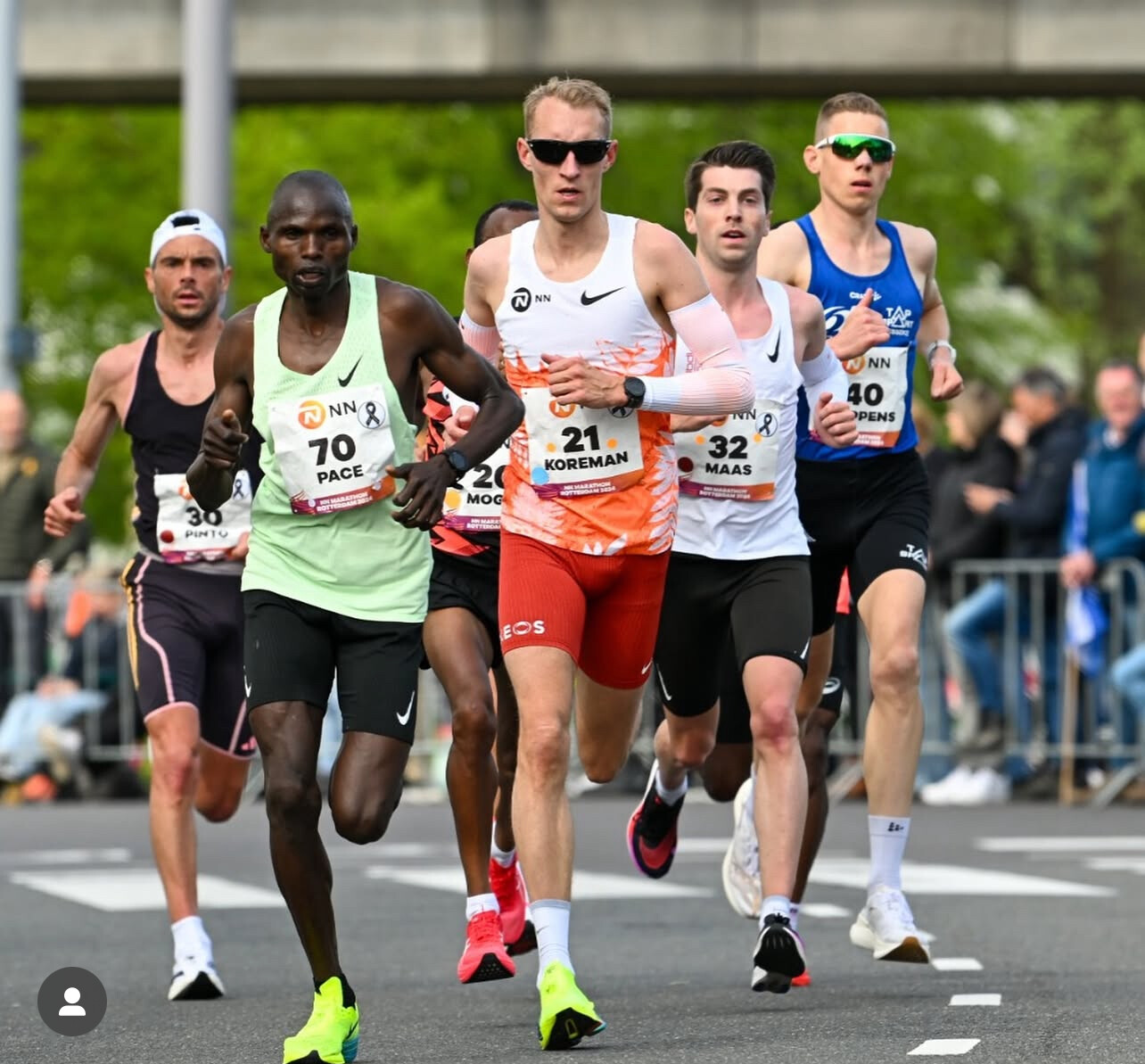
As of April 6, 2025, the official list of elite participants has not been fully disclosed. However, notable athletes are expected to compete:
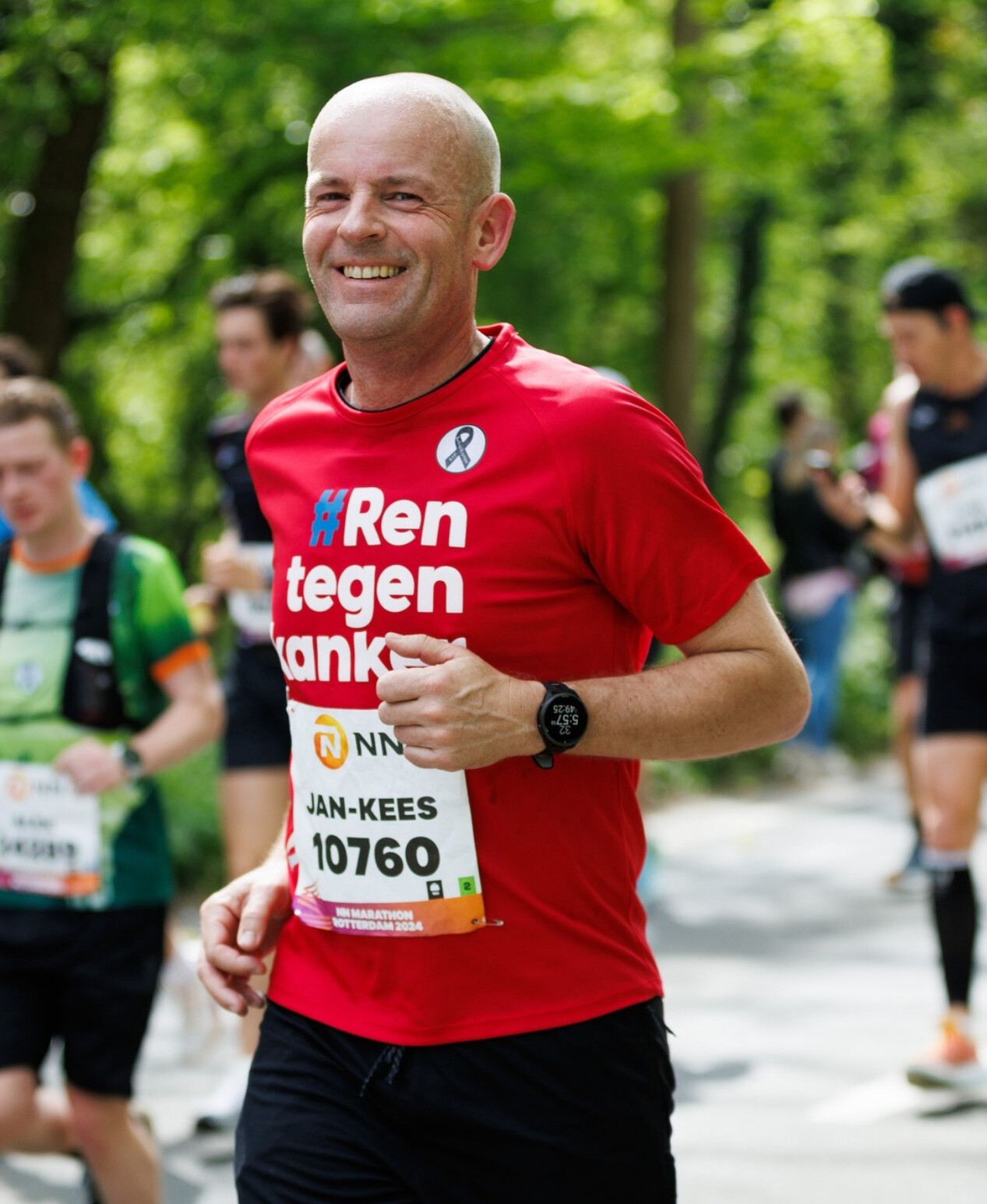
• Abdi Nageeye (Netherlands): The Dutch record holder and 2022 Rotterdam champion aims to reclaim his title and improve upon his personal best of 2:04:45, set in 2024.
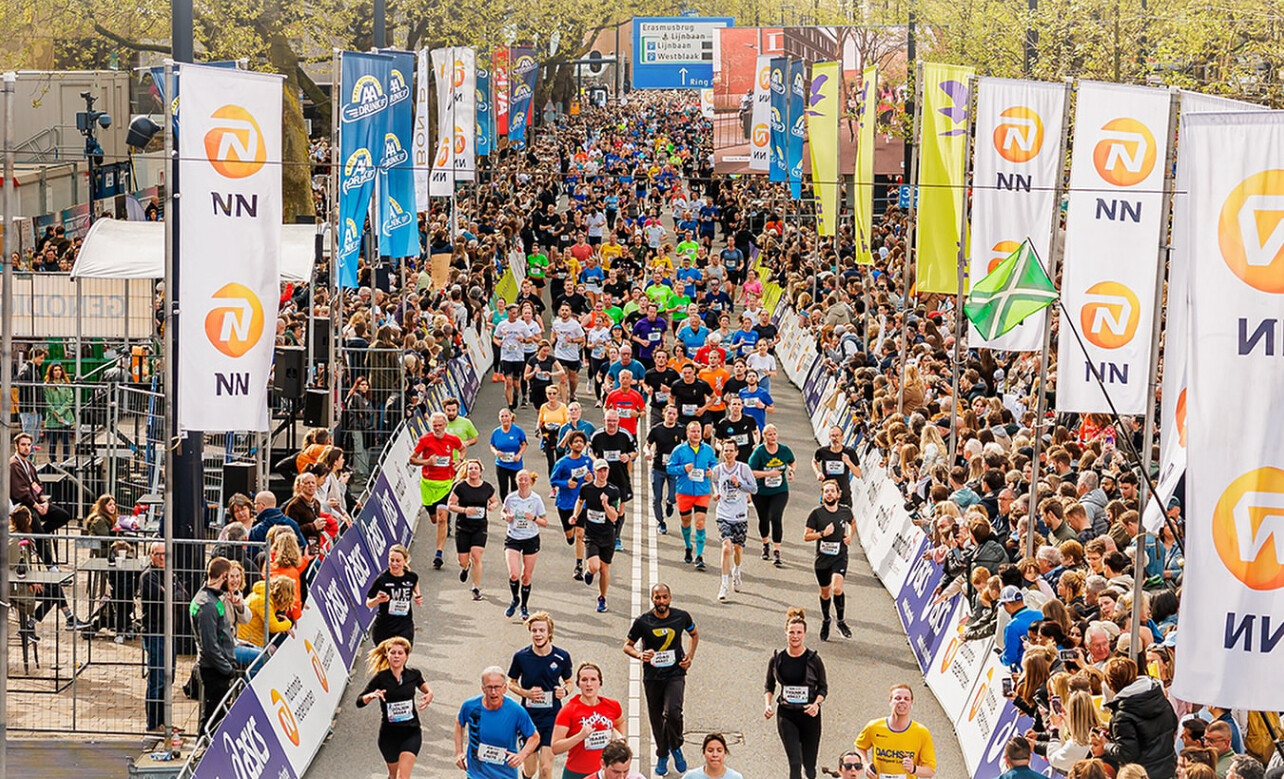
• Bashir Abdi (Belgium): The Tokyo Olympics bronze medalist and Rotterdam course record-holder (2:03:36) is anticipated to return, seeking to defend his record.
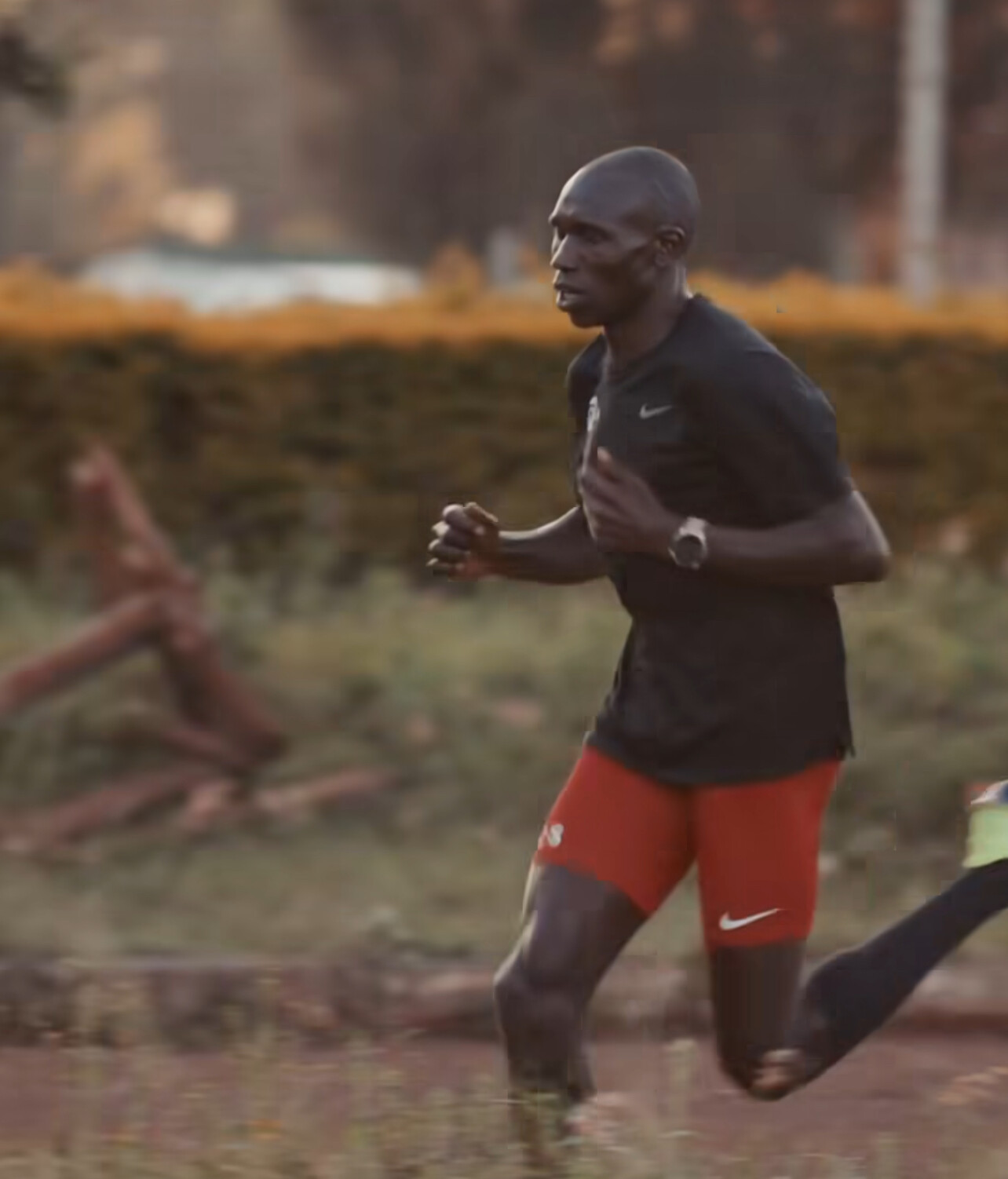
Course Overview
The NN Marathon Rotterdam is celebrated for its flat and fast course, making it one of the premier marathons globally. The race begins at the foot of the iconic Erasmus Bridge, leading runners through the city’s diverse neighborhoods and past notable landmarks such as Feijenoord Stadium and Ahoy. In the final kilometers, participants loop around the Kralingse Plas, passing Rotterdam icons like the Cube Houses and the Markthal, before finishing on the renowned Coolsingel.
Course Records
The current course records are:
• Men’s Record: 2:03:36, set by Bashir Abdi in 2021.
• Women’s Record: 2:18:58, set by Tiki Gelana in 2012.
Event Schedule
• Saturday, April 12, 2025:
• The Marathon Rotterdam Walk: Distances of 5K, 10K, and 15K.
• NN Kids Runs: 1K and 2.5K races for young runners.
• Sunday, April 13, 2025:
• NN Marathon Rotterdam: The main event featuring elite and amateur runners.
• The Last of Us 1/4 Marathon Rotterdam: A 10.55K race, newly titled through a partnership with the HBO series “The Last of Us.”
Recent Developments
• Sponsorships: Zalando has been announced as the official fashion and sports retailer, and Voltaren Emulgel joins as an official partner, offering muscle and joint care support.
• Registration: All 17,000 spots for the marathon distance sold out rapidly. Organizers aimed to expand to 30,000 participants but couldn’t achieve this for 2025. An official resale platform is available for secure transfer of entries.
Spectator Information
Due to anticipated road closures and increased traffic, spectators should plan their visit in advance. Details on optimal viewing spots and transportation are available on the official marathon website.
Login to leave a comment
NN Rotterdam Marathon
The marathon has been the biggest one-day sporting event in the Netherlands for many years in a row with over 35000 athletes professionals inclusive. The world's top athletes will at the start on the bustling coolsingel, alongside thousands of other runners who will also triumph,each in their own way.The marathon weekend is a wonderful blend of top sport and festival. ...
more...Amanal Petros - From Refugee to Record-Breaker, Eyes Set on London Marathon Glory
German marathon record-holder Amanal Petros is preparing for a significant milestone in his athletic career as he sets his sights on the 2025 London Marathon, scheduled for April 27, 2025. This event will mark his inaugural participation in the London Marathon, where he will compete alongside an elite field featuring renowned athletes such as Eliud Kipchoge and Kenenisa Bekele. Petros’s personal best of 2:04:58, achieved at the 2023 Berlin Marathon, positions him as a formidable contender in this prestigious race.
A Journey of Resilience and Achievement
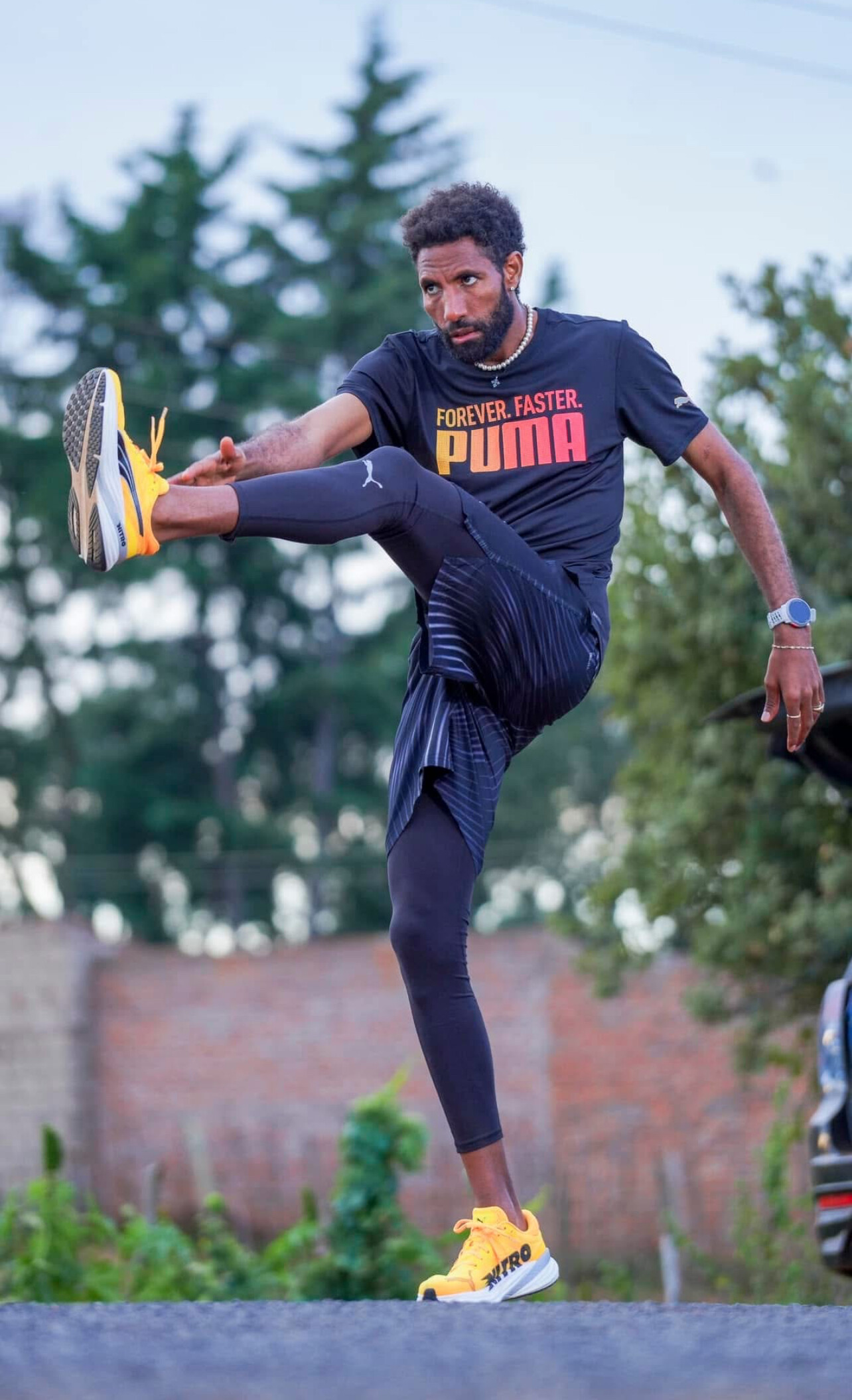
Born on May 17, 1995, in Assab, Eritrea, Petros’s early life was marked by adversity. At the age of two, his family fled the Eritrean-Ethiopian conflict, seeking refuge in Ethiopia. In 2012, as a teenager, Petros embarked on a journey to Germany, where he sought asylum and eventually acquired citizenship in 2015. It was in Germany that he discovered his passion and talent for long-distance running, setting the stage for a series of remarkable achievements.
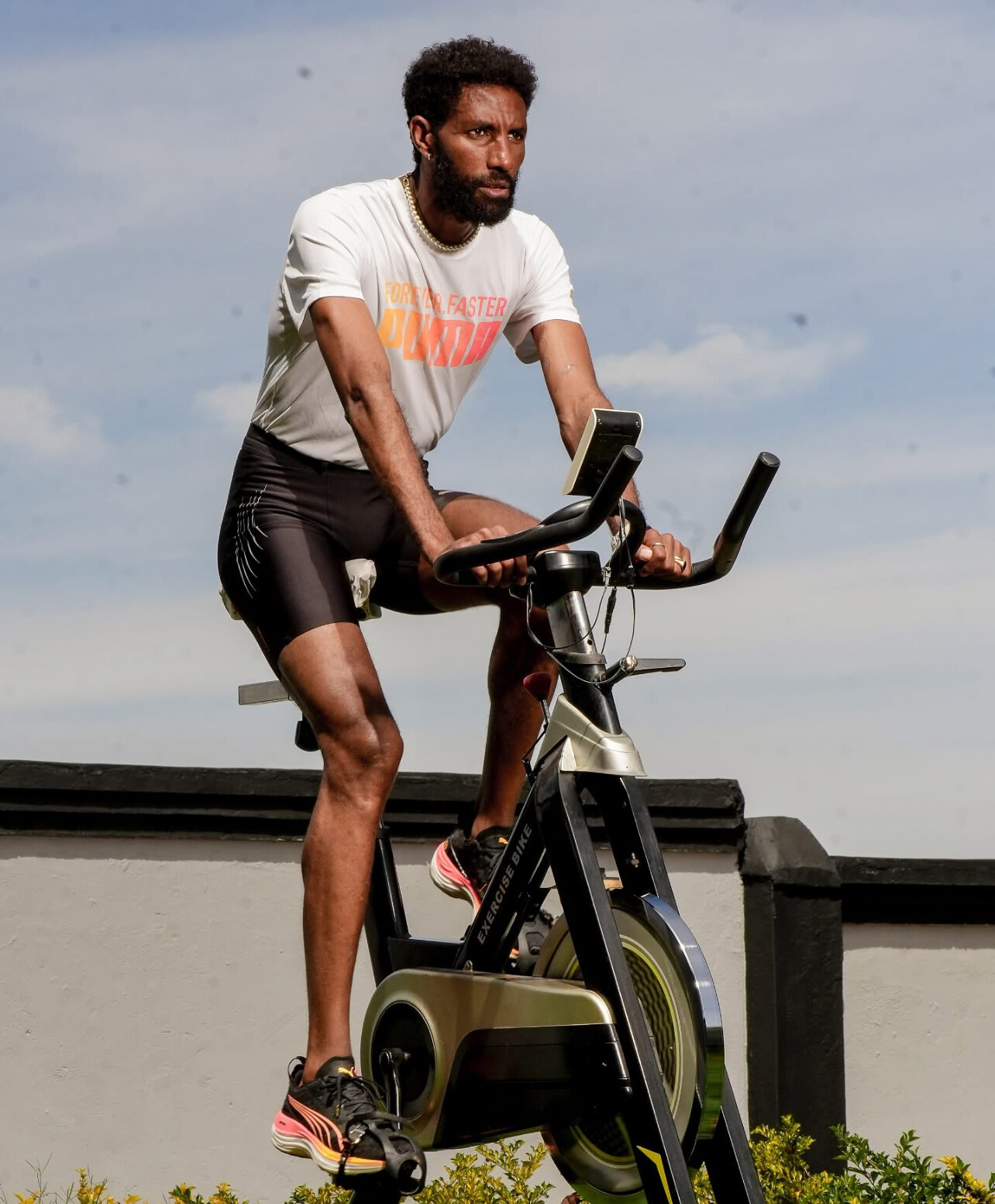
Record-Breaking Performances
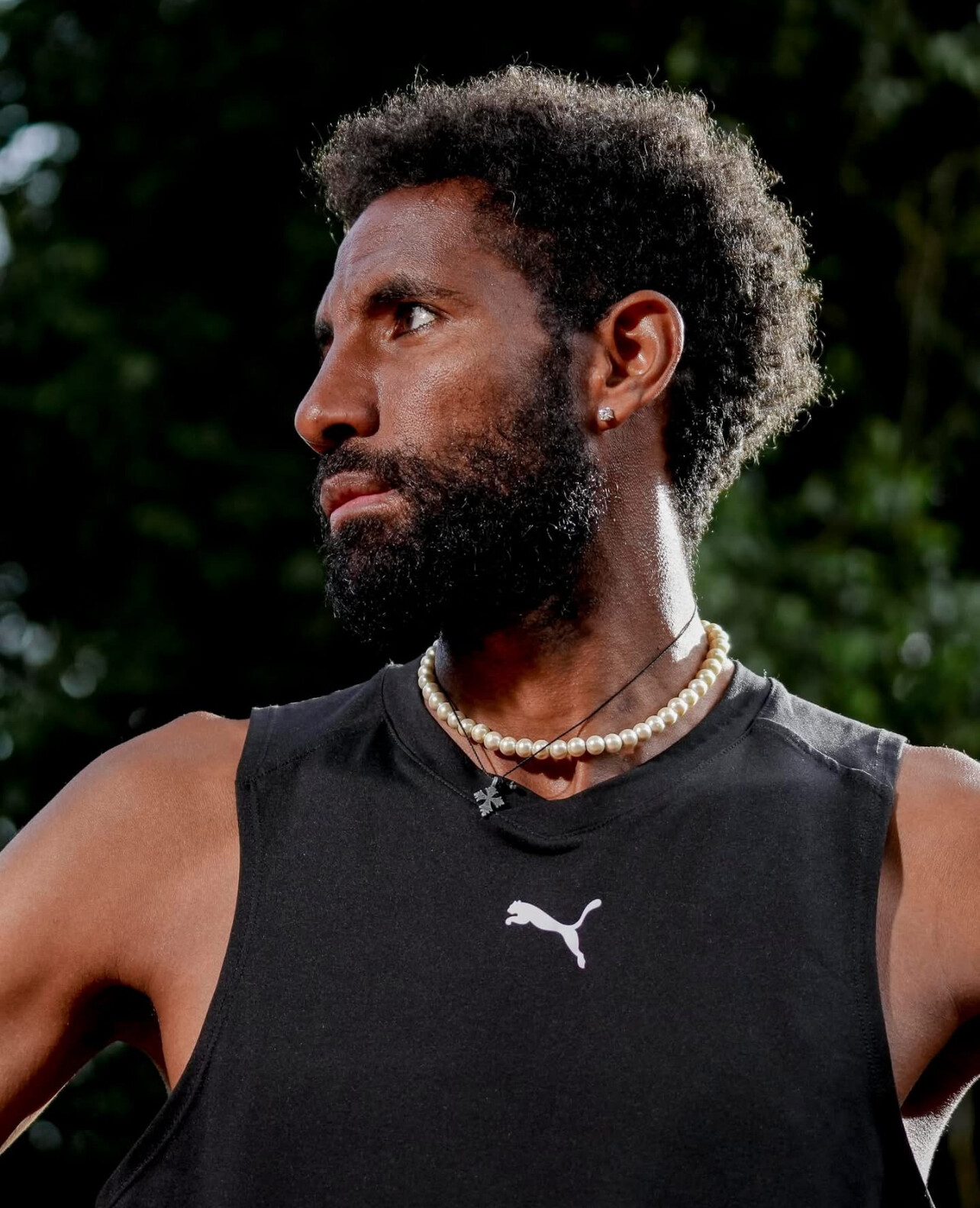
Petros’s dedication and perseverance have led to several national records:
• Marathon: German national record of 2:04:58, set at the 2023 Berlin Marathon.
• Half Marathon: National record of 1:00:09, achieved in Valencia on October 24, 2021.
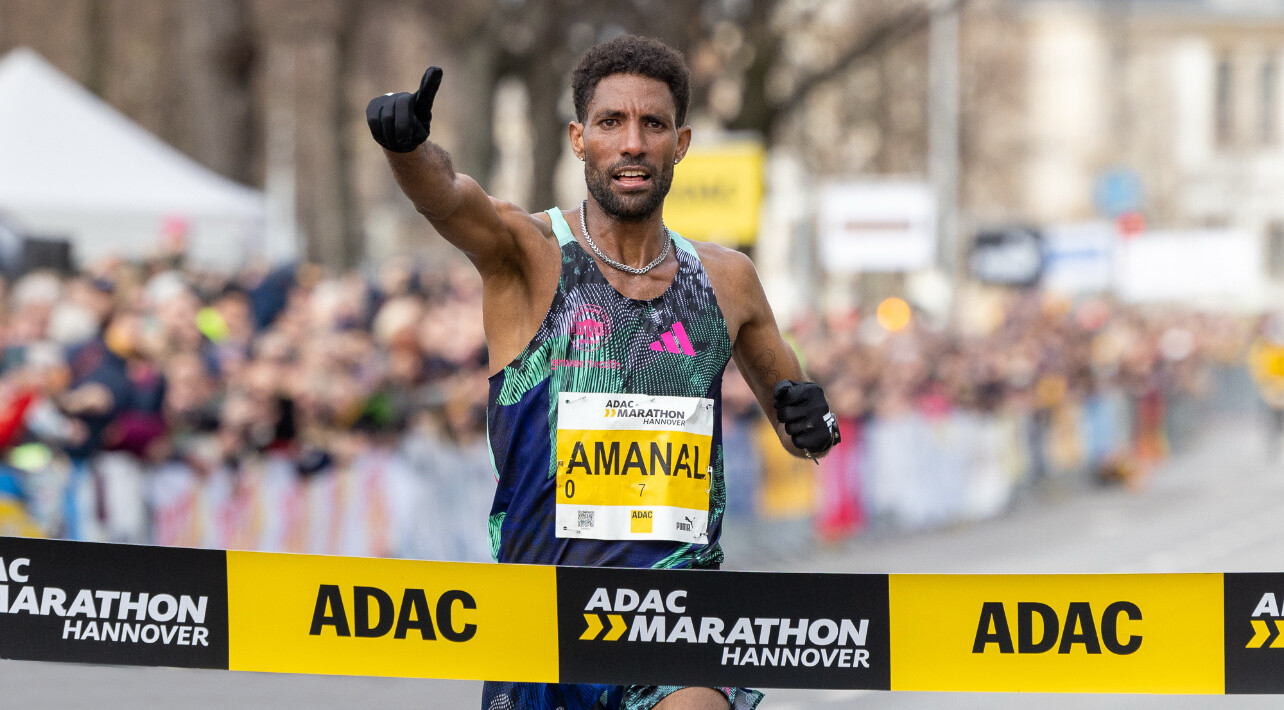
• 10 km Road Race: National record of 27:32, set in Castellón, Spain, on February 26, 2023.
International Representation
Petros has proudly represented Germany on the international stage:
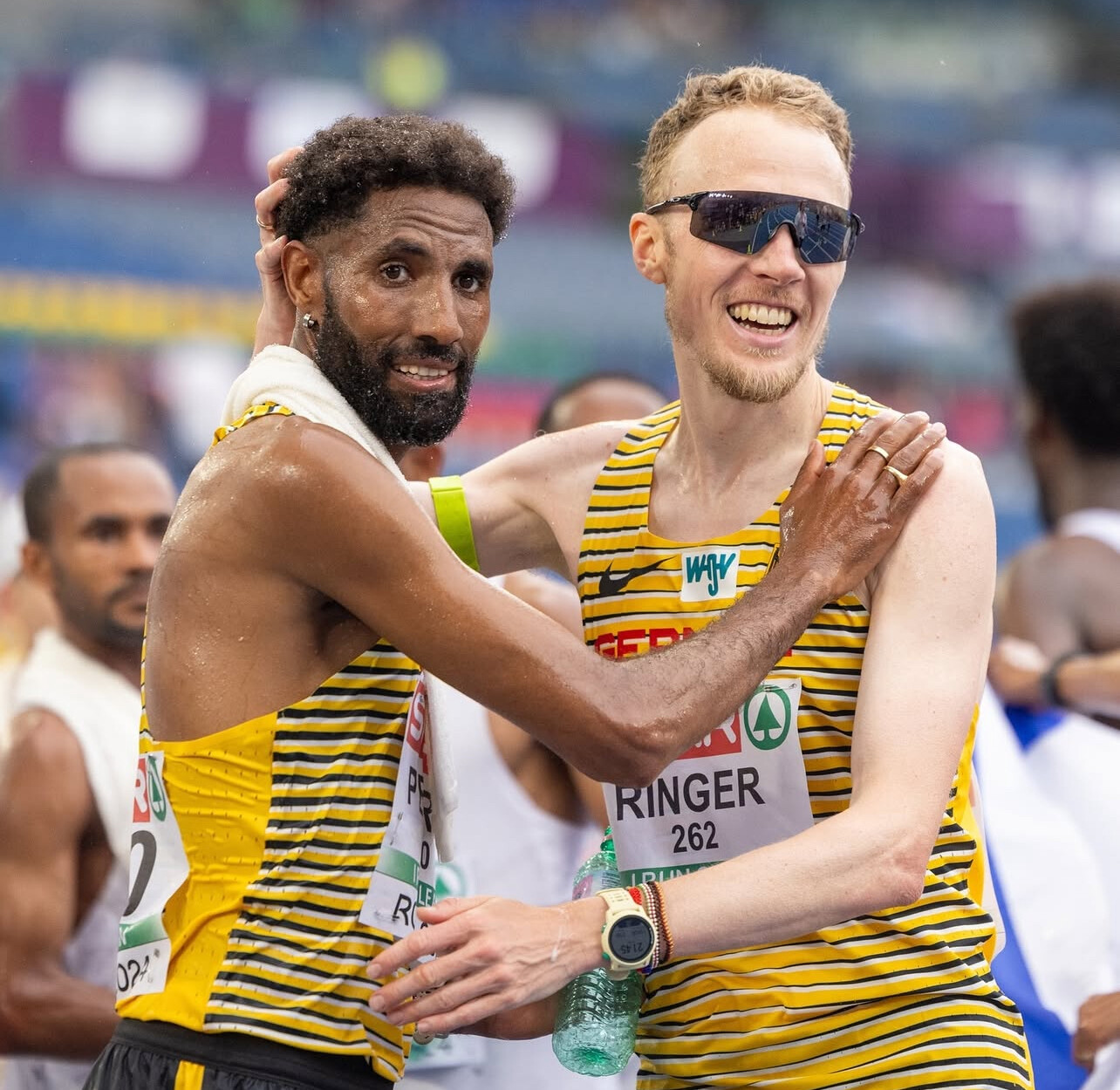
• Olympic Games: Competed in the men’s marathon at the 2020 Tokyo Olympics, finishing 30th.
• European Championships: Secured a silver medal in the team marathon event and placed fourth individually at the 2022 European Athletics Championships in Munich.
Recent Preparations and Professional Milestones
In preparation for the London Marathon, Petros participated in the eDreams Mitja Marató Barcelonaon February 16, 2025, completing the half marathon in 1:01:51. Reflecting on his performance, he stated:
“Today I ran quite far from my German record, but I am happy to run my first competition in 61:50 after the Olympic Games in Paris. Looking forward to my first marathon in London 2025.”
In addition to his athletic endeavors, Petros has recently joined the Puma Running Team, expressing enthusiasm about this new partnership and the opportunities it presents for the upcoming seasons.
Looking Ahead
As the 2025 London Marathon approaches, the running community eagerly anticipates Petros’s performance. His journey from a refugee seeking asylum to a national record-holder exemplifies resilience and determination. With his eyes set on London, Petros continues to inspire and set new benchmarks in long-distance running.
The last photo
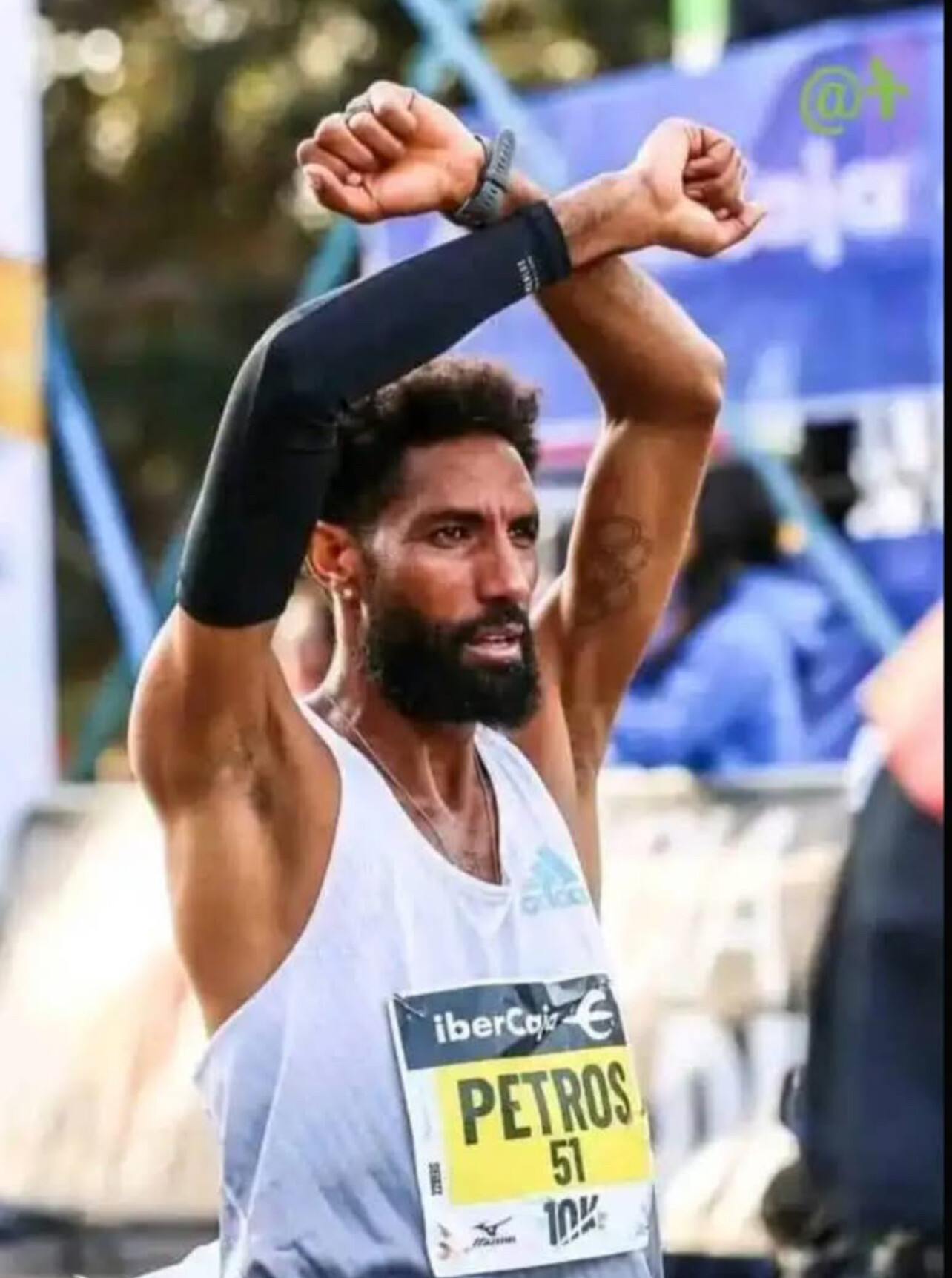
The gesture Amanal Petros is making in this photo — crossing his arms above his head — is a powerful and symbolic act. He does not do this gesture often but his beliefs have not changed.
This “X” gesture has been widely recognized as a sign of solidarity with the Tigray people in northern Ethiopia. It’s used by athletes and others to bring attention to the humanitarian crisis and conflict in the region, where countless civilians have suffered due to war, famine, and displacement.
Petros, who was born in Eritrea and whose roots are in Tigray, is using this moment at the finish line to make a public statement of support and raise awareness.
by Boris Baron
Login to leave a comment
Julien Wanders Announces Return to Marathon Racing at Haspa Marathon Hamburg
Swiss long-distance runner Julien Wanders has declared his return to marathon competition after a three-year hiatus. In a recent Instagram post, Wanders expressed his enthusiasm:
“I’m happy to announce that I will run the haspamarathonhamburg on 27th of April. After 3 years, it’s time for me to go back to marathon.”
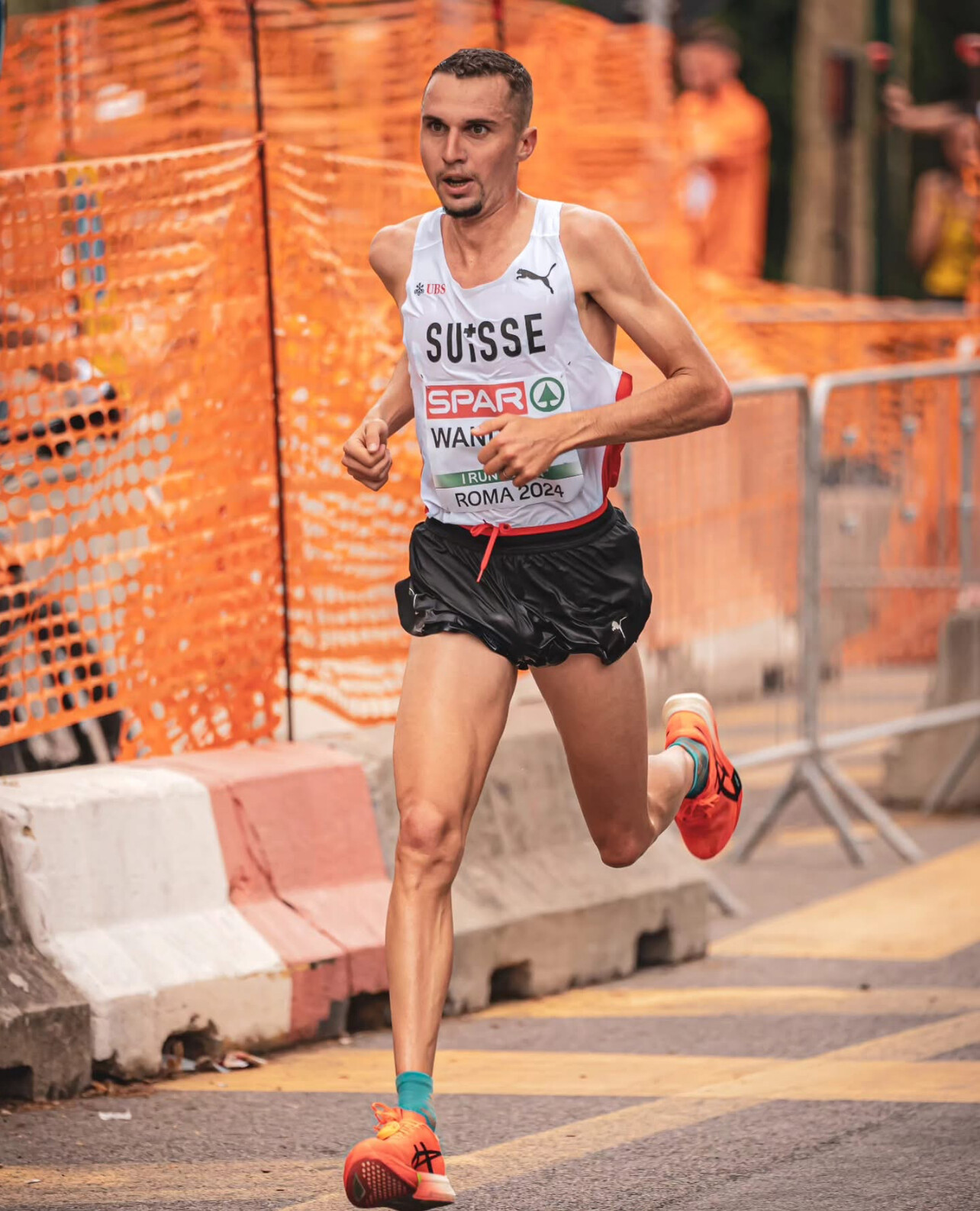
Born on March 18, 1996, in Geneva, Switzerland, Wanders has made significant strides in long-distance running. He set the European record for the half marathon with a time of 59:13 at the Ras Al Khaimah Half Marathon in 2019 I and holds the European 10 km road race record with a time of 27:13, achieved in Valencia in 2020.
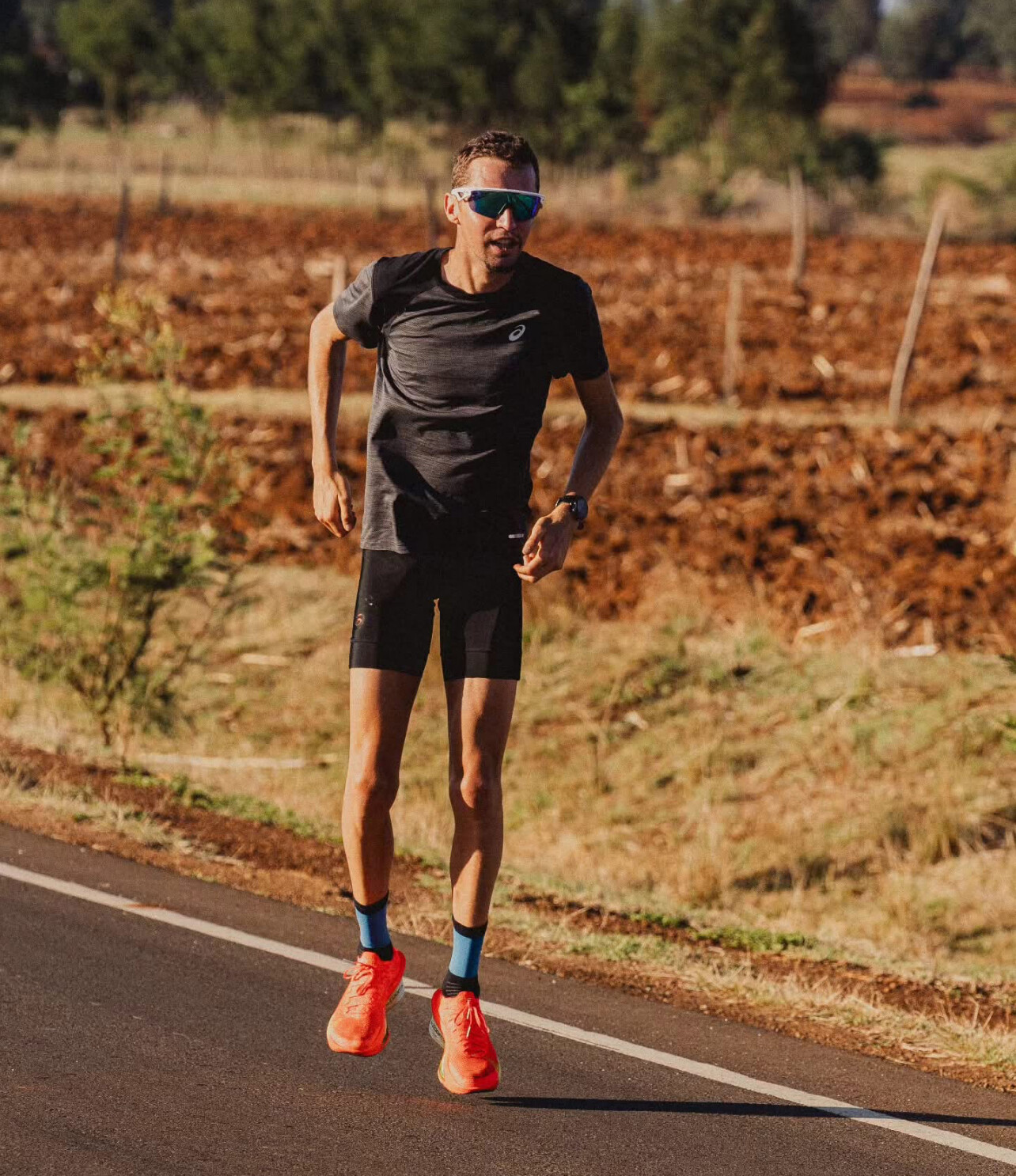
Challenges Leading to Hiatus
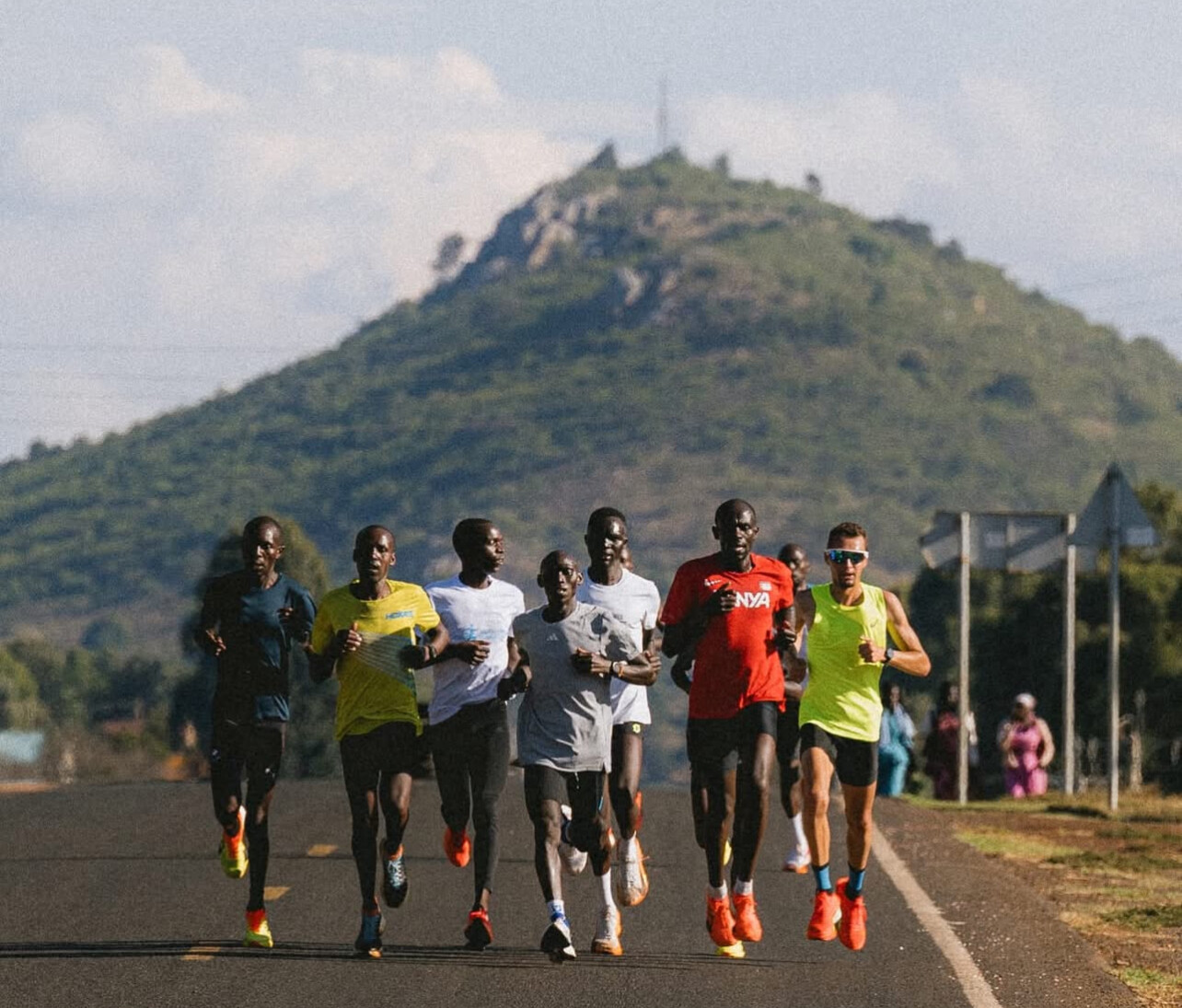
Wanders’ absence from marathon events over the past three years stems from a series of health challenges and injuries:
• 2021: In early 2021, Wanders suffered a hamstring injury, which, coupled with a bout of pneumonia, hindered his performance. Despite participating in the Tokyo Olympics, he finished 21st in the 10,000 meters. Post-Olympics, an MRI revealed significant hamstring irritation, necessitating a break from running.
• 2022: Wanders debuted in the Paris Marathon but faced digestive issues, leading to multiple stops and a finish time of 2:11:52. In May, he was diagnosed with a sacral stress fracture, sidelining him for the track season. His return at the Copenhagen Half Marathon in September was marred by illness, resulting in a time of 1:03:47. Later that year, he attempted the Valencia Marathon but withdrew after 31 kilometers due to illness.
Training in Kenya
A pivotal aspect of Wanders’ training regimen involves extensive periods in Iten, Kenya, a renowned high-altitude training hub. Drawn by the area’s reputation and inspired by his research on Kenyan running culture, he first visited Iten in 2014. Despite initial challenges, including adapting to the altitude and local conditions, Wanders found the environment conducive to his growth. He now spends about half the year training in Kenya, benefiting from the high-altitude conditions and the opportunity to train alongside elite athletes.
Wanders’ commitment to rigorous training is evident in his regimen, which includes 13 sessions per week, covering 170-190 km, along with core stability and weight training sessions.
As Wanders prepares for his marathon return in Hamburg, the running community eagerly anticipates his performance and potential resurgence on the international stage. His journey underscores the resilience and determination required to overcome setbacks and pursue excellence in long-distance running.
by Boris Baron
Login to leave a comment
Hannah Nuttall's Electrifying Finish Surpasses Laura Muir at UK Indoor 3000m Championship
In a thrilling climax at the UK Athletics Indoor Championships in Birmingham on February 23, 2025, Hannah Nuttall delivered a remarkable performance to overtake Laura Muir in the final 100 meters of the women's 3000m race. Nuttall secured the title with a personal best time of 8:49.49, narrowly edging out Muir, who finished at 8:50.16. Emerging talent Innes FitzGerald claimed third place with a time of 8:52.56.
Hannah Nuttall, born on July 7, 1997, has been steadily rising in British middle-distance running. In 2021, she was part of the victorious mixed relay team at the European Cross Country Championships in Dublin. Shortly thereafter, she joined Team New Balance Manchester under the guidance of coach Helen Clitheroe. Nuttall's dedication led to a fifth-place finish at the 2023 European Indoor Championships, where she set a personal best of 8:46.30 in the 3000m final. In 2024, she continued her upward trajectory, recording a 5000m personal best of 14:52.65 in Leiden, Netherlands, and clinching the British national title in the same event. Her recent triumph over Muir underscores her growing prominence on the national stage.
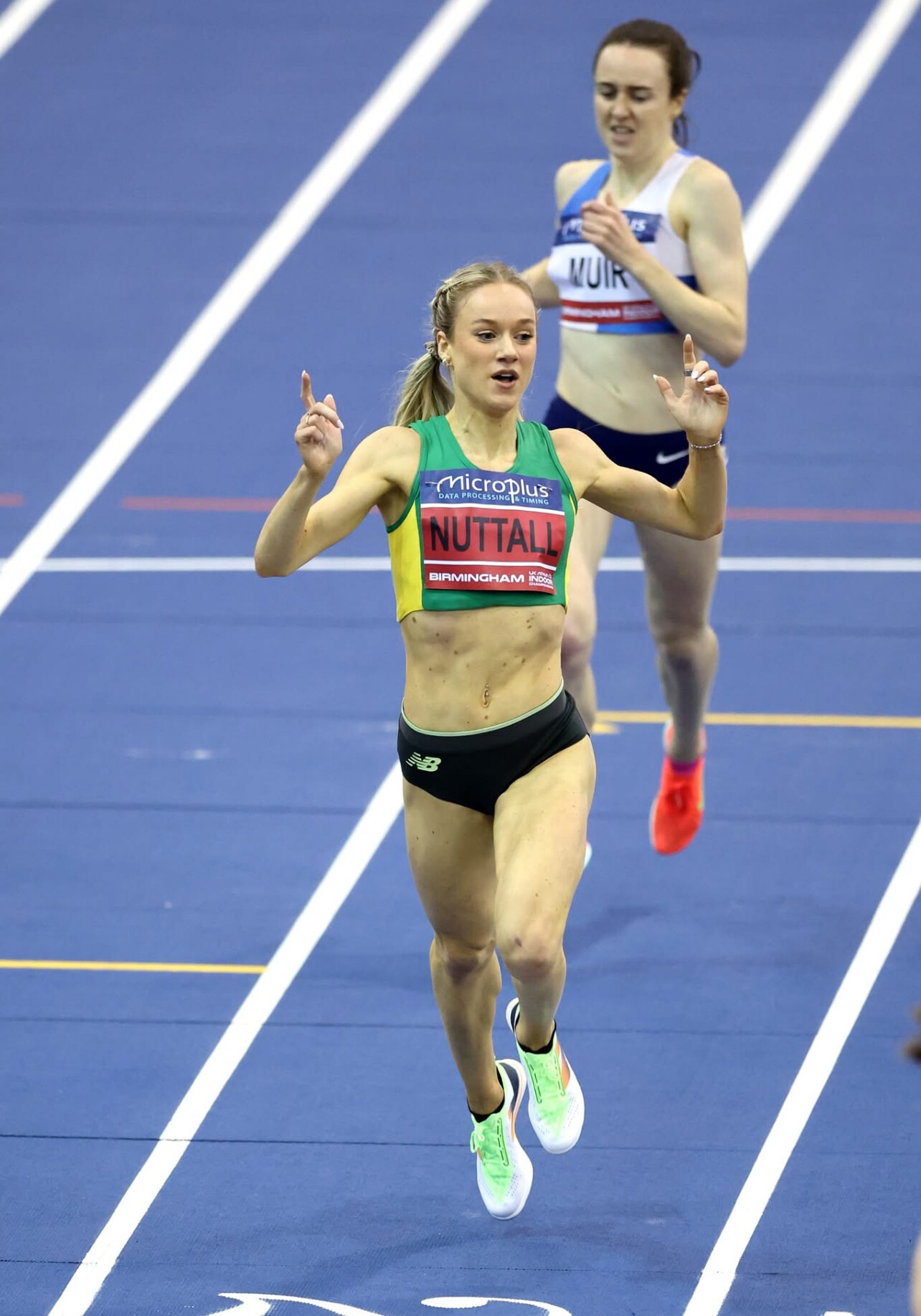
Laura Muir, born on May 9, 1993, in Inverness, Scotland, is a celebrated figure in middle-distance running. A veterinary medicine graduate from the University of Glasgow, Muir has an impressive track record, highlighted by a silver medal in the 1500m at the 2020 Tokyo Olympics. Her accolades include multiple European Indoor Championships titles and a bronze medal at the 2022 World Championships. Muir's dominance in the 1500m is further evidenced by her British record of 3:52.61, set in 2024. Despite her recent second-place finish to Nuttall, Muir's legacy as one of Britain's premier middle-distance runners remains firmly intact.
The women's 3000m final was a showcase of strategic racing and competitive spirit. Muir, known for her front-running style, took the lead early, setting a strong pace. Nuttall remained patient, staying within striking distance throughout the race. As the final lap approached, Nuttall unleashed a powerful kick, closing the gap and ultimately surpassing Muir in the last 100 meters. This victory not only highlights Nuttall's tactical acumen but also signals a potential shift in the competitive landscape of British middle-distance running.
Nuttall's performance at the UK Athletics Indoor Championships positions her as a formidable contender for upcoming international competitions. Her continued development and recent successes suggest a promising future on the global stage. Meanwhile, Muir's experience and proven track record ensure that she remains a key figure in the sport, setting the stage for exciting rivalries and compelling narratives in the seasons to come.
Login to leave a comment
Olympic 10000m Champion Selemon Barega Wins Seville Marathon with a 2:05:15 debut
The 2025 Zurich Maratón de Sevilla delivered unforgettable performances on Sunday, February 23, as Ethiopia’s Selemon Barega stormed to victory in his marathon debut with an impressive time of 2:05:15, This marks the third-fastest marathon time of the year and continues Ethiopia’s dominance in the prestigious event.
Barega’s Marathon Debut: A Statement Victory
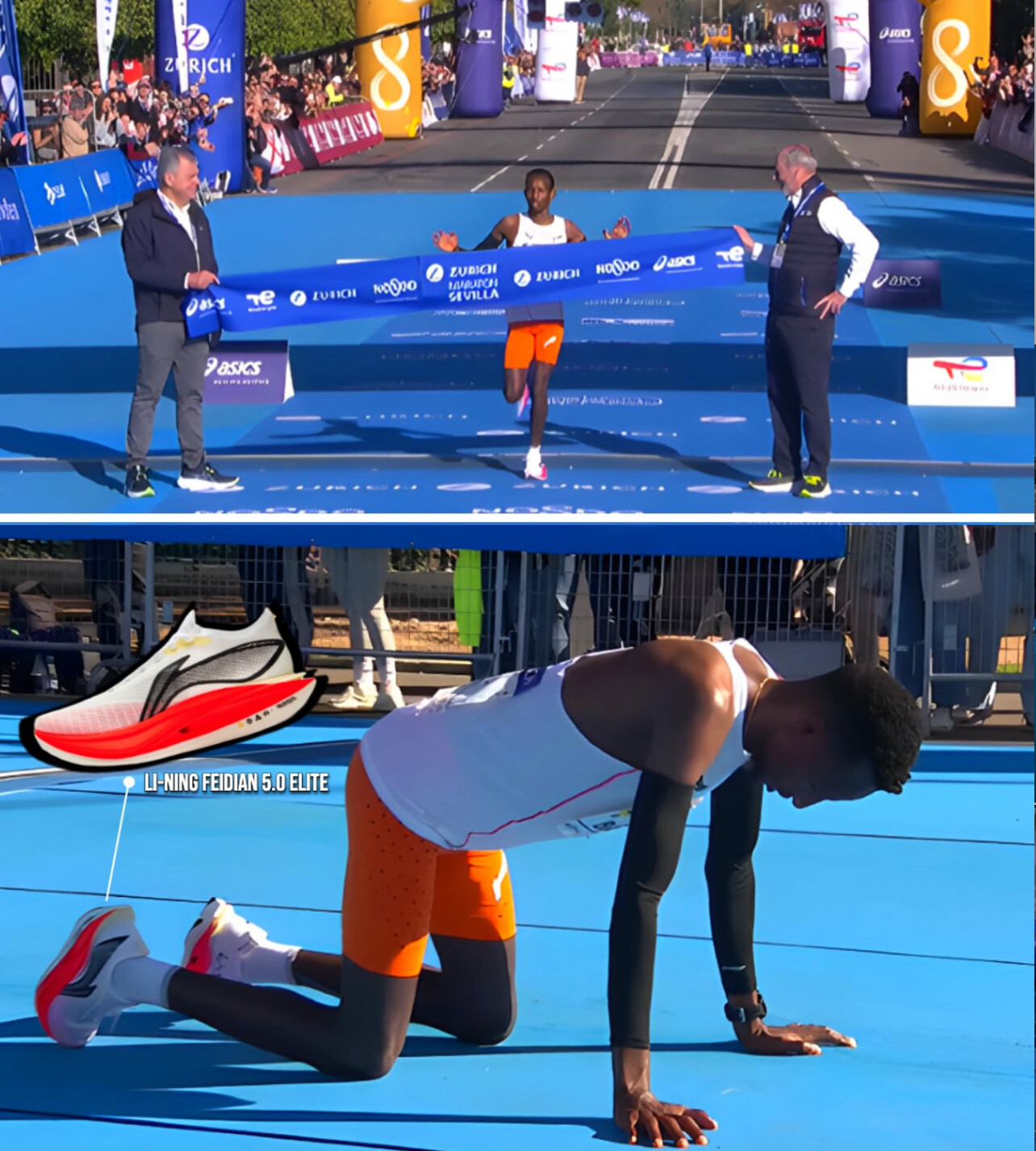
Selemon Barega, the reigning 10,000m Olympic champion, transitioned seamlessly to the marathon distance, showcasing his endurance and tactical brilliance. Running much of the second half alone, Barega maintained composure to cross the line well ahead of the field.
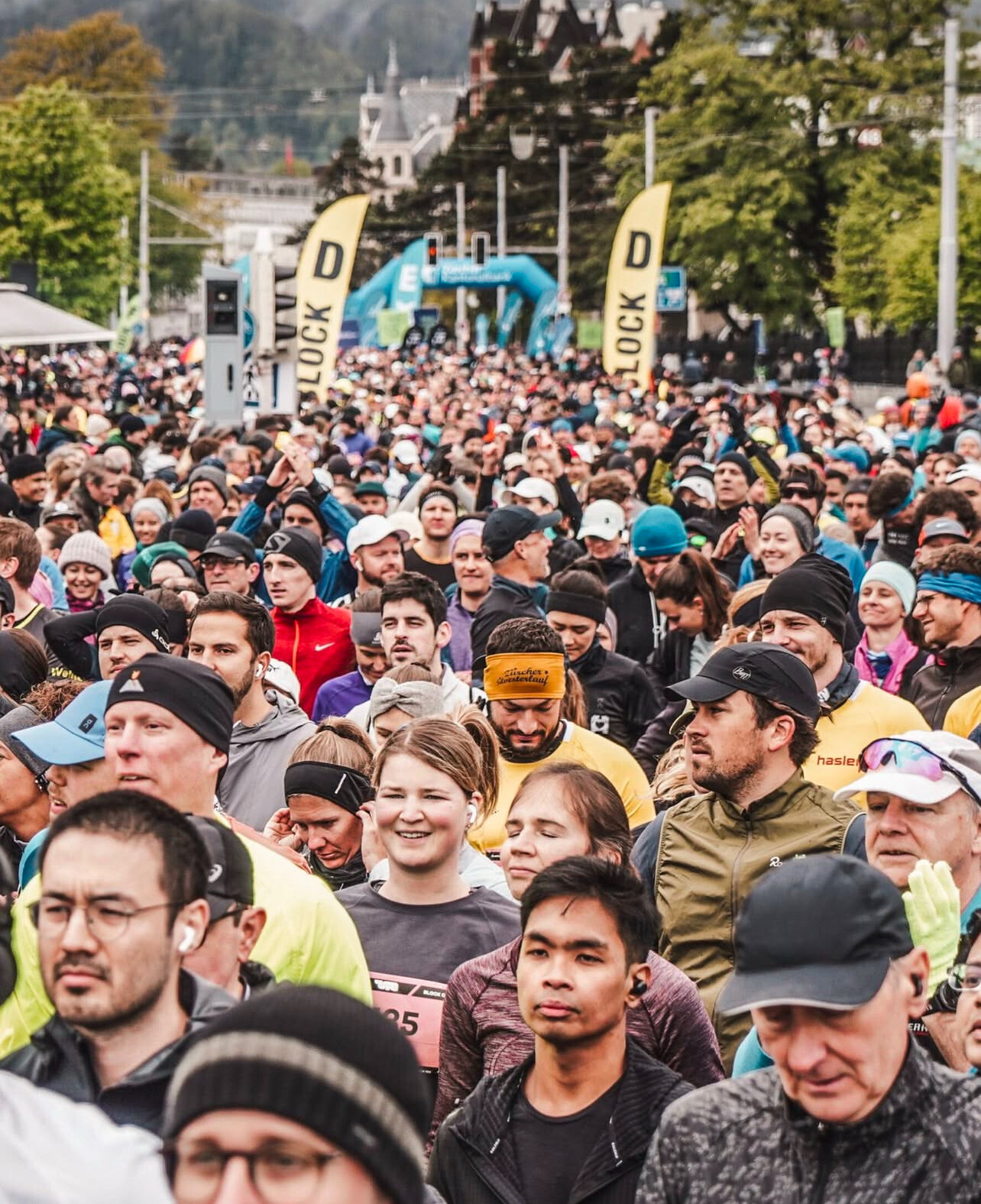
He was followed by compatriot Adisu Tesfahun, who finished second in 2:06:27, and Mohamed Reda of Morocco, clocking 2:06:45 for third place.
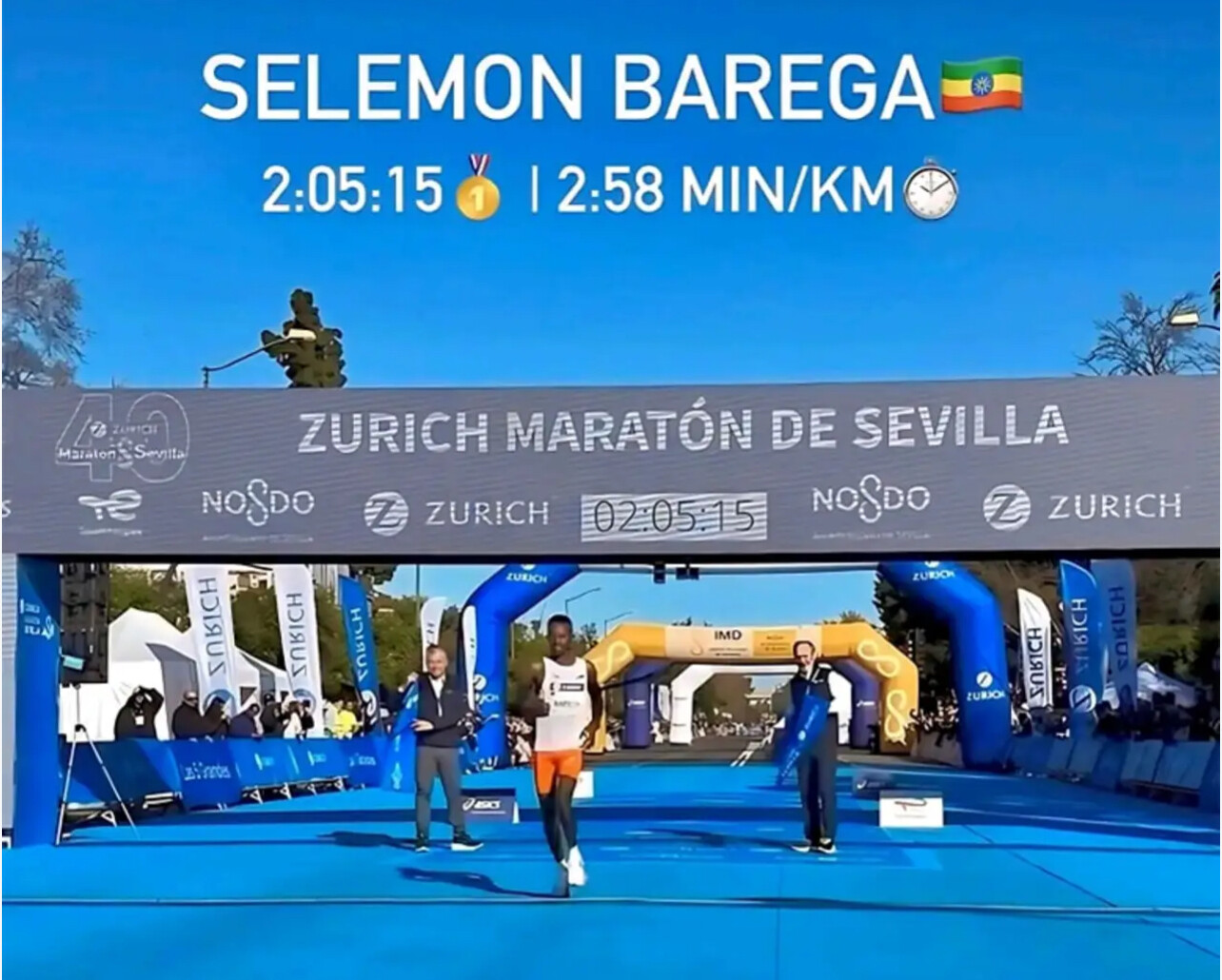
Barega’s performance not only secured his place among the marathon elite but also extended Ethiopia’s winning streak to six consecutive victories at the Seville Marathon.
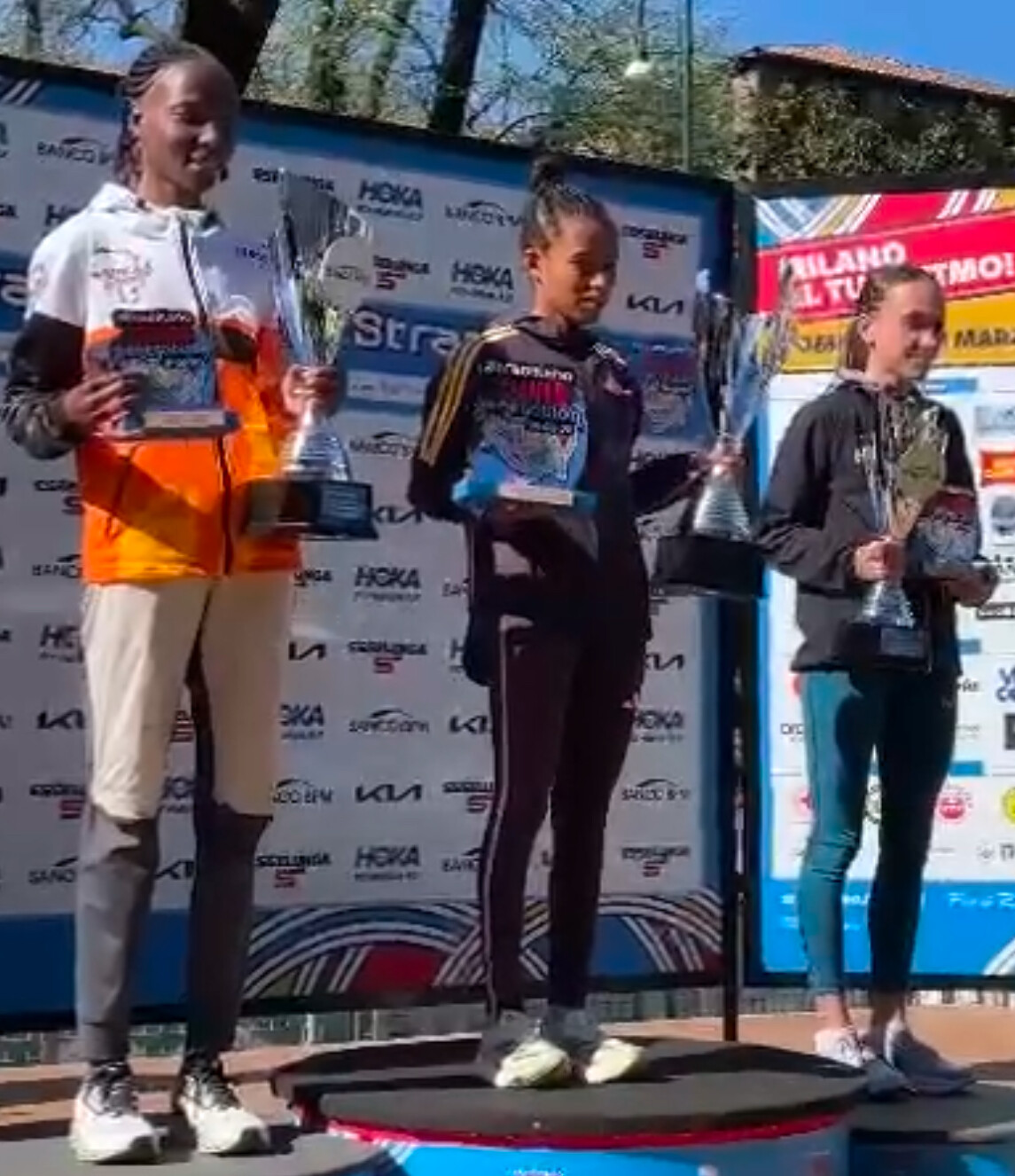
“I’m proud of this result. My training for the marathon has been intense, and Seville was the perfect place to debut. I hope to build on this and aim for even faster times,” Barega said after the race.
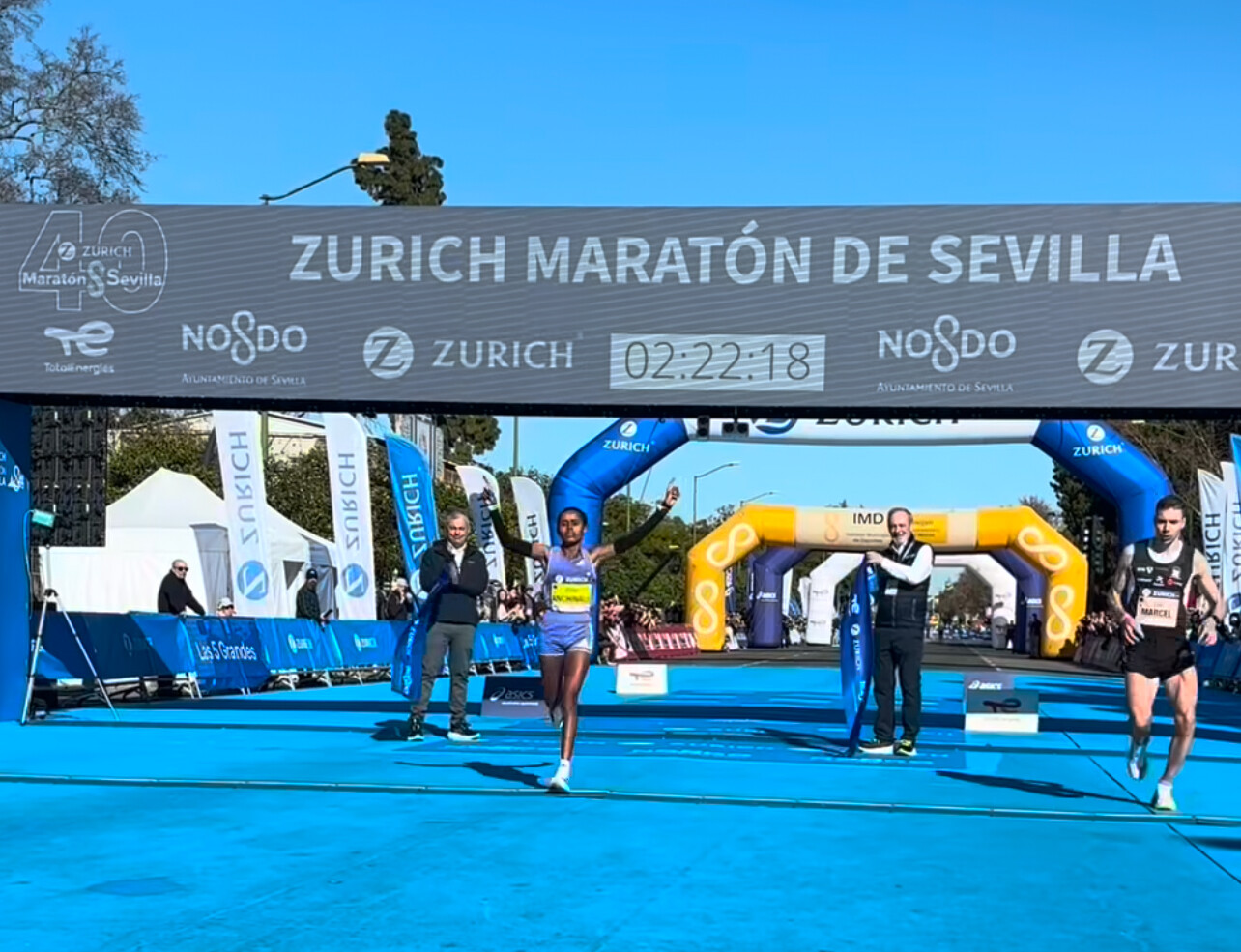
Women’s Race: Anchinalu Dessie Genaneh Triumphs
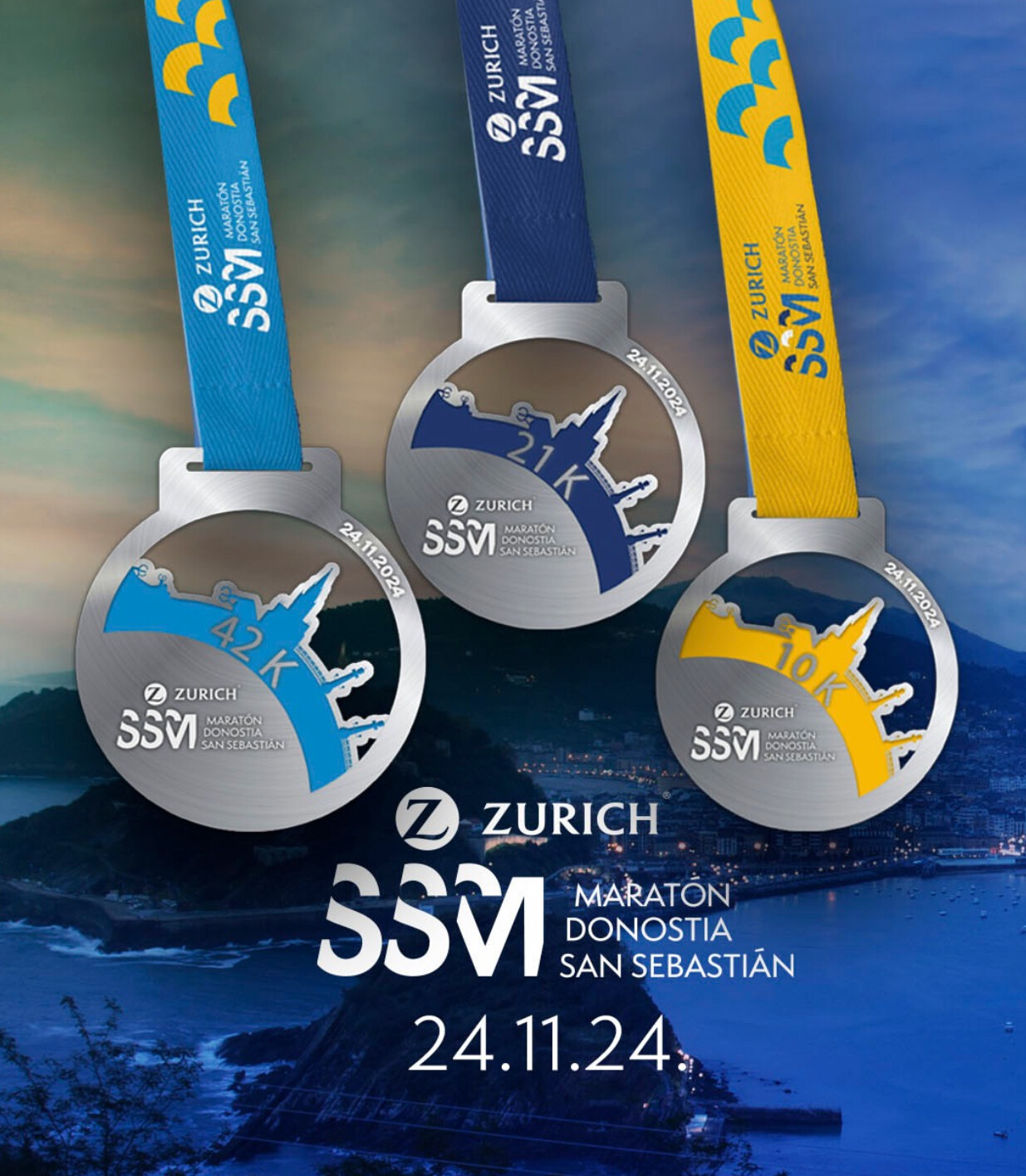
In the women’s race, Ethiopia’s Anchinalu Dessie Genaneh delivered a dominant performance, breaking the tape in 2:22:17. This victory further cemented Ethiopia’s success in Seville, with Dessie Genaneh holding off a strong international field.

France’s rising star Manon Trapp took second place in 2:23:38, while Cynthia Chepchirchir Kosgei of Kenya secured third in 2:23:43.
Dessie Genaneh, already known for her strong half-marathon performances, proved she has the strength and speed to excel over the full 26.2 miles.
Selemon Barega: From Track Star to Marathoner
Born on January 20, 2000, in the Gurage Zone of Southern Ethiopia, Selemon Barega rose to prominence as a middle-distance prodigy. He clinched gold in the 5000 meters at the 2016 World U20 Championships and 3000 meters at the 2017 World U18 Championships.
In 2018, he set a world U20 record in the 5000 meters, clocking 12:43.02, one of the fastest times in history. His crowning achievement came at the 2020 Tokyo Olympics, where he won the 10,000 meters gold medal, solidifying his place among the sport’s elite.
Now, with a 2:05:13 marathon debut, Barega has proven that his talents extend far beyond the track. The running world will be watching closely as he targets future marathons and, possibly, world record attempts.
Record Participation and Global Appeal
The 2025 Zurich Maratón de Sevilla also witnessed record participation, with 14,000 runners from around the world lining up to tackle the fast, flat streets of Seville. Known for its ideal conditions and scenic course, the race continues to attract elite athletes and passionate amateurs alike.
With Selemon Barega’s stunning debut and Anchinalu Dessie Genaneh’s commanding victory, the 2025 Seville Marathon has once again proven itself as a stage for breakthrough performances. Both champions are now firmly on the radar as contenders for future World Marathon Majors and Olympic glory.
by Boris Baron
Login to leave a comment
Zurich Marathon Sevilla
This urban, flat, fast and beautiful brand new race course will drive athletes through the most beautiful monuments of the city. Zurich Maraton de Sevilla brings the unique opportunity to brake the Best personal result over the mythical distance to all the athletes, professional or age groupers, in one of the most perfect international marathon circuits. This fast marathon takes...
more...How Much Have Tracks and Shoes Improved 10,000m Times? A Look at Billy Mills’ 1964 Olympic Gold Compared to Today
When Billy Mills won the 10,000 meters at the 1964 Tokyo Olympics, he shocked the world. A relative unknown at the international level, Mills surged past world record holder Ron Clarke in the final stretch to win gold in 28:24.4, setting an Olympic record. It remains one of the most famous upsets in Olympic history.
At the 2024 Paris Olympics, Billy Mills sat in the stands, watching intently as the men's 10,000-meter final unfolded. Sixty years after his historic victory in Tokyo, he witnessed another American, Grant Fisher, battling for the podium.
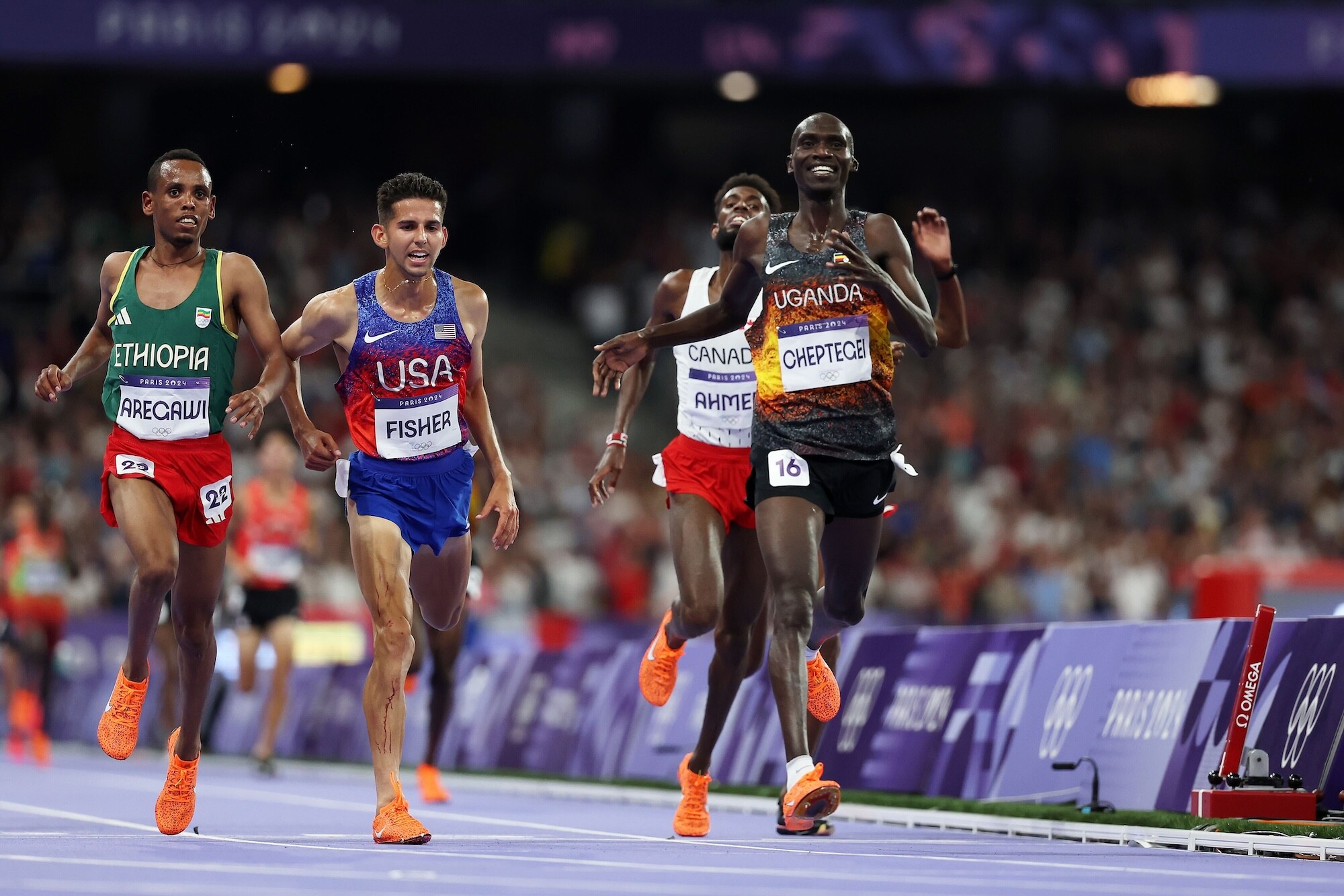
With two laps to go, Fisher was perfectly positioned, matching strides with the East African elites, his long, efficient stride reminiscent of Mills' own finishing kick in 1964.
As the bell rang for the final lap, Fisher surged, momentarily moving into second. Mills, now 86, leaned forward, sensing history. But in the last 100 meters, Fisher was edged out, securing bronze. Mills smiled, knowing how close greatness had come again. Fisher clocked 26:43.46, just one third of a second behind the gold medal winner.
Mills had ran his time on a cinder track, wearing "basic running shoes"—conditions that would be considered primitive compared to today’s high-tech track surfaces and carbon-plated racing shoes. Given all the advancements in running technology, how much faster could Billy Mills have run on a modern track with today’s footwear? And how much have these innovations contributed to the faster times we see today?
The Difference Between Cinder and Synthetic Tracks
One of the biggest changes in distance running over the last six decades has been the transition from cinder tracks to synthetic surfaces. Cinder tracks, composed of crushed brick, coal, or ash, provided uneven footing, absorbed energy from each step, and became soft and unpredictable when wet. Athletes often wore spikes with long, heavy pins to grip the loose surface.
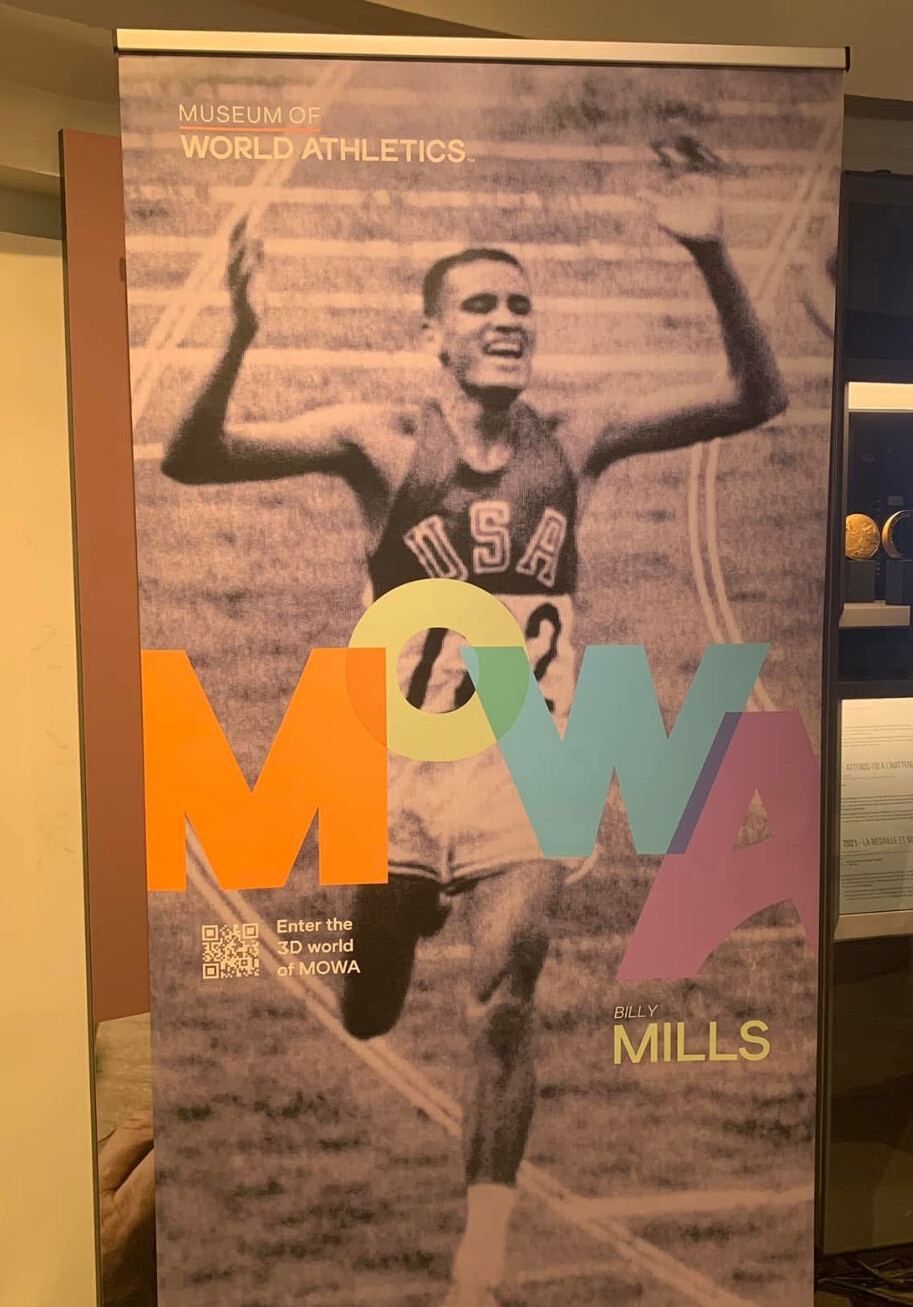
By contrast, modern synthetic tracks, introduced in the late 1960s, offer a firm, springy surface that returns more energy to the runner with each stride. Research suggests that switching from a cinder track to a synthetic track can improve distance-running performance by about 1-2 percent.
For a 10,000-meter race, a 1-2 percent time reduction equates to about 17 to 34 seconds. This means that if Billy Mills had run his race on a modern track, his time could have been anywhere between 27:50 and 28:07 just from the track surface alone.
The Impact of Modern Running Shoes
The second major advancement in distance running has been the development of carbon-plated racing shoes with high-energy-return foams. The latest models, introduced after 2016, are designed to reduce energy loss with each step, making it easier for runners to maintain their pace over long distances. Studies suggest these shoes provide 2-4 percent energy savings, which translates to a 30-60 second improvement over 10,000 meters.
Adding this to the estimated track advantage, Mills’ performance could have been further improved, bringing his potential time down to around 26:50 to 27:30.
Comparing Billy Mills’ Performance to Modern Champions
The current Olympic record for the 10,000 meters was set by Uganda’s Joshua Cheptegei at the 2024 Paris Olympics with a time of 26:43.14. That’s 1 minute and 41 seconds faster than Mills' winning time.
However, when we factor in advancements in track surfaces and footwear, the estimated modern equivalent of Mills’ race suggests he could have run within a minute of today’s best, making him far more competitive by modern standards than his official time suggests.
Other Factors That Have Led to Faster 10,000m Times
While tracks and shoes play a significant role in faster performances, several other factors have contributed to the improvement in 10,000-meter times over the decades:
More specialized training. Today’s distance runners have more scientifically tailored training programs, including altitude training, precise recovery strategies, and improved strength training techniques.
Better pacing and race strategy. Modern races are often assisted by pacemakers who set a steady, fast pace, helping runners conserve energy and stay consistent. In contrast, Mills’ race was a classic tactical battle with surges and slow-downs.
Nutritional and recovery advances. Today’s runners have access to optimized hydration, fueling, and recovery methods that allow them to train harder and more efficiently.
Billy Mills’ Performance in Context
Billy Mills’ gold medal run remains one of the most inspiring performances in Olympic history, not just because of the time he ran, but because of the way he won. His dramatic sprint finish against heavily favored competitors on a slower, less predictable surface showcased his incredible talent, toughness, and racing instincts.
Had he raced under today’s conditions with modern advantages, Mills likely would have been among the best in the world by today’s standards. His story is a reminder that while technology has helped athletes run faster, the heart and determination behind great performances remain unchanged.
The next time you watch an Olympic 10,000-meter race, consider just how much conditions have changed since 1964—and how incredible it was for Billy Mills to win on that cinder track with the tools available at the time. His legacy stands as a testament to the pure competitive spirit of running.
by Boris Baron
Login to leave a comment
Jacob Kiplimo Set for Marathon Debut at London 2025
Ugandan long-distance star Jacob Kiplimo has announced that he will make his marathon debut at the 2025 London Marathon in April. Speaking to Xinhua on Wednesday, Kiplimo expressed his excitement and determination as he prepares for the challenge.
"I am preparing well because I'am looking forward to making my first appearance in a marathon," Kiplimo said. "I am following the training schedules designed by my coach with full commitment. It is tough, but I have to complete it, knowing that the marathon is not easy."

Kiplimo, 23, is one of Uganda's most accomplished distance runners. He won a bronze medal in the 10,000m at the Tokyo Olympics and holds the half marathon world record (57:31). His transition to the marathon is highly anticipated, as he will face off against some of the world's best, including Kenya's Eliud Kipchoge and Sebastian Sawe.
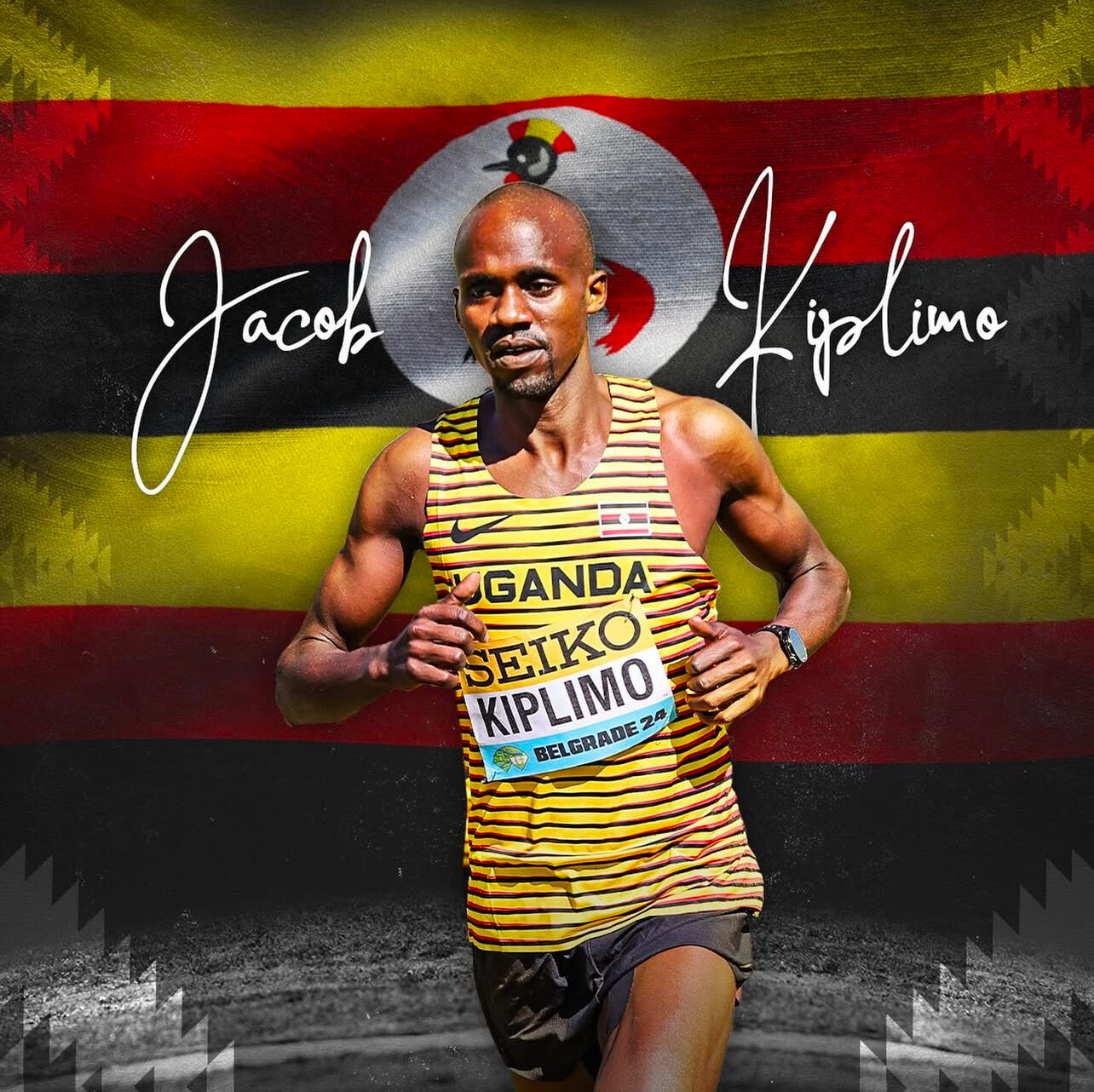
His coach, Peter Chelangat, affirmed that Kiplimo is making solid progress in training. "We are building his endurance for the 42-kilometer race through intense workouts and competitions leading up to the event," Chelangat said.
The president of the Uganda Athletics Federation (UAF), Dominic Otuchet, expressed confidence in Kiplimo's ability to excel in the marathon. "The marathon is challenging, but our long-distance athletes have what it takes to succeed. I am optimistic that he will perform well."
Kiplimo's marathon debut will be closely watched as he takes on the next big step in his already stellar career.
by Boris Baron
Login to leave a comment
TCS London Marathon
The London Marathon was first run on March 29, 1981 and has been held in the spring of every year since 2010. It is sponsored by Virgin Money and was founded by the former Olympic champion and journalist Chris Brasher and Welsh athlete John Disley. It is organized by Hugh Brasher (son of Chris) as Race Director and Nick Bitel...
more...Anticipation Builds for Middle-Distance Showdowns at 2025 Czech Indoor Gala
The Czech Indoor Gala, scheduled for February 4, 2025, in Ostrava, is set to feature thrilling middle-distance races, particularly in the men’s 800 meters and the women’s 3000 meters.
Men’s 800 Meters:
Czech national record holder Jakub Dudycha will compete on home soil. As a junior, he set a national U20 indoor record of 1:47.42 at the Czech Indoor Gala, later improving it to 1:47.12. Outdoors, he advanced to the semi-finals at the European Championships in Rome, clocking a time under 1:45, and subsequently set a new Czech senior record of 1:44.82 in Bydgoszcz. Dudycha has expressed his ambition to break the national indoor record this season.
He will face formidable international competitors, including Belgium’s Eliott Crestan, who is the sixth fastest European in history with a national record of 1:42.43 set at the Paris Diamond League meeting. Crestan is a bronze medallist from both the European and World Indoor Championships. Another strong contender is Catalin Tecuceanu, representing Italy since 2022, who secured European bronze in Rome and boasts personal bests of 1:45.00 indoors and 1:43.75 outdoors.
Women’s 3000 Meters:
Kristiina Sasínek Mäki, a Tokyo Olympics finalist, will compete in the 3000 meters. She has been training under Swiss coach Louis Heyer and is eager to showcase her progress. However, she will face stiff competition from African athletes. Ethiopia’s Freweyni Hailu, the 1500m world indoor champion from Glasgow 2024, returns after setting a meeting record in the mile at last year’s Czech Indoor Gala. Joining her is compatriot Sembo Almayew, the junior world record holder in the steeplechase and World U20 champion, as well as Norah Jeruto, the World 3000m steeplechase champion from the 2022 Eugene Championships, now representing Kazakhstan.
The Czech Indoor Gala, part of the World Athletics Indoor Tour Gold series, continues to attract top-tier talent, ensuring a night of exceptional athletic performances in Ostrava.
Login to leave a comment
Ethiopian Sisay Lemma eyes successful Boston Marathon title defence against Kenyans John Korir, Cybrian Kotut & Co
Sisay Lemma is looking to replicate his 2024 success at this year's Boston Marathon but Kenyans John Korir and Cybrian Kotut are among those standing in his way.
Ethiopian marathon star Sisay Lemma is gearing up to defend his title at the 2025 Boston Marathon, set to take place on April 21.
Fresh off his thrilling victory in 2024, Lemma will look to replicate his success and conquer the demanding course once again.
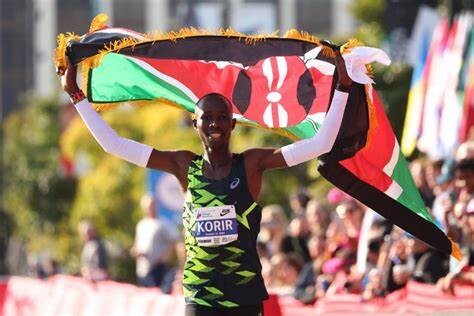
In the 2024 edition, Lemma surged ahead of a fierce field that included his fellow Ethiopian Mohamed Esa, as well as Kenyan marathon giants Evans Chebet and John Korir, who finished second, third, and fourth, respectively.
Lemma's winning time of 2:06:17 was a testament to his impressive form, but he remains aware of the heightened challenge awaiting him this year.
“I was very happy after winning the Boston Marathon last year, and in 2025 I know it will be an even bigger challenge to win again,” Lemma said via World Athletics, acknowledging the difficulty of repeating such a remarkable performance.
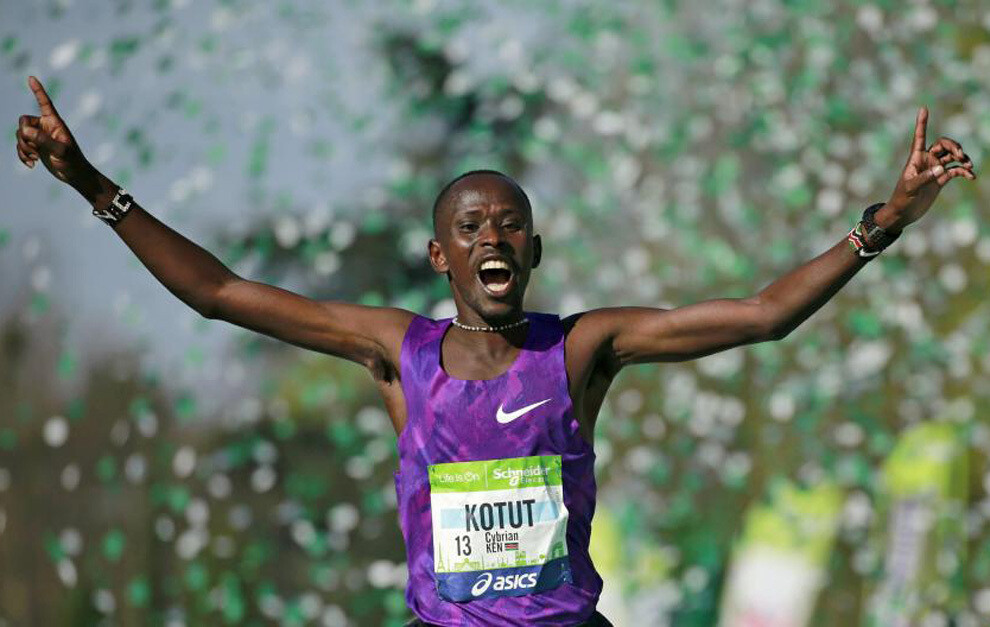
While the Boston Marathon holds a special place in his heart, Lemma’s 2024 season was marred by injury setbacks.
The Ethiopian was hoping to redeem his Olympic performance after a disappointing debut at the 2020 Tokyo Olympics, where he failed to finish the race.
Unfortunately, injury prevented him from competing in Paris in 2024, further hindering his plans for an Olympic comeback.
His struggles continued as he missed a podium finish at the Valencia Marathon that same December due to a lack of full fitness.
“I was unlucky, because of an injury, not to be able to participate at the 2024 Olympic Games in Paris and I was not completely ready at the Valencia Marathon last December,” Lemma confessed.
Now, with the Olympics behind him, Lemma has set his sights firmly on the Boston Marathon. Despite the challenges of the past year, he remains confident in his preparation.
“I will be 100% ready in April because the Boston Marathon is a special event,” Lemma asserted, emphasizing the importance of the race in his career.
However, Lemma will face stiff competition. Among the challengers is last year’s bronze medalist, Kenyan marathon star Evans Chebet, who clocked 2:07:22, just behind Lemma’s winning time.
Chebet, who has proven his endurance and speed on the Boston course, will be looking to outpace the Ethiopian this time around.
He will be joined by a strong Kenyan contingent, including John Korir, who finished fourth last year, as well as Cybrian Kotut, Daniel Mateiko, Abel Kipchumba, and Albert Korir.
With a fierce field and his sights set on history, Lemma’s journey toward a successful title defense will undoubtedly be one of the highlights of the 2025 marathon season.
by Stephen Awino
Login to leave a comment
Boston Marathon
Among the nation’s oldest athletic clubs, the B.A.A. was established in 1887, and, in 1896, more than half of the U.S. Olympic Team at the first modern games was composed of B.A.A. club members. The Olympic Games provided the inspiration for the first Boston Marathon, which culminated the B.A.A. Games on April 19, 1897. John J. McDermott emerged from a...
more...'He had sex without my consent' - Spanish Olympian opens up on horrifying rape and abuse ordeal she suffered at the hands of a former partner
Ana Peleteiro represents women who have suffered sexual abuse in silence but only open up after they have been heartbroken.
Tokyo Olympics triple jump bronze medalist Ana Peleteiro has opened up on the horrifying rape and abuse ordeal she suffered at the hands of a former partner.
Peleteiro, 29, is highly regarded, with the Spaniard having won a gold medal at the 2024 European Championships. Peleteiro, who mastered a sixth-place finish at Paris Olympics, is also Spain's national record holder and currently married to French triple jumper Benjamin Compaore.
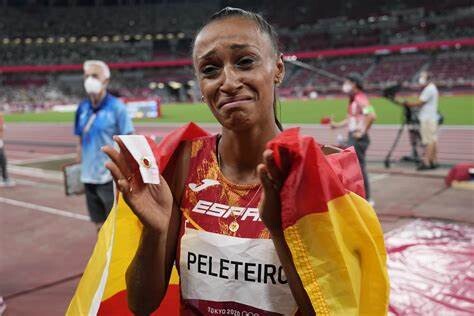
Peleteiro released a video on her TikTok channel where she bravely recounted what she was a victim of in a past relationship. She joined the viral social media trend under the name 'y aun asi me quede', which means 'and yet I stayed', according to the Daily Mail.
Within the clip, Peleteiro denounced the repeated rapes and psychological abuse of her former partner, who she didn't name. "I would wake up at night having sex without consent and yet I stayed," she said. "Absolutely everything about me changed, from my clothes to my hair, the way I acted with my family, distancing myself from so many people. And yet I stayed.

"He told me that if we didn't have sex whenever he wanted, it would damage the relationship and that, after all, those who don't eat at home eat out. He said that if he was unfaithful to me later, I shouldn't be surprised. And yet I stayed," Peleteiro recounted.
She continued. "If I went to his house on the weekends, he would disappear and suddenly I knew absolutely nothing. He would say good morning to me, maybe sporadically one day, and he would excuse himself by saying that he needed his space and that I had to trust him and let him do those things because that was normal in a relationship. And yet I stayed."
Peleteiro also went on to highlight the emotional manipulation she suffered and how her former partner's disloyalty was played against her. She said the reason why she opened up on her situation and insisted there is a way out for women who find themselves in a similar position.
by Evans Ousuru
Login to leave a comment
'It wasn't perfect' - Sifan Hassan on why it was terrifying to compete in three distances at the Paris Olympics
Hassan competed in three grueling races at the Paris Olympics, winning marathon gold and bronze in both 5000m and 10000m
Paris Olympics marathon champion Sifan Hassan has revealed why she made a decision to take part in three races at the 2024 Paris Games.
The 31-year-old claimed 5000m and 10,000m bronze before winning the marathon in an Olympic record.
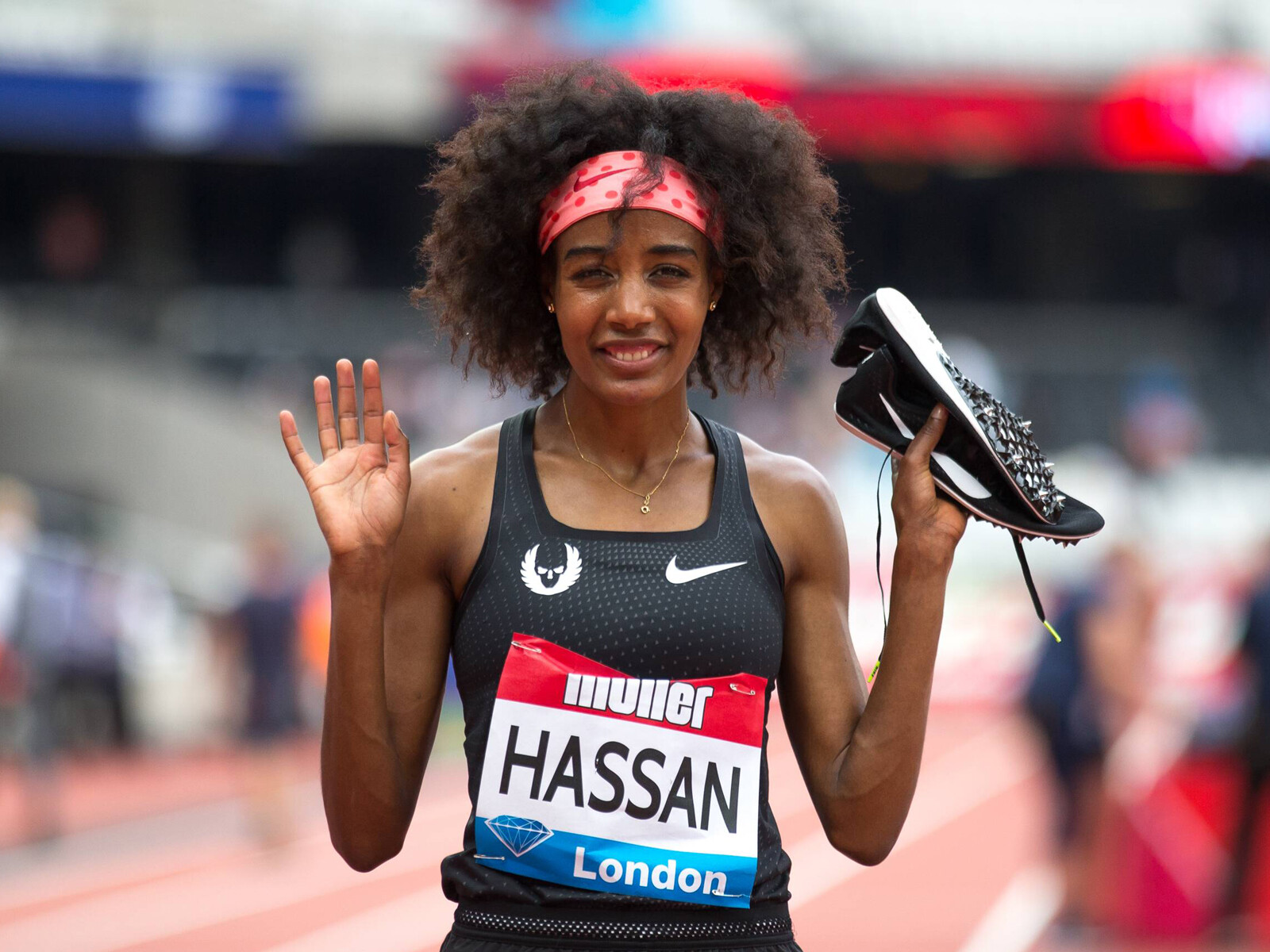
The Dutchwoman was honored at the World Athletics Awards 2024 in Monaco on December 1 where she won the women’s out of stadium category before being named as women’s World Athlete of the Year.
"This year, my curiosity pushed me to take a risk and compete in three distances at the Paris Olympics. It was terrifying, and that made each finish line more meaningful. It wasn’t perfect, but sometimes happiness comes from embracing imperfections," she told World Athletics.
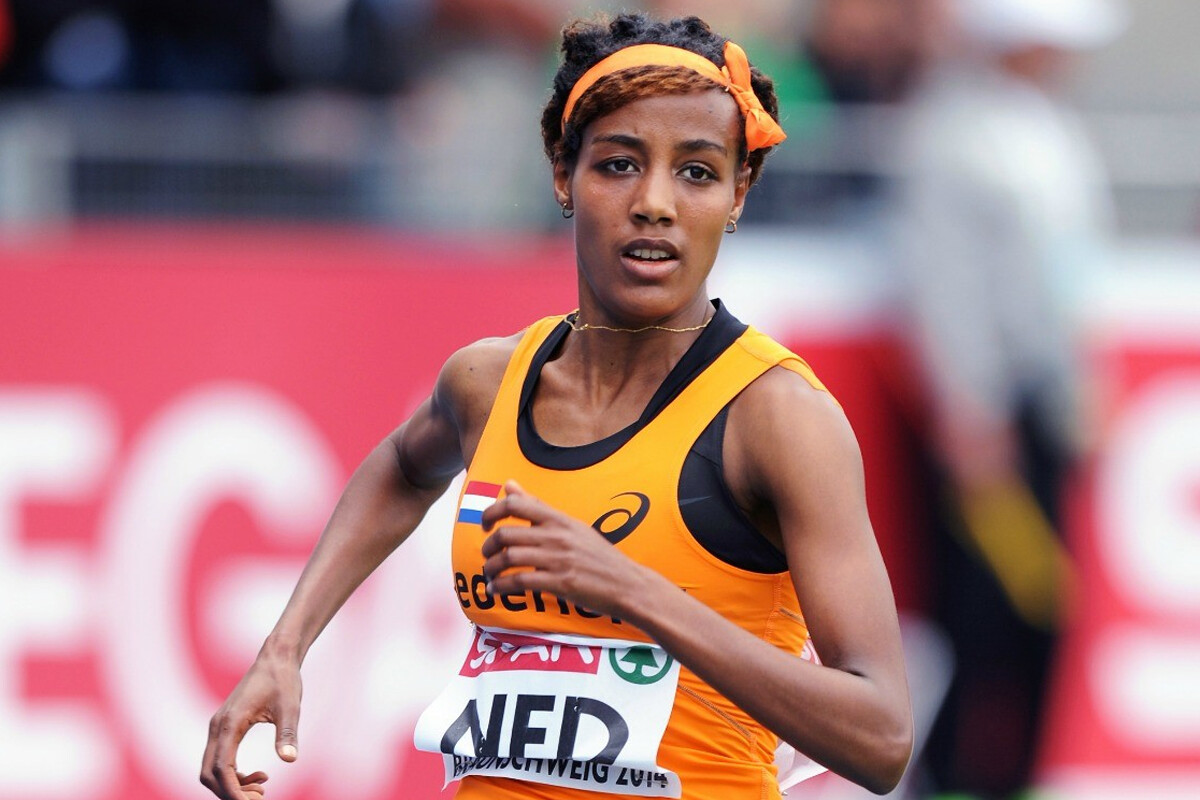
The Paris 2024 marathon course went down as one of the toughest and most challenging in Olympic history, taking place in grueling conditions and featuring one long, sustained climb and a second almost vertiginous climb around the 29km marker before a long, steep, giddy downhill stretch heading back into the city center.
Hassan said she studied the Paris course very well and familiarity gave her the confidence that she had what it takes to reign supreme in the French capital. She added that her Tokyo experience came in handy too.
"After I ran the Tokyo marathon, I looked at the Paris course. I started really practising to run 600m up, then 800m down. I did it so often that I couldn’t sit down, I couldn’t run. I almost injured myself," said the Tokyo Olympics 10000m champion.
“My coach said to me: ‘Why are you only focusing on this?’ And I said: ‘You didn’t see what I saw!’ Really, before Paris, I overtrained. I felt like I was done," the 5000m Tokyo Olympics champion maintained.
Her marathon win in an Olympic record of 2:22:55 came just 37 hours after Hassan had won 10,000m bronze, and six days after her 5000m bronze.
by Evans Ousuru
Login to leave a comment
French marathon record holder facing domestic violence charges
Morhad Amdouni, known for knocking over water bottles at the Tokyo Olympics, will be tried in court in February after allegedly attempting to strangle his wife.
French marathon record holder Morhad Amdouni has been reportedly summoned to appear before the Meaux criminal court in February for alleged domestic violence. Despite heated denials by the accused party, additional claims by his wife of sexual assault and rape are currently being investigated by French authorities.
The reported incident occurred after an argument broke out upon the partner learning of Amdouni’s infidelity; the victim claims her husband attempted to strangle her in front of their son. Amdouni was arrested at his Serris, France home on Sept. 18.
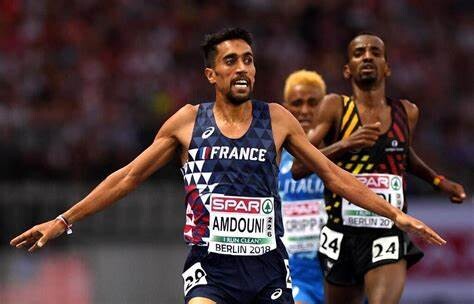
The father of two is facing charges of willful violence against his partner; the alleged assault reportedly left her unable to work for multiple days. The marathoner’s mother, brother and mistress underwent questioning regarding the domestic violence claim.
While no longer detained in custody, Amdouni has been placed under judicial supervision “for acts of domestic violence committed between September 2023 and September 2024,” as confirmed by the Meaux prosecutor’s office, until his court hearing, scheduled for Feb. 24, 2025. The prosecutor’s office is still investigating the victim’s further claims of sexual assault and rape.
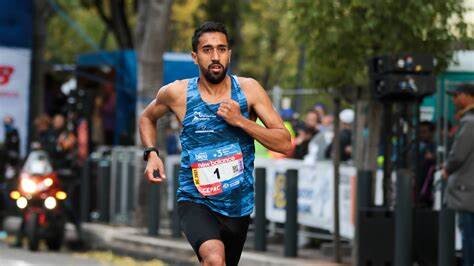
L’Equipe reports that Amdouni confirmed the arrest and his upcoming summons. “Arguments between couples can happen,” he told L’Equipe. “But to the point where it gets to this point, that’s a lot. I want us to be able to resolve these delicate matters between adults.”
In 2018, Amdouni became the first French athlete in history to win the 10,000m title at the European Athletics Championships in Berlin. He set the national record of 2:03:47 at the Zurich Seville Marathon in February. He did not compete at the Paris Olympics due to injury.
A notorious athlete
Amdouni has a reputation in the running world; the 36-year-old gained negative attention after knocking over elites’ drinks bottles at a water station, leaving no drinks for the athletes behind him.
The French runner also hit headlines in 2019, after media channels published alleged conversations between him and a doping supplier from 2017.
by Cameron Ormond
Login to leave a comment
Tokyo Marathon runner-up banned for doping
Former Tokyo Marathon runner-up Tsehay Gemechu was banned for four years because of suspected blood doping, the Athletics Integrity Unit said Thursday (Friday in Manila).
The 25-year-old Ethiopian also was disqualified from all her results and prize money earned since March 2020, including second place in the elite-level Tokyo race in March 2023. Her run of just under 2 hours, 17 minutes had ranked No. 24 in the women's all-time list.
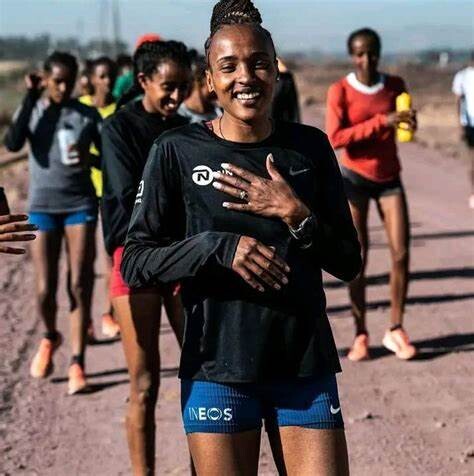
Gemechu also placed fourth over 5,000 meters at the 2019 world championships in Doha, Qatar, and ran in the 10,000 at the Tokyo Olympics held in 2021. She already was disqualified from that Olympics race for a lane violation. She did not finish the marathon at the 2023 worlds in Budapest, Hungary.
The AIU said Gemechu had suspicious blood values in her athlete biological passport. It can show indicators of doping over longer periods of time without the need for a positive test.
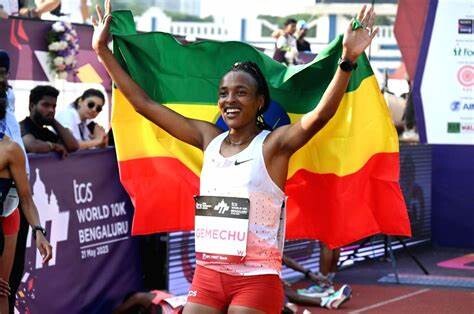
Gemechu gave 50 blood samples over a five-year period with those taken in March 2020 then April and May 2022 "indicative of blood manipulation," according to an independent doping tribunal's verdict.
She is banned until November 2027.
by Associated Press
Login to leave a comment
Tokyo Marathon
The Tokyo Marathon is a world-renowned annual marathon held in Tokyo, Japan. As one of the prestigious Abbott World Marathon Majors, it attracts elite and amateur runners from around the globe. The race holds World Athletics Platinum Label status, recognizing its high competitive standards, top-tier organization, and international appeal. Sponsored by Tokyo Metro, the Tokyo Marathon has grown into one...
more...'This is my favorite course' - Tamirat Tola reveals what gives him confidence ahead of New York Marathon title defence
Tamirat Tola is counting on experience to drive him to another New York Marathon victory as bids to make further history.
Ethiopia's Tamirat Tola is looking to become the first man ever to win both the Olympics and in New York marathons in the same season as he gears up for the New York City marathon on Sunday, November 3.
The Ethiopian faces a herculean task to defend his title despite his remarkable 2024 season.
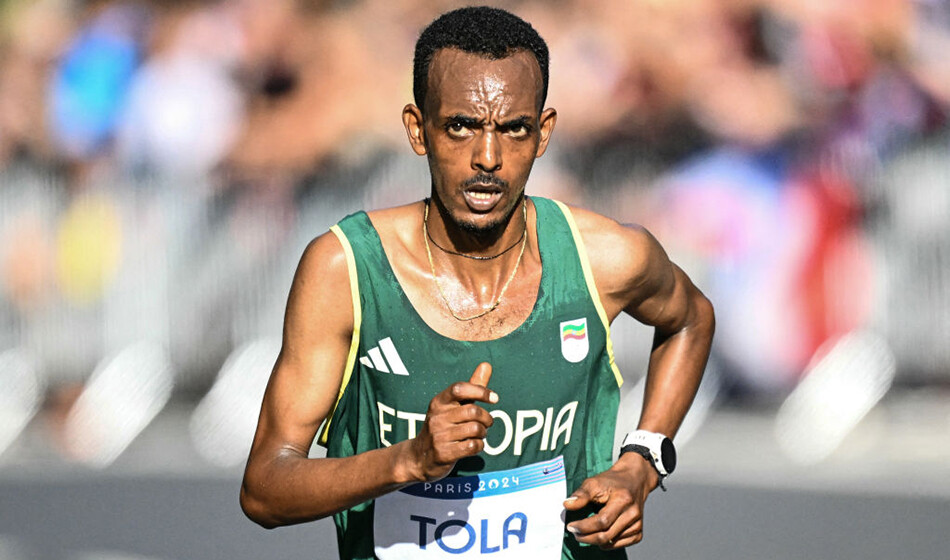
A year ago, the Ethiopian distance runner captured his first marathon major in New York City, and in July, he became the first man from his country to win an Olympic marathon title since Sydney 2000. Now a national hero, he wants to defend his title in New York and is banking on the Paris experience.
"This is my favorite course. My coach gave me very hard training coming in; that’s very important for me. My body is OK. On Sunday we will see,” Tola told Olympics.com. The 33-year-old bagged bronze both at the 2020 Tokyo Olympics and the 2023 London Marathon.
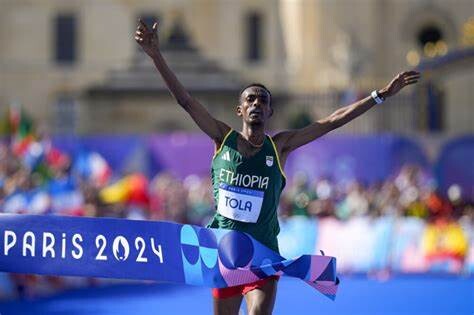
Tola is confident of crossing the finish line first and believes his mentality will make the difference. "I arrive with confidence; I feel good mentally, so I think I can win. I expect I'll have a good race. And I can see if there's anything that I can improve on moving forward," the 2022 World Championships gold medalist added.
Tola is trying for history on Sunday even though no man has successfully defended his title since Geoffrey Mutai won two in a row in 2011 and 2013 (the 2012 race was canceled); while only Peres Jepchirchir on the women’s side has won the Olympics and New York in the same year (2021).
by Evans Ousuru
Login to leave a comment
TCS New York City Marathon
The first New York City Marathon, organized in 1970 by Fred Lebow and Vince Chiappetta, was held entirely in Central Park. Of 127 entrants, only 55 men finished; the sole female entrant dropped out due to illness. Winners were given inexpensive wristwatches and recycled baseball and bowling trophies. The entry fee was $1 and the total event budget...
more...What the elites eat: Marathon Edition
Curious about what elite marathoners eat to fuel their peak performance? From carb-loaded pre-race meals to post-race burger feasts, here’s an inside look at what the elites eat before, during, and after a marathon.
As runners and human beings, we’re naturally curious, slightly nosy people. With information instantly available with the twitch of a finger across our iPhone screens, this curiosity has never been easier to satisfy. Plus, many of our favorite runners are more transparent than ever about their training blocks, pulling back the blinds through social media to show what it takes to be the best. Which is why we’re ever-fascinated by the race-related nutrition strategy of elite runners, who often perform at superhero-like levels.
We asked a few elite marathoners what they eat surrounding race day—pre-race dinner, pre-race breakfast, and post-race celebration—so you don’t have to.
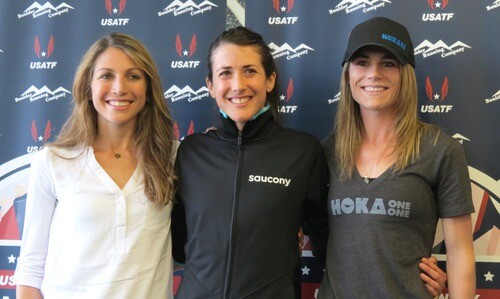
Note: One sentiment echoed among all of the athletes interviewed was that their diets are personal and have gone through lots of trial-and-error to be finessed to their specifications. No lifestyle should be replicated exactly.
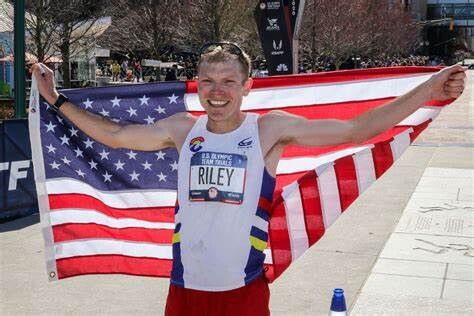
35, Boulder, Colorado
About him: First American and ninth overall finisher in the 2019 Chicago Marathon (2:10:36). Placed second at the 2020 U.S. Olympic Trials Marathon (2:10:02); Finished 28th in Tokyo Olympics marathon (2:16:26). After a second round of double Haglund’s surgery in 2022, he’s back in top form and running the 2024 New York City Marathon on November 3.
The night(s) before a race:
“I start thinking about meals two nights out, and I go carb-heavy on both. For the first night, I like to have Thai food, usually a noodle dish, and a side of rice. The only thing I’ll really avoid is spice since I’ve had issues from it a couple times. The night before, I do pasta, usually a marinara (that’s what a lot of races provide for the elite athletes), but a good pesto sauce works well, too. I mostly stay away from the creamy sauces. I don’t like to get too much more specific—you never know exactly what’s going to be available, so I try not to make particular foods part of my routine.”
Race morning:
“Race mornings I’ll get up at least three hours before (I prefer four, but with 7 to 8 A.M. starts, that becomes a little counter-productive), I’ll go for a short walk with some skipping or something, just to get the body moving. My first choice for breakfast is oatmeal with peanut butter, honey, and a little fruit mixed in. And at least one, usually two cups of coffee. It’s not something to avoid, but I recommend making sure that you have more than just simple carbs (cereal, muffin, etc), I find that if there isn’t at least some protein, I start getting that ‘empty’ feeling during my warmup, and if that mixes with the adrenaline, I feel real queasy. If I’m taking gels, I take one on the start line, maybe five minutes before. I also like Generation UCAN, which I’ll sip as I’m going through my drills, maybe half an hour out.”
During the race:
“I like to get my calories from gels and have just electrolytes in my bottles. Most major marathons provide drink stations every 5K, and I’ll drink about 8-10 oz of SOS per bottle (there can be splashing, and you never get it all out). I’ll take Roctane gels before every other drink station (every 30 minutes or so).”
Post-race meal:
“Most races I want a hash—lots of potatoes with some eggs, bacon, cheese, and veggies all mixed up, but after marathons my stomach takes a while to settle down, so I’m more in a lunch mood. So my go-to post-race meal is a big bistro bacon cheeseburger, ideally with an onion ring and barbecue sauce, side of fries, and a beer. I mostly stay away from fried foods during a build up, but I always take at least a week off after a marathon and at this point, that beer and burger is almost a Pavlovian ‘vacation time’ signal for my whole body.”
41, Flagstaff, Arizona
About her: She’s the fourth-fastest American woman in history based on her personal best (2:20:2) at the 2020 Marathon Project; Second-fastest American female half-marathon runner and former American record-holder (1:07:15). Most recently, she was 18th overall and the women’s master champion in the 2024 Chicago Marathon (2:30:12).
The night(s) before a race:
“Rice with chicken. I skip the veggies to not risk having to make a bathroom stop in the race.”
Pre-race breakfast:
“Two scoops of UCAN energy powder with whey protein, and a little bit of almond butter.” Bonus, Hall credits her husband, Ryan Hall, as being the best coffee maker, brewing pour-over, medium roast coffee blended with butter.
During the race:
Ketone-IQ—peach flavored.
Post-race meal:
“My favorite post-meal race is Thai food. I’m usually eating a lot of boring food before the race, so I want something spicy and more flavorful after.”
Bonus—Lunch during training blocks:
“Two scoops of UCAN powder, two pieces of gluten-free bread with Kerrygold Butter.”
36, Boulder, Colorado
About her: Won the 2019 Grandma’s Marathon and finished ninth in the 2020 U.S. Women’s Olympic Trials Marathon in 2:30:39. She was the top American finisher in the Boston Marathon in 2021 (fifth, 2:27:12, ) and 2022 (10th, 2:25:57). In January, she placed ninth in the Houston Half Marathon in a new personal best of 1:08:52.
The night(s) before a race:
“I always have the same thing. Basically, a couple cups of white rice and a chicken breast is where I tend to fall. White rice is going to fuel the most carbs per serving. I used to mix up potatoes and white rice, but for me, I digest white rice well, I feel better, it’s easy to find, simple, and works well.
I don’t care about spices—and I’m usually not making it myself if I’m not at home. Typically, before races, there’s a pre-race dinner, and chicken is an option. I wouldn’t do any cream-based sauces. If it tastes good, great. If it doesn’t, great. I don’t care.”
Pre-race breakfast:
“Typically it’s oatmeal with a tablespoon of peanut butter, a banana, and maybe honey. I’m not 100 percent satisfied with my pre-race meal, because sometimes it can feel a bit heavy in my stomach, because oatmeal does have some fiber. So I try to play around with things. Sometimes I’ll do a couple pieces of toast with a banana and peanut butter. I can switch between those two. Try to get 500-600 calories in, mostly from carbs, two-three hours before the race. Plus, I drink coffee with half-and-half.
Post-race meal:
“Immediately after the race, I honestly will grab whatever is available. Typically, after a race, we’ll be shuttled to a post-race holding area where you’re waiting, so there are usually refreshments there. I’ll slam Gatorade—anything with sugar and electrolytes. Maybe there’s my own bottle with Skratch in it. Banana, a protein shake. I’m pretty open, as long as it’s immediate.
And as far as later, it completely depends. I’m trying to do a better job at this—especially after a major marathon—but it kind of takes a while. You might get drug-tested, then shuttled back to your hotel, shower, then six hours later you’re like, ‘I need to eat.’ If it’s a marathon, I love a big burger with fries—the classic stuff, lettuce, tomato, onion, and tons of ketchup and mayo. That’s something my body would crave. Fries are my favorite food ever that I don’t typically eat during a marathon cycle.”
35, Louisville, Colorado
About her: Finished sixth in the 2017 London Marathon (2:25:38), seventh in the 2019 New York City Marathon (2:28:23), eighth in the 2019 Chicago Marathon (2:29:06), eighth in the 2021 New York City Marathon (2:27:00). Most recently, an Achilles injury forced her to pull out of the 2024 Chicago Marathon days before the race.
The night(s) before a race:
“I do 72-hours of carb-loading. So, obviously, in the build to that, carbs are key. Three days out from the race is when I start it. It is always the same. The night before, I have pasta with marinara sauce, and I don’t do a lot of protein with that. I do love angel hair, that’s my go-to. I also like rigatoni. Plus, I’ll have some type of bread and salad.”
Pre-race breakfast:
“The morning of, I always do a plain bagel and peanut butter with a banana. I’ve done that since high school. And I do an Americano with two shots. I eat that threeish hours out from the race.
During the race:
“I’ll take my first gel 15 minutes before the start of the race. I’ve been all over the place with what I take, but right now, Neversecond. Big fan of their Cola C30 gels. They worked wonders for me during this build. I had some stomach issues earlier in the build with long runs and couldn’t quite figure out what was going on, so I switched up my nutrition during, so never second has been a godsend.”
Post-race meal:
“After the race, it’s hard because usually my stomach is a mess. Not only did you just run really hard for two and a half hours, but you’re taking all this fuel during, so I have a really hard time eating solids immediately after the race. My choice if I can get it is soda. I’m not a big soda drinker, but after a marathon, all I want is a Coke, Sprite, or Ginger Ale. I’m always really thirsty when I finish.
Then later when I feel like eating, I always do a burger (stacked with all the fixings—sometimes adding bacon) and sweet potato fries with ranch. I never opt out of Ranch. Anything I can dip ranch in is a plus for me. And I order a Blue Moon. I’m not a beer drinker, but that’s what I want after a marathon.”
by Mallory Arnold
Login to leave a comment
Canadian International Justin Kent To Race TCS Toronto Waterfront Marathon
While the international field for the 2024 TCS Toronto Waterfront Marathon has rarely been stronger the number of elite Canadian entries continues to grow.
Justin Kent, who represented Canada at the 2023 World Championships in Budapest, has now added his name to the medal contenders for this Canadian
Championships which are run concurrently within this World Athletics Elite Label race.
Kent says he has prepared well and is looking to beat his personal best time of 2:13:07, recorded while finishing 10th in the 2023 Prague Marathon. That race led to his call-up for a place on Canada’s 2023 World Championships team with his long-time training partner, Ben Preisner (2:08:58 personal best).
“Budapest was definitely a memorable experience,” Kent remembers, “Having my team-mate Ben there, and we ran kind of side by side which was really cool. It was pretty special. You get to wear that Canadian singlet longer than in any other event. It was awesome.
“It was hot so Ben and I had pretty strict orders to run conservatively the first half then swallow up as many bodies as we could in the second half. I still have this sensation of us - it felt like we just hopped into the race that last ten kilometres as we were going by guys that were just zombies because they were so depleted. We were like 80th at halfway and we ended up 27th (Preisner) and 29th.”
he will be in Toronto alongside his friend as he has offered pacemaking duties.
The pair will no doubt bring that commonsense approach to the race taking the weather conditions into account. During this buildup Kent has been encouraged by the fact both coach Richard Lee and Preisner have seen workouts that indicate Kent is more than capable of running around 2:10.
Only nine Canadians have gone under 2:11 and just four have beaten the 2:10 barrier.
“I don’t necessarily want to get ahead of myself. I have definitely learned the hard way of being too ambitious,” Kent says. But I know, definitely, I am the fittest I have ever been. It depends on the weather and the pacing.
“There is a pace group (going for) 2:10 I’d like to be maybe a little bit quicker the first half and see what I can do that would set me up well to run in the 2:10’s. That’s easier said than done.”
Kent will also be accompanied in Toronto by his wife of two years, 800m runner Lindsey Butterworth, who represented Canada at the 2022 Commonwealth Games and the 2021 Tokyo Olympics, and their four-month-old daughter, Willa.
With a family to support Kent continues to do coaching work with Mile2Marathon which he views as a chance to connect to the running community. His main source of income, however, is working as a marketing specialist for a Vancouver-based startup company called Stoko, which manufactures supportive apparel used to overcome injuries.
“I am in the office four days a week. They are flexible with my hours to get my training in or sneak out early to get my training in,” he explains. “I have been with the company for just coming up to a year.”
Meanwhile Butterworth is on maternity leave from her job as a community health specialist for Fraser Health Authority. She is back running and will, in fact, compete in the Toronto Waterfront 5km.
As for his objectives with this year’s Toronto Waterfront Marathon, Kent recognizes that a national championship offers bonus World Athletics points used in the qualification for next year’s World Championships in Tokyo. The automatic qualifying standard in the men’s marathon has been lowered to 2:06:30
“Definitely I think with the new standard of 2:06:30 a lot of guys are going to be trying to get bonus points at races,” he concedes. “I think that is more my aim this whole build is to win a national championship. I think the (fast) time will come with that.
“I haven’t thought too much beyond October 20th. I know if I can run well it would give me a great opportunity to make the team next year. But the main goal is still to come away with a national title or at least contend for one.”
by Paul Gains
Login to leave a comment
Ketema and Takele head entries for 50th Berlin Marathon
Ethiopia’s Tigist Ketema and Tadese Takele start as the fastest in the fields and will be hoping to lead the way when they line up for the BMW Berlin Marathon, a World Athletics Platinum Label road race, on Sunday (29).
Ketema, previously better known as an 800m and 1500m specialist, made her mark in the marathon in Dubai in January as she ran 2:16:07, a time that places her ninth on the women’s world marathon all-time list. She then ran 2:23:21 to place seventh in London in April and Berlin will be her first race since then.
“I have prepared for a personal best and plan to run the first half on Sunday in around 68 minutes,” she said. “I hope it won't be too cold because I prefer to run in slightly warmer weather.”
Ketema is one of three women with sub-2:20 PBs on the entry list, as her competition includes her compatriots Genzebe Dibaba and Yebrugal Melese, who have respective PBs of 2:18:05 and 2:19:36.
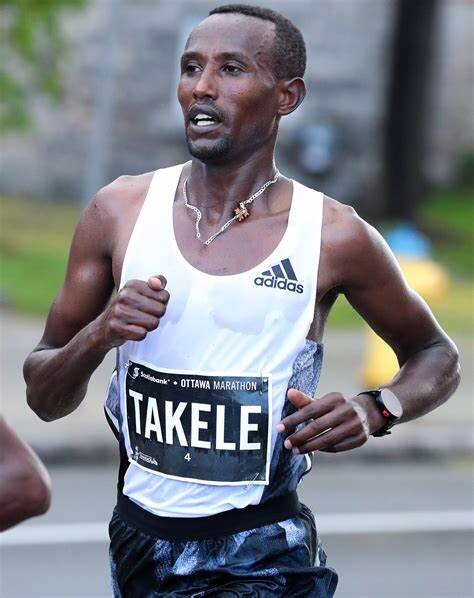
Dibaba ran that PB on her debut in Amsterdam in 2022 and she clocked 2:21:47 in Chicago a year later. “I saw Haile Gebrselassie run two world records in Berlin on TV and since then I've always wanted to run in Berlin,” she said. “Now the time has come. It would be a success for me if I ran a personal best.”
Another eight women on the entry list have dipped under 2:22 for the marathon in their careers so far, including Mestawot Fikir (2:20:45), Azmera Gebru (2:20:48), Sisay Gola (2:20:50), Fikrte Wereta (2:21:32) and Aberu Ayana (2:21:54), as well as Japan’s Mizuki Matsuda (2:20:52) and Ai Hosoda (2:21:42).
Germany’s Melat Kejeta is also part of that group, having clocked 2:21:47 in Dubai in January. She placed sixth at the Tokyo Olympics but was unable to finish the Olympic marathon in Paris due to stomach problems.
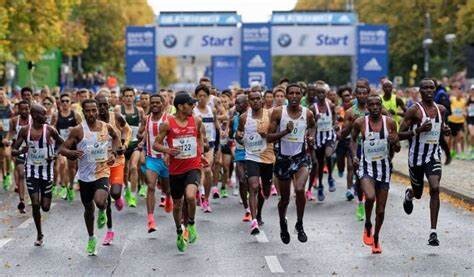
A total of 13 world records have so far been set in the Berlin Marathon, the most recent being the 2:11:53 by Tigist Assefa – a training partner of Ketema – in last year’s women’s race.
The men’s title on that occasion was won by Eliud Kipchoge, as he claimed a record fifth victory.
Kipchoge does not return this year but Takele does, following his third-place finish in last year’s race in a PB of 2:03:24. That was his most recent race due to injury, but he says he is now fit and ready to run. “I’ve trained very well,” he said, “and expect to run a strong race.”
Another four men to have dipped under 2:05 feature on the entry list, including Kenya’s Cybrian Kotut, who ran his PB of 2:04:34 when finishing second in Amsterdam last year, and Ethiopia’s Hailemaryam Kiros and Bazezew Asmare, who respectively clocked 2:04:41 in Paris in 2021 and 2:04:57 in Amsterdam in 2022.
Kenya’s former world half marathon record-holder Kibiwott Kandie races the marathon for the third time and will be looking to build on the PB of 2:04:48 he set in Valencia last year as he hunts for a first win over the distance.
They will be joined by athletes including Kenya’s Samwel Mailu, the world half marathon bronze medallist who set a course record of 2:05:08 to win the Vienna City Marathon last year and continues his comeback after injury, and Ethiopia’s Milkesa Mengesha, who finished sixth at the World Championships last year and has a best of 2:05:29.
Elite fields
Women
Tigist Ketema (ETH) 2:16:07
Genzebe Dibaba (ETH) 2:18:05
Yebrugal Melese (ETH) 2:19:36
Mestawot Fikir (ETH) 2:20:45
Azmera Gebru (ETH) 2:20:48
Sisay Gola (ETH) 2:20:50
Mizuki Matsuda (JPN) 2:20:52
Fikrte Wereta (ETH) 2:21:32
Ai Hosoda (JPN) 2:21:42
Melat Kejeta (GER) 2:21:47
Aberu Ayana (ETH) 2:21:54
Calli Hauger-Thackery (GBR) 2:22:17
Bekelech Gudeta (ETH) 2:22:54
Lisa Weightman (AUS) 2:23:15
Betelihem Afenigus (ETH) 2:23:20
Veronica Maina (KEN) 2:24:46
Bosena Mulatie (ETH) 2:26:59
Alisa Vainio (FIN) 2:27:26
Sonia Samuels (GBR) 2:28:04
Nora Szabo (HUN) 2:28:25
Philippa Bowden (USA) 2:29:14
Pauline Esikon (KEN) debut
Men
Tadese Takele (ETH) 2:03:24
Cybrian Kotut (KEN) 2:04:34
Hailemaryam Kiros (ETH) 2:04:41
Kibiwott Kandie (KEN) 2:04:48
Bazezew Asmare (ETH) 2:04:57
Samwel Mailu (KEN) 2:05:08
Milkesa Mengesha (ETH) 2:05:29
Haymanot Alew (ETH) 2:05:30
Philimon Kipchumba (KEN) 2:05:35
Josphat Boit (KEN) 2:05:42
Dejene Megersa (ETH) 2:05:42
Enock Onchari (KEN) 2:05:47
Oqbe Ruesom (ERI) 2:05:51
Justus Kangogo (KEN) 2:05:57
Haimro Alame (ISR) 2:06:04
Ashenafi Moges (ETH) 2:06:12
Asbel Rutto (KEN) 2:07:04
Samuel Tsegay (SWE) 2:06:53
Yohei Ikeda (JPN) 2:06:53
Stephen Kiprop (KEN) 2:07:04
Hendrik Pfeiffer (GER) 2:07:14
Kento Kikutani (JPN) 2:07:26
Melaku Belachew (ETH) 2:07:28
Godadaw Belachew (ISR) 2:07:45Y
uhei Urano (JPN) 2:07:52
Guojian Dong (CHN) 2:08:12
Filimon Abraham (GER) 2:08:22
Haftom Welday (GER) 2:08:24
Sebastian Hendel (GER) 2:08:51
Olonbayar Jamsran (MGL) 2:08:58
Haftamu Gebresilase (ETH) debut
by World athletics
Login to leave a comment
BMW Berlin Marathon
The story of the BERLIN-MARATHON is a story of the development of road running. When the first BERLIN-MARATHON was started on 13th October 1974 on a minor road next to the stadium of the organisers‘ club SC Charlottenburg Berlin 286 athletes had entered. The first winners were runners from Berlin: Günter Hallas (2:44:53), who still runs the BERLIN-MARATHON today, and...
more...Olympic heptathlete found safe after two-week disappearance
The two-time Olympic heptathlete Odile Ahouanwanou of Benin has returned home "safe and sound" after missing for 17 days.
Olympic heptathlete Odile Ahouanwanou of Benin has been found safe in France after disappearing for two weeks. The 33-year-old was last seen on Sept. 10, after dropping her child off at a daycare center in Sotteville-lès-Rouen, France.
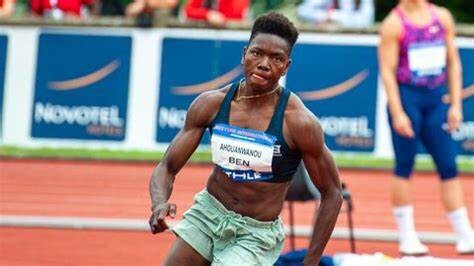
According to a report from Le Parisien, Ahouanwanou returned home on the night of Sept. 26. However, the details surrounding her disappearance remain unclear and police are continuing to investigate.
Ahouanwanou’s sudden disappearance was a mystery in France and Benin, where she is a prominent figure in the sport of track and field. She is a double gold medalist at the African Championships and the Beninese national record holder in the heptathlon.
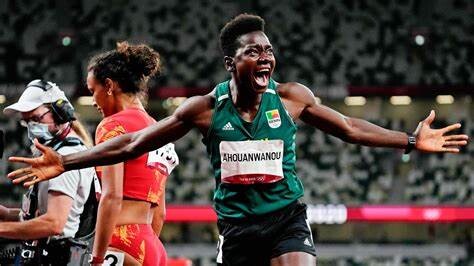
On Sept. 18, Ahouanwanou was placed on the wanted persons list. Investigators looked into her lifestyle habits, interviewed members of her inner circle, and reviewed data from her mobile phone and bank accounts. French police are still considering the possibility of a voluntary disappearance. The investigation is still ongoing.
Despite intensive searches and public appeals, the exact reason behind her disappearance has not yet been disclosed.
Ahouanwanou placed 15th in the heptathlon at the 2020 Tokyo Olympics and finished eighth at the 2019 World Championships in Doha. Her best score of 6,274 points is the national record for Benin.
by Marley Dickinson
Login to leave a comment
2024 Bank of America Chicago Marathon Elite Athlete: Daniel Ebenyo will make his long-awaited marathon debut
Kenyan long-distance runner Daniel Ebenyo will make his long-awaited marathon debut at the 2024 Bank of America Chicago Marathon.
Ebenyo has yet to run a competitive marathon. But in his most recent race, he won the 2024 Berlin Half Marathon, running a scorching 59:30.
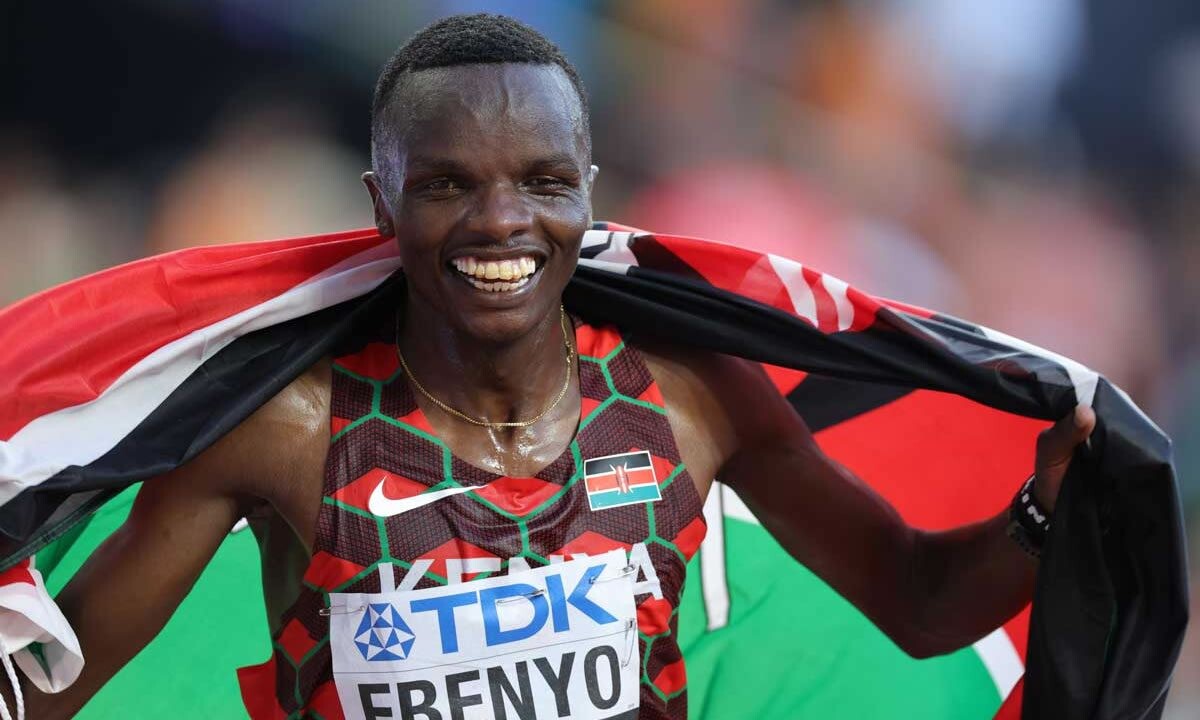
Ebenyo, 29, is the reigning World silver medalist in the 10,000-meter run and in the World Championship Half Marathon.
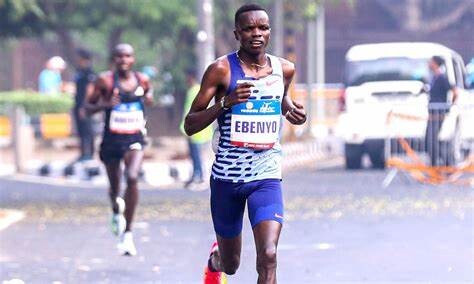
He's a three-time Kenyan national champion in the 5,000-meter run; he competed at the 2020 Tokyo Olympics in the same event, finishing 10th.
He's run a slew of half-marathons. His best time of 59:14 came from the World Athletics Running Championships, where he took second place.
Login to leave a comment
Bank of America Chicago
Running the Bank of America Chicago Marathon is the pinnacle of achievement for elite athletes and everyday runners alike. On race day, runners from all 50 states and more than 100 countries will set out to accomplish a personal dream by reaching the finish line in Grant Park. The Bank of America Chicago Marathon is known for its flat and...
more...Two-time Olympic heptathlete reported missing in France
On Sept. 10, Odile Ahouanwanou of Benin dropped off her son at a nursery and has not been seen since.
French authorities are searching for Odile Ahouanwanou, an Olympic heptathlete, who has been missing since Sept. 10. The 33-year-old, who represented the small west African nation of Benin at the 2012 and 2020 Olympics, was last seen in Rouen dropping off her child at a nursery on the morning of Sept. 10. She did not return to pick up her son, and was later reported missing.
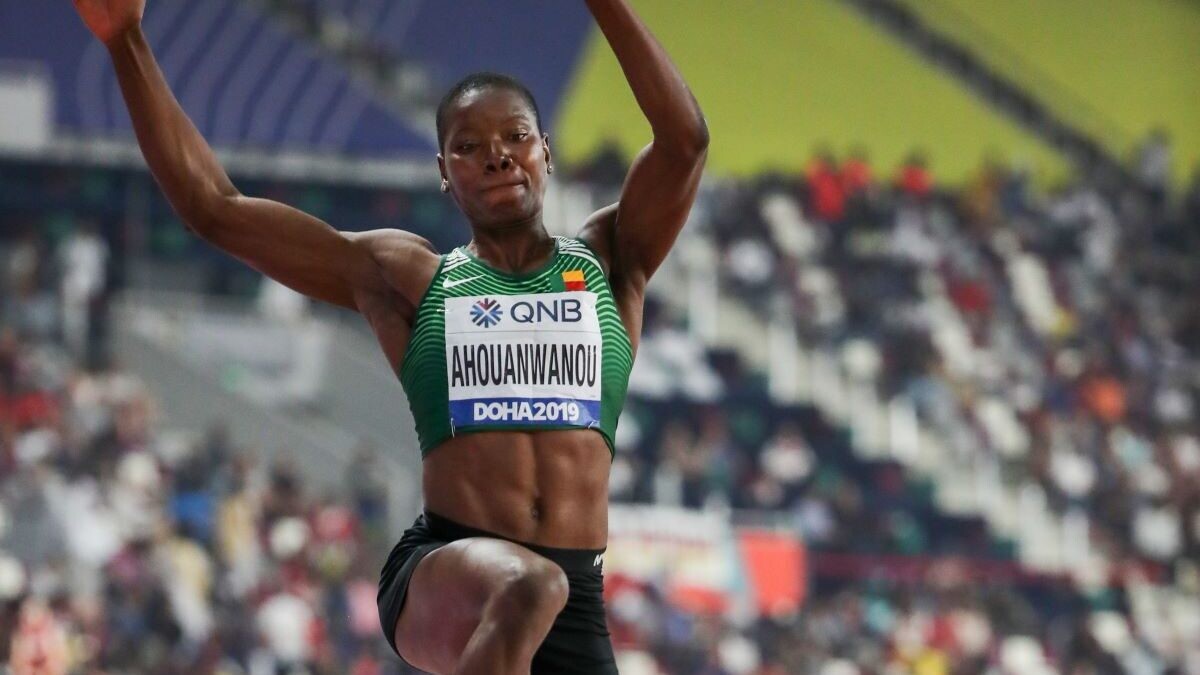
According to a report from France Bleu, the police are considering the possibility of a voluntary disappearance. This scenario refers to a situation where a person deliberately goes missing without being a victim of a crime or other external factors. People may voluntarily disappear for various personal reasons, such as to escape financial difficulties or to start a new life.
Ahouanwanou placed 15th at the 2020 Tokyo Olympics and eighth at the 2019 World Championships in Doha. Her best score of 6,274 points stands as the Benin national record.
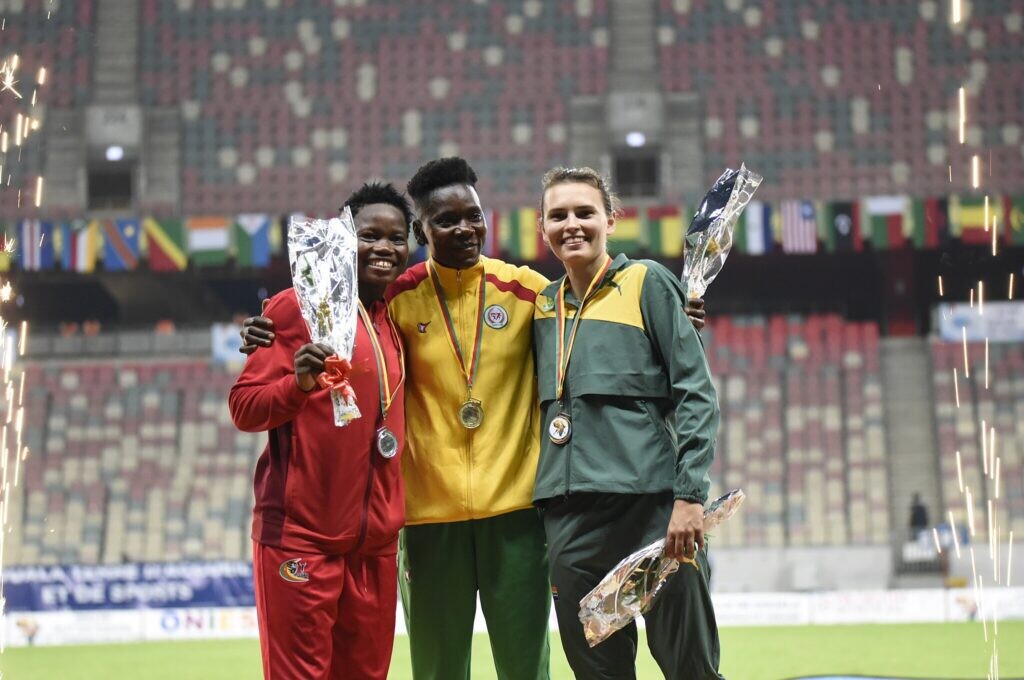
French police have reportedly registered Ahouanwanou in the national wanted persons file, questioned witnesses and examined her daily habits. They are also working with phone operators, hospitals, banks and airlines to help trace her steps. The athlete’s Volkswagen Polo is believed to be in use, although no sightings have been confirmed.
Authorities stress that, at this stage, there is no evidence to suggest foul play, but the investigation remains open. Her son is currently in the care of a family friend. The police are looking to the public for any information that could help locate Ahouanwanou, and her disappearance remains a mystery.
by Marley Dickinson
Login to leave a comment
Tola and Obiri lead elite fields for New York City Marathon
Organisers of the 2024 TCS New York City Marathon have revealed a world-class line up for this year’s World Athletics Platinum Label road race on 3 November, led by defending champions Tamirat Tola and Hellen Obiri.
Since winning last year in a course record of 2:04:58, Tola won the Olympic title in Paris in a Games record of 2:06:26. What made his feat all the more impressive is that he was only drafted into the Ethiopian team two weeks before the Games, having initially been named as a reserve.

“I’m excited to defend my title in New York, especially coming off an Olympic-record marathon performance,” said Tola. “The hilly course and crowds in Paris definitely prepared me well for the bridges and spectators in New York, where maybe I can go even faster this year.”
Two-time Olympic medallist Bashir Abdi will also be one to watch; the Belgian earned silver at the recent Olympics, having taken bronze at the Tokyo Olympics in 2021 and at the 2022 World Championships.
Three past winners – all from Kenya – are also in the field: 2022 champion Evans Chebet, 2021 winner Albert Korir, and 2019 and 2017 victor Geoffrey Kamworor. Chebet has twice won the Boston Marathon, and has finished first or second in 13 marathons. Kamworor has made it on to the podium in all four of his New York Marathon appearances.
Fellow Kenyan Abel Kipchumba, who won this year’s NYC Half Marathon, will be making his New York City Marathon debut.
The US charge is led by Conner Mantz and Clayton Young, who finished eighth and ninth respectively in the Paris Olympic marathon.
Women’s Open Division
Obiri is a three-time Olympic medallist and seven-time world medallist. Last year the Kenyan became the first woman in 34 years to win both Boston and New York in the same calendar year. So far this year, she retained her Boston Marathon title and went on to earn bronze in the Olympic marathon.
“There’s no place like New York, and I am so ready to defend my title,” said Obiri. “I have been racing very well on the roads in the US, and I hope I can have another good day that sees me in contention once we enter the final stages in Central Park.”
Fellow Kenyan Sharon Lokedi, the 2022 NYC Marathon winner, will return after finishing third last year and fourth in the Olympic marathon in Paris. The Kenyan delegation will also include 2010 champion Edna Kiplagat, four-time Olympic medallist Vivian Cheruiyot, and Sheila Chepkirui, who owns the fastest personal best in the field.
Ethiopia’s Tirunesh Dibaba will make her New York City Marathon debut and is one of the world’s most accomplished long-distance runners as a three-time Olympic and 16-time world champion. She will be joined by compatriot Senbere Teferi.
Dakotah Lindwurm, the top US finisher in the marathon at the Paris Olympics, will lead the US contingent.
Elite field
WomenSheila Chepkirui (KEN) 2:17:29Tirunesh Dibaba (ETH) 2:17:56Vivian Cheruiyot (KEN) 2:18:31Senbere Teferi (ETH) 2:19:21Dera Dida (ETH) 2:19:24Edna Kiplagat (KEN) 2:19:50Eunice Chumba (BRN) 2:20:02Sharon Lokedi (KEN) 2:22:45Hellen Obiri (KEN) 2:23:10Fatima Gardadi (MAR) 2:24:12Kellyn Taylor (USA) 2:24:29Fabienne Schlumpf (SUI) 2:24:30Aliphine Tuliamuk (USA) 2:24:37Dakotah Lindwurm (USA) 2:24:40Lily Partridge (GBR) 2:25:12Jessica McClain (USA) 2:25:46Des Linden (USA) 2:25:55Tristin Van Ord (USA) 2:25:58Khishigasaikhan Galbadrakh (MGL) 2:26:32Maggie Montoya (USA) 2:28:07Katja Goldring (USA) 2:29:01Savannah Berry (USA) 2:29:13
MenEvans Chebet (KEN) 2:03:00Gabriel Geay (TAN) 2:03:00Bashir Abdi (BEL) 2:03:36Tamirat Tola (ETH) 2:03:39Geoffrey Kamworor (KEN) 2:04:23Abdi Nageeye (NED) 2:04:45Addisu Gobena (ETH) 2:05:01Abel Kipchumba (KEN) 2:06:49Albert Korir (KEN) 2:06:57Conner Mantz (USA) 2:07:47Clayton Young (USA) 2:08:00Rory Linkletter (CAN) 2:08:01Callum Hawkins (GBR) 2:08:14Ser-Od Bat-Ochir (MGL) 2:08:50Elkanah Kibet (USA) 2:09:07Noah Droddy (USA) 2:09:09Jonny Mellor (GBR) 2:09:09Jared Ward (USA) 2:09:25Colin Bennie (USA) 2:09:38Futsum Zienasellassie (USA) 2:09:40CJ Albertson (USA) 2:09:53Nico Montanez (USA) 2:09:55Yuma Morii (JPN) 2:09:59
by World Athletics
Login to leave a comment
Tristan Woodfine Chasing Canadian Title at TCS Toronto Waterfront Marathon
The past two years have been mostly good to Tristan Woodfine as he has recorded personal bests over several distances most significantly with his 2:10:39 finish at the 2024 Houston Marathon in January.
That makes him the sixth fastest Canadian marathoner of all time.
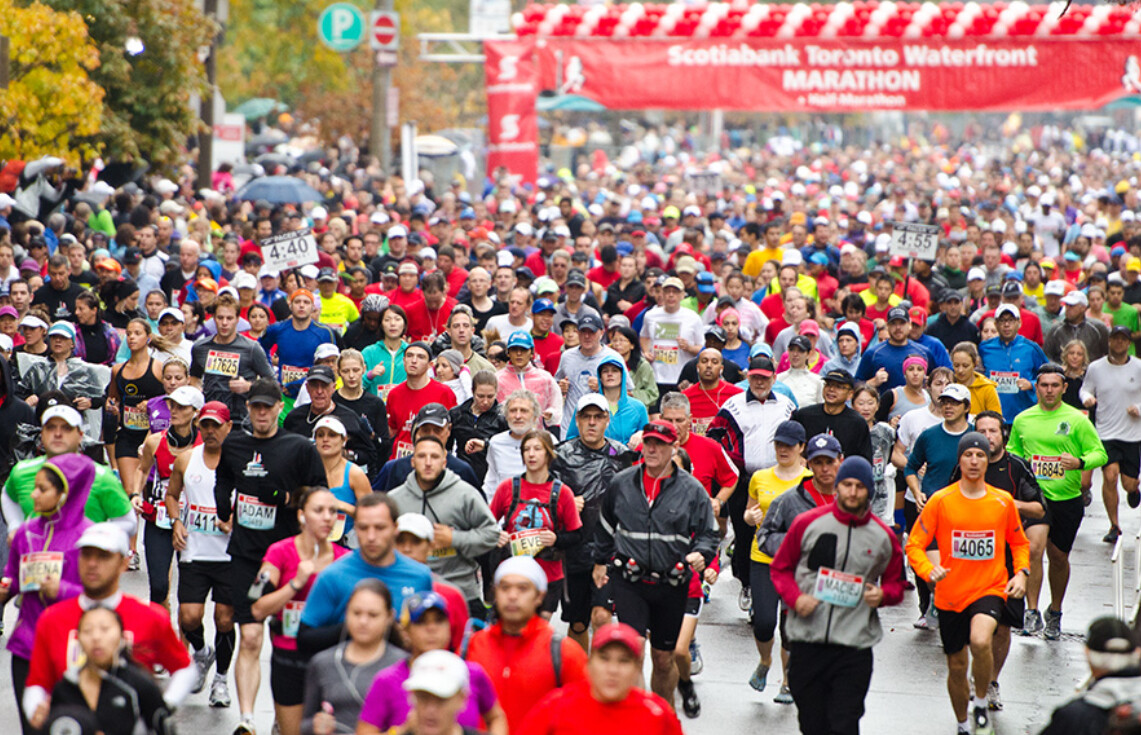
This uplift in fortune coincides with his seeking coaching advice from none other than two-time Canadian Olympic marathoner Reid Coolsaet.
Now the 31-year-old Woodfine has confirmed he will race the 2024 TCS Toronto Waterfront Marathon, October 20th, with the objective of running both a fast time and earning the Canadian Marathon Championship title. The event doubles as a World Athletics Elite Label race as well as the Athletics Canada National Marathon Championships.
“It’s local, close, the support is good,“ he says of his choice for an autumn marathon. “The Canada Running Series (team) always does a great job. I have run the course before.
“Getting under 2:10 would be nice, finally. We will see how the rest of the build goes. Ten weeks is still a long timeand things can change for better or worse - hopefully for better - and by the time Toronto comes around I’d definitely love to get a PB and make another step forward there.”
Woodfine, who is currently living just outside of Eganville, Ontario with his wife Madeline, ran the Toronto Waterfront Marathon once before. That was in 2019 when he finished 13th in a time of 2:13:16. But he has twice won the Toronto Waterfront Half Marathon (2022 and 2017) - run concurrently with the full marathon - and has also had success at the Toronto Waterfront 10K. That race includes a long section of the marathon course too.
Credit for his upward trajectory goes to Coolsaet.
“Reid has had so much experience in the sport,” Woodfine says of his coach. “He has got a lot of valuable insights on the training front and beyond. He has done a lot of racesand he knows the deal with which races might work well for your goals, that kind of thing.
“He has got so much experience on any aspect of training, racing, nutrition, injuries, he has seen so much he can really help out.”
One of the differences in Woodfine’s program since his association with Coolsaet comes as a surprise but might well be a valuable lesson for all runners.
“Some of the workouts in the base training period are almost a bit easier than what I was doing (before),” he explains. “I think maybe before I was pushing a bit too hard too early in the training base. So backing off a little bit when coming into the marathon block was probably one of the bigger things.”
Like most runners he has had his share of hiccups, most notably a nagging case of plantar fasciitis that saw him drop out of the Boston Marathon back in April. He blames a mechanical deficiency in his running form. But that is behind him now and as he enters his marathon specific buildup phase he is full of optimism.
Recently he raced the Falmouth Road Race in Massachusetts finishing 11th in 33:33 over the 7-mile course. A successful result at the shorter distance has added to his confidence.
“The last few weeks leading into Falmouth I did get my longer mileage in,” he reveals. “I got a 37km long run in there just to get things ready. The week before Falmouth was 220km. In this (Toronto) buildup block I would like to get up to a maximum of 250 or 260km.”
Besides a personal best, Woodfine is fully aware that a national championship offers the chance for maximum World Athletics points that would count heavily in 2025 World Championships qualifying. Those Championships are set for Tokyo.
“I talked to Reid about trying to qualify for Tokyo,” he admits. “I have had a few sit-downs (with him). I’d get a fair amount of points with another good performance with a strong time. A solid finish in Toronto would put me in a good position.”
Unlike many elite runners Woodfine doesn’t have a shoe sponsor. After completing his paramedic studies at the Ontario Health and Technology College he has put on hold a career in that field to focus on his running. To make ends meet he has been doing some online coaching, a sideline that continues to grow.
“I definitely love helping other runners achieve their goals,” he adds. “I also do some remote work for a pharmacy in the area. It’s best described as inventory and purchasing. It’s very flexible and works great with running.”
Like many elite runners the Olympic Games has been a target for Woodfine. In 2020 he beat the Tokyo Olympics qualifying standard running 2:10:51 at the London Marathon and thought he’d achieved his dream of being an Olympian. But when Cam Levins ran 2:10:14 in Austria six months later it was Levins who was chosen for the team and not Woodfine. This, despite the fact Woodfine had beaten Levins in London by well over a minute.
Despite falling short of the Paris Olympic standard with his Houston Marathon personal best he still harbours an Olympic dream.
“Yes it is still a goal. I try not to put as much emphasis on the Olympics being an ‘all or nothing’, a defining factor of success for my career,” he declares. “I think that can kind of end up making you miserable. Whether you are going to the Olympics or not. For sure, it’s a goal.
“I am in this for another Olympic cycle and hopefully I can be on the start line in LA - the third time is a charm. But I am really focused on each year and trying to enjoy each race for what it is.”
The TCS Toronto Waterfront Marathon is an obvious step forward in his career path.
by Paul Gains
Login to leave a comment
TCS Toronto Waterfront Marathon
The Scotiabank Toronto Waterfront Marathon, Half-Marathon & 5k Run / Walk is organized by Canada Running Series Inc., organizers of the Canada Running Series, "A selection of Canada's best runs!" Canada Running Series annually organizes eight events in Montreal, Toronto and Vancouver that vary in distance from the 5k to the marathon. The Scotiabank Toronto Waterfront Marathon and Half-Marathon are...
more...U.S. Olympians highlight field in 2024 Faxon Law New Haven Labor Day Road Race
Three U.S. Olympians highlight a competitive field set to run on Labor Day in the Faxon Law New Haven Road Race, the host of the USA Men's and Women's 20K Championship.
There's one Olympian competing in the women's field: Rachel Smith represented America at the Tokyo Olympics in the 5,000 meters and became this year's 15K National Champion.
Jess McClain finished fourth at this year's Olympic Trials Marathon.Virginia's Keira D'Amato leads the women's field. She set the course record when she won the race in 2022.
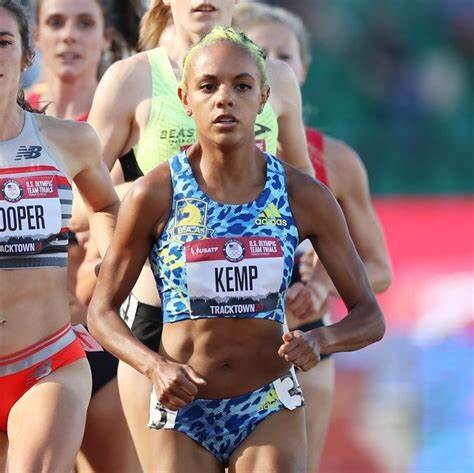
The 2021 race champion, Erika Kemp, will also be competing.
Moving over to the men's field, there are two runners with Olympic appearances. Woody Kincaid represented the U.S. in the last two Olympics. He ran the 10,000 meters in Paris and the 5,000 meters in Tokyo. This marks Kincaid's first 20K.
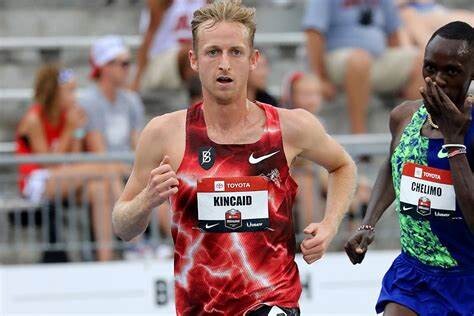
Hillary Bor is the other Olympian. He represented America in the 2016 Steeplechase. Another challenger will be Sam Chelanga, who has finished in the top three in five appearances in New Haven's 20K. Also competing is West Hartford's Ben Lanza, who is one of Connecticut's top distance runners.
The female and male 20K winners will receive the Ryan Shay Memorial Award. Shay passed away while participating in the 2007 Olympic Trials Marathon in New York City. The award is in recognition of Shay’s hard work and dedication to the sport, as well as longtime support of the New Haven Road Race.
"We're very excited about having many of the country's top runners compete in New Haven," said John Tolbert, Elite Athlete Coordinator in a release. "We have very deep Men’s and Women’s race fields. With a cool day, the men’s and women’s 20K American records could be in jeopardy.”
Labor Day is Sept. 2. The race will begin on the New Haven Green. The Kids Fun Run starts at 8:10 a.m. The 20K, Half Marathon and 5K all start at 8:30 a.m.
by Christine Butterfield
Login to leave a comment
New Haven Road Race
The Faxon Law New Haven Road Race, renowned as the longest-running USATF 20K National Championship, is scheduled for Monday, September 1, 2025 (Labor Day), in New Haven, Connecticut. This event will once again host the Men's and Women's USATF 20K National Championships, attracting elite athletes, including past champions and U.S. Olympians. Participants can choose from various race options, including the...
more...Ethiopia’s Roza Dereje To Race 2024 TCS Toronto Waterfront Marathon
Roza Dereje has raced just once in the last three years yet her commitment to the 2024 TCS Toronto Waterfront Marathon is a massive coup for this World Athletics Elite Label Race.
Twice she has dipped under the 2:20 barrier and can point to a personal best marathon time of 2:18:30 set when she won the 2019 Valencia Marathon.
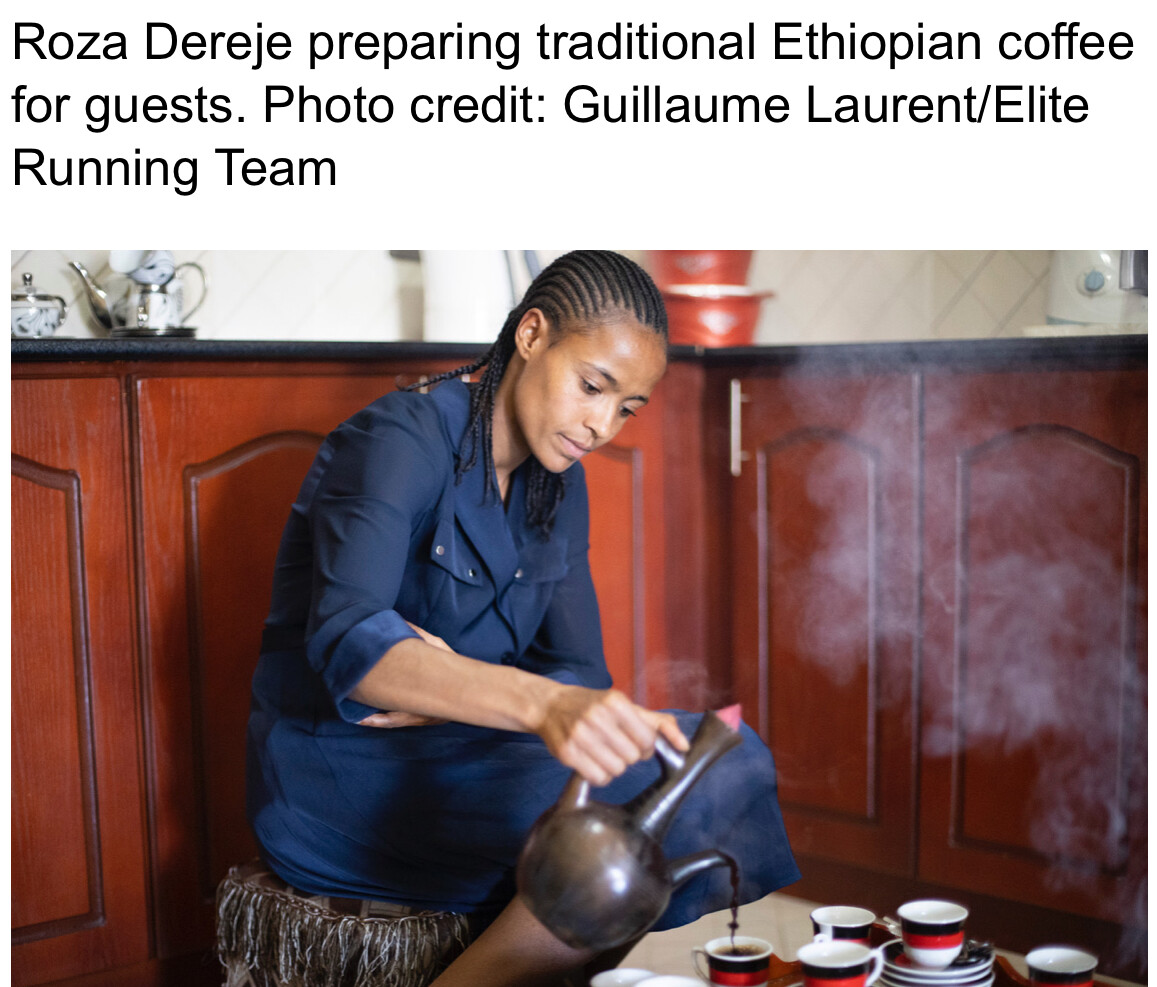
Moreover, she represented Ethiopia in the 2020 Tokyo Olympic marathon - held in Sapporo, Japan in 2021. Under hot humid conditions she narrowly missed the podium finishing 4th that day. Then there is her incredible record at World Marathon Majors: a second place finish at the 2018 Chicago Marathon (2:21:18) and, six months later, a third place in the 2019 London Marathon (2:20:51).
Her one outing was a credible 6th place finish at the Antrim Coast Half Marathon in Northern Ireland (August 25th, 2024) - a tuneup for her first visit to Canada.
Never before has the Toronto Waterfront Marathon enjoyed the addition of an athlete sporting such credentials.
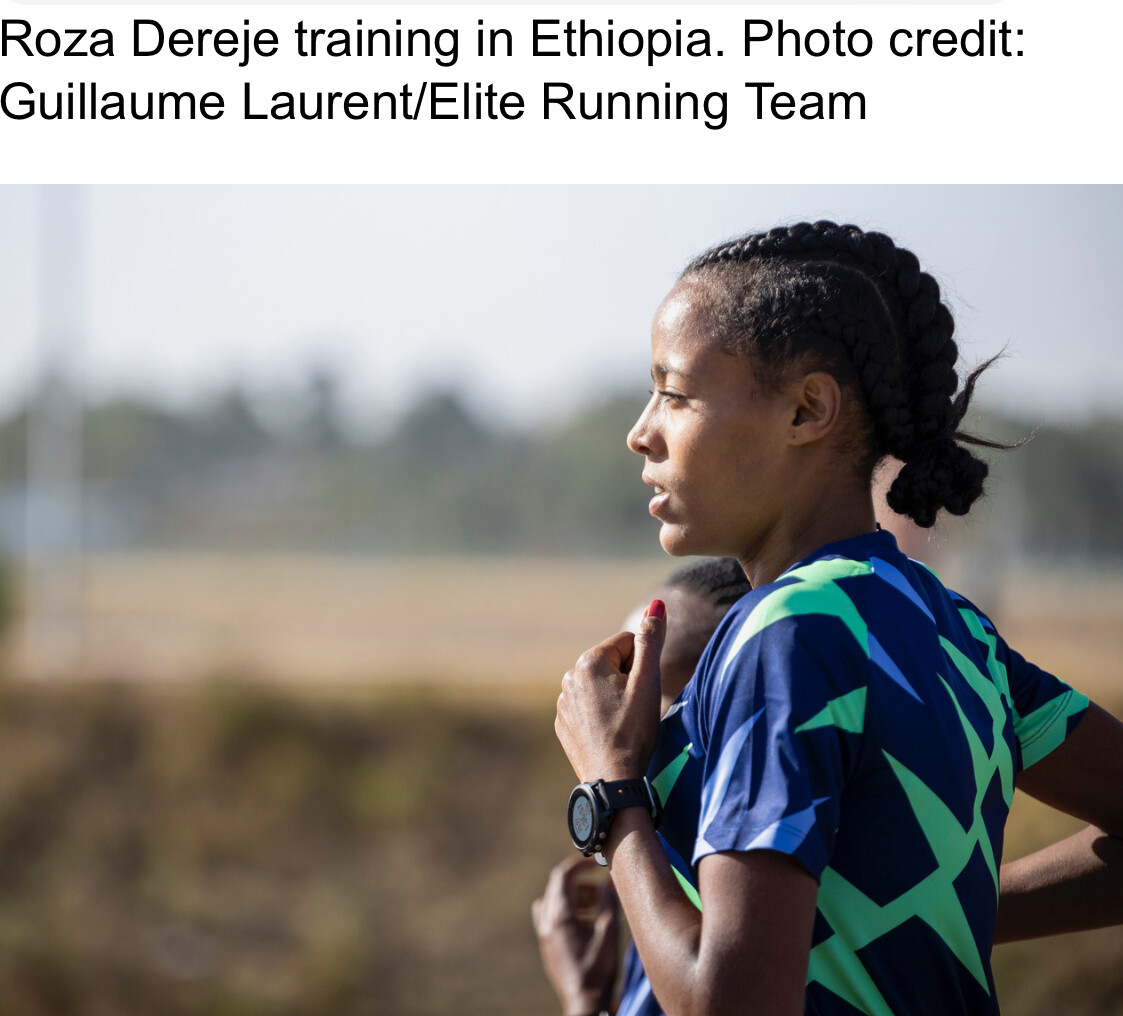
There is a good explanation for her hiatus from the sport ever since those Tokyo Olympics. A little over a year ago she gave birth to her first child, a son named Yobsan.
“Life has changed a lot,” the 27 year old admits. “Being a mom is a great thing to be in this world and life is so good after it.”
Roza’s husband is Dereje Ali, a former world class marathon runner, who finished second in the 2011 Ottawa Marathon. The couple and their infant live in Ethiopia’s capital, Addis Ababa and have reversed traditional roles in their household. Indeed, Roza credits her husband’s sacrifice for her ability to compete at the highest level and to make her comeback at this year’s TCS Toronto Waterfront Marathon.
“He stopped running just to support me,” she explains. “We talked about it and he stopped to take care of the children and household and allow me the time to rest and recover in between training sessions and to prepare food etc. to help me to be a champion.”
Those training sessions involve meeting up with her elite training group under renowned coach Haji Adilo three times a week. She trains alone on other days. The meetups can be in a variety of different locations depending upon Haji’s objective for the session.
“Akaki, Sendafa, Entoto, they are great training places too,” Roza continues. “I drive with my husband Dereje to all of the sessions. We are very fortunate to have a good car and can travel freely to the sessions and not have to wait on public transportation.”
Normally, training sessions begin at sunrise before there is heavy traffic on the roads at these locations. During the rainy season (June to September) it is sometimes necessary to change locations since the majority of roads are unpaved and can become slippery underfoot.
Besides the sacrifices made by Dereje her greatest influence has been Haji her longtime coach whose career as a marathon runner was cut short due to health complications. He went into coaching with a personal best of 2:12:25 from 1999.
“Haji's great support has taken me this far, his hard work and commitment to the sport is what brings me to where I am now,” she declares. “I started my career with him and I am who I am today because of him and my other coaches in the team.”
Choosing Toronto for her come back made sense as many of Haji’s athletes have competed here.
"I used to watch other athletes running there (on YouTube livestream) so I am excited to come and run,” she adds. “Last year one of my training partners (Amid Fozya Jemal) was part of an exciting race right to the finish so I am hoping to come and make an exciting race too.”
The Toronto Waterfront course record of 2:22:16 was set in 2019 by Kenya’s Magdalyne Masai. It’s a time that Roza had beaten four times prior to her Olympic marathon race in 2021. However, talk of record breaking in Toronto, at least this far out, is not discussed though she might be very capable of achieving this standard.
“Even though it is my first time to race since I gave birth, running is not new to me,” she declares. “So I am not nervous about it. I am preparing well for the race to make my come back fruitful.
“I am training well targeting this race and I have more time to prepare myself too.”
Asked for a specific goal her answer is concise: “Winning, with the will of God!”
by Paul Gains
Login to leave a comment
TCS Toronto Waterfront Marathon
The Scotiabank Toronto Waterfront Marathon, Half-Marathon & 5k Run / Walk is organized by Canada Running Series Inc., organizers of the Canada Running Series, "A selection of Canada's best runs!" Canada Running Series annually organizes eight events in Montreal, Toronto and Vancouver that vary in distance from the 5k to the marathon. The Scotiabank Toronto Waterfront Marathon and Half-Marathon are...
more...World half bronze medalist Kamulu and Tokyo olympic marathon trials winner Nakamura take humid Hokkaido Marathon
2018 World Half Marathon Championships bronze medalist Pauline Kamulu Kaveke and Tokyo Olympics marathon trials winner Shogo Nakamura survived tough conditions, 22˚C at the start with 82% humidity, sunny skies and almost no wind, to take the 2024 Hokkaido Marathon Sunday in Sapporo.
Both running their debuts, Kamulu and Shiho Tachizako ran steadily around 2:28-flat pace surrounded by a group of amateur men, staying together until just before 30 km when Tachizako started to fade. Kamulu struggled with the hot conditions late in the race and could only watch the clock as sub-2:30 slipped away, looking very tired as she crossed the finish line in 2:31:04.
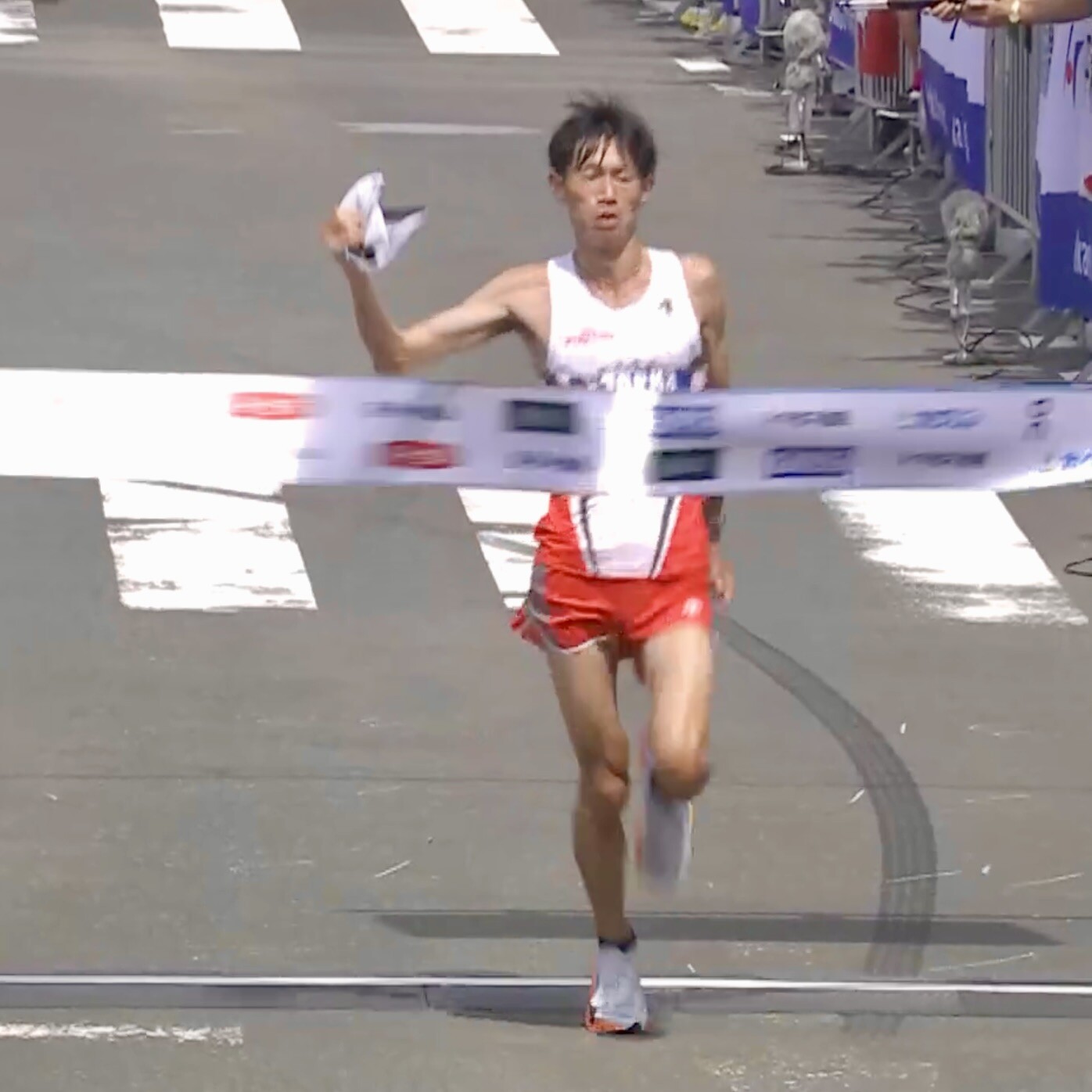
Tachizako faded to 2:33:47 for 2nd, but even that was good enough to easily beat the rest of the field, with last year's 2nd-placer Ayano Ikeuchi 3rd in 2:35:26 in her third marathon so far this year.
Nakamura had said pre-race that he didn't care about time and was only focused on getting in the win, and that was exactly how he ran, ignoring the early action and staying near the front of the main pack until he made his initial move at 30 km.
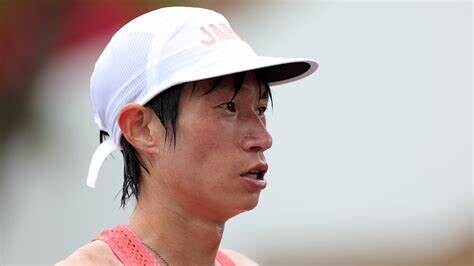
That got rid of the pretenders, with only 2:08~2:10 men Takeshi Soma, Atsumi Ashiwa and Masaru Aoki, and 2:18 amateur Ryuichi Yoshioka getting back on board. Soma countered with an attack after 34 km, but Nakamura quickly reeled him back in and made his real move with 5 km to go.
Yoshioka was the only one to try to follow, but it was all Nakamura the rest of the way, scoring his first win since his Olympic trials victory in 2019 with a 2:15:36 for 1st. Yoshioka was elated in the home stretch with a 2:16:28 for 2nd, a 2-minute PB and the only runner male or female in the top 10 to PB. Nakamura's toughest competition still standing when he dropped his big move, Ashiwa out kicked Soma and Aoki for 3rd in 2:16:40.
Osaka Marathon winner Kiyoto Hirabayashi ran Hokkaido as a training run, jogging in to a 70th-place finish in 2:41:19. The next-fastest man on paper after Hirabayashi with a 2:07:58 win in Beppu-Oita in February, Japan-based Ethiopian Derese Workneh was a DNF near 30 km.
by Brett Larner
Login to leave a comment
Hokkaido Marathon
The Hokkaido Marathon, inaugurated in 1987 with just 439 participants, has evolved into one of Japan's premier marathons, attracting nearly 20,000 runners annually. Held every August in Sapporo, Hokkaido, it stands as the nation's only full-scale summer marathon. The race commences and concludes in Sapporo's Odori Park, offering a scenic course that weaves through the city's landmarks, including the...
more...Billy Mills really enjoyed every minute of the Olympics in Paris
The Games are over! What a memorable experience. The local people were so great! lots of smiles and lots of help! We ran into many friends from the USA and around the world. Thank you all for taking the trip with us! Enjoyed all your comments and reading about your experiences at Olympic Games! Love you all! Billy Mills
About Billy Mills: (born June 30, 1938), also known by his Oglala Lakota name Tamakhóčhe Theȟíla, is an American Oglala Lakota former track and field athlete who won a gold medal in the 10,000 metre run (6.2 mi) at the 1964 Tokyo Olympics.
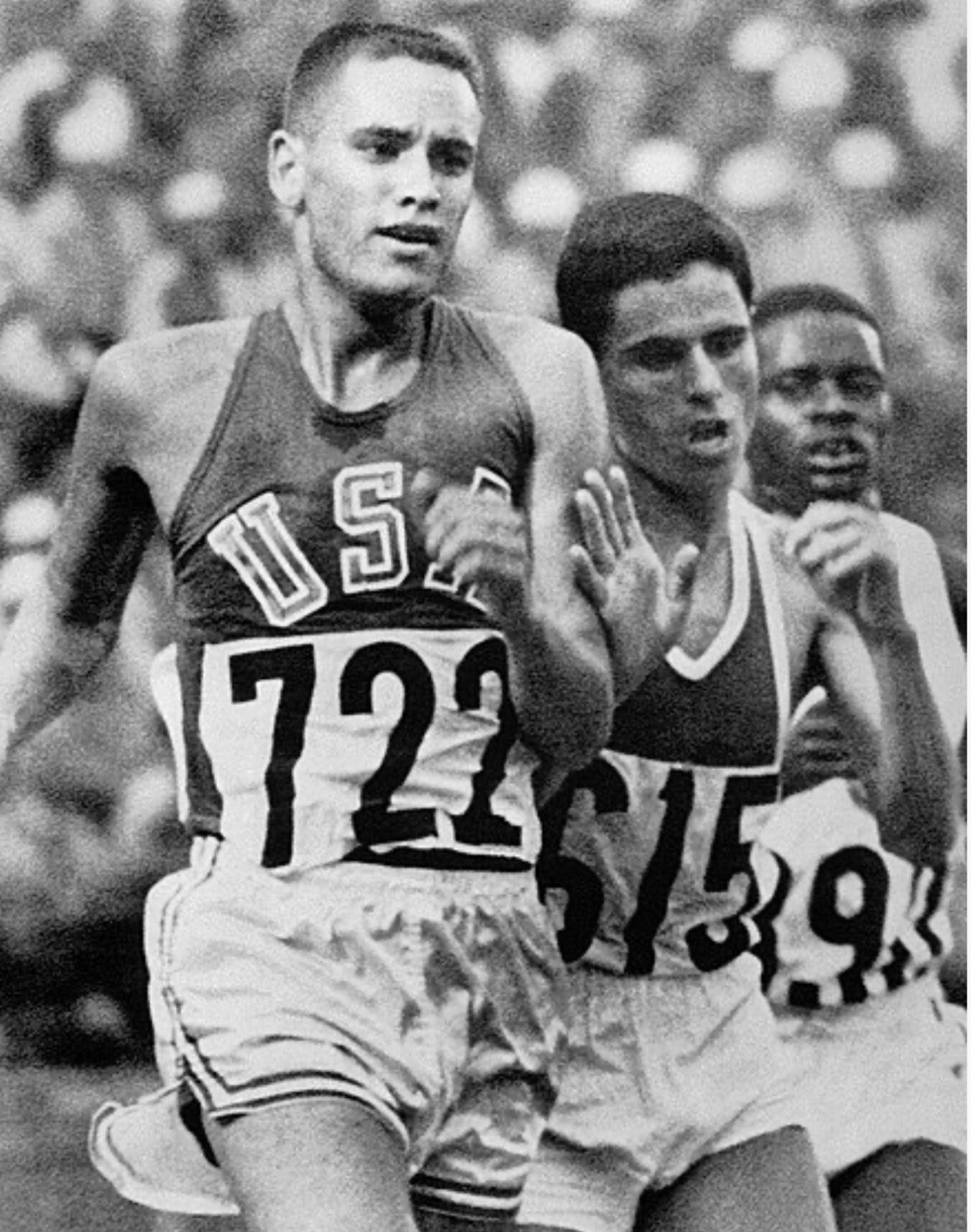
His 1964 victory is considered one of the greatest Olympic upsets because he was a virtual unknown going into the event.
He was the first non-European to win the Olympic event and remains the only winner from the Americas.[3] A United States Marine, Mills is a member of the Oglala Sioux Tribe.
Login to leave a comment
I followed you everyday Billy. Looks like you, Pat and family and friends had an amazing time. - Bob Anderson 8/12 12:57 pm |
Eliud Kipchoge hints at retirement after 'worst marathon' at Paris Olympics
Eliud Kipchoge has hinted at ending his illustrious marathon career following a major setback at the Paris Olympics on Saturday.
Eliud Kipchoge hit the streets of Paris in the men’s marathon hoping to win his third Olympic title on Saturday morning.
However, the script did not go as planned as Kipchoge failed to finish the race. He was off to a great start but conditions worsened and he started trailing.
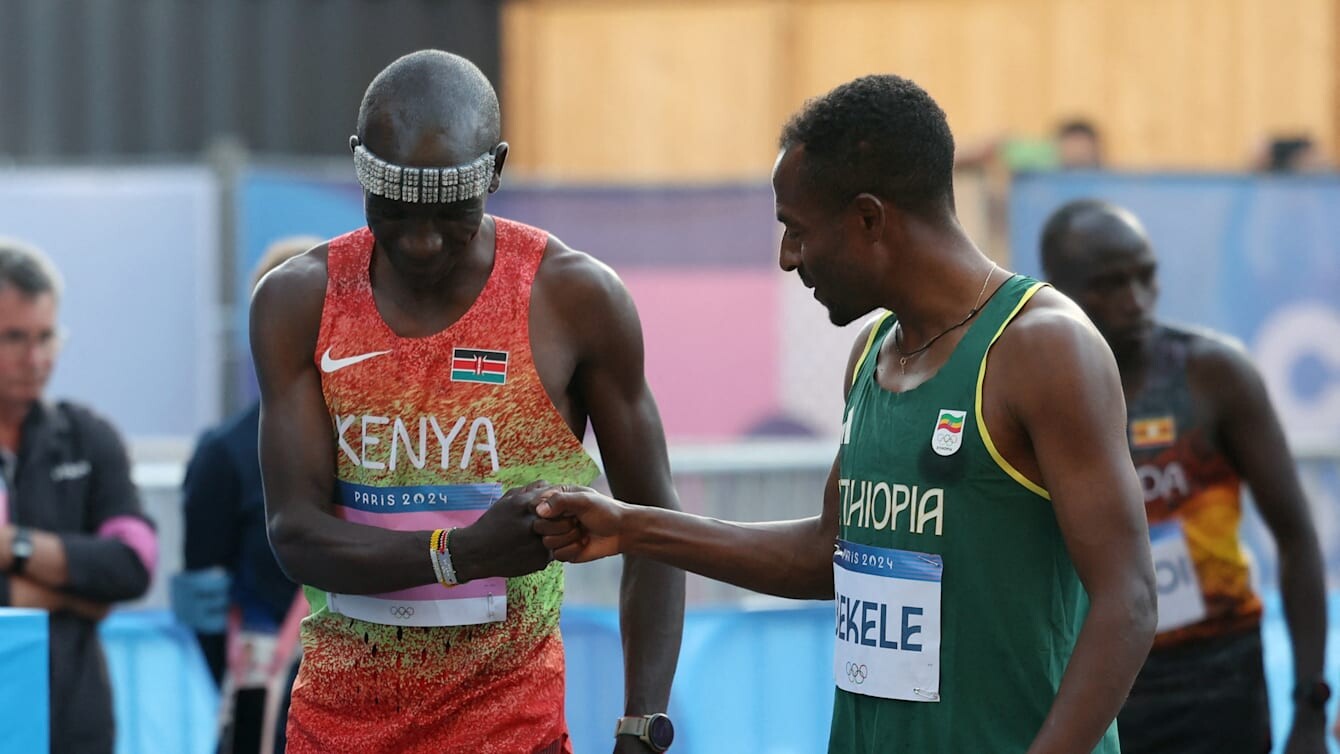
At some point in the race, the two-time Olympic champion was seen holding his left hip as though in pain but he kept going. It was until the 31km mark that Kipchoge could not continue with the race.
The five-time Berlin Marathon champion stood and waited for the last athlete Ser-Od Bat-Ochir to pass before he officially pulled out of the race.
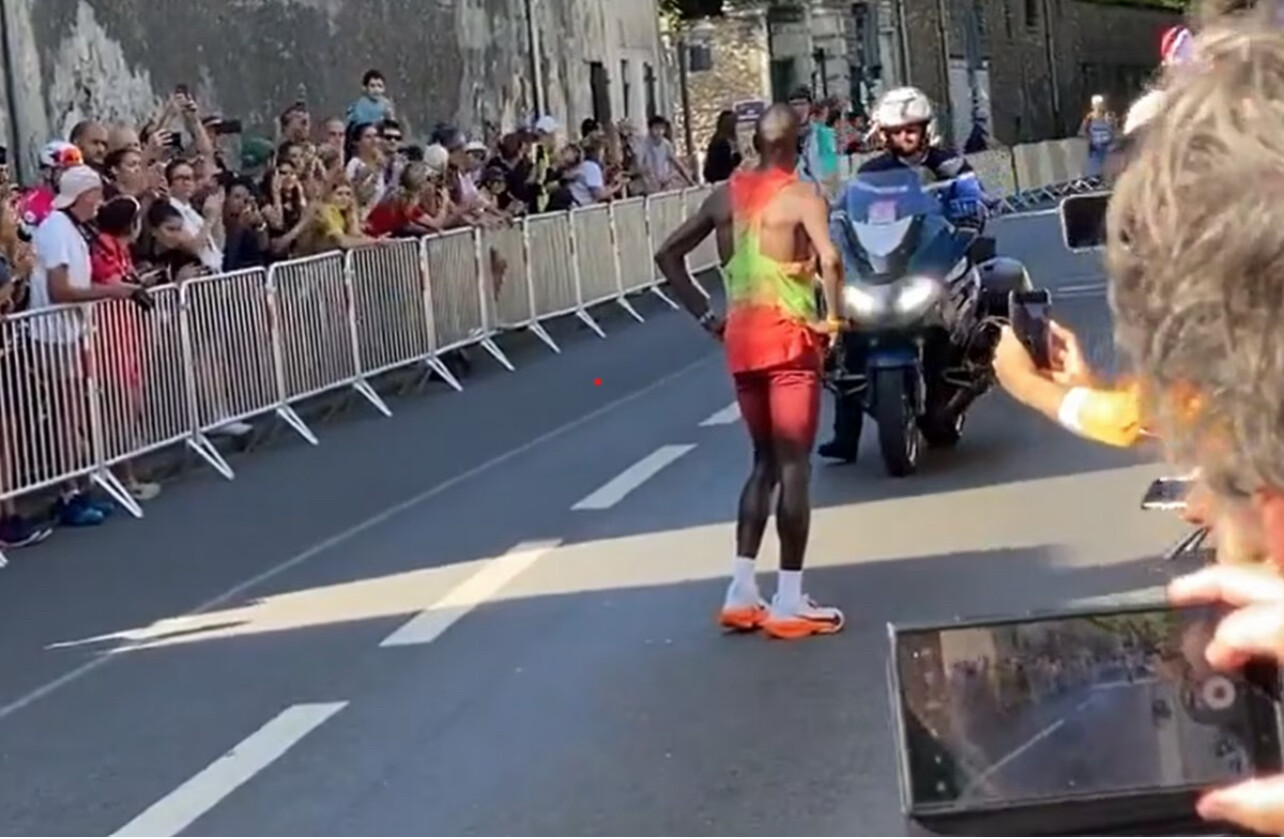
Following the setback, the four-time London Marathon champion told Olympics.com that the race was his worst marathon. Kipchoge had never recorded a DNF [Did not finish] until Saturday's race.
"This is my worst marathon. I have never done a DNF (did not finish). That’s life. Like a boxer, I have been knocked down, I have won, I have come second, eighth, 10th, fifth – now I did not finish. That’s life,” he said.
Kipchoge started his season on quite a low note, finishing 10th at the Tokyo Marathon won by Benson Kipruto. He hinted at not being mentally okay following threats to his life and that of his family after Kelvin Kiptum’s death.
At the Paris Olympics, Kipchoge was aiming to become the first marathoner to win three Olympic gold medals. He started his winning streak at the 2016 Rio Olympic Games before defending his title at the delayed 2020 Tokyo Olympics.
The marathon legend then hinted at calling time on his illustrious career.
“It is a difficult time for me. You will see me in a different way, maybe giving people motivation, but I will not run," he said.
"I don't know what next. I need to go back [home], sit down, try to figure my 21 years of running at high level. I need to evolve and feature in other things.”
by Abigael Wagula
Login to leave a comment
Paris 2024 Olympic Games
For this historic event, the City of Light is thinking big! Visitors will be able to watch events at top sporting venues in Paris and the Paris region, as well as at emblematic monuments in the capital visited by several millions of tourists each year. The promise of exceptional moments to experience in an exceptional setting! A great way to...
more...Eliud Kipchoge Drops Out of the 2024 Olympic Marathon
It may be the two-time gold medalist’s final Olympic Games.
In what may be his final Olympic Games, Eliud Kipchoge of Kenya dropped out of Saturday’s men’s marathon around the 31K mark. Today’s race was Kipchoge’s chance to be the first man to win the Olympic marathon three times in a career. His other Olympic marathon wins came in the Rio Olympics in 2016 and Tokyo in 2021.
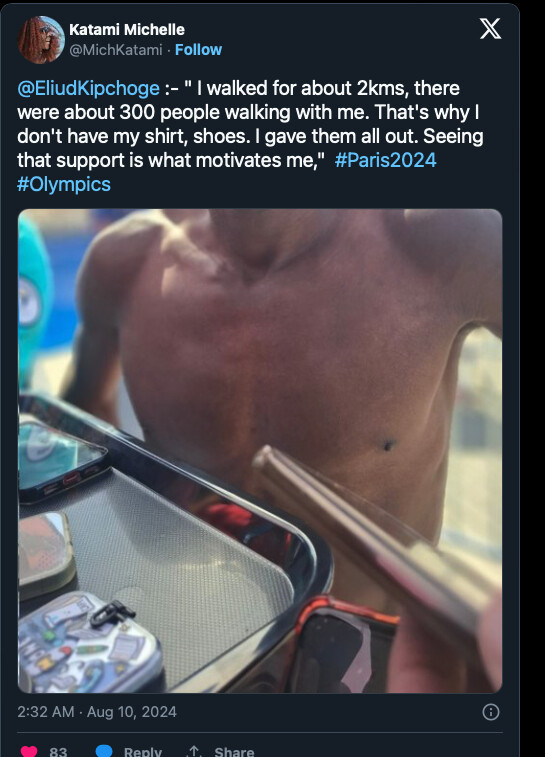
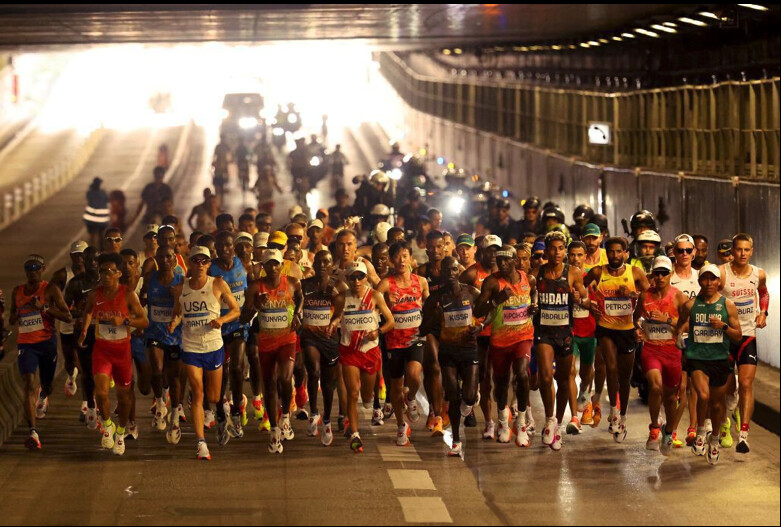
“I will be the happiest on earth to win an Olympic medal for the third time, back-to-back-to-back,” Kipchoge said about the race prior to the Games on Olympics.com. “It’s about making history, it’s about inspiring a generation.”
Wearing a cooling headband for what was going to end up being a warm day, the race started relatively cool in the lower 60s on a clear day in Paris. Kipchoge hung with the lead pack for the first 15K until the notoriously challenging Paris Olympic Marathon hills started claiming victims.
After reaching Versailles and turning back to head toward Paris, Kipchoge was more than a minute off the lead pack, not within the top 50 runners. He split 25K to the 30K mark—the segment of the course from Chaville to Meudon with the steepest uphill and downhill—a little over 21 minutes, putting him more than 8 minutes off the lead pack. He was out of contention but gutting it out toward the finish line, buoyed by the Olympic crowd.
Journalist Michelle Katami found Kipchoge after the race, where he described his final few kilometers of the race. “I walked for about 2 kilometers, there were about 300 people walking with me. That’s why I don’t have my shirt, shoes. I gave them all out. Seeing that support is what motivates me.”
Win or not, Kipchoge’s extensive career has earned him G.O.A.T. status in the running world. He’s eclipsed the world record mark twice—both times at the Berlin Marathon—and became the only man ever to run under 2 hours in a non-record eligible marathon attempt in Vienna back in 2019.
For a period, Kipchoge was untouchable at the distance. He won 10 marathons in a row from 2014 to 2019. He finally showed himself as human at the 2020 London Marathon (a race he’s still won four times), when he finished a surprising 8th. He bounced back by winning the marathon in the 2021 Tokyo Olympics, then winning both the Tokyo Marathon and Berlin Marathon in 2022.
Some recent marathons have been a step back for Kipchoge. He was 6th overall in his first Boston Marathon in 2023 but returned to form with a Berlin win later that year. Earlier this year Kipchoge placed 10th in the Tokyo Marathon.
He’s openly spoken about the strain he has taken after the tragic passing of the new marathon world record holder Kelvin Kiptum in a car crash in February 2024. He told the BBC that he was was subjected to online abuse wrongly linking him to Kiptum’s death.
“I was shocked that people (on) social media platforms are saying, ‘Eliud is involved in the death of this boy,’ That was my worst news ever in my life. I received a lot of bad things; that they will burn the (training) camp, they will burn my investments in town, they will burn my house, they will burn my family. It did not happen but that is how the world is. What happened has (made) me not trust anybody. Even my own shadow, I will not trust."
And on the track, he has two other Olympic medals, both in the 5,000 meters, with silver in 2008, and bronze in 2004.
by Runner’s World
Login to leave a comment
Timothy Cheruiyot reveals tactical precision in 1500m race to Paris semis
Timothy Cheruiyot strategically advanced to the men's 1500m semifinals at the Paris Olympics and was joined by fellow Kenyans Brian Komen and Reynold Cheruiyot.
Tokyo Olympics silver medalist and former world champion Timothy Cheruiyot has reacted to his performance in the men's 1500m heats at the Paris Olympic Games.
Cheruiyot, who recently returned to competition after a nine-month injury hiatus, secured his spot in the semifinals despite stiff competition and a highly tactical race.
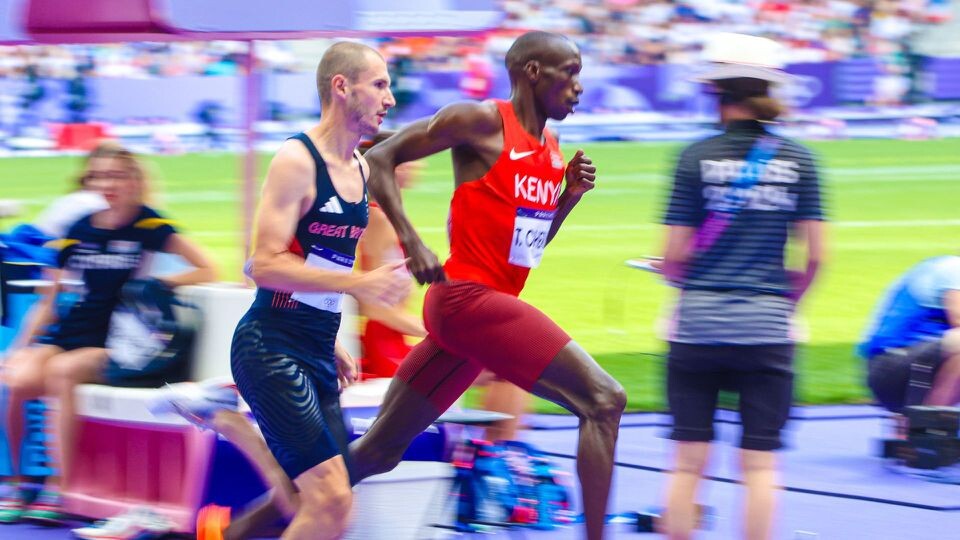
Competing in the second heat, Cheruiyot finished with a time of 3:35.39, placing fifth in a race that was won by Ethiopia's Ermias Girma, who posted a time of 3:35.21.
Despite not leading the pack,Cheruiyot's strategy was carefully planned to ensure his advancement without peaking too soon.

“Our heat was the fastest and it was also a tactical one compared with the other two. I didn’t want to kick early and also I ensured that I’m not far behind the leading pack. Everyone is keeping his cards close to his chest ahead of the semis and the final and that’s why the results are not surprising,” said Cheruiyot as per Citizen Digital.
Cheruiyot's strategic patience in the heats reflects his greater ambition to surpass his previous Olympic performance.
After his injury at the World Athletics Championships in Budapest, he spent nine months recovering and recalibrating his approach to racing.
"The injury was a big setback for me but everything is perfect and I believe this year we can go beyond our Tokyo performance," he shared, hinting at his aspirations for the upcoming rounds.
Other Kenyan athletes also showed strong performances in their respective heats.
Brian Komen and Reynold Cheruiyot, both advancing to the semifinals, demonstrated the depth of Kenyan talent in middle-distance running.
Komen clocked 3:36.31 to secure his position behind Josh Kerr of Great Britain, the reigning world champion who finished his heat in 3:35.83, marking a season's best.
Meanwhile, Reynold Cheruiyot, a former World U-20 champion, placed fourth in his heat with a time of 3:37.12, closely following Olympic champion Jakob Ingebrigtsen, who finished third.
The men's 1500m semifinals are eagerly anticipated, with high stakes for all competitors.
Scheduled for Sunday, August 4, at 8:10 pm Kenyan time, the event promises intense competition and strategic racing.
The final is set for Tuesday at 7:50 pm Kenyan time and it will be a pivotal moment for Cheruiyot and his teammates as they aim for Kenya's first men’s 1500m Olympic title since the 2008 Beijing Games.
by Festus Chuma
Login to leave a comment
Paris 2024 Olympic Games
For this historic event, the City of Light is thinking big! Visitors will be able to watch events at top sporting venues in Paris and the Paris region, as well as at emblematic monuments in the capital visited by several millions of tourists each year. The promise of exceptional moments to experience in an exceptional setting! A great way to...
more...Will super spikes cause records to fall in Paris?
Recent research confirms that high-tech shoes will give runners a significant boost.
Athletics events kick off Thursday at the Paris Olympics, and many, if not all, track competitors will be sporting super spikes—new generation, high-tech running spikes with carbon plates. Will these shoes power athletes to never-before-seen times? Recent research out of the University of Michigan suggests they will, and by a surprising amount.
A game-changing advantage
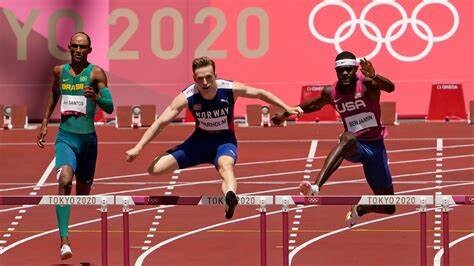
The 2021 Tokyo Olympics saw record performances on the track, leading fans and exercise physiologists alike to wonder about the impact of super spikes, which at the time were only accessible to a small group of athletes.
A recent study conducted by St. Edward’s University and the University of Michigan has shed light on the significant role these advanced footwear technologies play in boosting running economy—the efficiency with which the body uses oxygen, which is crucial for athletic performance.
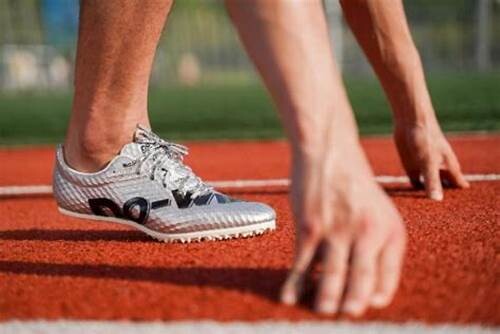
Researchers compared the running economy of athletes wearing super spikes to those in traditional track spikes. The results? A notable two per cent improvement in running economy with super spikes, potentially translating to a one-to-one-and-a-half per cent reduction in race times.
For example, for a runner who completes a 10,000m race in 30 minutes, this enhancement could mean shaving off about 25 seconds—an edge that could make an enormous difference in a close race. (The women’s world record for the outdoor 10,000m race, the longest of the track events, is 28:54.14, set by Kenya’s Beatrice Chebet, and the men’s record, set by Uganda’s Joshua Cheptegei, is 26:11.00.)
Levelling the playing field
Super spikes integrate advanced materials like special foams and carbon-fibre plates, making them lighter, softer and more responsive than traditional track spikes. While controversy surrounds their perceived advantage, with some feeling they offer an unfair edge, most (or all) competitors will be wearing them in Paris, suggesting a levelling of the playing field.
Similar technology has been used in running shoes since 2016, and the study also compared super spikes with new-generation running shoes. Despite weighing more, the high-tech shoes provided a comparable boost in running economy to the super spikes.
Are records destined to be broken in Paris?
With the athletics portion of the Paris Olympics Games kicking off Thursday with the men’s and women’s 20K race walk events, the increased availability and use of super spikes are expected to raise the bar for athletic performances. While not every Olympian had access to these technologies in 2020, their proliferation suggests a new track and field standard.
According to researchers, the greater availability of super spikes could lead to a deeper pool of faster times at the Paris Olympics, setting the stage for record-breaking performances. Tune in and be prepared to be on the the edge of your seat.
by Keeley Milne
Login to leave a comment
Paris 2024 Olympic Games
For this historic event, the City of Light is thinking big! Visitors will be able to watch events at top sporting venues in Paris and the Paris region, as well as at emblematic monuments in the capital visited by several millions of tourists each year. The promise of exceptional moments to experience in an exceptional setting! A great way to...
more...Kenya's hopes rest on Daniel Mateiko, Nicholas Kimeli & Bernard Kibet to win 10,000m gold since 1968
Daniel Mateiko, Nicholas Kimeli, and Bernard Kibet will have the pressure to deliver Kenya's gold medal since Naftali Temu's exploits at the 1968 Mexico City Olympics.
The trio of Daniel Mateiko, Nicholas Kimeli and Bernard Kibet are tasked with a daunting task to reclaim Kenya’s 10,000m title once they toe the line at the Stade de France on Friday, August 2.
The men’s race starts at 10:20 p.m. East African Time with the trio taking on one of the strongest fields in history with the main aim to reclaim Naftali Temu’s title won at the 1968 Mexico City Olympics.
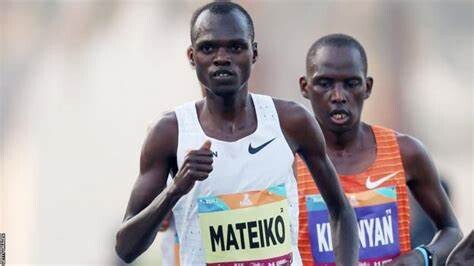
Kenyans have had a rough time of winning the gold medal following the emergence of Ethiopians and Ugandans who have dominated the race. Kenenisa Bekele, Mo Farah, Joshua Cheptegei have dominated the global stage with Bekele and Farah winning two titles each.
Selemon Barega won the title at the delayed 2020 Tokyo Olympic Games with Cheptegei and Jacob Kiplimo taking second and third place respectively.
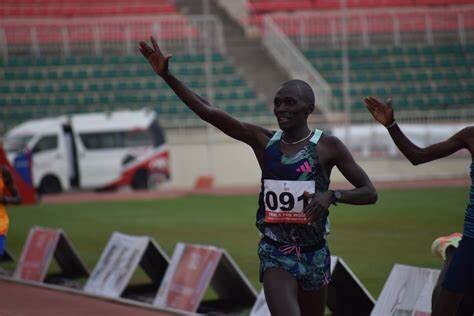
Mateiko made headlines, winning the Prefontaine Classic to secure his slot to the Olympic Games with Kimeli and Kibet finishing second and third respectively. The trio has the much-needed confidence to impress following their training sessions that have been extensive so far.
Mateiko and Kimeli train with Eliud Kipchoge and they certainly draw inspiration from the two-time Olympic champion who will also be chasing his third Olympic title.
However, they will not have an easy task in title reclamation as they go up against very strong opponents. Defending champion Barega will be out to defend his Olympic gold with Cheptegei also in the mix.
Being the world record holder and a three-time world champion, Cheptegei will going for the only title missing in his decorated CV. The Ethiopians have fielded their best, with world leader Yomif Kejelcha and Berihu Aregawi also in the mix. Paris marks the first Olympics for Kejelcha who will have the pressure on him after the world lead.
Cheptegei has raced sparingly, making it difficult to gauge his shape. He will be competing for the first time since end of May when he finished ninth in the 5000m at the Diamond League Meeting in Oslo.
The American duo Grant Fisher and Nico Young have also been entered and they will also be chasing history for the US. Young will b debuting at the Olympics and the race will just be his third 10,000m race on a track.
On his part, Fisher has great experience racing on the global stage and after finishing fifth at the delayed 2020 Tokyo Olympics, he will be out to improve on that.
by Abigael Wafula
Login to leave a comment
Paris 2024 Olympic Games
For this historic event, the City of Light is thinking big! Visitors will be able to watch events at top sporting venues in Paris and the Paris region, as well as at emblematic monuments in the capital visited by several millions of tourists each year. The promise of exceptional moments to experience in an exceptional setting! A great way to...
more...Keely Hodgkinson reveals a serious impact Mary Moraa has made on her road to Paris 2024 Olympics
Keely Hodgkinson discusses lessons from her loss to Mary Moraa as he aims for gold at the Paris Olympics.
Olympic and world 800m silver medallist Keely Hodgkinson is gearing up for the Paris Olympics with a resolute focus on clinching the gold.
At just 22, she has already made significant strides in her athletic career, breaking records and overcoming challenges.
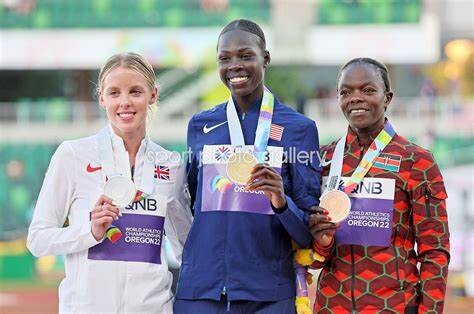
But as she prepares for the upcoming games, Hodgkinson reflects on a particularly tough race that has fueled her drive for victory.
“If you want to watch a bad race, watch Lausanne,” Hodgkinson says in an interview with the Telegraph, recalling the June competition where she found herself boxed in and then out-thought and out-paced by Kenyan Mary Moraa in the 800m.
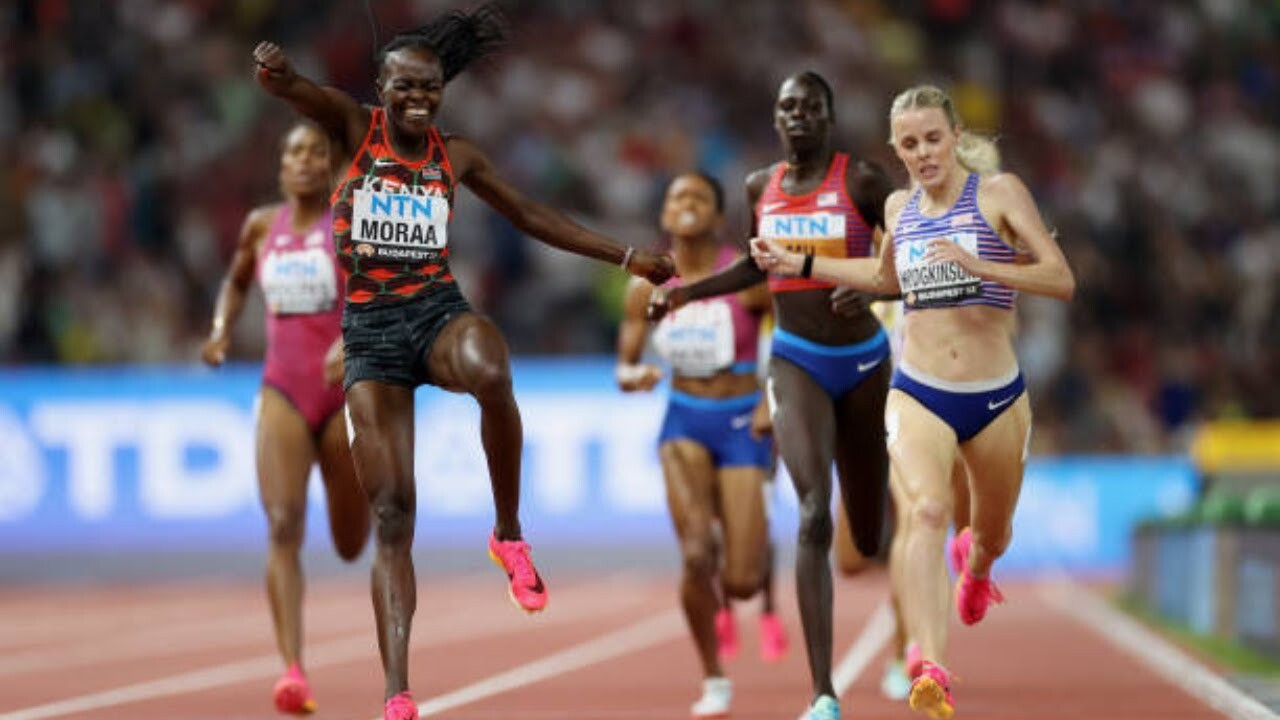
“That was bad.”
Hodgkinson’s journey has been marked by impressive accomplishments, including a silver medal at the Tokyo Olympics at the age of 19 with a personal best of 1:55.88.
More recently, she broke her own 800m record in front of 60,000 fans at the London Stadium leg of the Diamond League, becoming the sixth-fastest woman in history.
Despite these successes, Hodgkinson admits that post-Tokyo, she faced emotional challenges.
Struggling to focus on training after leaving her criminology degree course at Leeds Beckett University, she found it difficult to balance her mental state and athletic ambitions.
“I had nothing to be sad about, yet I felt guilty for feeling down.”
The determination to win gold in Paris is what keeps Hodgkinson motivated.
“Gold is all I have in my head right now. To get the gold in Paris. For me, that was the one I was always aiming for anyway,” she says.
Her rigorous training regime reflects this ambition.
Running approximately 35 miles each week, Hodgkinson focuses on building power and muscle strength, training more like a sprinter. Gym sessions, swimming, and cross-training have been crucial in enhancing her endurance and performance.
“I spend a lot of time on a cross-trainer,” she notes. “If I was to factor that in, my running mileage would go up.”
Preparation for a race, for Hodgkinson, resembles getting ready for a night out.
“The process starts two hours beforehand – I just enjoy it,” she explains.
Her routine includes a shower, fake tan, music, and doing her hair and make-up. “There’s nothing really to do on race day, especially if I’m racing at 10pm.”
Visualizing different race scenarios with her coach Painter is another key aspect of her preparation.
“Let others dictate your race and that’s when silly mistakes happen; panic after getting boxed in and you can bolt too early,” she cautions.
Reflecting on the 2023 World Championships in Budapest, Hodgkinson recalls hitting a lactic wall with 300m to go.
“The pack was so fast through the first lap. It really made us all hurt. We’d never done it that fast before.” On that occasion, it was her main rival, Athing Mu, who set the pace with Hodgkinson finishing as runner-up.
"She wanted to make it hard,” Hodgkinson acknowledges.
Despite the camaraderie with her fellow athletes during training camps, Hodgkinson remains competitive.
“On race day it’s game faces on,” she asserts.
For now, she relishes the challenge of pushing her limits.
“I’d be lying if I said I don’t enjoy being good at it,” she admits.
“When I was younger I used to love seeing how much pain I could put myself in, which sounds a bit crazy, but you do have to be crazy to do this event.”
by Festus Chuma
Login to leave a comment
Paris 2024 Olympic Games
For this historic event, the City of Light is thinking big! Visitors will be able to watch events at top sporting venues in Paris and the Paris region, as well as at emblematic monuments in the capital visited by several millions of tourists each year. The promise of exceptional moments to experience in an exceptional setting! A great way to...
more...Transgender athletes will have more restrictions in Paris
Transgender women must have transitioned before the age of 12 to be eligible for the women’s category, to “prevent any potential biological advantage from male puberty”.
Transgender athletes will face more restrictions at the Paris Olympics compared to previous events. This is due to the recent regulation by numerous international federations that female athletes must have completed their transition before the age of 12 to avoid unfair advantages.
With this decision, the Paris 2024 Olympics has stricter rules and regulations regarding transgender athletes with differences of sexual development (DSD).
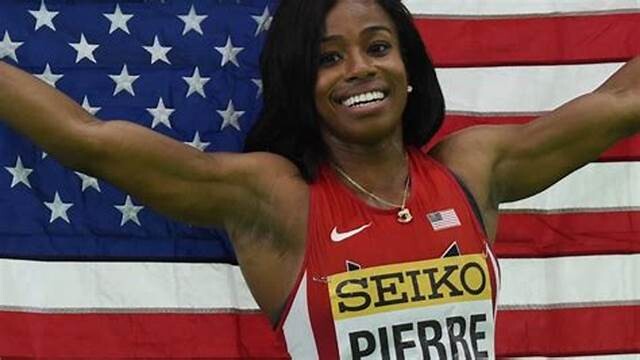
There have also been increased regulations for transgender athletes ahead of the Olympics, with many who have previously competed in international events, now unable to do so.
The Olympics in the French capital is set to make history as the first gender-equal games, with 50 per cent of the medals going to women, a first in the history of the event. There has been a rising interest in transgender athletes, with concerns that transgender women have an unfair advantage over fellow competitors, and a number of federations have strict guidelines.
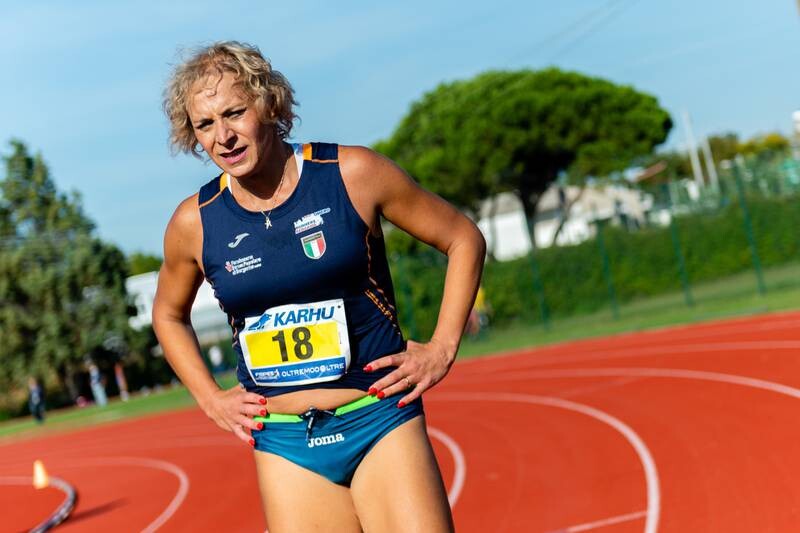
The International Olympic Committee, which oversees the Games, does not have specific rules or regulations and instead includes 10 guiding principles. The governing body also states that “each international federation is responsible for setting eligibility rules for its sport, including the eligibility criteria that determine qualification for the Olympic Games”.
The guidelines require transgender women to have transitioned before the age of 12 to be eligible for the women’s category, to prevent any potential biological advantage from male puberty.
The sports affected by this rules
The guidelines from the IOC have been adopted by World Athletics and Fina, swimming’s governing body.Cycling follow these guidelines for women’s categories but also allow for an “open” category which has replaced the current “men’s category” to allow transgender athletes to compete.
World Rowing allows those who transitioned before puberty to be eligible, and one of their criteria is for the testosterone concentration to be less than 2.5 nmol/L for a period of at least 24 months, while rugby has followed the IOC guidelines. Triathlon, tennis and archery however require testosterone levels to be below a certain limit to allow athletes to compete. Other sports allow transgender athletes to compete on a “case by case” basis.
Transgender and non-binary athletes at the Paris Olympics
Laurel Hubbard competed in the Tokyo Olympics, becoming the first openly transgender athlete to do so, and finished last in her competition group, and also Will be there in this edition. Nikki Hiltz is transgender and non-binary and uses the pronouns “they/them”, but has always competed in the female category, and will be representing USA at the upcoming Olympics. They set a US trials record in the 1500m to earn a place on the Olympic squad.
Quinn, a Canadian non-binary footballer, has also been chosen to represent their nation at the Olympic Games. The midfielder, who plays for Toronto, has always competed in female categories.
But there are other athletes that got out of the Games because of the new rules like the american BMX rider Chelsea Wolfe, who had been hoping to compete in Paris before the UCI, cycling’s governing body, changed its regulations and put an end to her hopes. She had qualified for Tokyo 2020 as an alternate.
Halba Diouf’s dream was also ended by World Athletics’ new regulations, effectively barring the Senegalese-born French sprinter from competing in Paris. Swimmer Lia Thomas became the first transgender athlete to win a US college title in 2022, but lost a legal case against World Aquatics for her right to compete. The American remains barred from competing in the female category.
by Marley Dickinson
Login to leave a comment
Paris 2024 Olympic Games
For this historic event, the City of Light is thinking big! Visitors will be able to watch events at top sporting venues in Paris and the Paris region, as well as at emblematic monuments in the capital visited by several millions of tourists each year. The promise of exceptional moments to experience in an exceptional setting! A great way to...
more...Mary Moraa reveals what cost her glory at Tokyo Olympics as she seeks to make ammends in Paris
Mary has disclosed what cost her a medal at the delayed 2020 Tokyo Olympic Games and what she has done differently to ensure she is lethal in Paris.
Reigning world 800m champion Mary Moraa has disclosed what cost her a medal at the delayed 2020 Tokyo Olympic Games and what she has been doing in training to avoid a repeat of the same.
At the Tokyo Olympic Games, the reigning world champion was eliminated in the semifinal after she finished third.
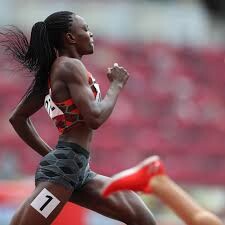
The race was eventually won by Athing Mu, who will unfortunately not be defending her title after falling at the U.S. Olympic trials and ended up finish ninth in the final of the women’s 800m.
Speaking about her experience in Tokyo, the 24-year-old noted that she was yet to master how the 800m well and the event was more of a learning curve. However, at the moment, Moraa noted that she knows better and she has the skills when it comes to running the 800m from the preliminaries, to the semifinal and to the final and eventually win a race.
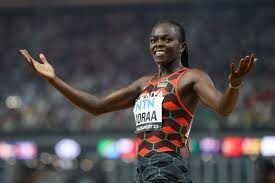
She added that the team has been training well and she has enjoyed the company of Vivian Chebet and Lilian Odira who will be making Olympic debuts, competing in the 800m.
“I reached the semifinal in 2020 and now my big target is to reach in the final and get a medal. We have been training well as a group, I, Lilian and Vivian have been working together in training and we pray that God gives us energy so that when we get to the Olympics, we are able to run well and get to the final and bring back medals,” Moraa said.
“In Tokyo, I had not mastered the art of running the 800m well but now I have the experience and I know how I can run and get to the final and get a medal,” she added.
Moraa faces tough opposition at the Olympic Games, going up against Briton Keely Hodgkinson who finished second in Tokyo. Nonetheless, she is not putting pressure on herself ahead of her Olympic return.
She will certainly be more confident, thanks to the gold medal she won at the World Championships in Budapest, Hungary.
by Abigael Wafula
Login to leave a comment
Paris 2024 Olympic Games
For this historic event, the City of Light is thinking big! Visitors will be able to watch events at top sporting venues in Paris and the Paris region, as well as at emblematic monuments in the capital visited by several millions of tourists each year. The promise of exceptional moments to experience in an exceptional setting! A great way to...
more...20 athletes to represent Uganda in Olympic Games Paris 2024
The Uganda Athletics Federation (UAF) has unveiled a team of 20 athletes to represent the country at the Paris 2024 Olympic Games later this month.
Over 10,000 top athletes from around the world will take part in the Games slated for July 26 to August 11 in France.
Announcing the track and field squad, UAF President Dominic Otuchet said the team boosts experienced athletes who have what it takes to win medals for the country.
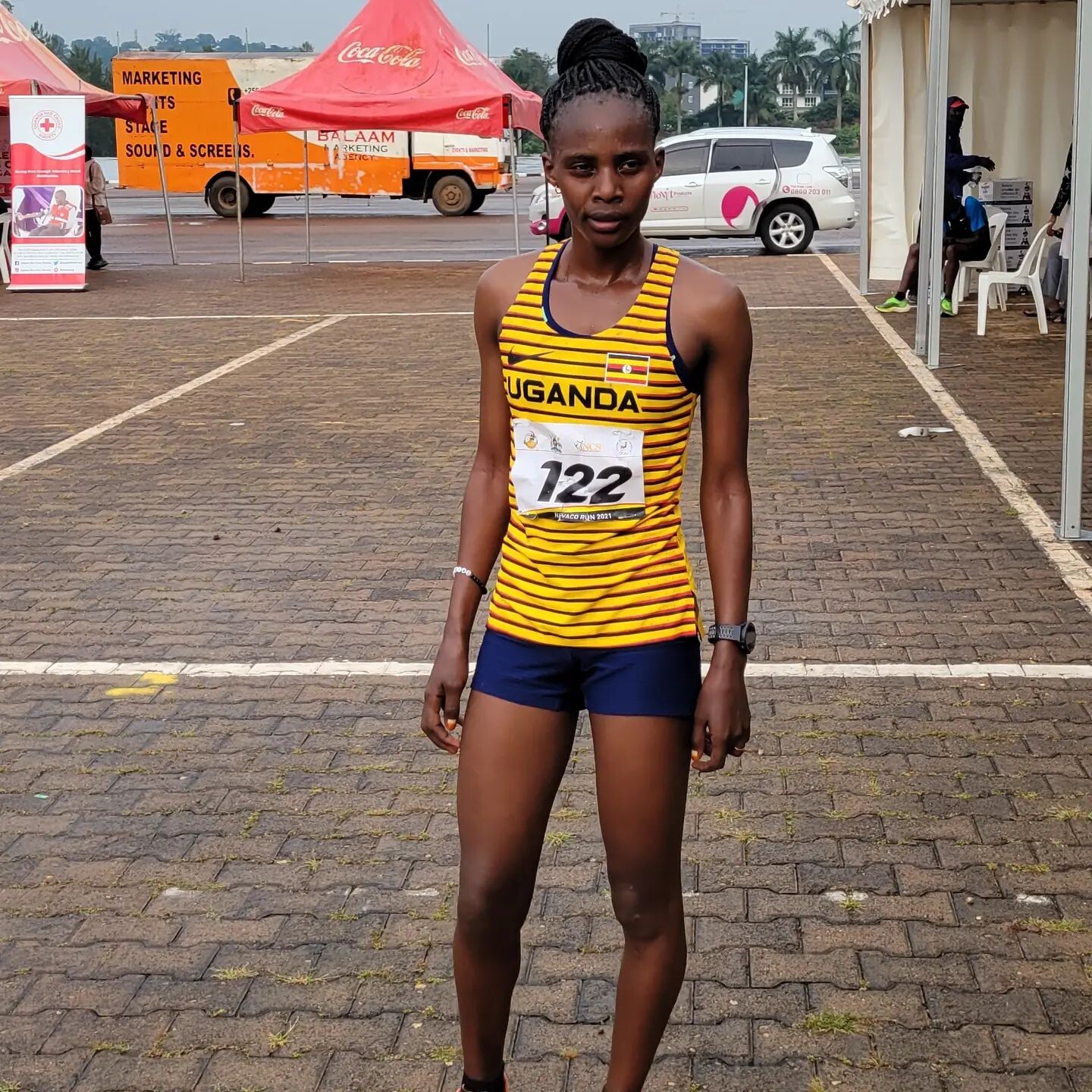
“We have athletes who have been proven and tested at the big stage,” said Otuchet.
World star Joshua Cheptegei who bagged a gold and silver medal at the Tokyo Olympics in 2020 will lead Uganda’s team together with half-marathon world record holder Jacob Kiplimo. The duo will battle in the 5,000m and 10,000m final.
“After getting a bronze medal at the last Olympic Games in Tokyo, my target is now to improve and win a gold medal. I know it will call for a lot of hard work to be able to achieve this and I am already working hard,” says Kiplimo.
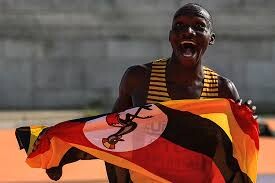
Female athlete Peruth Chemutai who won a gold medal in the women’s 3000m steeplechase will also be another medal hopeful for the Ugandan team.
The team has 10 male and 10 female athletes, with another two, Belinda Chemutai and Loice Chekwemoi, on the waiting list. Besides track and field athletes, Uganda will also have two swimmers, a cyclist and a female rower.
Uganda Team:
Men:
Tarsis Gracious Orogot (200m),
Tom Dradriga (800m),
Jacob Kiplimo, Joshua Cheptegei (5,000m/10,000m),
Oscar Chelimo (5,000m),
Martin Magengo Kiprotich (10,000m),
Leonard Chemutai (3,000m SC),
Victor Kiplangat, Stephen Kissa, Andrew Rotich Kwemoi (Marathon)
Female:
Halimah Nakaayi (800m),
Winnie Nanyondo (1,500m),
Joy Cheptoyek (5,000m/10,000m),
Esther Chebet (5,000m),
Sarah Chelangat, Annet Chemengich Chelangat (10,000m), Peruth Chemutai (3,000m SC),
Stella Chesang, Rebecca Cheptegei, Mercyline Chelangat (marathon),
Reserves: Belinda Chemutai (5,000m),
Loice Chekwemoi (3,000m SC).
by Xinhua News
Login to leave a comment
Paris 2024 Olympic Games
For this historic event, the City of Light is thinking big! Visitors will be able to watch events at top sporting venues in Paris and the Paris region, as well as at emblematic monuments in the capital visited by several millions of tourists each year. The promise of exceptional moments to experience in an exceptional setting! A great way to...
more...Gudaf Tsegay, Lamecha Girma head Ethiopia's 43-athlete squad to battle Kenya in Paris Olympics
In the 2021 Tokyo Olympics, Kenya bested Ethiopia as the top African nation, finishing 19th overall with 10 athletics medals.
World record-holders Gudaf Tsegay and Lamecha Girma are set to lead a formidable Ethiopian squad of 43 athletes at the upcoming Paris Olympic Games.
The robust team comprising top-tier talent across various track and field events promises to offer fierce competition to their long-time rivals Kenya in the race for Olympic medals.
Tsegay will be competing in the 10,000 meters, 5,000 meters, and 1,500 meters events.
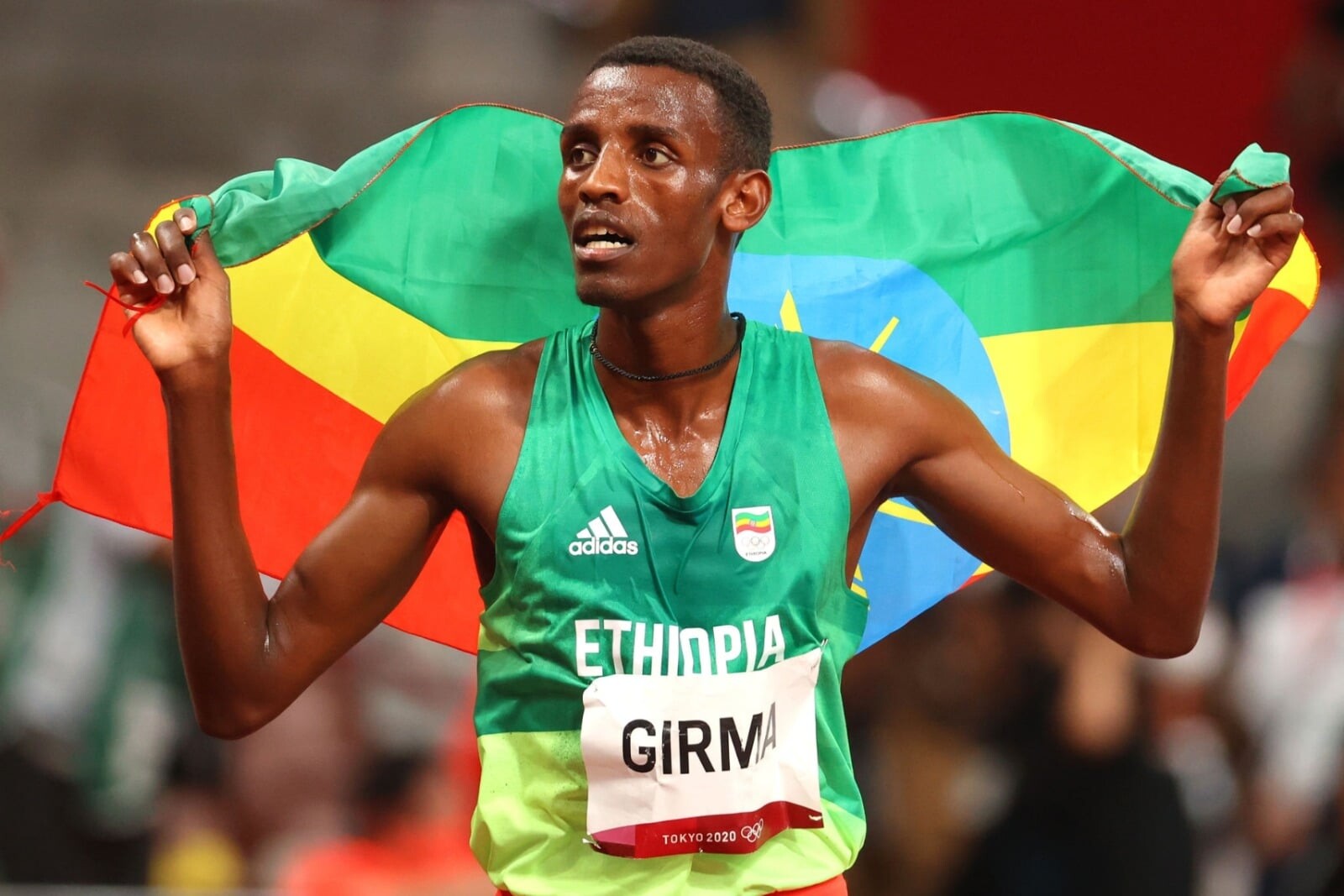
The 27-year-old athlete's standout performance at the Prefontaine Classic, where she shattered the world record in the 5,000 meters with an astounding time of 14:00.21, means she will be challenging rival Kenya's Faith Kipyegon who will chase two gold medals after winning the 1500m and 5000m.
The women's team also boasts an impressive lineup in the 800 meters, featuring Tsige Duguma, Habitam Alemu, and Werknesh Mesele, with Nigist Getachew as the reserve.
In the 1,500 meters, Tsegay will be joined by Birke Haylom and Diribe Wolteji, with Hirut Meshesha on standby. Medina Eisa and Ejgayehu Taye will support Tsegay in the 5,000 meters, with Freweyni Hailu as reserve, while Fotyen Tesfay, Tsigie Gebreselama, and Aynadis Mebratu will compete in the 10,000 meters.
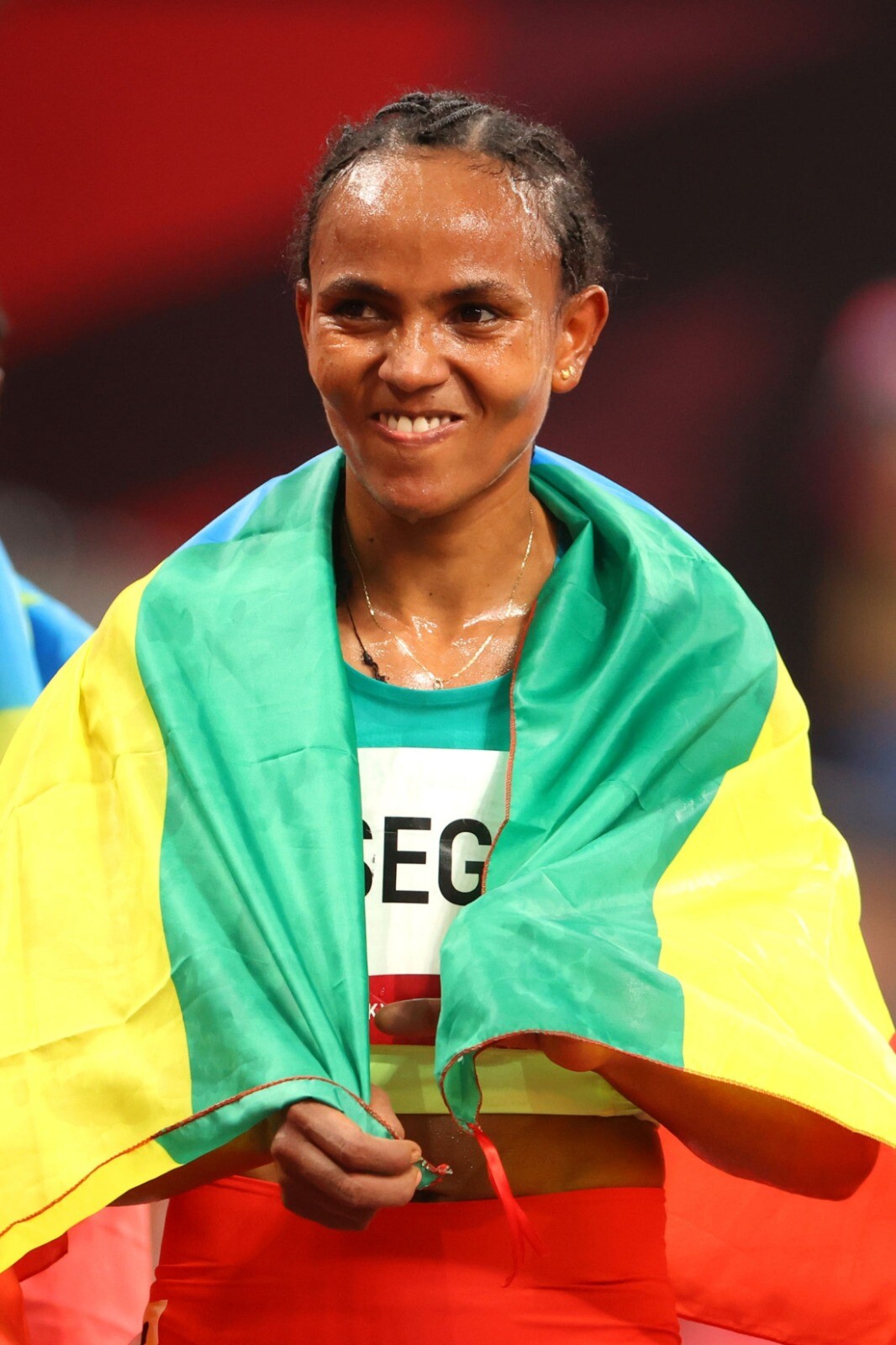
The 3,000 meters steeplechase will see Sembo Almayew and Lomi Muleta in action, and the marathon team includes Tigst Assefa, Amane Beriso, and Megertu Alemu, with Gotytom Gebreslase as reserve.
On the men's side, the team is equally impressive as Abdisa Fayisa, Samuel Tefera, and Ermias Girma will compete in the 1,500 meters.
The 5,000 meters team includes Hagos Gebrhiwet, Yomif Kejelcha, and Addisu Yihune, with Selemon Barega as reserve.
Kejelcha will also contest the 10,000 meters alongside Berihu Aregawi and Biniam Mehari, with Barega again as a reserve.
Lamecha Girma, alongside Samuel Firewu and Getnet Wale, will vie for victory in the men's 3,000 meters steeplechase, with Abrham Sime as reserve.
Ethiopia team to Paris
Women
800 meters: Tsige Duguma, Habitam Alemu, Werknesh Mesele, Nigist Getachew (Reserve)
1500 meters: Gudaf Tsegay, Birke Haylom, Diribe Wolteji, Hirut Meshesha (Reserve)
5000 meters: Gudaf Tsegay, Medina Eisa, Ejgayehu Taye, Freweyni Hailu (Reserve)
10,000 meters: Gudaf Tsegay, Fotyen Tesfay, Tsigie Gebreselama, Aynadis Mebratu (Reserve)
3000 meters Steeplechase: Sembo Almayew, Lomi Muleta
Marathon:Tigst Assefa, Amane Beriso, Megertu Alemu, Gotytom Gebreslase (Reserve)
Men
1500 meters: Abdisa Fayisa, Samuel Tefera, Ermias Girma, Teddese Lemi (Reserve)
5000 meters: Hagos Gebrhiwet, Yomif Kejelcha, Addisu Yihune, Selemon Barega (Reserve)
10,000 meters: Yomif Kejelcha, Berihu Aregawi, Selemon Barega, Biniam Mehari (Reserve)
Men's 3000 meters steeplechase: Lamecha Girma, Samuel Firewu, Getnet Wale, Abrham Sime (Reserve)
Marathon: Sisay Lemma, Deresa Geleta, Kenenisa Bekele, Tamirat Tola (Reserve)
20 km Race walk: Misgana Wakuma
by Festus Chuma
Login to leave a comment
Paris 2024 Olympic Games
For this historic event, the City of Light is thinking big! Visitors will be able to watch events at top sporting venues in Paris and the Paris region, as well as at emblematic monuments in the capital visited by several millions of tourists each year. The promise of exceptional moments to experience in an exceptional setting! A great way to...
more...Olympic heartbreak: Sweden’s difficult selection policy bars top athletes
Swedish middle-distance runner Yolanda Ngarambe thought she’d done everything she could to qualify for Paris 2024 in the women’s 1,500m. She won her country’s national championship and was ranked inside the top 35 in the world in her event, yet the Swedish Olympic Committee (SOK) decided not to select her; this marks her second consecutive Olympic snub.
Ngarambe isn’t the only Swedish athlete frustrated with the country’s selection policy, which differs from the World Athletics policy. There are several others, including 3,000m steeplechasers Simon Sundström and Emil Blomberg, who both sat in qualification spots via the World Athletics rankings but were passed over for selection.
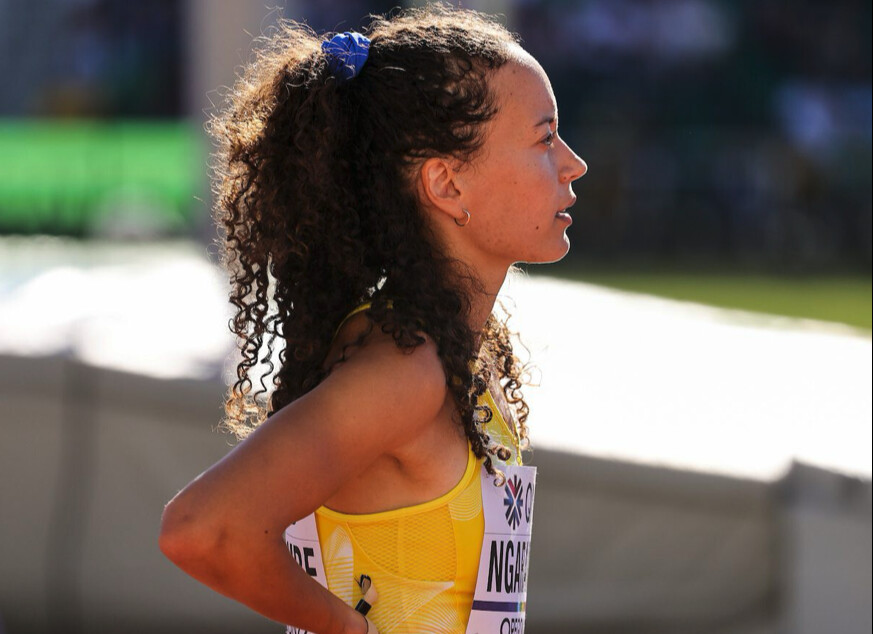
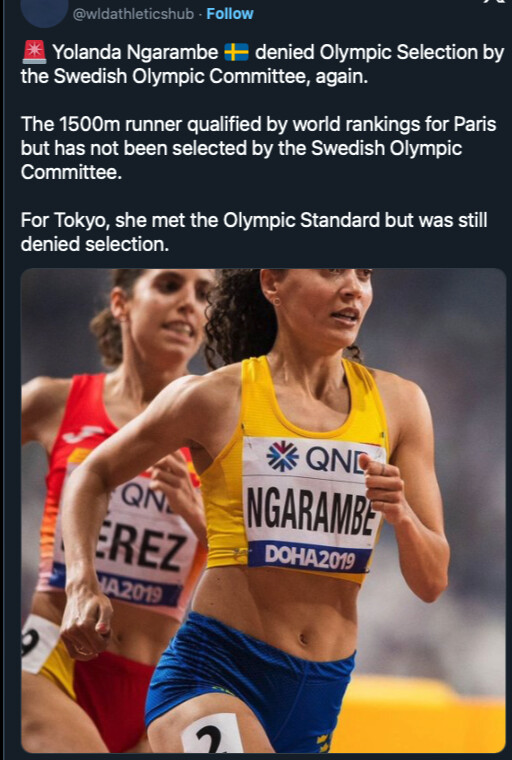
“This will be my second time qualifying for the Olympics and my second time being denied selection by the Swedish Olympic Committee,” Ngarambe wrote. “I ran the Olympic standard for Tokyo 2020 and qualified via the rankings for Paris. Make it make sense.”
How Olympic selection works
For Paris 2024, World Athletics introduced a new selection policy with 50 percent of qualification places based on achieving the entry standard for an event within the qualification period (July 1, 2023, to June 30, 2024) and the other 50 percent based on the World Athletics rankings.
World Athletics’ qualification policy is a strict standard that all countries must follow, but some nations have implemented their own rules to ensure they are only sending athletes who are a threat to reach a final or contend for a medal.
According to Sveriges Friidrottsförbundet, for an athlete to be considered for Olympic selection, they must have achieved a top 12 result at a major championship (i.e., Olympic Games, World Championship or European Championship). Bigger meets, such as the Tokyo Olympics or World Athletics Championships, carry more weight. Even athletes who don’t meet these exact quotas may be selected if they have multiple results within a certain performance range, especially those close to the qualifying limit.
Sweden currently has only three female athletes competing in track events, plus a small track and field team of 22 athletes. (Canada is sending a team of 48.)
Ngarambe’s case
In Ngarambe’s case, the women’s 1,500m event had a strict performance requirement set by the SOK, between 4:02.53 and 4:04.33. Her season’s best of 4:05.19 stands outside the nomination range, so despite having a top-10 finish at the 2024 European Championships in Rome, she was not selectable under their criteria.
Sweden isn’t the only country that has implemented tougher qualifying standards. UK Athletics has been criticized for adopting the same “Olympic final or bust” selection expectation, which several athletes have spoken out against, saying it’s killing the sport of track and field in the U.K.
UK Athletics chief executive Jack Buckner criticized the organization’s former qualification marks, calling them “too soft” for the 2019 World Championships and 2020 Olympic Games. In an effort to increase Great Britain’s medal haul, UK Athletics has moved away from sending bigger squads and focused solely on the country’s best track and field stars. “You need to really focus on the big hitters,” said Bucker when questioned about the more difficult standards last year. “We could have a list of six to 10 names, and we need to be all over them. We need to identify where the medals are coming from and have the right resources in place.”
For Ngarambe, who will be 33 later this year, the Paris Games was her last opportunity to represent her country at an Olympic Games. “I’m now a two-time Olympic qualifier who has been denied selection twice by the Swedish Olympic Committee,” she says.
by Running Magazine
Login to leave a comment
Wilson, at 16, becomes youngest male USA track Olympian
Quincy Wilson, at age 16, could become the youngest American male athletics competitor to appear at an Olympics as a member of the 4x400m relay pool at Paris.
Wilson finished sixth in the 400m final in 44.94secs, missing out on an individual spot, but USA Track and Field's relay selectors delivered the news Sunday he was in the relay group.
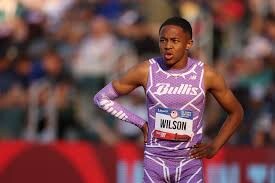
"WE GOING TO THE OLYMPICS," Wilson posted on Instagram.
The previous youngest US athletics competitor at an Olympics was Jim Ryun, who was 17 years and 137 days when he ran at the 1964 Tokyo Olympics.

Wilson, about to start his junior year at Bullis School in Potomac, Maryland, twice broke the under-18 world record for 400m during last week's US trials in Eugene, Oregon.
He broke the age group world record with a run of 44.66secs in the preliminary heats, then lowered that two-day-old mark with a 44.59-second effort in the semi-finals.
by AFP
Login to leave a comment
U.S. Olympic Team Trials Track And Field
Eugene, Oregon has been awarded the 2024 U.S. Olympic Team Trials - Track & Field, USA Track & Field and the U.S. Olympic & Paralympic Committee announced today. From June 21 to 30, Hayward Field at the University of Oregon will be home to one of the biggest track and field competitions in the country, as the U.S. Olympic Team...
more...Noah Lyles breaks U.S. Olympic Trials 200m record
The second (and final) weekend of the 2024 U.S. Olympic Trials, held at Hayward Field in Oregon, continued to be electrifying, with heart-stopping finishes and records broken.
On Saturday night, six-time world champion Noah Lyles kept his Olympic sprint double dreams alive by blazing through the 200m in 19.53 seconds—the fastest time in the world this year, adding to his 100m win from last weekend. Lyles wasn’t the only runner in contention for first place, only overtaking Kenny Bednarek in the final meters to secure the win. Erriyon Knighton finished third to make his second Olympic team; he received a no-fault violation from USADA in early June, after testing positive for a metabolite of trenbolone during an out-of-competition drug test in March, allowing him to compete at the U.S. Olympic Trials this week.
Lyles’s performance broke Michael Johnson’s long-standing U.S. Olympic Trials record of 19.66, set in 1996. Lyles will be hoping for redemption in Paris after a third-place finish at the Tokyo Olympics in 2021, his only loss in the 200m at a major meet. “You claim you’re gonna go out there and win four medals, so the goal had to be win the 100m and 200m,” Lyles told media post-race.“Job is accomplished. I’m right where I need to be.
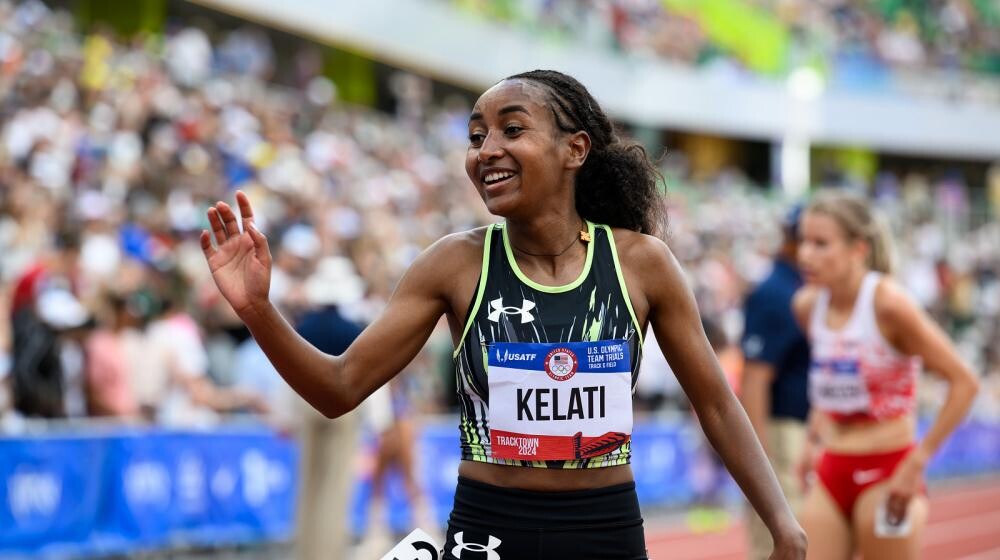
Kelati conquers the 10,000m
Weini Kelati secured her spot for the Paris Olympics by winning the women’s 10,000m in a thrilling, extremely close race on Saturday. Kelati, who was born in Eritrea but defected to the U.S. a decade ago to pursue a running career, showcased her strength and determination in a tight race that saw multiple lead changes in the final laps.

Kelati crossed the finish line first in 31:41.07, narrowly beating Parker Valby and Karissa Schweizer, who finished in 31:41.553 and 31:41.557 respectively. While Kelati has already run the Olympic standard of 31:40:00 and has clinched her place on the team, Valby and Schweizer will have to hope their performances were enough to get them to the Olympics through World Athletics rankings, a decision that won’t be finalized until June 7th.
Richardson doesn’t make the 200m cut
Sha’Carri Richardson’s bid for a sprint double in Paris ended with a fourth-place finish in the women’s 200m. Despite a strong start, Richardson was unable to maintain her speed in the final stretch, finishing behind Gabby Thomas, Brittany Brown and McKenzie Long.
Thomas, a bronze medalist in Tokyo and silver medalist at last year’s world championships in Budapest, crossed the line in 21.81 seconds. Richardson, secured her place in the 100m for the Olympics last weekend, when she won the women’s final in a new world-leading time of 10.71 seconds. In 2021, Richardson also won the 100m at the U.S. Olympic Trials, but tested positive for marijuana shortly after and was not allowed to compete; she’ll now make her much anticipated Olympic debut exclusively in the 100m, where she remains a favorite for gold.
by Keeley Milne
Login to leave a comment
U.S. Olympic Team Trials Track And Field
Eugene, Oregon has been awarded the 2024 U.S. Olympic Team Trials - Track & Field, USA Track & Field and the U.S. Olympic & Paralympic Committee announced today. From June 21 to 30, Hayward Field at the University of Oregon will be home to one of the biggest track and field competitions in the country, as the U.S. Olympic Team...
more...After Double Knee Surgery, This Runner is Poised to Make Team USA for the Paris Olympics
Val Constien has surmounted obstacles along every step of her career—including a devastating knee injury just 13 months ago. Now the 28-year-old is a favorite to make her second Olympic team in the 3,000-meter steeplechase heading into the U.S. Track and Field Olympic Trials.
Val Constien started 2023 in the best shape of her life. She had been an Olympian in the 3,000-meter steeplechase at the Tokyo Olympics. And yet, she had no professional sponsorships.
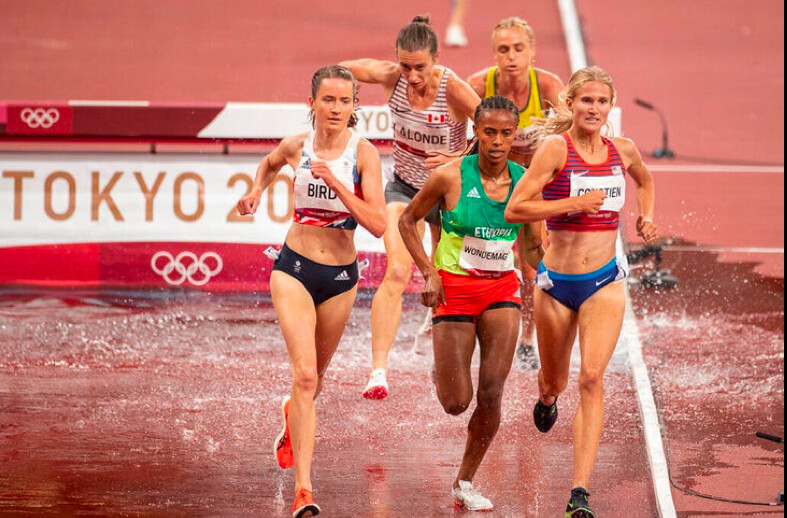
Constien, then 26, had spent the several years after graduating from the University of Colorado in 2019 continuing to train for the steeplechase under her college coaches while working a full-time job mostly because she loved it, and partly because she was betting on herself that she could continue to progress to a higher level.
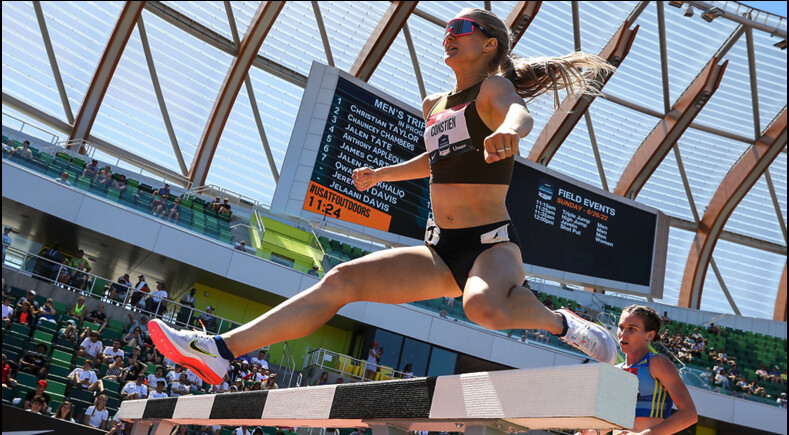
While studying environmental engineering at CU, Constien twice earned All-American honors in the steeplechase and helped the Buffaloes win a NCAA Division I national championship in cross country. She then finished 12th in the steeplechase at the Tokyo Olympics in 2021. And yet the Boulder, Colorado-based runner hadn’t been able to attract a sponsorship deal from a shoe and apparel brand. She squeezed her workouts in before work, paid for her travel to races, and remained determined and hopeful.
But then, after winning a U.S. indoor title in the flat 3,000 meters in early 2023, she caught the attention of Nike, which signed her to a deal that would lead into the 2024 Olympic year. Finally, it was the break she’d be hoping for.
However, less than three weeks after signing the contract, while running the steeplechase in a high-level Diamond League meet in Doha, Qatar, Constien landed awkwardly on her right leg early in the race and immediately knew something was wrong. She could be seen visibly mouthing “Oh no!” on the livestream, as she hobbled to the side of the track out of the race.
It was a worst case scenario: a torn ACL in her right knee. That meant surgery and a long road back to running fast again.
“That was awful,” said Kyle Lewis, her boyfriend who was watching the race online from Boulder. “The doctors over there initially told her they thought it was a sprain, but she came home and two days later she got an MRI and found out that it was a completely torn ACL, and she was obviously very upset. That was only a couple of weeks after she signed the Nike deal. But that’s just kind of been like with Val’s whole career. Nothing has ever come easy to that girl.”
How Constien, now 28, returned to top form a year later to become one of the top contenders to make Team USA in the steeplechase heading into the June 21-30 U.S. Olympic Trials in Eugene, Oregon—her preliminary race on June 24 will be only 398 days after her knee was surgically repaired—is a testament to the grit and confidence Constien possesses.
“It’s all just an extension of how tough I am and how willing I am to make hard decisions, and how badly I want it,” Constien said. “I love running. If I didn’t love running this much, I would’ve quit a long time ago.”
Constien had surgery last May 2023 at the Steadman Clinic in Vail, Colorado, not far from where she grew up. But that also presented a challenging twist.
One of the most popular types of ACL reconstructions for athletes is called a patella tendon graft, in which the doctor cuts off pieces of bone from the patient’s tibia and patella and several strands of the patella tendon and uses those materials to replace the ACL. Usually those grafts are harvested from the same injured leg, but doctors determined Constien’s right patella had a bone bruise on it and wasn’t healthy enough to use. So instead, they grafted the replacement materials from her left leg. That meant undergoing surgery on both legs, rendering her recovery even more difficult.
For the first two weeks after surgery, she couldn’t stand up or sit down on her own. She had trouble moving around and even had to sit down to take a shower. It took a full month until she started to get comfortable enough to go on short, easy walks and start to regain her mobility.
“The first month post-op was really devastating,” she said. “I was in a lot of pain, and it was hot and I was uncomfortable. I’m glad he did it the way he did it, but it was a really, really challenging recovery.”
All the while, though, Constien never stopped thinking about getting back to racing and the prospect of what 2024 might hold. That’s what helped her make a huge mental shift two weeks after the surgery and refocus all of her energy into returning to peak form and chasing another Olympic berth.
That was obviously easier said than done, but Constien has grown used to working hard and battling adversity. Her college career had been disrupted by injuries and slow progress. She was overlooked by brands when she got out of school in 2019 and again in 2021 after she slashed 7 seconds off her personal best time to finish third at the U.S. Olympic Trials and earn a spot in the Tokyo Olympics. And after she ran two strong races in Tokyo—the first international races of her career—to make it to the final and place 12th overall.
Even when she’s been overlooked or discounted, Constien has always believed in her potential. And that’s why, after a year of hyper-focused dedication, she’s on the brink of making it back onto Team USA to compete in this summer’s Paris Olympics.
“I’ve told her many times, no matter what happens after this point, what a comeback it’s already been,” Lewis said. “But what’s amazing about her is that, after that initial rough part, when she wasn’t able to walk, she just did an incredible job of compartmentalizing and being focused. I never saw her get sad or upset. She was always just super clinical about everything and really happy. It’s been incredible to watch.”
All last summer and fall, she continued building strength and began rejuvenating her aerobic strength—running more miles, getting stronger and getting faster. And that was amid working full-time doing quality assurance work for Stryd, a Boulder-based company that makes a wearable device to monitor running power and gait metrics. Heather Burroughs and Mark Wetmore, who have coached Constien since 2014, knew she had made considerable progress. But it wasn’t until early February that they began to realize the magnitude of her comeback.
“There was a point this winter, when she wasn’t running races, yet but she had some workouts that impressed me,” Burroughs said. “I wasn’t really worried about her ability to get fit enough the last four months, but it was whether her knee could handle the steeple work, especially the water jump.”
They never discussed that—because there was no point—and Constien went boldly into the outdoor season with her goal of breaking the 9:41.00 Olympic Trials qualifying standard. She started training outdoors in March and started her season by running a strong 1500-meter race on April 12 near Los Angeles (she won her heat in 4:12.27). But it wasn’t until May 11—roughly a year after she blew out her knee in Doha—that she ran her first steeple race.
At the Sound Running Track Fest, she ran patiently (with a smile on her face most of the way) just off the lead for the seven-and-a-half-lap race. She then unleashed an explosive closing kick to outrun Kaylee Mitchell down the homestretch and win in 9:27.22—securing her place in the Olympic Trials. That got her an invitation to the Prefontaine Classic, an international Diamond League meet on May 25 in Eugene, where she ran the best race of her life and finished fifth—and first American—in a new personal best of 9:14.29.
That put Constien at No. 7 on the all-time U.S. list. But more importantly, Constien closed hard after Uganda’s Peruth Chemutai had split the field apart en route to a world-leading 8:55.09, the sixth-fastest time in history.
“I’m more impressed by her comeback than she is, and it’s because I think she expected it,” Burroughs said. “It’s not that I didn’t expect it, but it was still improbable. But even now that she’s come back, she’s not impressed with herself at all. After the Prefontaine meet, I texted her about the race, and I got a five-word response—‘Let’s get back to work’—just very businesslike. She’s just dialed in and, to me, that says, ‘My big goal is yet to come.’”
For the last decade-plus, Emma Coburn and Courtney Freirichs have dominated the U.S. women’s steeplechase. They both suffered season-ending injuries this spring (broken ankle and torn ACL, respectively). Their absence leaves the event wide open for the likes of Constein, who is ranked second, and Krissy Gear, who enters the meet at the top seed (9:12.81) and as the defending national champion. But rising stars Courtney Wayment (9:14.48), Olivia Markezich (9:17:36), Gabrielle Jennings (9:18:03), and Kaylee Mitchell (9:21.00) are among several fast, young runners eager to battle for a spot on the Olympic team.
Constien knows she has two just goals to execute: run smart and fast enough to qualify for the finals on June 27, and then do whatever it takes to finish among the top three in that race.
Burroughs believes she’s as fit and as strong as she’s ever been, much improved since 2022, when she finished a disappointing eighth at the U.S. championships (9:42.96) while recovering from Covid. In fact, she’s even much better than her breakout year in 2021.
Over the past several weeks in Boulder, Constien has sharpened her fitness, including a final tuneup on June 12: a robust tempo run on the track with two hurdles per lap, which was preceded and followed by several fast 200-meter repeats. She’s also sharpened her perspective.
“There were definitely some dark times where I doubted myself and I doubted the process,” Constien said. “But I kind of just had to lock those thoughts away and just try to focus on the positive. And it’s really paid off.
“I never gave up when I didn’t have a sponsor and had to figure it all out on my own,” she added. “So tearing my ACL, yeah, that really sucks. That was really, really hard. But a part of me was like, ‘I’ve already done the hardest thing ever’ just by staying in the sport on my own. I look at it like, ‘I am the toughest person out here regardless of that ACL.’”
Login to leave a comment
What You Need to Know About the U.S. Track and Field Olympic Trials
From June 21-30, more than 900 runners, throwers, and jumpers will put it all on the line for a chance to compete for Team USA at the Paris Olympics
The U.S. Track and Field Olympic Trials is a showcase of hundreds of America’s best track and field athletes who will be battling for a chance to qualify for Team USA and compete in this summer’s Paris Olympics. For many athletes competing in Eugene, simply making it on to the start line is a life-long accomplishment. Each earned their spot by qualifying for the trials in their event(s). The athlete qualifier and declaration lists are expected to be finalized this week.
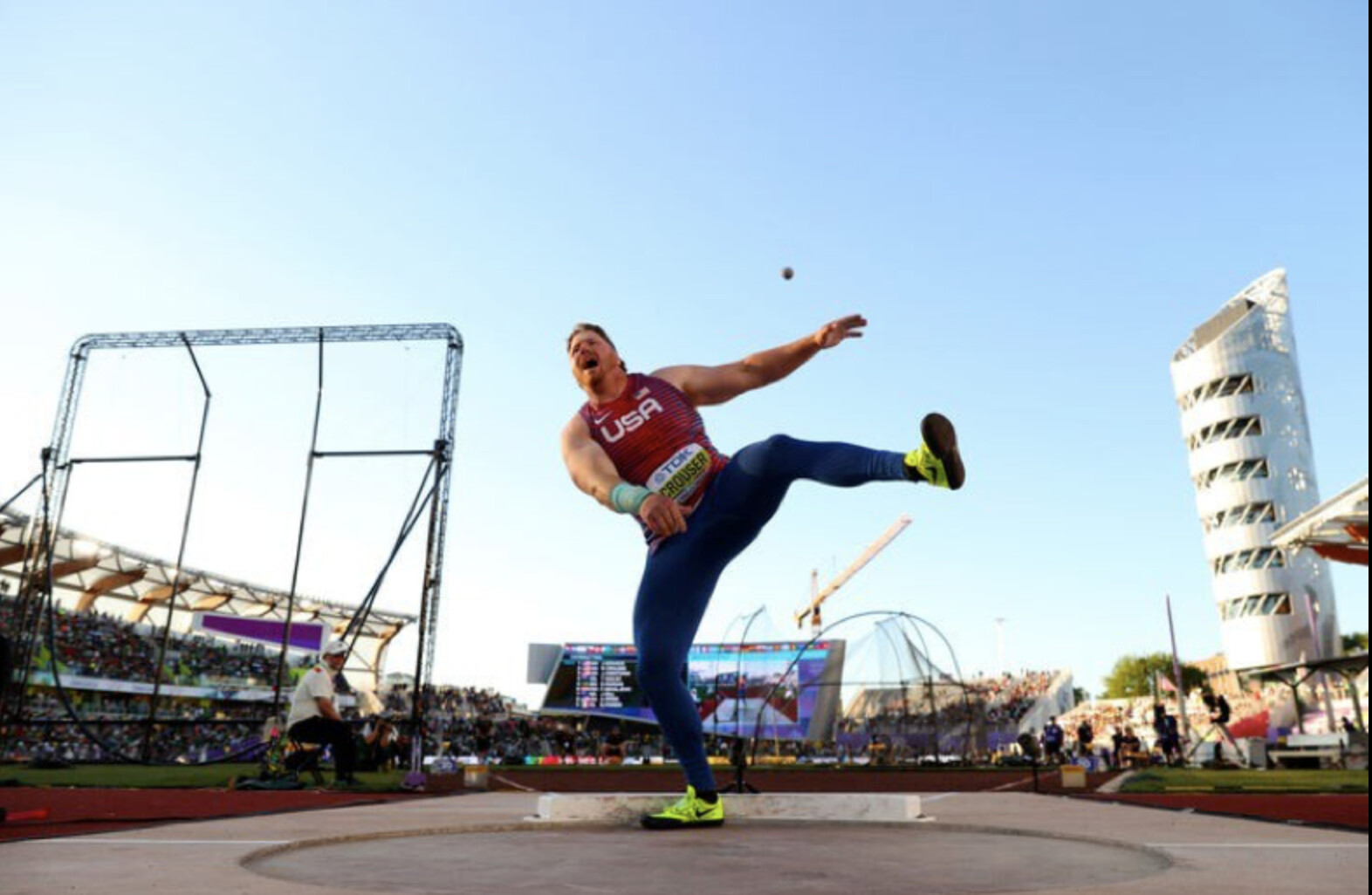
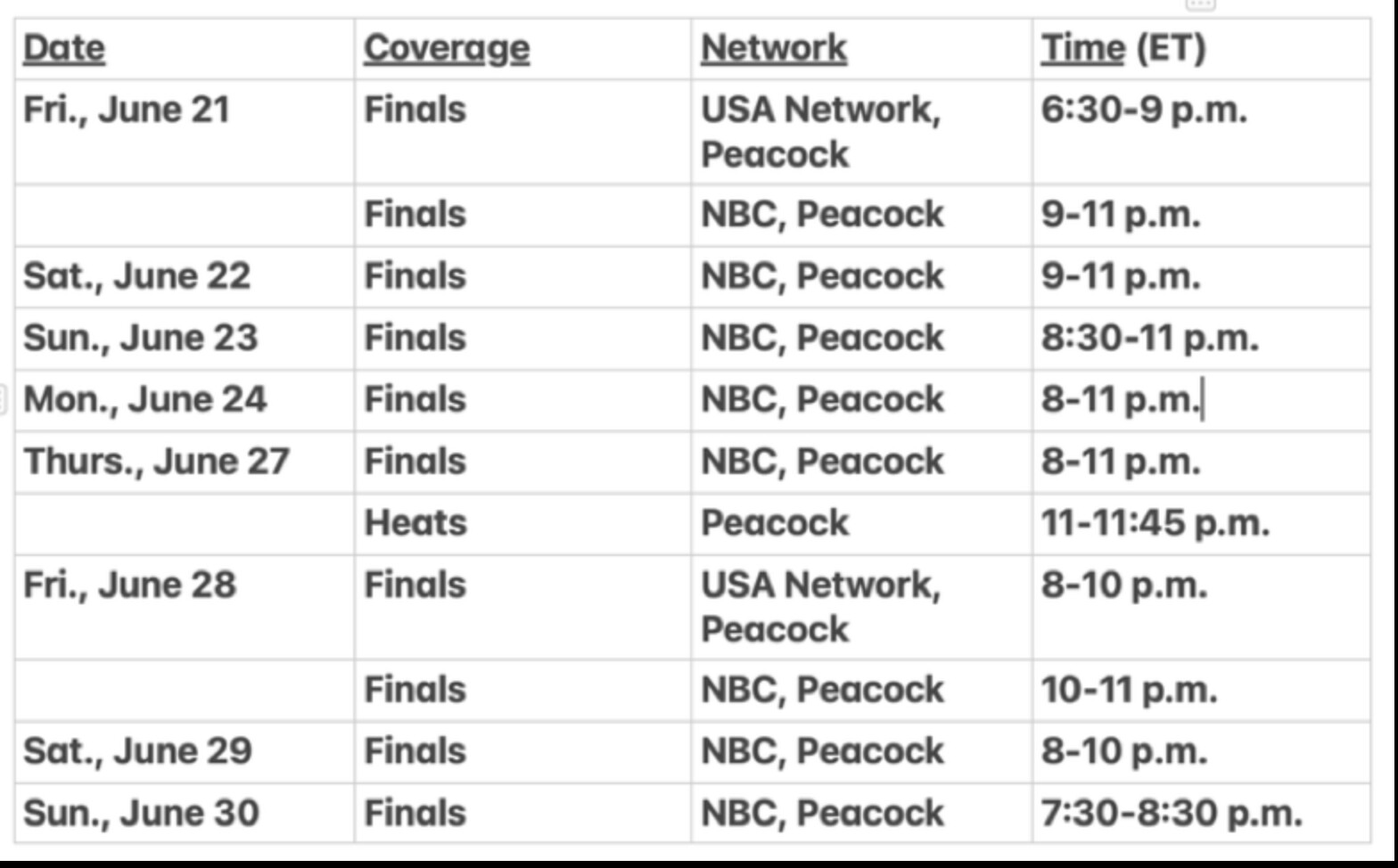
But for the highest echelon of athletes, the trials defines a make-or-break moment in their career. Only three Olympic team spots (in each gender) are available in each event, and given the U.S. depth in all facets of track and field—sprints, hurdles, throws, jumps, and distance running events—it’s considered the world’s hardest all-around team to make. How dominant is the U.S. in the world of track and field? It has led the track and field medal count at every Olympics since 1984.
At the trials, there are 20 total events for women and men—10 running events from 100 meters to 10,000 meters (including two hurdles races and the 3,000-meter steeplechase), four throwing events (discus, shot put, javelin, and hammer throw), four jumping events (long jump, triple jump, high jump, and pole vault), the quirky 20K race walking event, and, of course, the seven-event heptathlon (women) and the 10-event decathlon (men).
(At the Olympics, Team USA will also compete in men’s and women’s 4×100-meter and 4×400-meter relays, plus a mixed gender 4×400, and a mixed gender marathon race walk. The athletes competing on these teams will be drawn from those who qualify for Team USA in individual events, along with alternates who are the next-best finishers at the trials.
There’s also the Olympic marathon, but the U.S. Olympic Trials Marathon was held on February 3 in Orlando, Florida, to give the athletes enough time to recover from the demands of hammering 26.2 miles before the big dance in Paris.
Although some countries arbitrarily select their Olympic track and field teams, the U.S. system is equitable for those who show up at the Olympic Trials and compete against the country’s best athletes in each particular event. There’s just one shot for everyone, and if you finish among the top three in your event (and also have the proper Olympic qualifying marks or international rankings under your belt), you’ll earn the opportunity of a lifetime—no matter if you’re a medal contender or someone who burst onto the scene with a breakthrough performance.
The top performers in Eugene will likely be contenders for gold medals in Paris. The list of American stars is long and distinguished, but it has to start with sprinters Sha’Carri Richardson and Noah Lyles, who will be both competing in the coveted 100 and 200 meters. Each athlete won 100-meter titles at last summer’s world championships in Budapest and ran on the U.S. gold-medal 4×100 relays. (Lyles also won the 200) Each has been running fast so far this spring, but more importantly, each seems to have the speed, the skill, and swagger it takes to become an Olympic champion in the 100 and carry the title of the world’s fastest humans.
But first they have to qualify for Team USA at the Olympic Trials. Although Lyles is the top contender in the men’s 100 and second in the world with a 9.85-second season’s best, five other U.S. athletes have run sub-10-second efforts already this season. Richardson enters the meet No. 2 in the U.S. and No. 3 in the world in the women’s 100 (10.83), but eight other Americans have also broken 11 seconds. That will make the preliminary heats precariously exciting and the finals (women’s on June 22, men’s on June 23) must-see TV.
There are five returning individual Olympic gold medalists competing in the U.S. Olympic Trials with the hopes of repeating their medals in Paris—Athing Mu (800 meters), Sydney McLaughlin-Levrone (400-meter hurdles), Katie Moon (pole vault), Vallarie Allman (discus), and Ryan Crouser (shot put)—but there are more than a dozen other returning U.S. medalists from the Tokyo Olympics, as well as many more from the 2023 world championships, including gold medalists Chase Ealey (shot put), Grant Holloway (110-meter hurdles), Laulauga Tausaga (discus), and Crouser (shot put).
The most talented athlete entered in the Olympic Trials might be Anna Hall, the bronze and silver medalist in the seven-event heptathlon at the past two world championships. It’s an epic test of speed, strength, agility, and endurance. In the two-day event, Hall and about a dozen other women will compete in the 100-meter hurdles, high jump, shot put, 200 meters, long jump, javelin throw, and 800 meters, racking up points based on their performance in each event. The athletes with the top three cumulative totals will make the U.S. team. At just age 23, Hall is poised to contend for the gold in Paris, although Great Britain’s Katarina Johnson-Thompson, the world champion in 2019 and 2023, is also still in search of her first Olympic gold medal after injuries derailed her in 2016 and 2021.
If you can find your way to Eugene—and can afford the jacked-up hotel and Airbnb prices in town and nearby Springfield—you can watch it live in person at Hayward Field. Rebuilt in 2021, it’s one of the most advanced track and field facilities in the world, with an extremely fast track surface, a wind-blocking architectural design, and 12,650 seats that all offer great views and close-to-the-action ambiance. Tickets are still available for most days, ranging from $45 to $195.
If you can’t make it to Eugene, you can watch every moment of every event (including preliminary events) via TV broadcasts and livestreams. The U.S. Olympic Trials will be broadcast live and via tape delay with 11 total broadcast segments on NBC, USA Network, and Peacock. All finals will air live on NBC during primetime and the entirety of the meet will be streamed on Peacock, NBCOlympics.com, NBC.com and the NBC/NBC Sports apps.
The Olympic Trials will be replete with young, rising stars. For example, the men’s 1500 is expected to be one of the most hotly contested events and the top three contenders for the Olympic team are 25 and younger: Yared Nuguse, 25, the American record holder in the mile (3:43.97), Cole Hocker, 23, who was the 2020 Olympic Trials champion, and Hobbs Kessler, 21, who turned pro at 18 just before racing in the last Olympic Trials. Sprinter Erriyon Knighton, who turned pro at age 16 and ran in the Tokyo Olympics at age 17, is still only 20 and already has two world championships medals under his belt. Plus, the biggest track star from the last Olympics, Sydney McLaughlin-Levrone, is aiming for her third Olympics and third Olympic gold (she won the 400-meter hurdles and was on the winning 4×400 relay in Tokyo), and she’s only 24.
Several young collegiate stars could earn their place on the U.S. team heading to Paris after successful results in the just-completed NCAA championships. Leading the way are double-NCAA champions McKillenzie Long, 23, a University of Mississippi senior who enters the trials ranked sixth in the world in the 100 (10.91) and first in the 200 (21.83), and Parker Valby, a 21-year-old junior at the University of Florida, who ranks fifth in the U.S. in the 5,000 meters (14:52.18) and second in the 10,000 meters (30:50.43). Top men’s collegiate runners include 5,000-meter runner Nico Young (21, Northern Arizona University), 400-meter runner Johnnie Blockburger (21, USC), and 800-meter runners Shane Cohen (22, Virginia) and Sam Whitmarsh (21, Texas A&M).
It’s very likely. Elle St. Pierre is the top-ranked runner in both the 1500 and the 5,000, having run personal bests of 3:56.00 (the second-fastest time in U.S. history) and 14:34.12 (fifth-fastest on the U.S. list) this spring. Although she’s only 15 months postpartum after giving birth to son, Ivan, in March 2023, the 29-year-old St. Pierre is running better and faster than ever. In January, she broke the American indoor record in the mile (4:16.41) at the Millrose Games in New York City, then won the gold medal in the 3,000 meters at the indoor world championships in Glasgow in March.
St. Pierre could be joined by two world-class sprinters. Nia Ali, 35, the No. 2 ranked competitor in the 100-meter hurdles and the 2019 world champion, is a mother of 9-year-old son, Titus, and 7-year-old daughter, Yuri. Quanera Hayes, 32, the eighth-ranked runner in the 400 meters, is the mother to 5-year-old son, Demetrius. Hayes, a three-time 4×400 relay world champion, finished seventh in the 400 at the Tokyo Olympics.
Meanwhile, Kate Grace, a 2016 Olympian in the 800 meters who narrowly missed making Team USA for the Tokyo Olympics three years ago, is back running strong at age 35 after a two-year hiatus during which she suffered from a bout of long Covid and then took time off to give birth to her son, River, in March 2023.
No, unfortunately, there are a few top-tier athletes who are hurt and won’t be able to compete. That includes Courtney Frerichs (torn ACL), the silver medalist in the steeplechase at the Tokyo Olympics in 2021; Alicia Monson (torn medial meniscus), a 2020 Olympian in the 10,000 meters, the American record holder in the 5,000 and 10,000 meters, and the fifth-place finisher in the 5,000 at last year’s world championships; and Joe Klekcer (torn adductor muscle), who was 16th in the Tokyo Olympics and ninth in the 2022 world championships in the 10,000. Katelyn Tuohy, a four-time NCAA champion distance runner for North Carolina State who turned pro and signed with Adidas last winter, is also likely to miss the trials due to a lingering hamstring injury. There is also some doubt about the status of Athing Mu (hamstring), the Tokyo Olympics 800-meter champion, who has yet to race in 2024.
Meanwhile, Emma Coburn, a three-time Olympian, 2017 world champion, and 10-time U.S. champion in the 3,000-meter steeplechase, broke her ankle during her season-opening steeplechase in Shanghai on April 27. She underwent surgery a week later, and announced at the time that she would miss the trials, but has been progressing quickly through her recovery. If both she and Frerichs miss the meet, it will leave the door wide open for a new generation of steeplers—including 2020 Olympian Valerie Constein, who’s back in top form after tearing her ACL at a steeplechase in Doha and undergoing surgery last May.
The U.S. earned 41 medals in track and field at the 2020 Paralympic Games in Tokyo—including 10 gold medals—which ranked second behind China’s 51. This year’s Paralympics will follow the Olympics from August 28-September 8 in Paris.
The 2024 U.S. Paralympic Trials for track and field will be held from July 18-20 at the Ansin Sports Complex in Miramar, Florida, and Paralympic stars Nick Mayhugh, Brittni Mason, Breanna Clark, Ezra Frech, and Tatyana McFadden are all expected to compete.
In 2021 at the Tokyo Paralympics, Mayhugh set two new world records en route to winning the 100 meters (10.95) and 200 meters (21.91) in the T-37 category, and also took the silver medal in the 400 meters (50.26) and helped the U.S. win gold and set a world record in the mixed 4×100-meter relay (45.52). Clark returns to defend her Paralympic gold in the T-20 400 meters, while McFadden, a 20-time Paralympic medalist who also competed on the winning U.S. mixed relay, is expected to compete in the T-54 5,000 meters (bronze medal in 2021).
Livestream coverage of the U.S. Paralympic Trials for track and field will be available on Peacock, NBCOlympics.com, NBC.com, and the NBC/NBC Sports app, with TV coverage on CNBC on July 20 (live) and July 21 (tape-delayed).
Login to leave a comment
Sha'Carri Richardson looking to make her Olympic debut
At the very end of Sha’Carri Richardson's road to redemption lies a gold medal.
The track and field star, whose 2021 disqualification cost her a chance to compete in the Tokyo Olympics, is quickly making her way down that road as she looks to secure her spot on Team USA for the 2024 Olympics in Paris.
"What would it mean to make it to Paris? Just literally all the training, all of the support, all of the naysayers, it pays off," Richardson told NBC. "It pays off in that moment when you realize when you made that Olympic team."
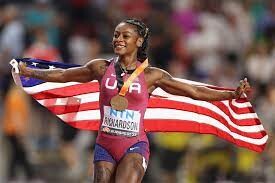
Richardson, a Dallas native, made the 2021 Olympic team after winning 100m event at the trials to qualify, but she later test positive for THC, the chemical in cannabis. She was disqualified for one month, which prevented her from competing in on sports' grandest stage during the Tokyo Games.
The Olympics went on without her.

She returned to the track at the 2021 Prefontaine Classic, finishing ninth. She returned to Olympic form nearly two years later, officially kicking off her revenge tour.
She won the 100m at the U.S. Track and Field Championships in a time of 10.82 seconds. She then claimed the title of fastest woman in the world with her 100m win at the 2023 World Athletic Championships in Budapest. She went on to kick off the Olympic year with a win at the Prefontaine Classic in a time of 10.83 seconds.
"I'm better, I'm stronger and I'm wiser," Richardson said. "I just knew that I was in a different position that I've never been in my entire life."
That soon could lead the 24-year-old to other places she has not yet been: the Olympics, and possibly the top of the podium.
Richardson is scheduled to run in her first Olympic trials preliminary on June 21 in Eugene, Oregon.
If she qualifies for the Games, she'll look to become the first American woman to win gold in the 100 meter since Florence Griffith-Joyner in 1988.
Richardson is back on track, literally and figuratively, and she credits her family for helping to lead her down the road to Paris.
"My family is so special to me, only for the fact that they know me, supported me and been there for me much longer than I even knew I was going to be who I was," Richardson said. "They knew who I was going to be before I even put it together."
by Mike Gavin
Login to leave a comment
Paris 2024 Olympic Games
For this historic event, the City of Light is thinking big! Visitors will be able to watch events at top sporting venues in Paris and the Paris region, as well as at emblematic monuments in the capital visited by several millions of tourists each year. The promise of exceptional moments to experience in an exceptional setting! A great way to...
more...Lawrence Cherono: 2019 Chicago Marathon winner hit with new tampering charges by AIU
Two years ago, Cherono was suspended for doping and now he faces new AIU charges for allegedly tampering with the process.
Kenya's marathoner Lawrence Cherono has once again come under scrutiny by the Athletics Integrity Unit (AIU) this time for alleged tampering related to his doping case.
The revered long-distance runner, known for his triumphs in major marathons including the 2019 Chicago Marathon, is facing new challenges that could further tarnish his illustrious career.
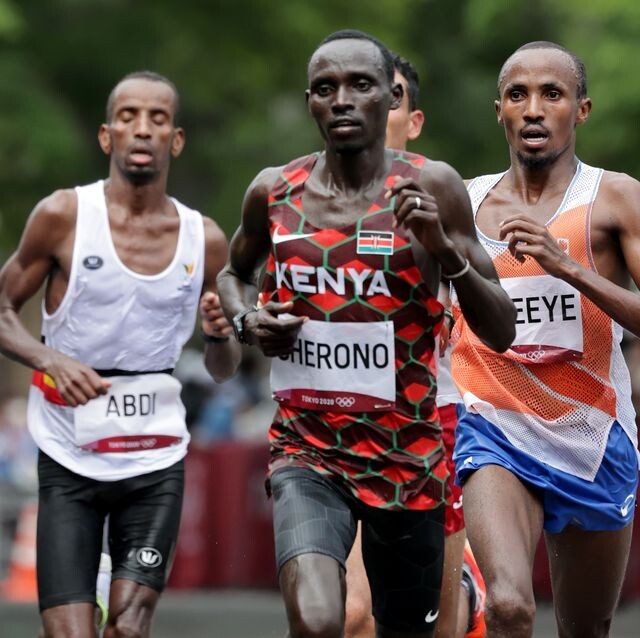
In July 2022, Cherono was provisionally suspended after testing positive for trimetazidine, a substance primarily used to treat angina and other heart-related conditions.
This medication is known to optimize the heart's use of oxygen, potentially giving athletes an unfair advantage by enhancing their endurance levels.
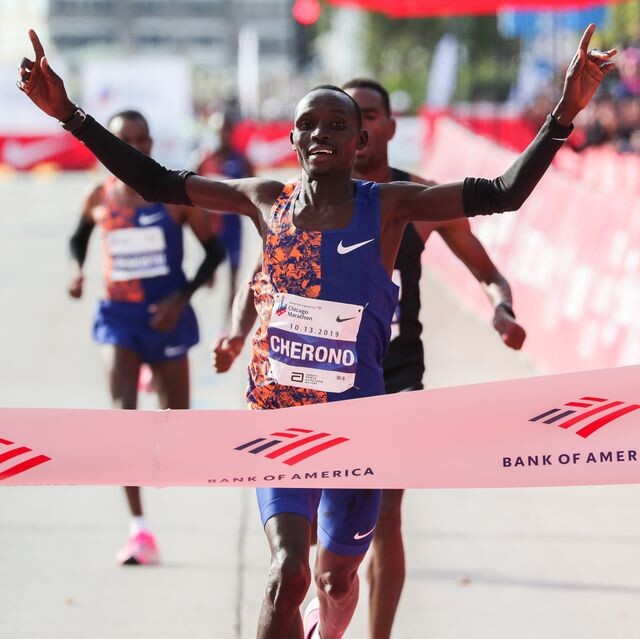
The initial findings placed Cherono in a precarious position, casting a shadow over his achievements, including his impressive fourth-place finish at the Tokyo Olympics and his victories in both the Boston and Chicago Marathons.
The latest charges brought forward by the AIU involve accusations of tampering with the doping control process.
The specifics of the tampering allegations have not been fully disclosed, but such charges typically involve attempts to obstruct or interfere with doping investigations.
Examples could range from manipulating test samples, intimidating witnesses, or providing false information to authorities.
This development adds a complex layer to Cherono's ongoing legal battles with the AIU.
If found guilty of tampering, he could face severe repercussions, including extended bans from competitive racing.
This would be a significant blow to his career, potentially ending his days as a top contender in world marathon events.
Cherono's legal team has yet to release a detailed response to these new allegations.
However, in previous statements, they have expressed their intent to fully cooperate with the AIU while maintaining Cherono's innocence in the matter of the initial doping charges.
The sports world has been closely watching Cherono's case, as it underscores the ongoing challenges within athletics regarding doping and the integrity of sportsmanship.
His case is particularly significant given his status as one of Kenya's most celebrated marathoners, whose record time of 2:03:04 at the 2020 Valencia Marathon highlighted his elite capabilities.
by Festus Chuma
Login to leave a comment
Scottish runner, Josh Kerr aiming for Paris Olympics gold after shattering 39-year record
It is nearly a decade since Josh Kerr made the decision to turn his back on home comforts and fly thousands of miles across the Atlantic to begin a new life courtesy of an athletics scholarship at the University of New Mexico.
He was only a teenager at the time and left behind a close-knit family in Edinburgh, But never at any point did he have any doubts about the sacrifices involved in upping sticks to Albuquerque, or the ultimate goal.
“It was a big leap of faith, to be honest,” he recalled last year. “I hadn't taken a visit. But if you're not pushing your boundaries, you're just going to get a little bit stale. They said they had 307 days of sun, so I was there.”
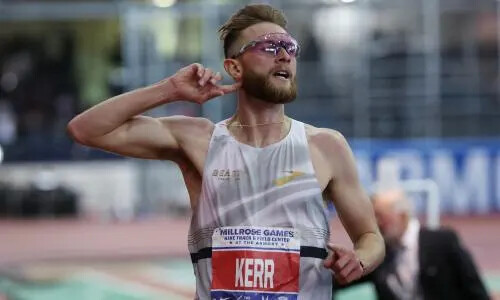
Still only 26, the Scot’s boundaries have shifted considerably since then. He is increasingly regarded as one of Scotland’s top medal prospects for the coming Paris Olympics, a status consolidated by his remarkable victory in the Diamond League, where he triumphed over Olympic champion Jakob Ingebrigtsen and smashed Steve Cram’s near 40-year-old British mile record.
In a quirk of fate, Cram, one of the leading lights in the golden era of British middle-distance running, was part of the BBC commentary team for the meet. “Josh Kerr is getting better and better and better, that was phenomenal, and you know this is a man full of confidence heading to the Olympic Games,” he said.
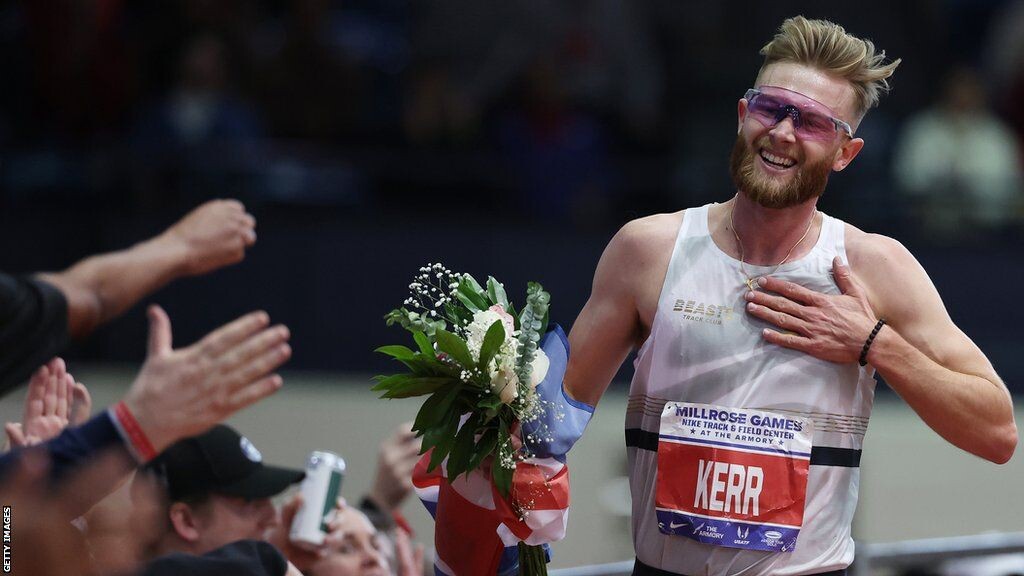
Kerr’s victory represents the latest step in his journey to the summit of his sport. He first came to national prominence thanks to his 1,500m bronze medal at the Tokyo Olympics. And in August last year, he shocked Ingebrigtsen to win the 1,500m title at the World Athletics Championships in Budapest, before breaking the indoor two-mile world record in February.
Such victories are the highlights of a running career that began when Kerr joined Edinburgh Athletics Club aged eight. At the time, his older brother, Jake, was pursuing a successful track career, but later followed in the footsteps of their father, John, by taking up rugby. The younger Kerr stayed on the track, honing his skills under the tutelage of coaches Eric Fisher and Davy Campbell before heading stateside. He is now based in Seattle, part of the Brooks Beasts team trained by Danny Mackey.
But Kerr has always credited the crucial role played by Edinburgh Athletics Club, regularly returning to help give advice to its next crop of youngsters. “Those from the club that have reached the big stages before me have shown that it can be done, and in turn we can show it to the next generation,” he previously explained.
His rapid rise in world athletics represents the latest glowing endorsement of Edinburgh’s coaching. Indeed, Kerr, used to race alongside Jake Wightman, a 1,500m gold medallist at the 2022 World Championships.
Both men were trained by Fisher, now 77. In the wake of Kerr’s gold win in Budapest, he gave an insight into how, during Kerr’s early years, he could give too much respect to his brother, and lacked the confidence to see himself as being at the same level as top athletes. “Things have changed now,” he added.
by Martyn McLaughlin
Login to leave a comment
Paris 2024 Olympic Games
For this historic event, the City of Light is thinking big! Visitors will be able to watch events at top sporting venues in Paris and the Paris region, as well as at emblematic monuments in the capital visited by several millions of tourists each year. The promise of exceptional moments to experience in an exceptional setting! A great way to...
more...

